GLOBAL MIAMI
Plus
The Israeli High-Tech Connection
Okan bets big on the downtown
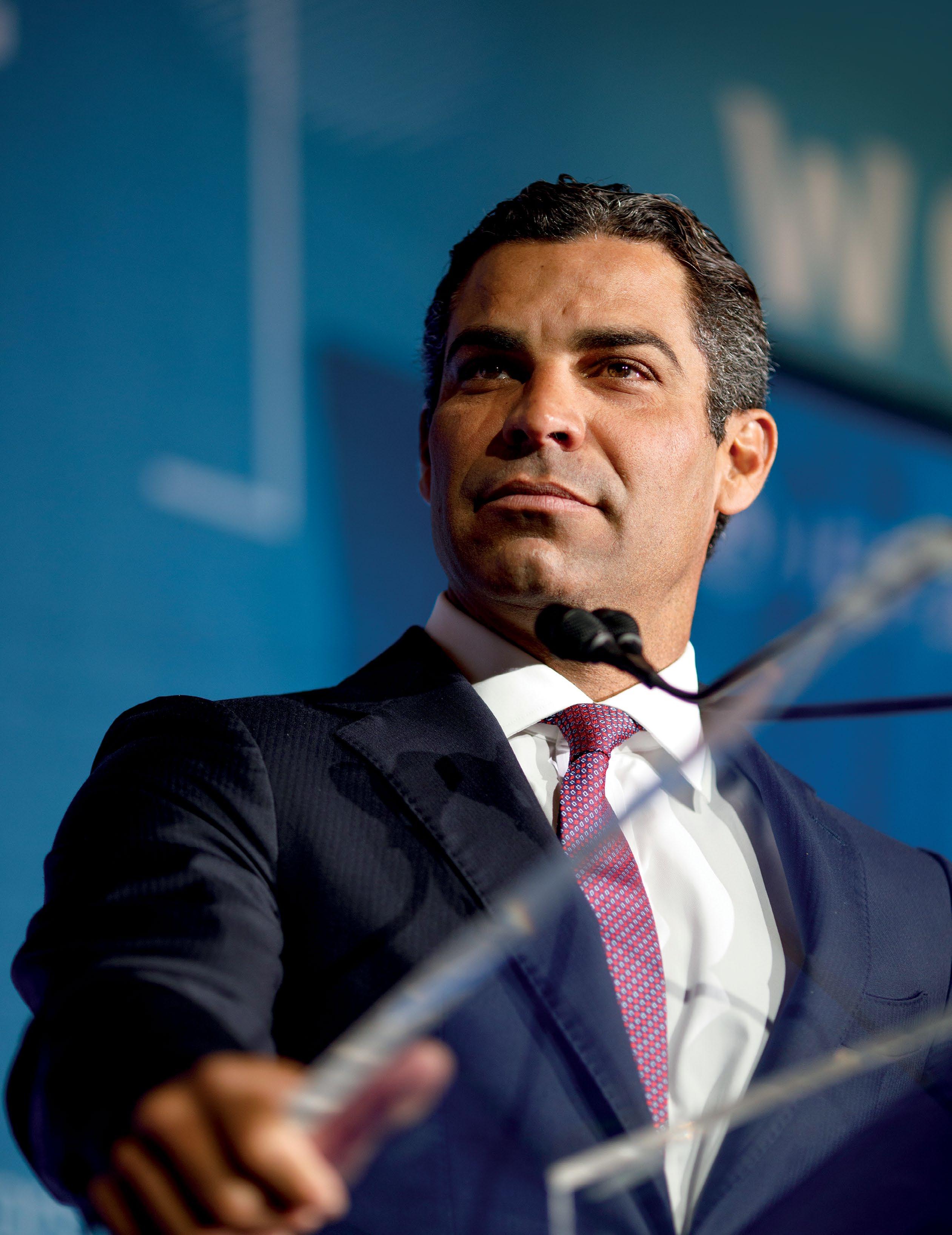
1
Mayor Francis Suarez and the Transformation of Miami
INNOVATION, & TRADE TRENDS TRANSACTIONS REGIONAL HQ’S TRADE LEADERS INVESTMENTS ENTREPRENEURS NOVEMBER/DECEMBER 2022
INVESTMENT,
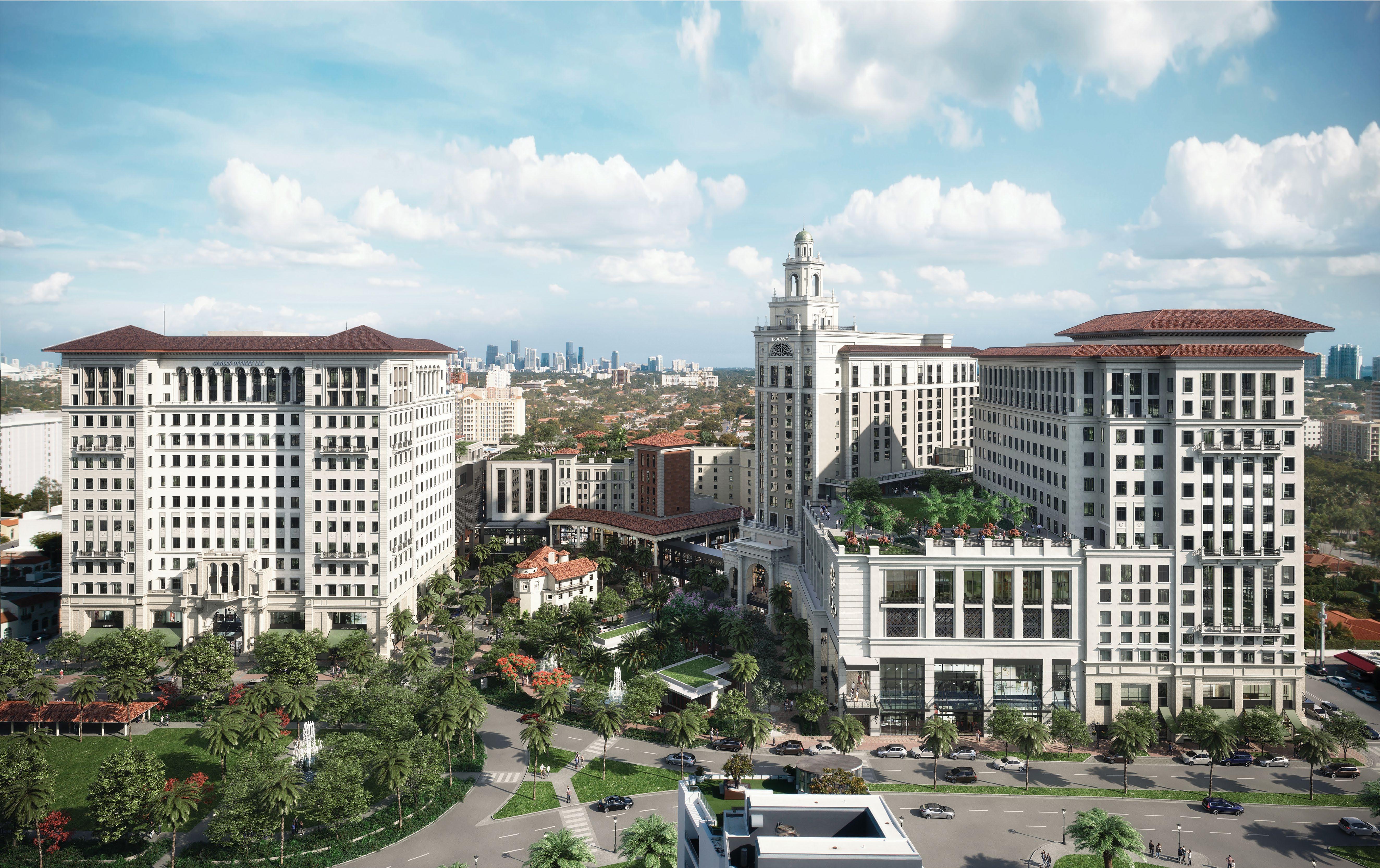
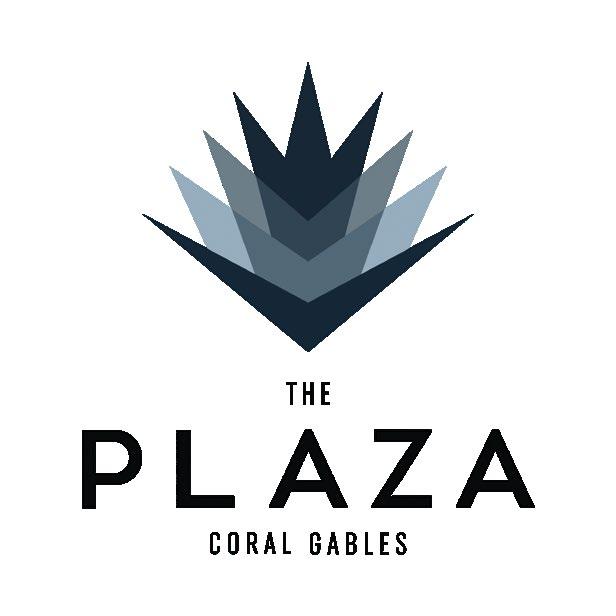
2 GLOBALMIAMIMAGAZINE.COM


T H A N K Y O U , A D R I E N N E A R S H T
A s a b u s i n e s s l e a d e r a n d p h i l a n t h r o p i s t , A d r i e n n e A r s h t h a s t a k e n a l e a d i n g r o l e i n p r o m o t i n g a r t i s t i c , b u s i n e s s a n d c i v i c g r o w t h i n t h e t h r e e c i t i e s s h e c a l l s h o m e : W a s h i n g t o n , D . C . , N e w Y o r k , a n d M i a m i .
W i t h t h e r e c e n t s a l e o f M i a m i ' s A r s h t E s t a t e , M s . A r s h t h a n d s o v e r h e r t r e a s u r e d a n d h i s t o r i c

r e s i d e n c e t o a n e w g e n e r a t i o n t o k e e p i n i t s c a r e .
W e ' d l i k e t o p e r s o n a l l y t h a n k M s . A r s h t f o r t r u s t i n g u s t o h e l p s t e w a r d t h e s a l e o f h e r h o m e , a n d f o r
g i v i n g u s t h e o p p o r t u n i t y t o b e p a r t o f t h i s h i s t o r i c s a l e
W e ' d l i k e t o p e r s o n a l l y t h a n k M s . A r s h t f o r t r u s t i n g u s t o h e l p s t e w a r d t h e s a l e o f h e r h o m e , a n d f o r g i v i n g u s t h e o p p o r t u n i t y t o b e p a r t o f t h i s h i s t o r i c s a l e
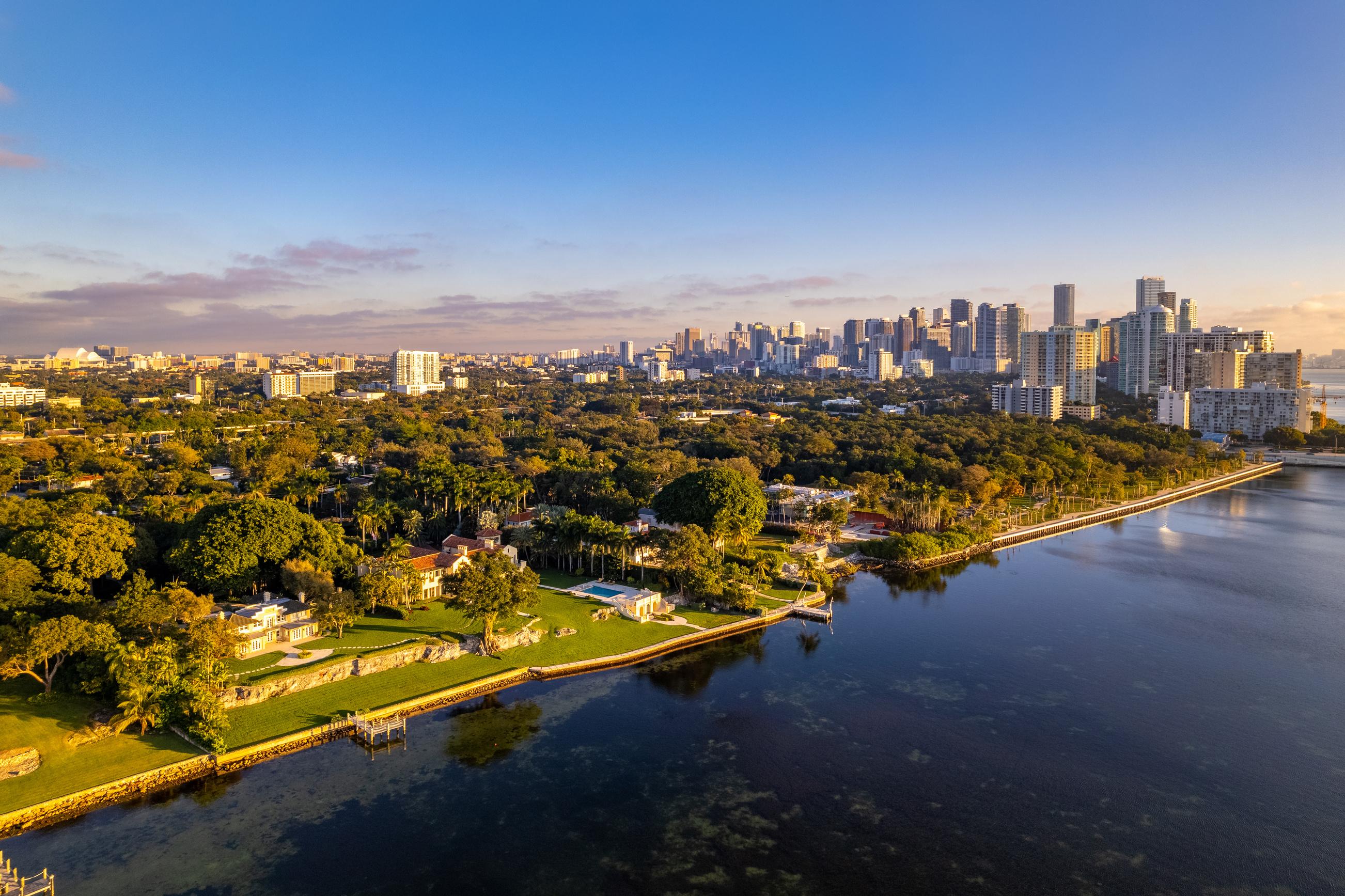

T h a n k y o u !
T h a n k y o u !
©2022 BHH A fil ates LLC An ndependently operated subsidiary of HomeServ ces o America Inc a Berkshire Hathaway a fil ate and a franchisee of BHH Aff liates LLC Berkshire Ha haway HomeServices and the Berkshire Ha haway HomeServ ces symbol are registered serv ce marks of Columbia Insurance Company a Berkshire Hathaway affil ate Equa Housing Opportunity
©2022 BHH Aff l ates LLC An ndependently operated subs d ary of HomeServ ces of Amer ca Inc a Berksh re Ha haway affi iate and a ranchisee o BHH A fi ia es LLC Berksh re Hathaway HomeServices and the Berkshire Hathaway HomeServ ces symbol are registered service marks of Columb a nsurance Company a Berkshire Hathaway af il ate Equa Housing Opportun ty




A S H L E Y C U S A C K T E A M S P E C I A L I Z I N G I N M I A M I L U X U R Y R E A L E S T A T E w w w . a s h l e y c u s a c k . c o m | 3 0 5 . 7 9 8 . 8 6 8 5
RISK IS THE REWARD
The first watch brand to embrace the world of sailing, the Corum Admiral collection celebrates its nautical origins. With its unique 12-sided case and nautical pennants as hour markers, it is instantly recognized the world over.
ADMIRAL 45 CHRONOGRAPH • ADMIRAL 38
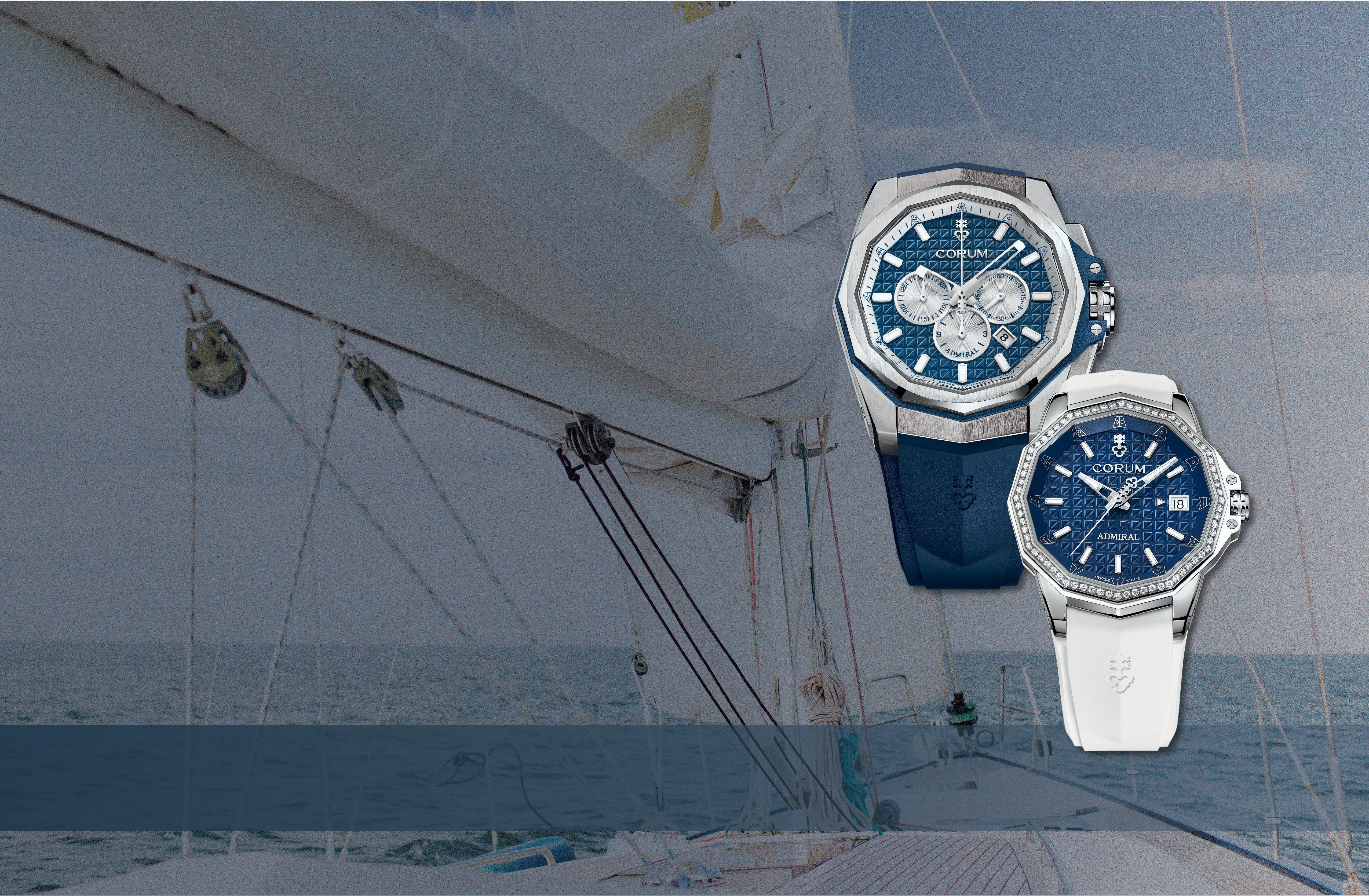

CORUM-WATCHES.COM • @CORUMUSA (954) 279-1220 • info@cwjbrands.com









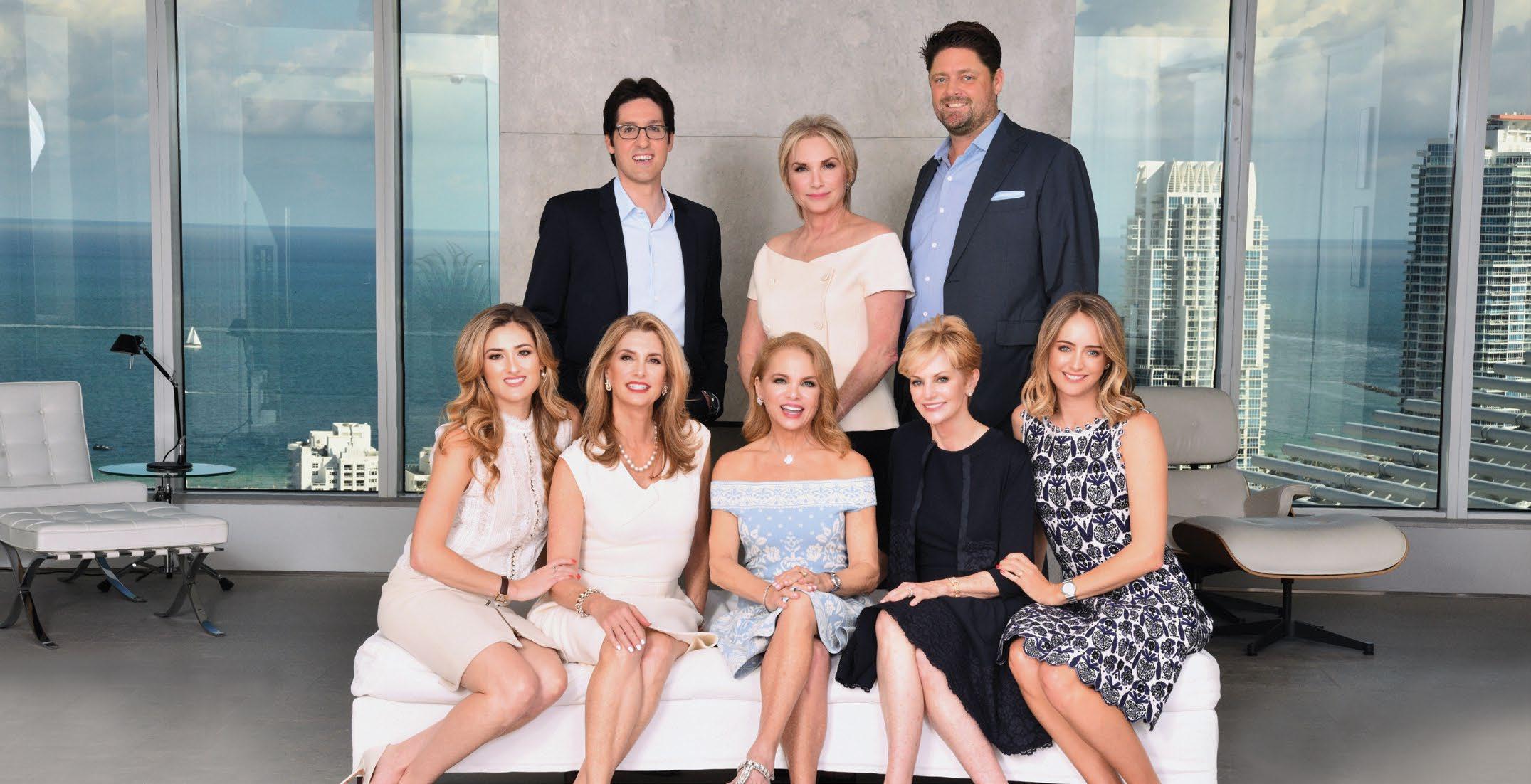
SEATED LEFT TO RIGHT: HILLARY HERTZBERG BENSON, JILL HERTZBERG, JILL EBER, JUDY ZEDER, KARA ZEDER ROSEN STANDING LEFT TO RIGHT: DANNY HERTZBERG, FELISE EBER, NATHAN ZEDER THREE FAMILIES . TWO GENERATIONS . ONE FORCE . MIAMI BEACH OFFICE 1682 Jefferson Avenue Miami Beach, FL 33139 305.341.7447 CORAL GABLES OFFICE 4000 Ponce de Leon Blvd, Suite 700 Coral Gables, FL 33146 305.722.5721 JILLSZEDER.com Real Estate Team in THE NATION 1 AS RANKED BY REAL TRENDS IN THE WALL STREET JOURNAL # SECOND YEAR IN A ROW BILLION IN SALES IN 2021 2 $ +
©2022 Coldwell Banker Realty (FLA License No. 2027016). All Rights Reserved. Coldwell Banker Realty fully supports the principles of the Fair Housing Act and the Equal Opportunity Act. Operated by a subsidiary of NRT LLC. Coldwell Banker, the Coldwell Banker Logo, Coldwell Banker Global Luxury, the Coldwell Banker Global Luxury logo are registered and unregistered service marks owned by Coldwell Banker Real Estate LLC. The property information herein is derived from various sources that may include, but not be limited to, government records and the MLS. Although the information is believed to be accurate, it is not warranted and you should not rely upon it without personal verification.
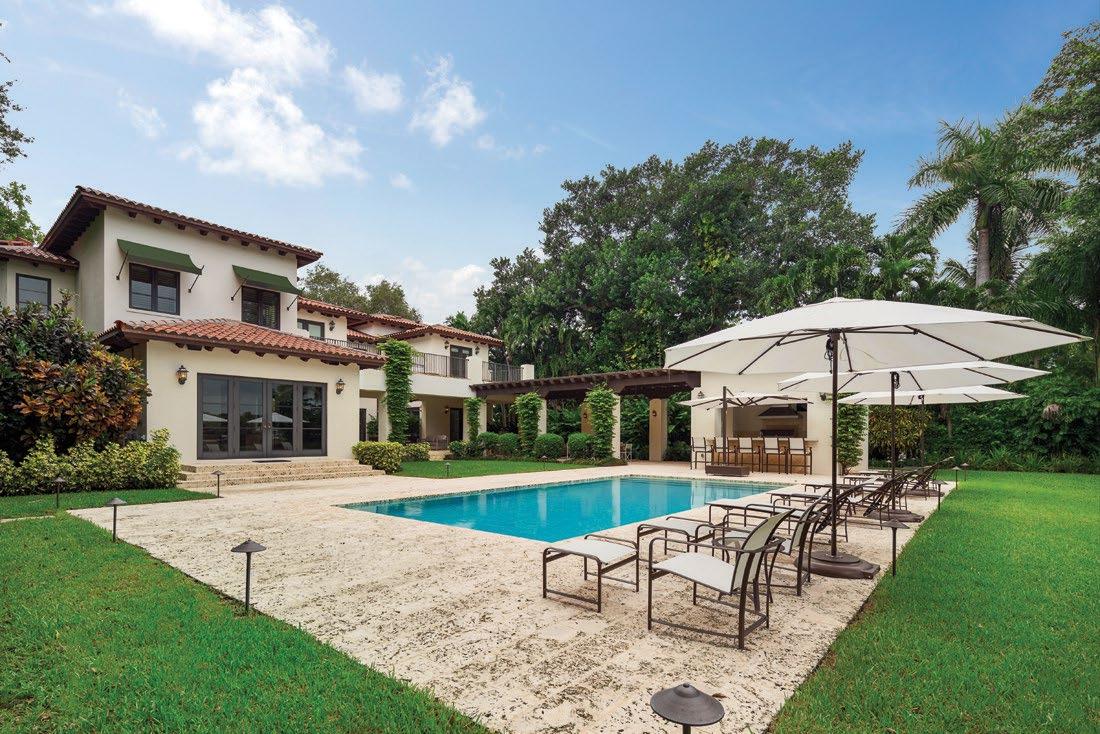
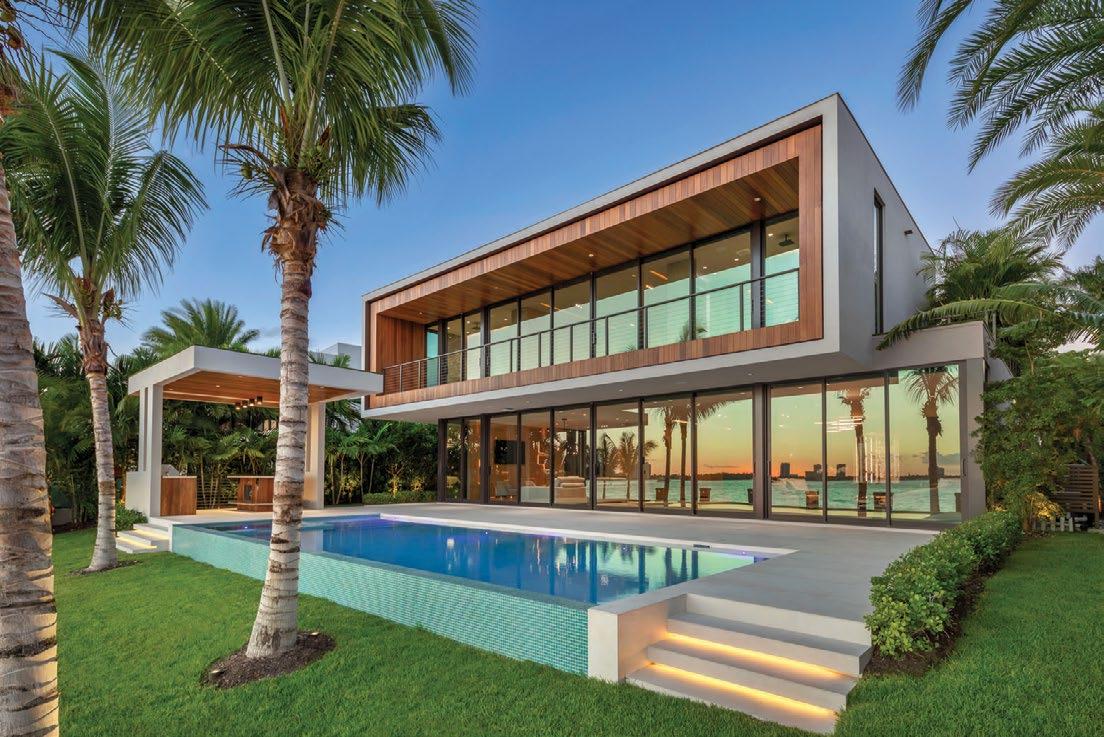

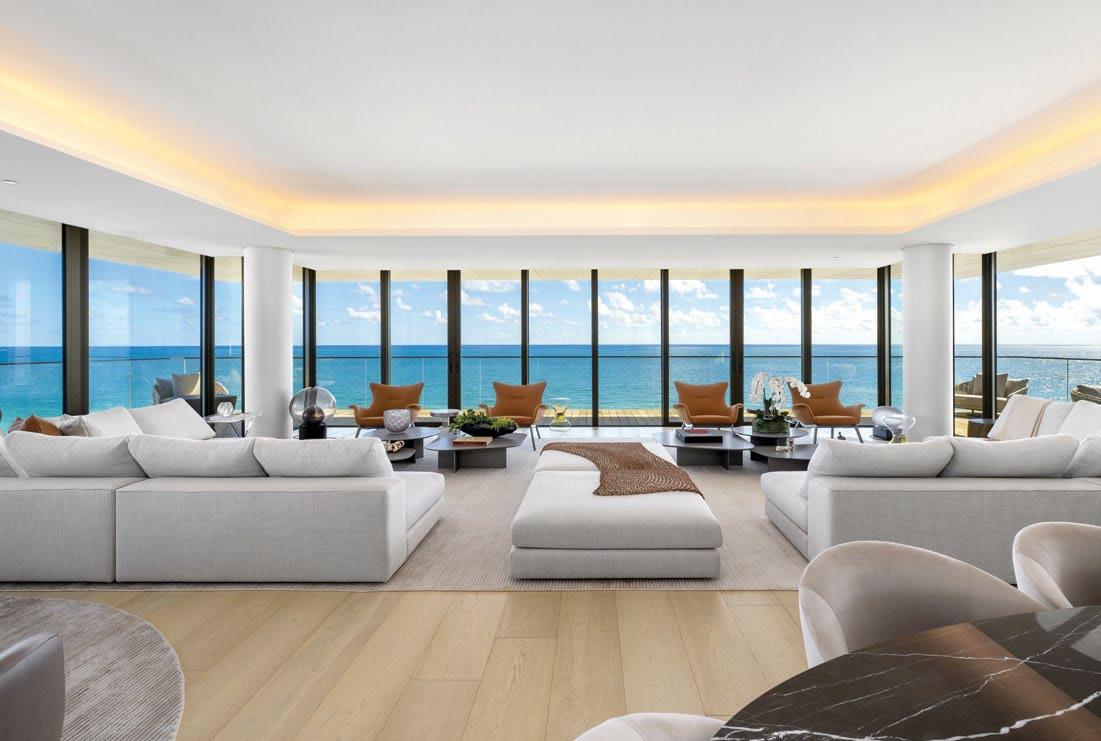


 13000-13001 LEWIN LN | SOUTHWEST RANCHES | $54M
325 LEUCADENDRA DR | GABLES ESTATES | $37.5M
8955 COLLINS AVE #LPH | ARTE - SURFSIDE | $19.9M
30 PALM AVE | PALM ISLAND | MIAMI BEACH | $43M
9530 W BROADVIEW DR | BAY HARBOR ISLANDS | $25M
5275 HAMMOCK DR | CORAL GABLES | $10.9M
13000-13001 LEWIN LN | SOUTHWEST RANCHES | $54M
325 LEUCADENDRA DR | GABLES ESTATES | $37.5M
8955 COLLINS AVE #LPH | ARTE - SURFSIDE | $19.9M
30 PALM AVE | PALM ISLAND | MIAMI BEACH | $43M
9530 W BROADVIEW DR | BAY HARBOR ISLANDS | $25M
5275 HAMMOCK DR | CORAL GABLES | $10.9M
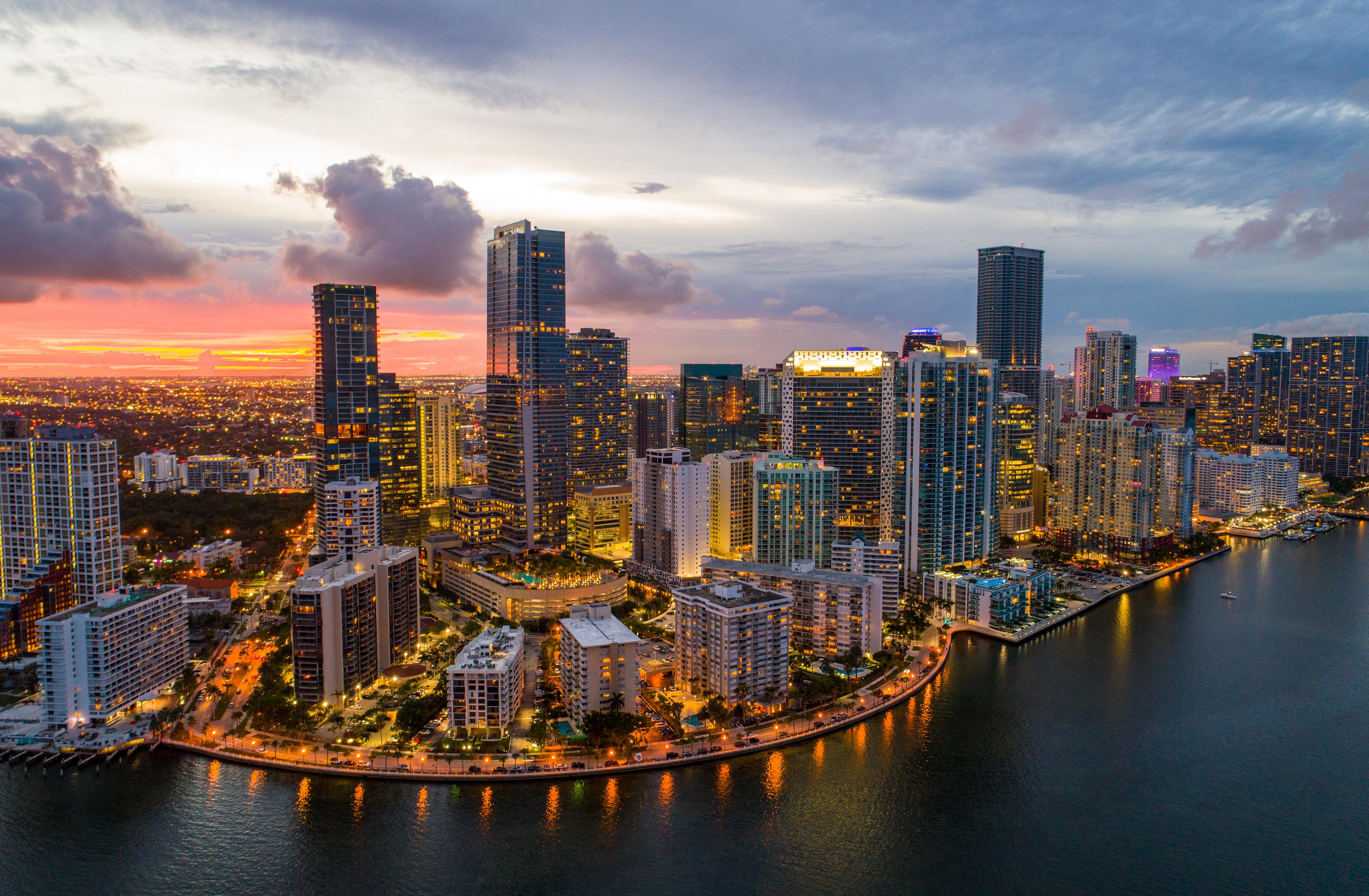
WHAT’S YOUR QUEST? Inspired space and serv DISTINCTIVE PRIV A TE OFFICES

1395 Brickell Ave. Suite 800 777 Brickell Ave, Suite 500 One Biscayne Tower Two S. Biscayne Blvd, Ste 3200 OR CHOOSE FROM OUR OFFICES IN: Coral Gables • Doral • Plantation • Fort Lauderdale Boca Raton • West Palm Beach • Tampa and Wall Street in New York City Call today and enjoy a complimentary day pass 800-268-1051 • WWW.QUESTWORKSPACES.COM FIND YOUR WORKSPACE ices for professionals
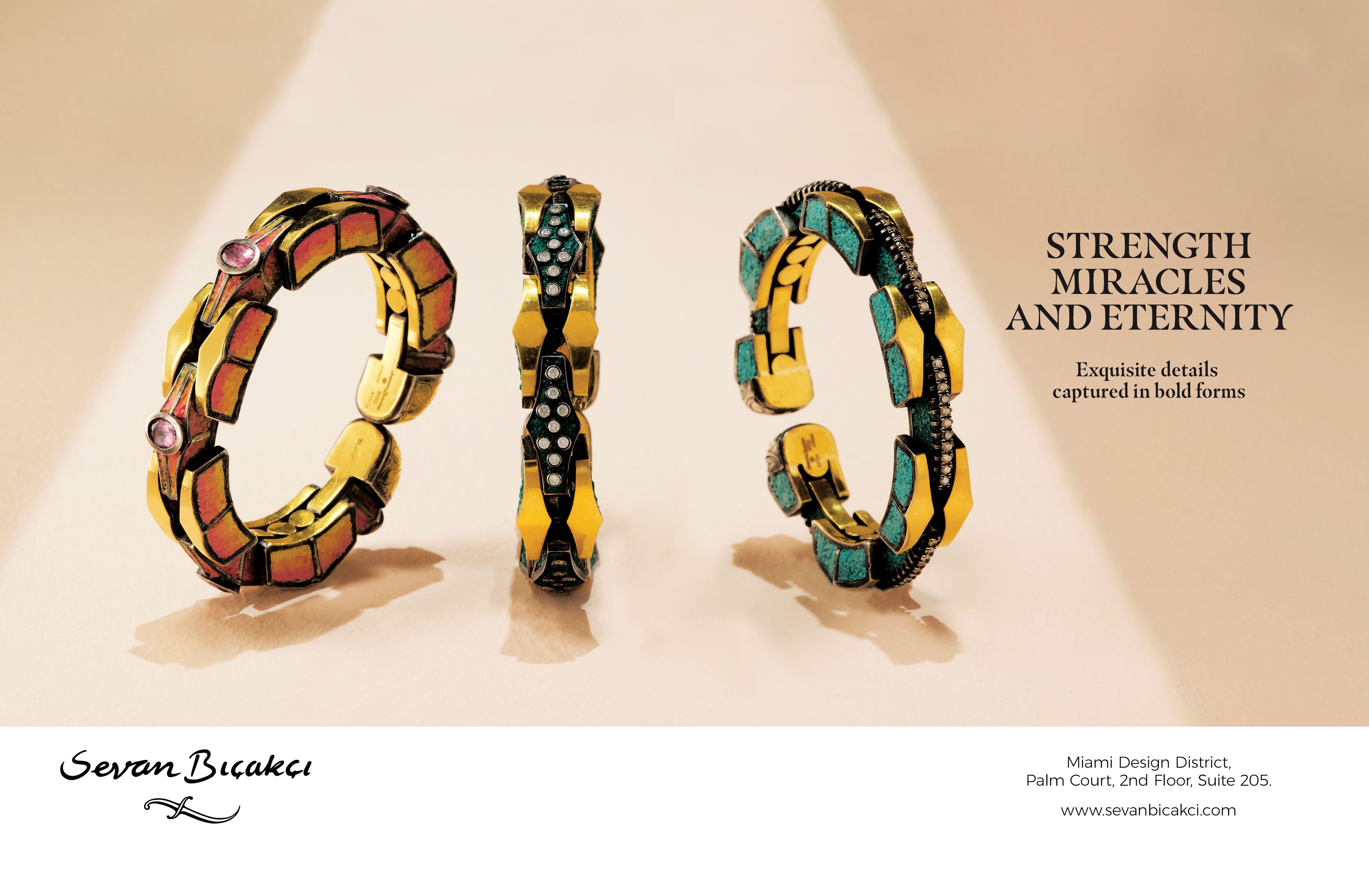


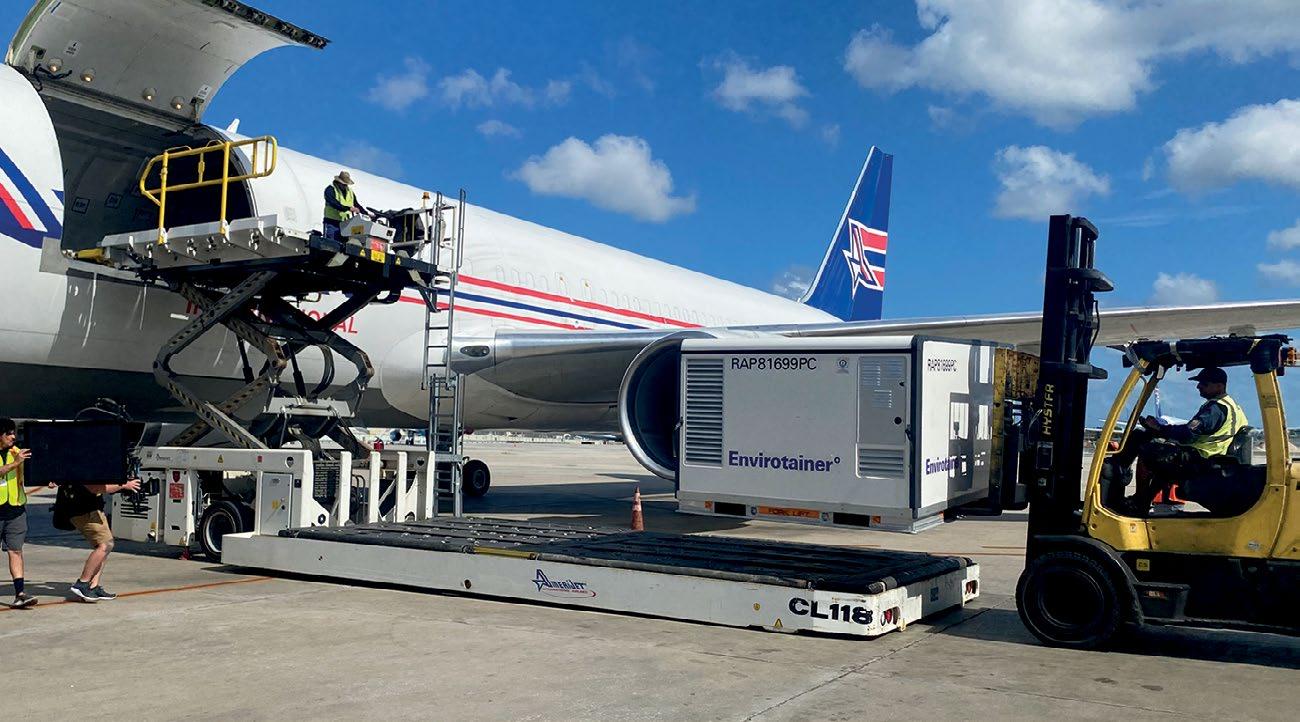


92 26 32 52 14 GLOBALMIAMIMAGAZINE.COM INSIDE THIS ISSUE NOV/DEC 2022 DEPARTMENTS 16 PUBLISHER’S NOTE The Right Place at the Right Time 18 TALK Offshoring & Trademarks 22 TRANSACTIONS Trade & Business News 26 TRADE ANALYSIS Outlook for Miami Trade Flows 32 TRADE TRENDS Mexico Grows as a Global Partner 38 LEADERS Claudia Duran of Endeavor Miami 40 E-COMMERCE Shopping for Caribbean Culture 42 FOREIGN TRADE Challenges for FrieslandCampina 46 ENERGY TECHNOLOGY Blink Charging’s Foreign Expansion 50 ENTREPRENEURS Low Energy Data Centers are Cool 54 AIRTIME MIA Focuses on Pharmaceuticals 58 CONSULAR Brazil & Australia in the Spotlight 88 ART Design Miami Continues to Grow 90 STYLE Trends in Watches & Sneakers 94 DINING La Mar: Dinner with a View 96 STAY The Immensity of InterContinental 100 REAL ESTATE What $10 Million Will Buy 104 NUMBERS LATAM Imports and Exports
You don’t just want a house. You want the right house.

Go to Audrey
Audrey opened her own real estate firm in Miami in 1984 and has established herself as one of the city’s preeminent purveyors of luxury homes. Audrey Ross is the go-to broker to bring your real estate transaction to the most satisfying conclusion. Call Audrey to unlock exclusive opportunities with our list of off market properties. You have the dream. We have the tools to find what you’re looking for.

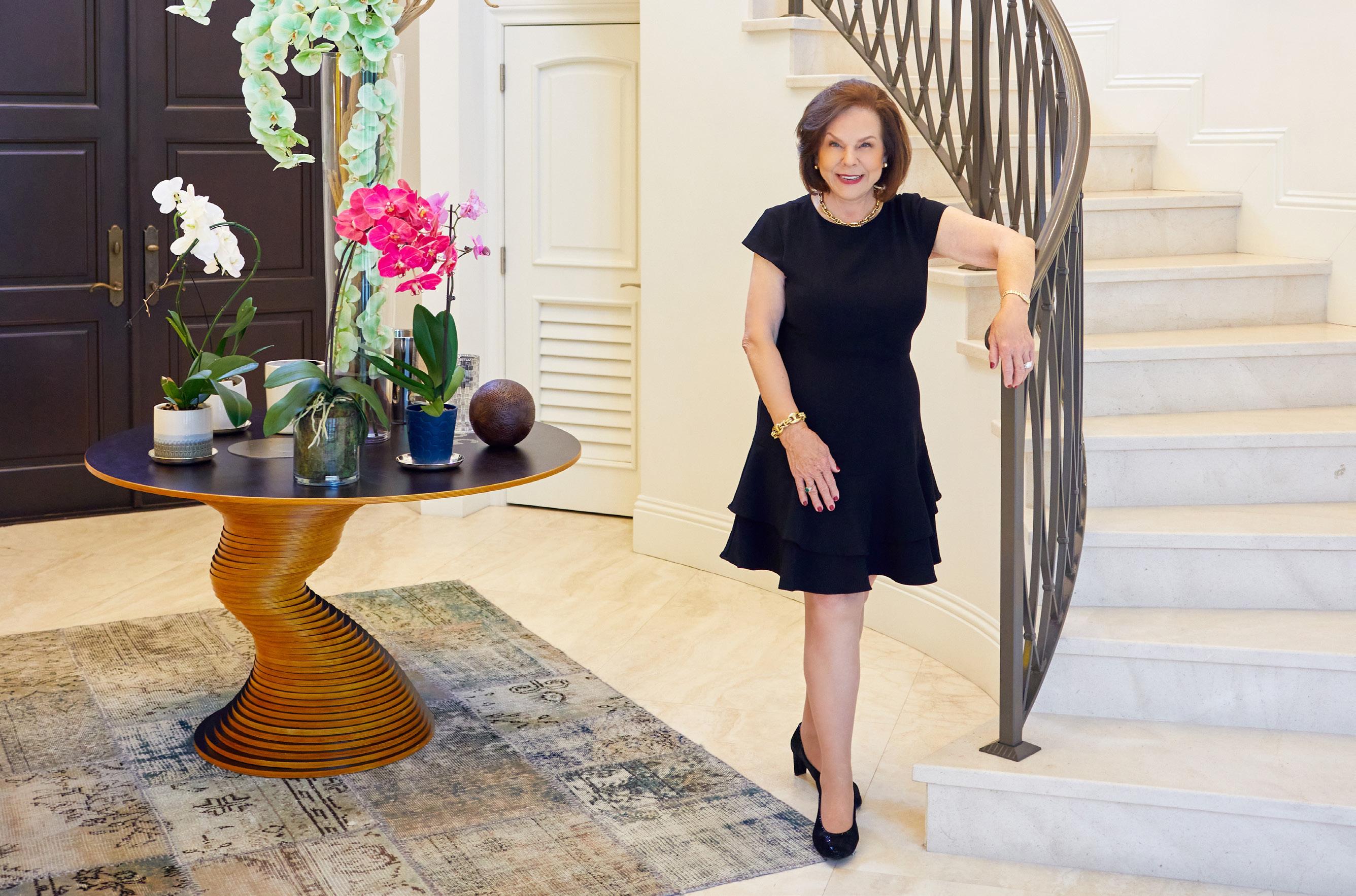
Not intended to solicit currently listed property. © Compass Florida, LLC. Equal Housing Opportunity. All information furnished regarding property for sale or rent or regarding financing is from sources deemed reliable, but Compass makes no warranty or representation as to the accuracy thereof. All property information is presented subject to errors, omissions, price changes, changed property conditions, and withdrawal of the property from the market, without notice.
Audrey Ross 305.206.4003 aross@miamirealestate.com miamirealestate.com
74
HIGH TECH TIES
Florida and Israel have a long history of trade ties. Now cutting edge companies from the “Start Up Nation” are using Miami as a gateway to the Americas. How did the tech ties become this strong? Part of the answer is government outreach. (Miami-Dade Mayor Daniella Cava, above, in Tel Aviv).
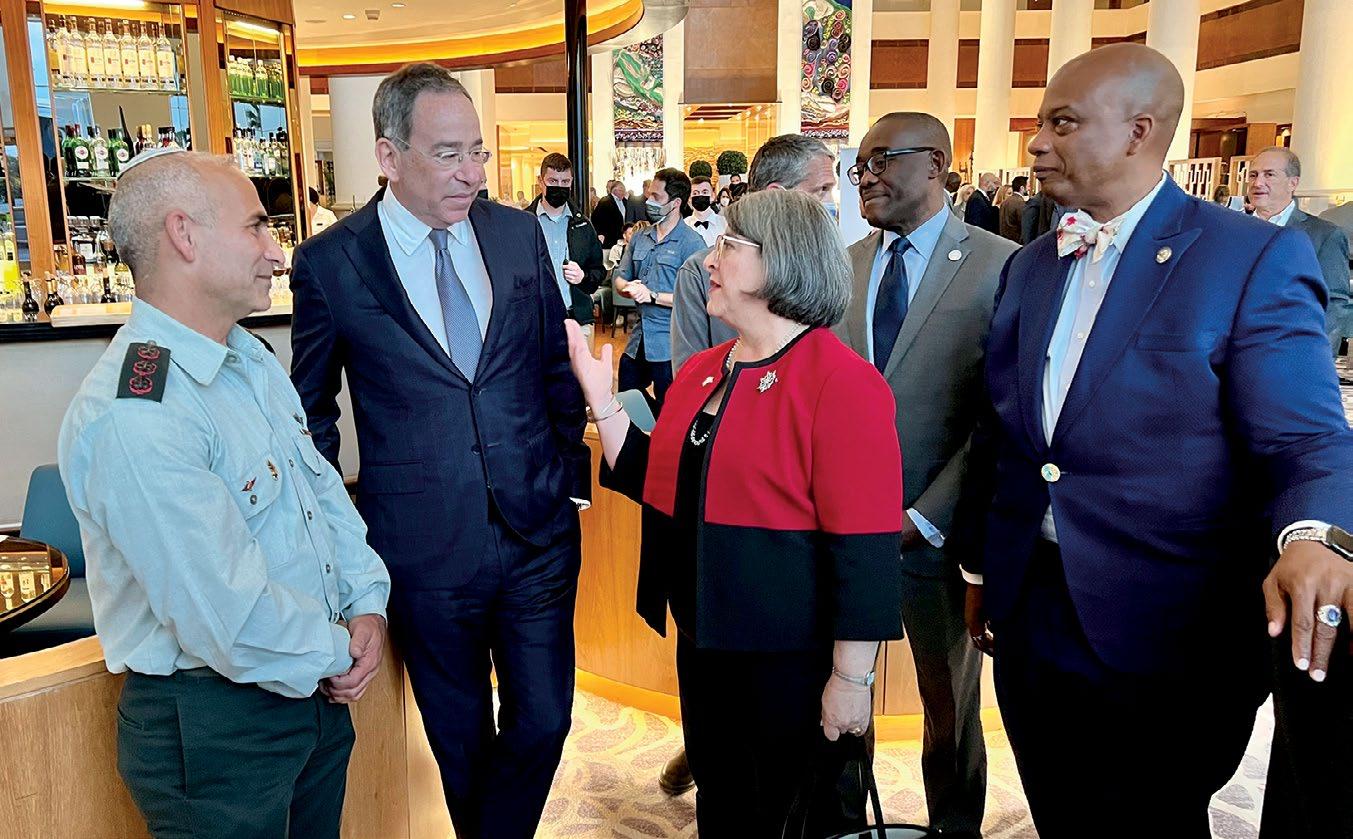
82
A TURKISH TOWER IN DOWNTOWN MIAMI
A rare tulip is budding in Downtown Miami. The Okan Tower, a luxury, residential, hotel, and commercial complex will add a stunning new figure to Downtown Miami’s skyline.
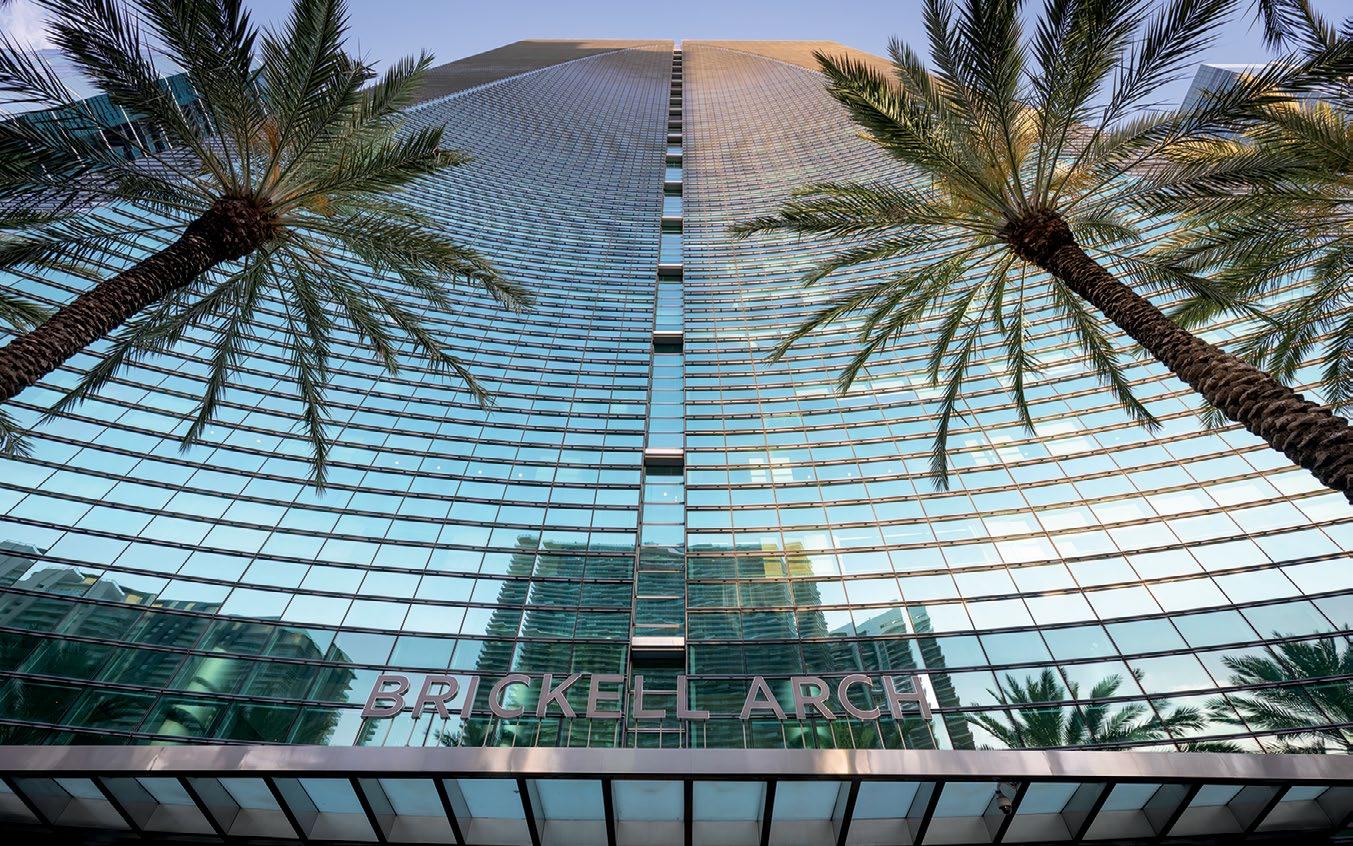
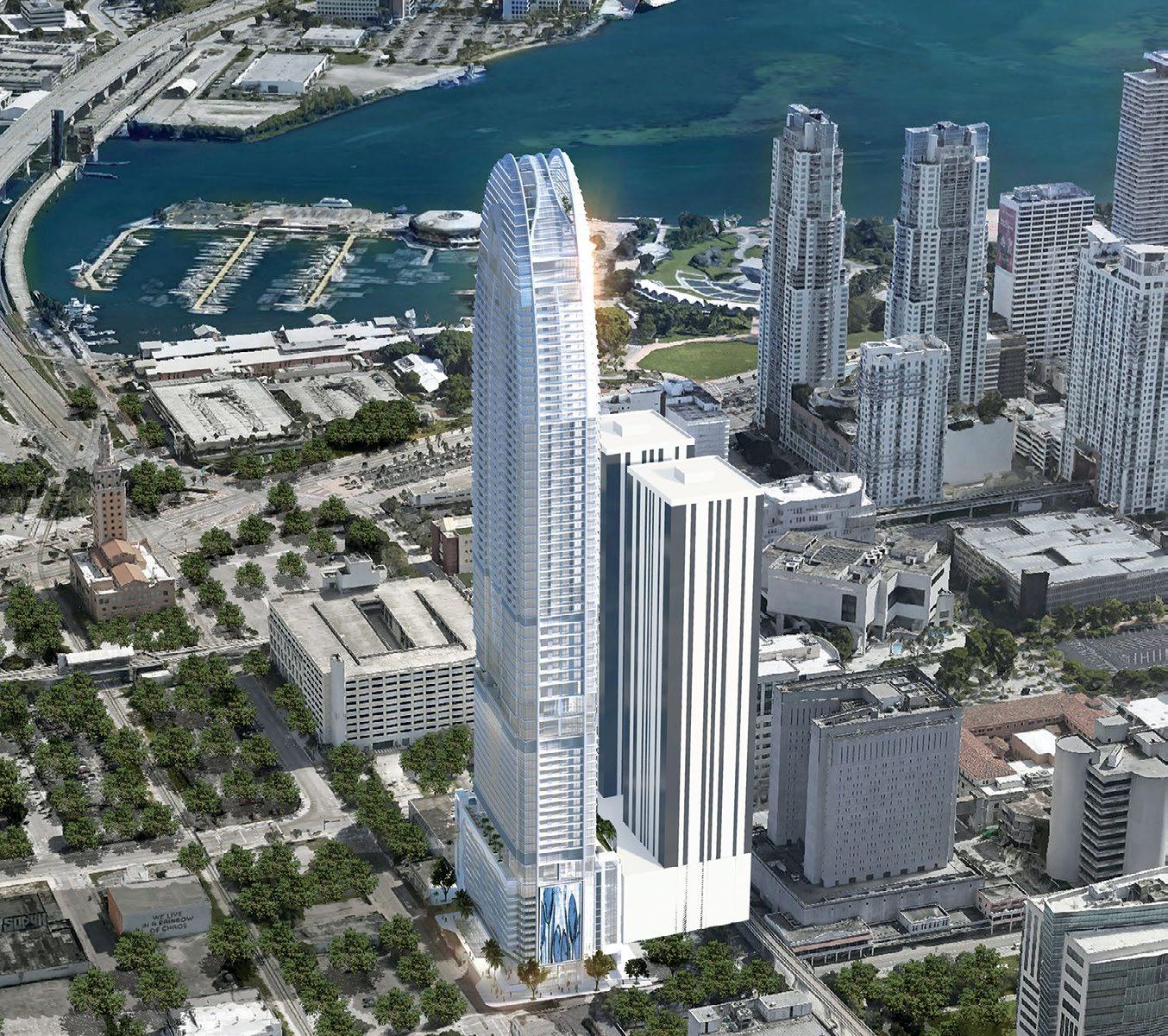
62
THE WORLD STRATEGIC FORUM
The World Strategic Forum, presented by the International Economic Forum of the Americas, is an annual two-day event, exploring major governance challenges in the current global economy.
66
THE GREAT TSUNAMI
How has Miami become the new global city? Miami’s strategic geographic location, along with its multi-cultural and multi-lingual community, continues to be a major draw. Now, capital and fin-tech are making a mark.
16 GLOBALMIAMIMAGAZINE.COM
66 74 82
Vol 1 / Issue 1 FEATURES
INSIDE THIS ISSUE
THE MOST TRUSTED LOGISTICS PAYMENT PLATFORM

With the largest multi-modal logistics network in the industry, PayCargo allows for faster release of cargo and improved daily cash flow for all types of freight payments and invoices.

The
Payment Platform ® paycargo.com
Most Trusted Logistics
The Right Place at the Right Time
THE MAKING OF A GLOBAL CITY
We are incredibly fortunate to be living in Miami—now. We are, in the proverbial sense, at the right place at the right time. Why?
The Greater Miami area is currently experiencing a major influx of population, capital, and corporate relocations attracted by our low taxes, temperate climate, pools of talent, and international connectivity. We are in the crosshairs of explosive growth.
While the rest of the country is suffering from an inordinate increase in crime, lower talent pools, high taxes, and an outflow of corporations and residents, our South Florida markets suffer from none of these maladies. Quite to the contrary, we are experiencing growth in construction, massive real estate sales, a rental market that’s hit new highs in volume and pricing, and new corporations hiring from the deep talent pools of well-educated workers (and recent college graduates). We are, in fact, the recipient of those seeking a better life; a safe and secure neighborhood, high-paying jobs, quality education, top healthcare – even better weather. Miami is simply a better place to locate a business, raise a family, and enjoy one’s life.
We are experiencing a business renaissance, re-emerging as an international hub for commerce and investment. Miami is the nexus point for this expansion. Notice the high-rise building boom in and around
the Magic City sprouting new clusters of residential and commercial towers. Brand names are absorbing the available space: PayCargo, ACI Worldwide, Apollo Global Management, Blackstone Inc., Microsoft, Citadel, and Spotify, to name just a few. These companies are joining such global entities as American Airlines, Bacardi, Fresh Del Monte Produce, Tiffany’s Latin America, and many more.
In short, this resurgence is resulting in massive gains in international trade. PortMiami and Miami International Airport’s growing trade numbers are exceeding pre-COVID levels. This means job growth, a strong labor market, career opportunities, investment, and strong capital flow. The American Dream. It thrives here. Mr. Rogers would love this neighborhood.
Dante Fascell once said that the greatest insurance policy we could have is international trade. It never stops. He was right. Miami, with its proximity to the port and airport, with its strong business infrastructure of banking and finance, legal and accounting, educational facilities, quality healthcare, magnificent homes, incredible weather, and diverse, talented population defines the meaning of Global City.
PUBLISHER
Richard Roffman
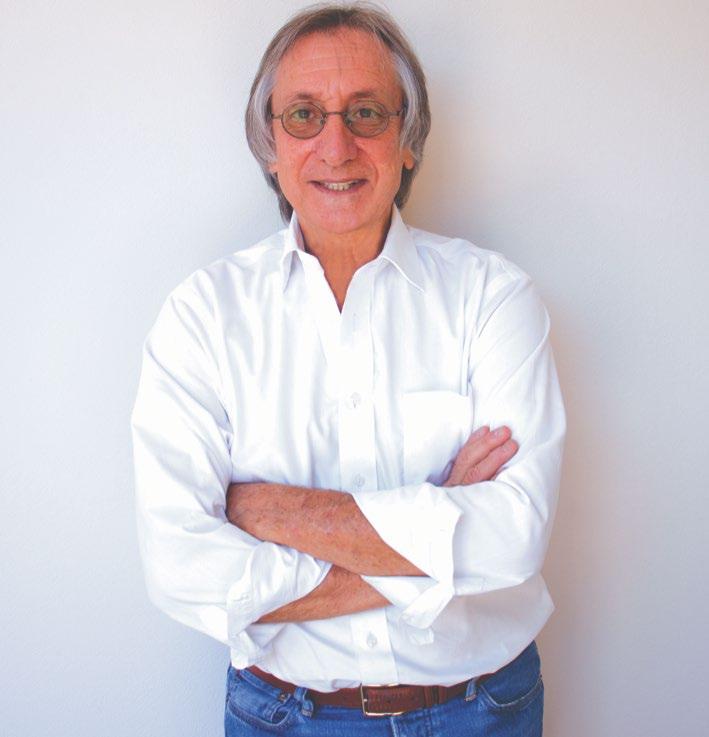
EDITOR-IN-CHIEF
J.P. Faber
DIRECTOR OF OPERATIONS
Monica Del Carpio-Raucci
ASSOCIATE PUBLISHER

Gail Feldman
SENIOR VICE PRESIDENT FOR INTERNATIONAL BUSINESS
Manny Mencia
DIRECTOR, SALES AND PARTNERSHIPS

Sherry Adams
Amy Donner
Gail Scott
MANAGING EDITOR
Kylie Wang
ASSOCIATE EDITOR / DATA ANALYST
Yousra Benkirane
DIRECTOR, STYLE & LUXURY
Harriet Powell
WRITERS
Doreen Hemlock
Joe Mann
Katelin Stecz
ART DIRECTOR
Jon Braeley
PHOTOGRAPHERS
Rodolfo Benitez
Jonathan Dann
PRODUCTION DIRECTOR
Toni Kirkland
CIRCULATION & DISTRIBUTION
CircIntel
BOARD OF ADVISORS
Ivan Barrios, World Trade Center Miami
Ralph Coutié, Miami International Airport
Gary Goldfarb, Interport
Bill Johnson, Strategic Economic Forum
Manny Mencia
David Schwartz, FIBA
Bill Talbot, Beacon Council
EDITORIAL BOARD
Alice Ancona, World Trade Center Miami
Greg Chin, Miami International Airport
Paul Griebel, World Strategic Forum
Jerry Haar, Florida International University
James Kohnstamm, Beacon Council
John Price, Americas Market Intelligence
TJ Villamil, Enterprise Florida
Global Miami Magazine is published monthly by Global Cities Media, LLC. 1200 Anastasia Ave., Suite 217, Coral Gables, FL 33134. Telephone: (305) 452-0501. Copyright 2022 by Global Cities Media. All rights reserved. Reproduction in whole or part of any text, photograph, or illustration without o\prior written permission from the publisher is strictly prohibited. Send address changes to subscriptions@ globalmiamimagazine.com. General mailbox email and letters to editor@globalmiamimagazine.com
18 GLOBALMIAMIMAGAZINE.COM
PUBLISHER’S NOTE
RICHARD ROFFMAN PUBLISHER GLOBAL MIAMI MAGAZINE

Member FDIC
Imagine a bank that is always in your court.
As Nearshoring Takes Off, What’s in it For Miami?
BY JERRY HAAR
The term “nearshoring” – transferring all or part of a company’s operations to a nearby country –was rarely mentioned prior to the global pandemic. During the past 30 months, however, it has gained prominence as a buzzword and generated much discussion and decision-making among companies and governments.
Nearshoring was catapulted into the spotlight due to shortages of personal protective equipment, components, manufactured goods, and semiconductors. Supply chain congestion, especially at ports such as Los Angeles and Long Beach, is testimony to such shortages. Add to that the tensions between the U.S. and China, China and Taiwan, and the Russian-Ukrainian conflict, and it is no wonder that producers seek to source closer to home.
According to Gartner, a prominent research and consulting firm, one-third of U.S. firms in China are thinking about leaving. A number have already left for Vietnam where lower labor costs and higher levels of productivity than China serve as a magnet for relocation. Recent manufacturing examples are Apple’s AirPods Pro 2, Microsoft’s Xbox, and various lines of Hasbro toys.
as an ecosystem of capital, know-how, talent, entrepreneurism, and business infrastructure that can be mobilized to enable actual and potential competitors of Asian manufacturers and service providers achieve success.
For many of the reasons listed above, companies such as Nike, Adidas, Puma, and Under Armour are moving production from Asia to Central America to respond to shorter demand times and to benefit from the CAFTA-DR accord benefits – such as a 32percent break by using fabric and materials sourced within the region. For apparel, electronic assembly, medical devices, and IT services, companies that manufacture in the region will be coming to Miami to purchase goods and components for their manufacturing and business operations and to source their services (legal, accounting, insurance, information technology), education and training, leisure activities, and even additional housing.
Jerry Haar, PhD, is a professor and executive director for the Americas at Florida International University College of Business. He is also a Global Fellow of the Woodrow Wilson International Center for Scholars in Washington, D.C., a fellow of the Council on Competitiveness, and a board member of the World Trade Center Miami.
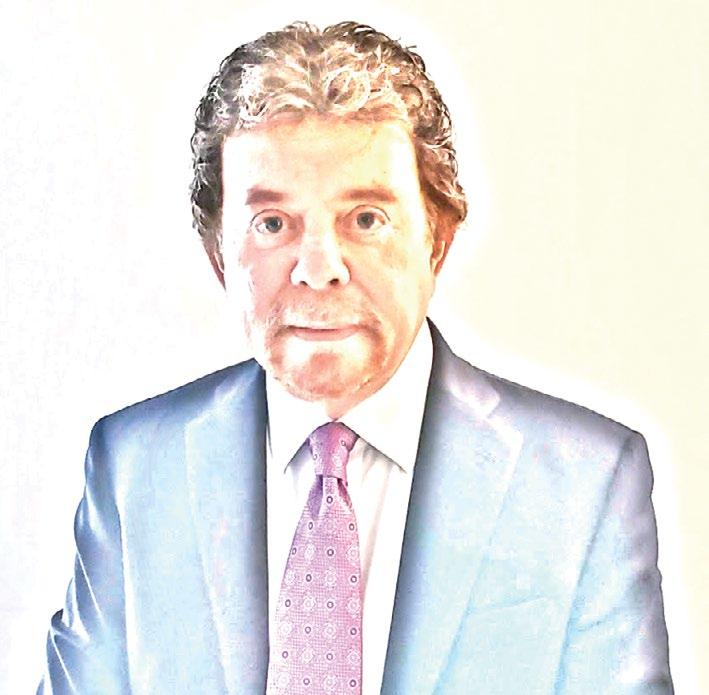
As nearshoring grows in prominence and the “Factory of the World” – China –loses some of its luster, can the Americas in general, and Miami specifically, benefit from this shift in outsourcing? For Latin America, the Caribbean, and Canada, the answer is “yes” – and Miami, too, but only indirectly via its vibrant services sector.
Where Miami will benefit from nearshoring is by supporting Western Hemisphere businesses that are searching for alternatives to China and Southeast Asia for the outsourcing of services. Just as Mumbai and Manila serve as back offices for U.S. business process outsourcing in Asia, Miami can support nearshoring by U.S. companies in Monterrey or Medellín. Miami’s forte is
With the migration of offshored operations from Asia to the Americas, Miami is well-positioned to gain from nearshoring. As confirmation, one need only look North, where Canadian sportswear manufacturer Gildan Activewear with operations in Honduras, and Calgary-based Analytika, an information services company, are benefiting from nearshored operations.
As Miami possesses all the requirements of nearshoring – time zone similarity, talent availability, similar work culture, multilingual capabilities, and a well-developed infrastructure – we are bound to benefit in the services sector from the nearshoring trend. As the challenge for Asia is to stem the tide of the out migration of Western manufacturing firms, the challenge for Miami (and for our Hemisphere neighbors) is to strengthen and expand the attractiveness of its business environment regardless of who and where their customers are located. l
20 GLOBALMIAMIMAGAZINE.COM
TALK I
HOME TO FOUR COLLECTIONS OF 48 LUXURY RESIDENCES




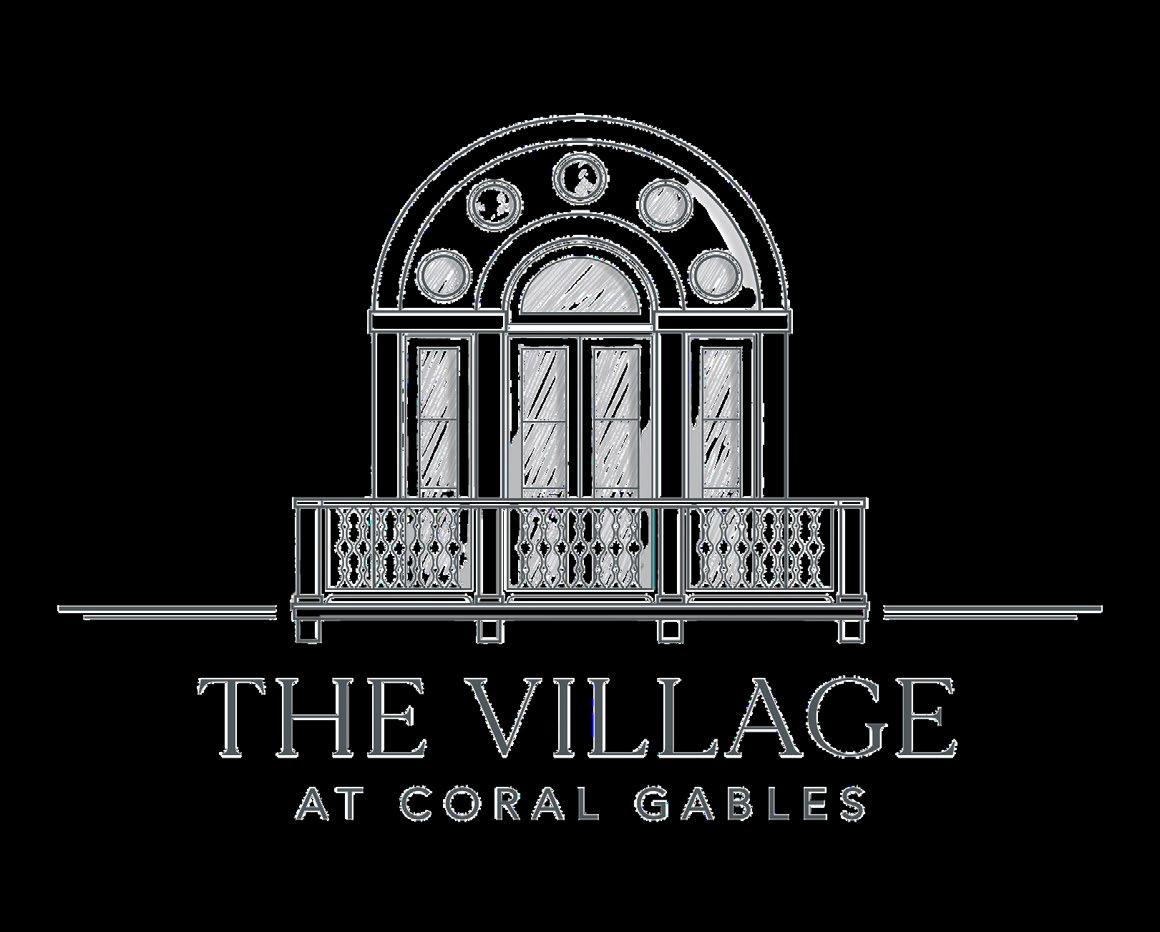
Think Globally, Brand Locally
BY AUGUSTO PERERA, ESQ.
Miami has become a Global City. For years, the city has been known as the Capital of Latin America, with immigrants arriving from South and Central America, and businesses locating here as an entry to the U.S. – or as a doorway into the Americas. Now, the pandemic has accelerated Miami’s growth, with a rush of companies from New York, Chicago, and California tilting us to global status.
When a city becomes global, however, the value of intellectual property generated within its community is sometimes overlooked. When starting a new enterprise, founders are caught up in the demands of getting the business launched and then growing it. Often, they forget to seek protection for their creations, whether applying for trademark or copyright protection, or protecting their inventions, overseas or within the United States. The same goes for local political leaders who don’t fully understand the implications of a city attaining global fame and fail to protect (and exploit) the intellectual property value generated by their metropolis.
nesses and entrepreneurs bring their ideas to market, for example via tax incentives or using the resources of universities and colleges. Next comes promoting local assets globally through trade missions that target specific countries, helping entrepreneurs with prospective distribution, sales, or manufacturing partners. Partnering with other cities around the world to exchange trade missions is another tool.
These are big picture branding events. The businesses that create unique products and services must first protect themselves in new markets via copyrights, patents, or trademarks. U.S. intellectual property protections are requisite, but taking that protection abroad is another question. Business owners and entrepreneurs are often surprised to find that intellectual property protections such as patents and trademarks are territorial in nature, meaning that protection is only granted in jurisdictions where the patent or mark is registered.
Augusto
The solution for both is to Think Globally, Brand Locally.
For local governments that means creating and protecting brands that identify their cities. The recently created term “Nation Branding,” now used in marketing and communication, refers to the intangible values, reputation, and brand image of a nation, region, or city. The aim is to position products, services, and places globally. For example, the City of Coral Gables owns trademarks for “CORAL GABLES THE CITY BEAUTIFUL” and “THE CITY BEAUTIFUL,” while Miami-Dade County owns registrations for “VIZCAYA,” “MIAMI-DADE COUNTY FAIR & EXPOSITION,” and many more.
Nation Branding also means creating or supporting programs that help local busi-
There are some international treaties, such as the Madrid Protocol, that allow owners of registered U.S. patents and trademarks to expand that protection to other member nations without the need to hire a lawyer in each new country. There are no such reciprocal treaties in the Americas, however; IP rights are protected only in the markets where the owners seek protection. That is why, if an IP owner is going to manufacture or distribute overseas, it’s imperative to file for protection of that IP in those locales to prevent its theft by the manufacturer, distributor, or another local competitor.
Miami has set foot on the global stage, and it’s time for local government and businesses to take advantage of that brand and bring value to our community by investing in the protection of its products and services. l
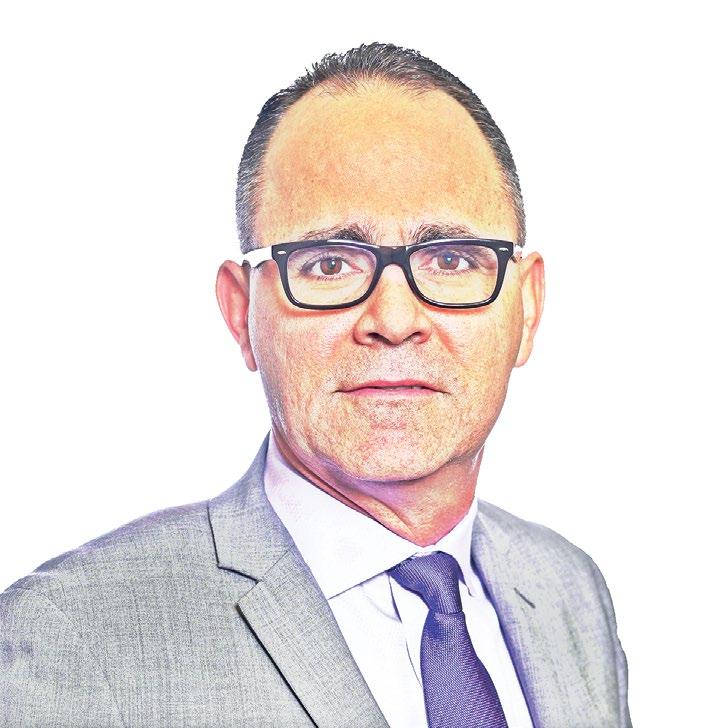
22 GLOBALMIAMIMAGAZINE.COM
Perera, Esq. is an intellectual property attorney based in Coral Gables, Florida. Practice areas include copyrights, trademarks, business, and internet law.
TALK II
MOVING MIAMI INTO INTERNATIONAL MARKETS REQUIRES IP PROTECTION
THE NEW CAPITAL OF THE WORLD
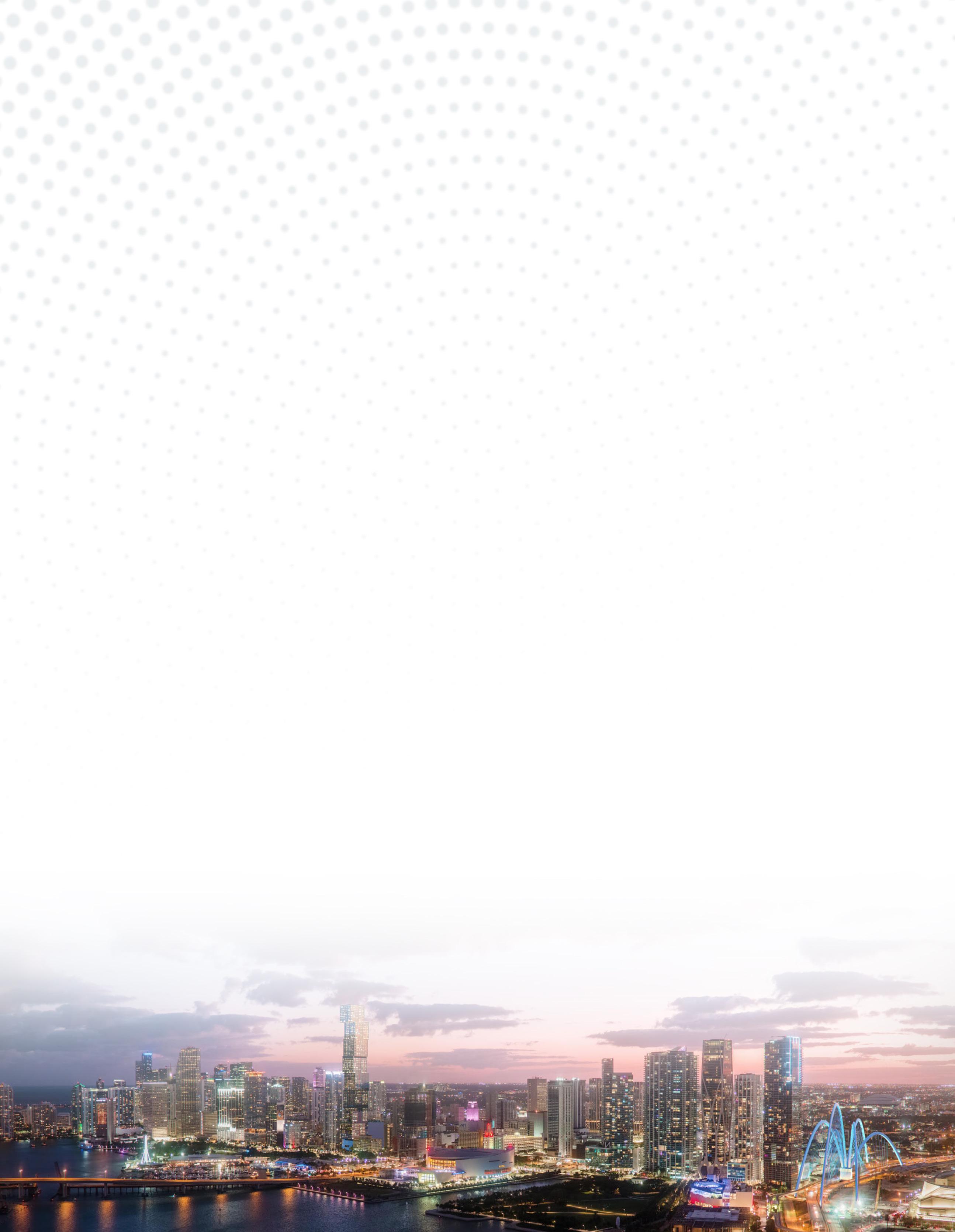
The Exclusive Real Estate Business Development of IRG

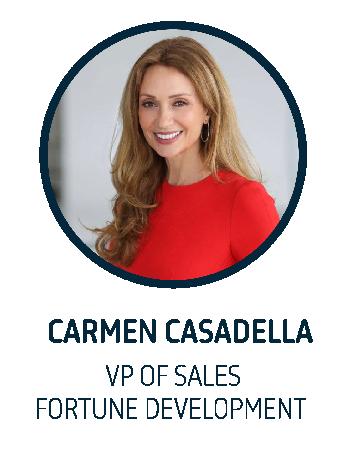
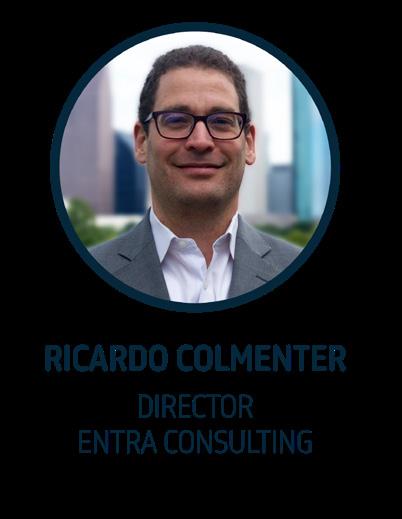
The experts at International Realty Group are real estate professionals who work in major global cities providing expert personalized advice.
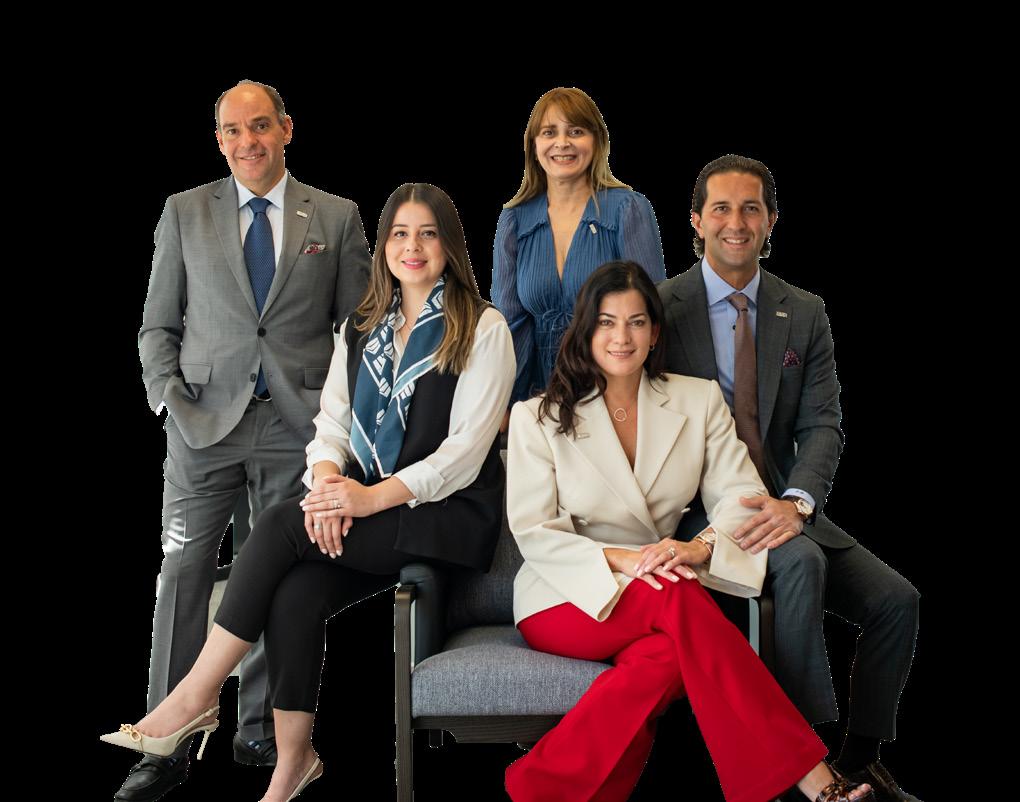
The speakers, industry experts and influential lawyers with outstanding publications, have the experience and reputation that are key factors to help to clear up doubts and generate trust for the attendees. The Miami Connection 2022 Forum took place in Turkey, Colombia, Mexico and Dominican Republic where experts from the real estate industry shared their knowledge, highlighting three important points of the forum. Our guests were able to learn about the best real estate investment opportunities in Miami, the ideal legal structure for your investment, tax management in the United States and discover that now is the best time to buy.
International Realty Group is guided by the pillars of integrity, professionalism and technology elevating our position in the marketplace. Our experience, customer satisfaction and business ethics are a guarantee of our service.
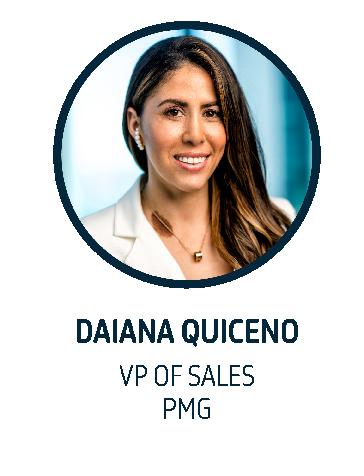

To commemorate the thirteenth anniversary of IRG, we celebrated the opening of the Dominican Republic office in Santo Domingo on November 16.
A special thank you to the speakers who joined us!
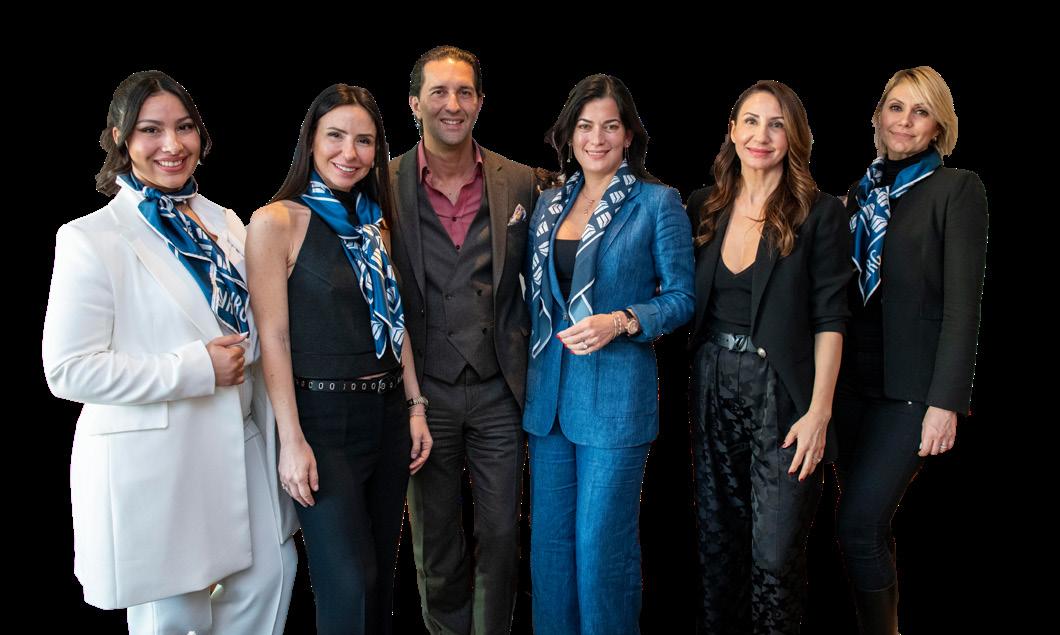
INTERNATIONAL REALTY GROUP
tuned for the Miami Connection 2023 schedule.
us on our YouTube channel @International Realty Group to watch our most recent Miami Connection 2022 videos and discover more of what Miami has to offer. FOLLOW US!
MEXICO TEAM TURKEY TEAM
Stay
Follow
Springs. The five-story building, which is scheduled to be finished in 2024, will provide state-of-the-art technology, the capacity to host global conferences and events, member education classes, professional standards hearings, and other services to members of the country’s largest local realtor association.
CHRISTIE’S INTERNATIONAL REAL ESTATE RETURNS TO MIAMI
The world-renowned auction house has made Fortune International Realty, Miami’s leading real estate firm, its newest affiliate. Fortune, now known as Fortune Christie’s International Real Estate, has 600 agents across 11 offices in Miami and is led by president and CEO Edgardo Defortuna. Christie’s was acquired by Chicago-based firm @properties last December, the ninth largest residential brokerage firm in the U.S., and has since made expansion a priority.
BOMBARDIER OPENS NEW MIAMI FACILITY
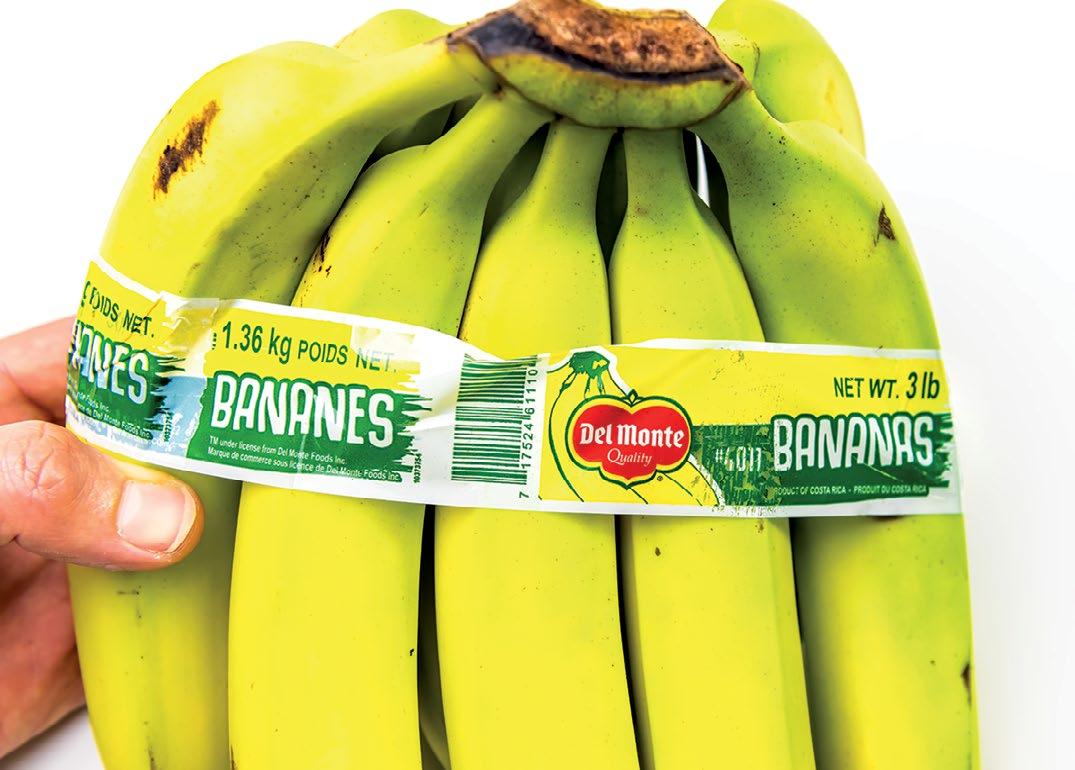
Canada-based business jet manufacturer Bombardier, Inc. has just opened a new 300,000-square-feet service center at Miami-Opa Locka Executive Airport. The $100 million development will add almost 300 aerospace jobs to Miami’s talent pool and more than quadruple Bombardier’s current Florida maintenance operations.
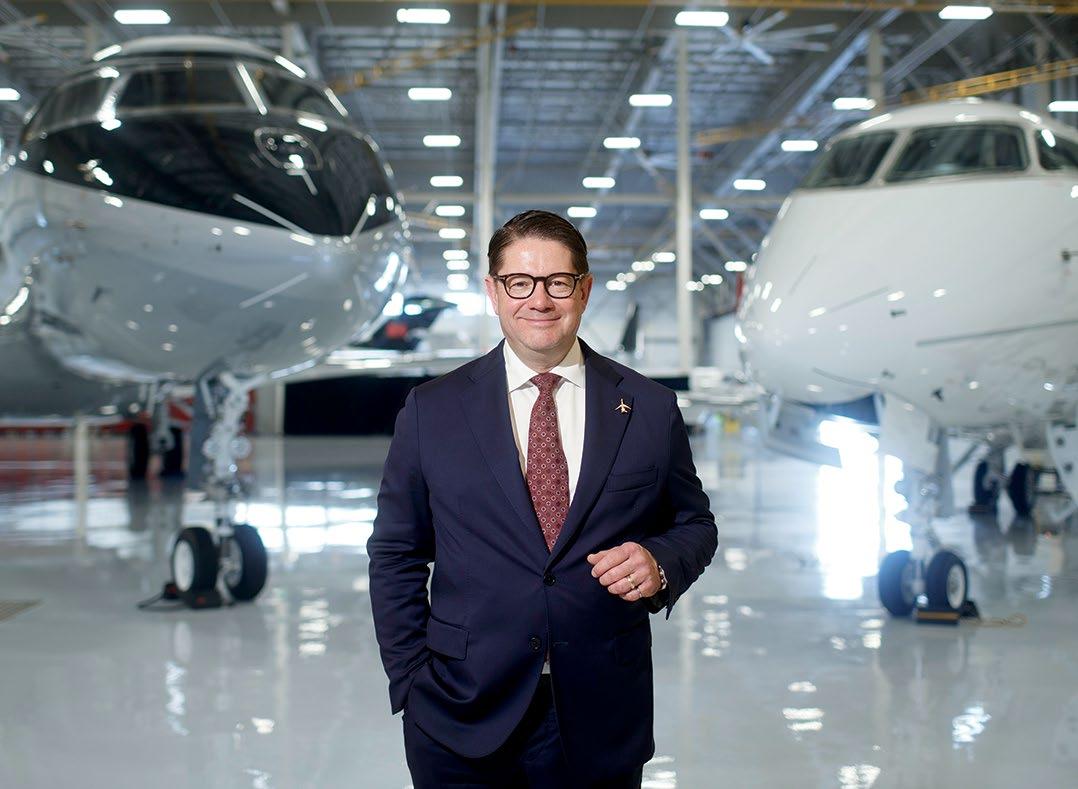
KUWAITI REAL ESTATE COMPANY OPENS MIAMI HOTEL
Aqarat, along with Miami’s Aria Development Group and London’s YOTEL, have officially opened their 31-story Downtown Miami hotel/condo building, YotelPad. All of the 231 condos, which start around $300,000, have already sold out. The Miami property is YOTEL’s sixth U.S. location and 21st worldwide.
BP INVESTS $6 MILLION IN ELECTRIC VEHICLE “UBER”
Freebee, a rideshare company that partners with local governments to provide free electric vehicle rides to residents, has raised over $8 million in a series A round. The investment was led by British multinational BP, which fronted three-quarters of the money to the Miami-based company. Freebee expects to have moved more than one million passengers by the end of this year and plans to use BP’s investment for further expansion in the U.S.
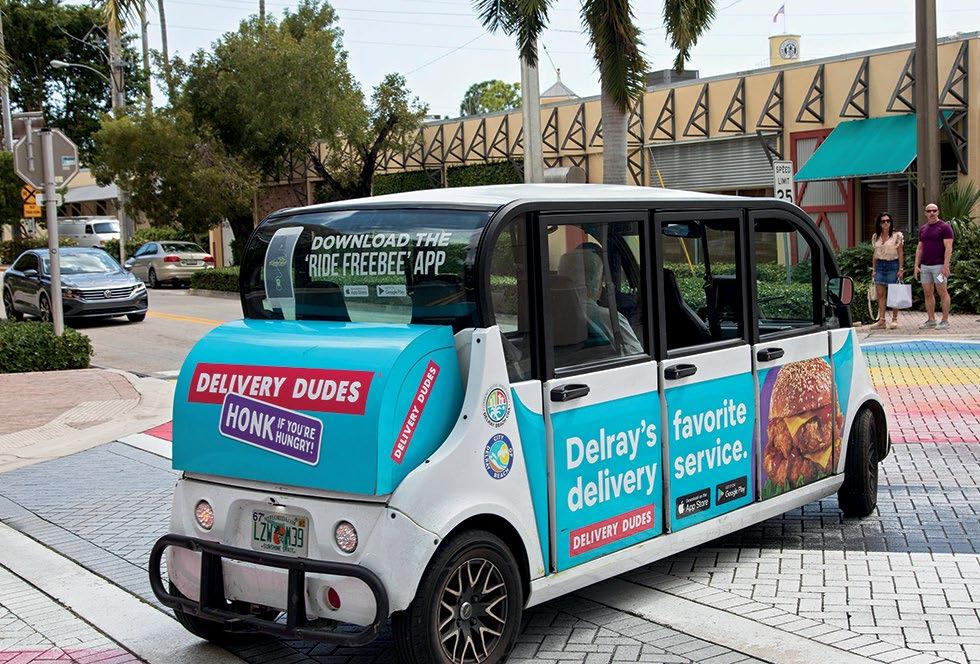
AIRLINES LAUNCH NEW ROUTES TO/FROM MIAMI
American Airlines is now offering daily flights from Miami International Airport to Tel Aviv, the sole U.S. carrier offering this route. It has also resumed operations to two airports in Cuba: Camagüey (CMW) and Holguín (VRA). Meanwhile, Aer Lingus, the national airline of Ireland, has also restarted its Dublin-Miami route three times per week and Ultra Air, a Colombian ultra-low-cost carrier, has announced 33 new international routes, including flights from Barranquilla, Cali, and Cartagena to Miami.

MIAMI REALTORS BREAKS GROUND FOR NEW GLOBAL HEADQUARTERS
On October 26, the 102-year-old MIAMI Association of Realtors® began construction on its new global headquarters in Miami
24 GLOBALMIAMIMAGAZINE.COM
FRESH DEL MONTE BUYS 39 PERCENT STAKE IN TECH STARTUP
TRANSACTIONS
A world leader in the production, distribution, and marketing of fresh produce, Fresh Del Monte has now taken a large share in De-
BOMDARDIER CEO ÉRIC MARTEL
capolis, a startup focused on blockchain-based solutions for the food industry. Their traceability technology will allow Fresh Del Monte customers further transparency in the supply chain by providing unchangeable data at each production stage.
The statewide economic impact was estimated at $1.79 billion. Next year’s show will take place from October 25 to 29, 2023.
AUTOLEADSTAR RAISES $40 MILLION
The AI-powered marketing platform for the automotive industry closed out its series C financing round to the tune of $40 million with the help of Riverwood Capital. The startup, which provides personalized marketing, digital commerce, and consumer engagement for car dealerships and manufacturers, is headquartered between Miami and Jerusalem with 40 U.S. employees. Its software is used by about 1,000 dealerships across North America.
MIAMI WORLD CENTER LEASES TO GLOBAL RETAILERS
Miami World Center, a $4 billion development in Downtown Miami, has signed several global retail tenants. The 27-acre project has signed leases with world-renowned brand Savage X Fenty, which will launch its first Florida site, as well as global brands Lululemon and Ray-Ban. The center will include 300,000-square-feet of shopping, dining, and entertainment, making it one of the biggest private development projects in the country.
IRISH CONSULATE OPENS IN MIAMI
Ireland has opened its first Consulate General in Miami, appointing diplomat Sarah Kavanagh to head the office. The new consulate, one of eight Ireland has in the U.S., is part of the country’s push to double its diplomatic footprint worldwide and recognizes Miami’s growing role as an international hub for trade, tech, and finance, Kavanagh says. It’s located at 201 Biscayne Boulevard in Downtown Miami.
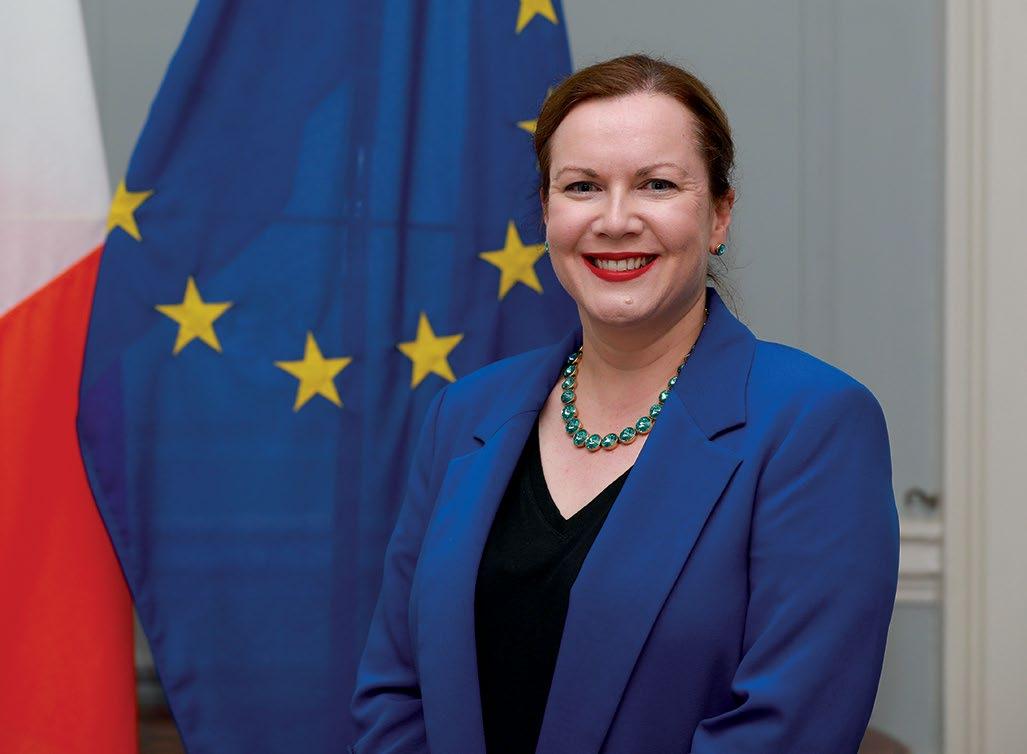
CRITERION GLOBAL WINS INTERNATIONAL TRADE COUNCIL HONORS
The International Trade Council and Enterprise Estonia recently recognized international media buying agency Criteron Global, which has its Americas HQ in Miami, with the Creative Industries Award at the Go Global conference in Tallinn, Estonia. The award commended Criterion for its work in export marketing and global expansion advertising.
242-UNIT LOEWS HOTEL OPENS IN THE AGAVE PLAZA PROJECT
Loews Hotels & Co. just opened its second property in the Coral Gables suburb of Miami in early November. With 221 guest rooms and 21 suites, the new hotel offers 16,000-square-feet of indoor conference space, including the 9,000-square-foot Alhambra room, Coral Gables’ largest ballroom. The hotel is part of The Plaza Coral Gables, which was developed by Mexican company Agave Holdings.
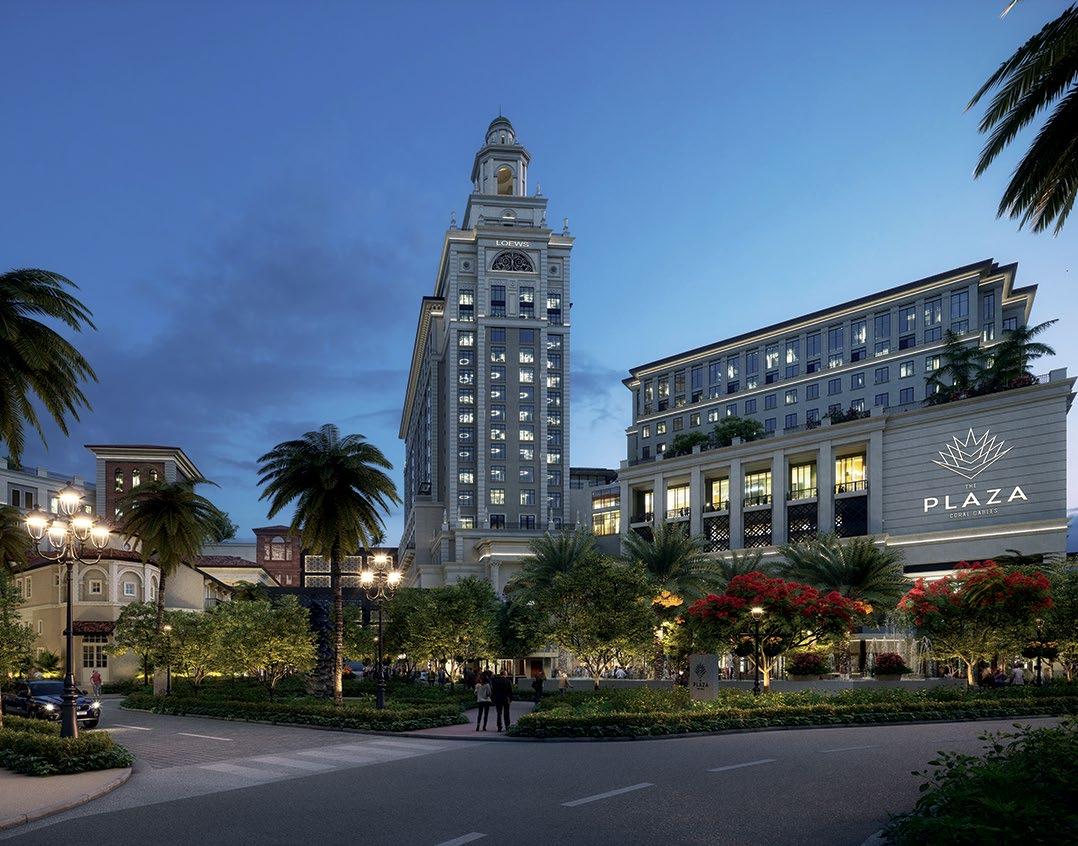
MAERSK AIR CARGO’S NEW AIR FREIGHT OPERATED BY MIAMI BASED AMERIJET INTERNATIONAL
FORT LAUDERDALE INTERNATIONAL BOAT SHOW
The 63rd annual Fort Lauderdale Boat Show was held from October 26 to 30 this year, featuring 1,500 yachts and boats on display to a gathering of roughly 100,00 marine enthusiasts and professionals.
The inaugural flight of Maersk Air Cargo’s new air freight service was announced in late October, with scheduled flights between Greenville-Spartanburg, South Carolina (GSP) and Incheon, Korea (ICN). The first of Maersk Air Cargo’s three newly acquired Boeing 767-300 freighters made its debut on the premier flight of the transpacific operation’s twice-weekly trips on October 31. All U.S.-Korea flights will be operated by Miami-based cargo airline Amerijet International.
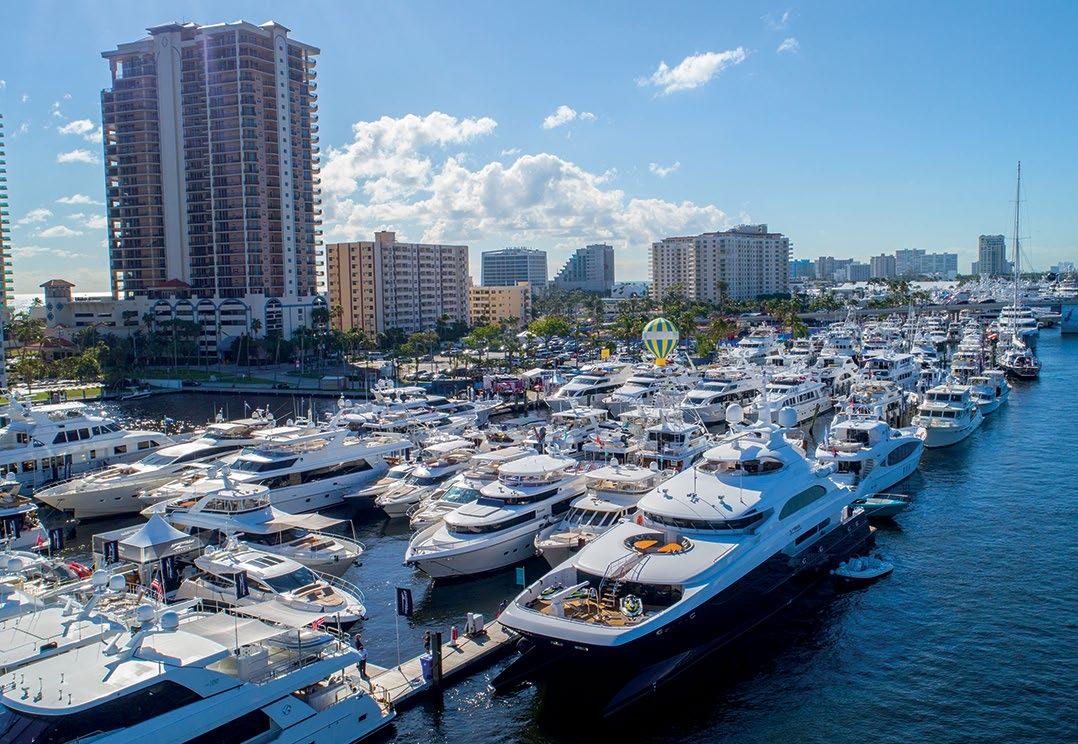
25
CONSUL GENERAL SARAH KAVANAGH
ROYAL CARIBBEAN INTRODUCES A LOOK AT THE WORLD’S LARGEST CRUISE SHIP

Royal Caribbean has begun taking reservations for the initial sailing of the new “Icon of the Seas,” the first in a new series of vessels. “Icon of the Seas” will weigh in at 250,600 tons, more than six percent greater than the seven-month-old “Wonder of the Seas,” the current size leader in the cruise ship industry. It will set a new passenger ship record with capacity for 7,600 people.
AVIANCA GAINS CEIV FRESH CERTIFICATION
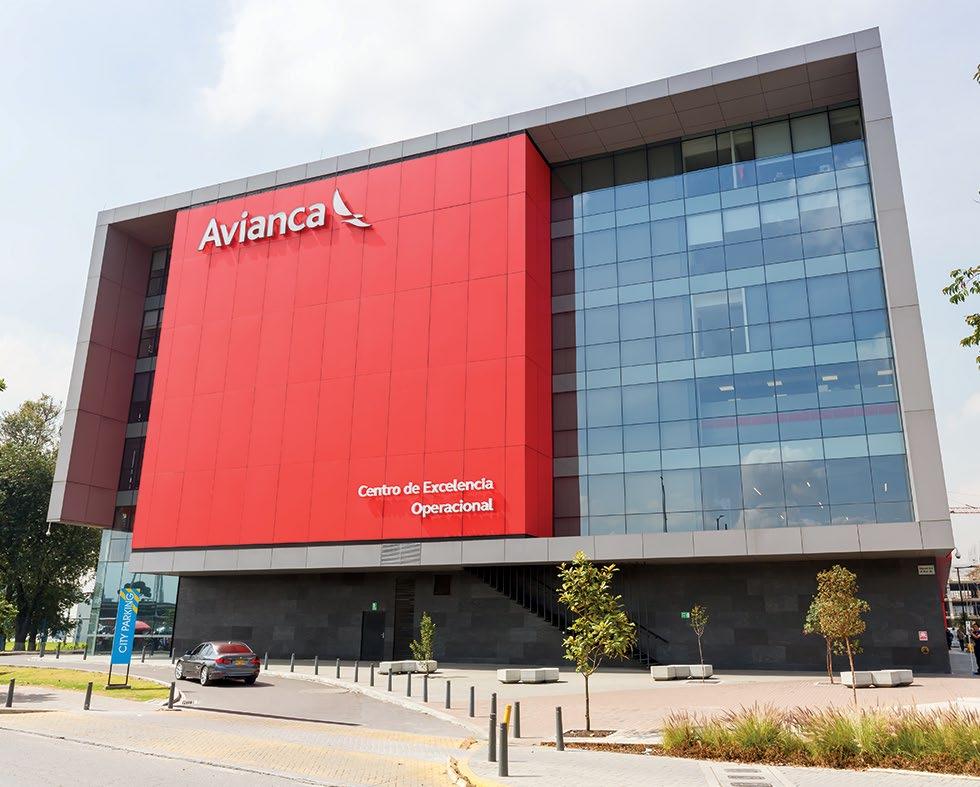
Avianca Cargo has received the International Air Transport Association’s CEIV Fresh certification for the transport of perishable products, making it the first airline in the Americas to do so.
The cargo carrier was required to demonstrate to inspectors that it has implemented risk and quality management, that its staff have been trained to handle perishable items, and that it has a uniform approach to the shipment of perishable commodities. The airline’s shipments into Miami are now expected to accelerate.
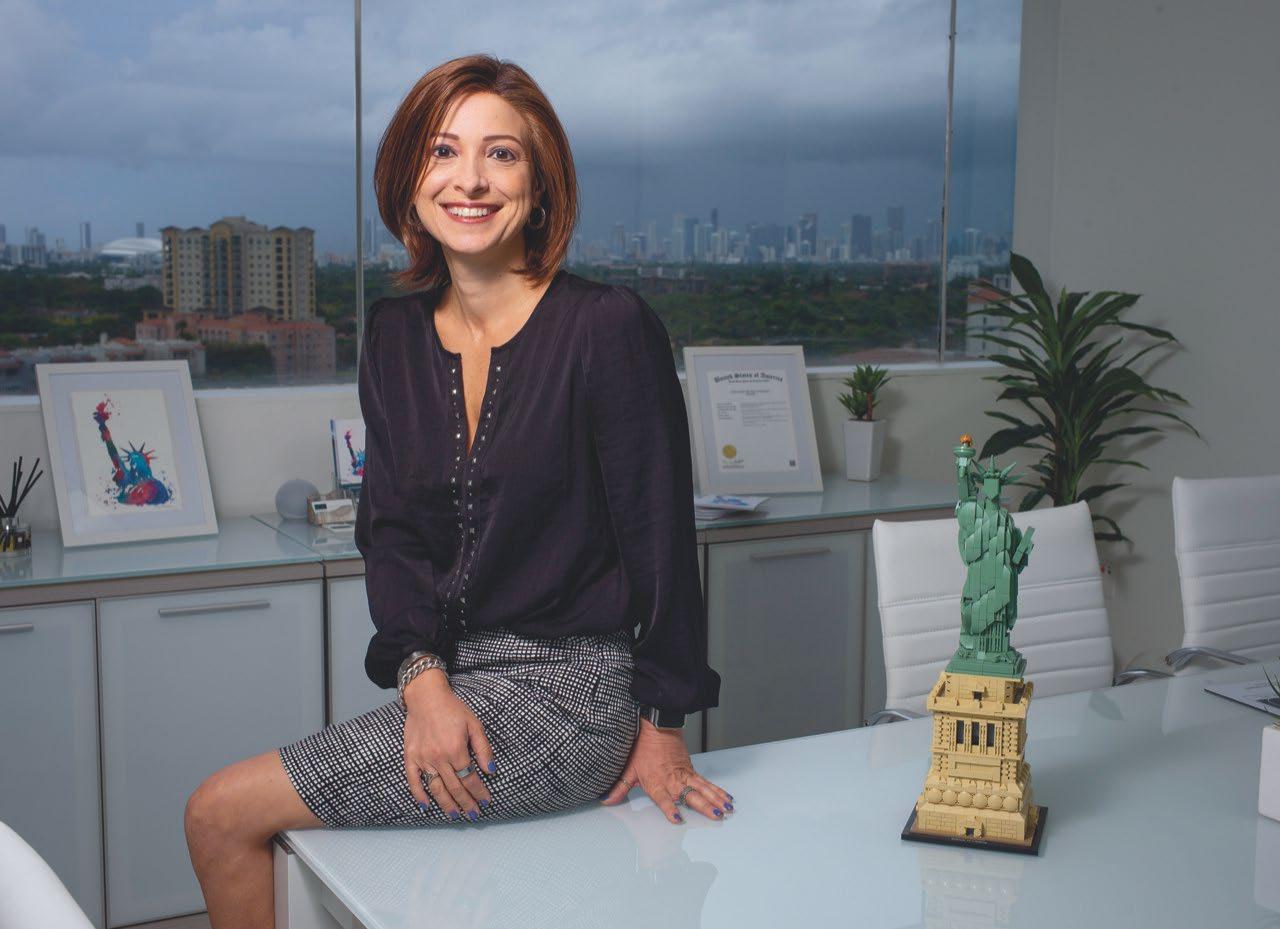
LATAM CARGO OPENS NEW ROUTE WITH REOCCURRING FLIGHTS
LATAM Cargo has introduced a new cargo route from Miami to Santo Domingo, eventually terminating in Colombia and/or Ecuador. The new service will operate twice a week. With a 50-ton freight capacity, LATAM Cargo is using the modern Boeing 767300F to serve its new route. l
“We help you navigate the maze of complex rules and regulations, and make the Immigration process smooth, easy, and personalized.”
NERO Immigration Law represents a range of small, medium, and larger companies as well as individual clients in front of the United States Department of Homeland Security, Department
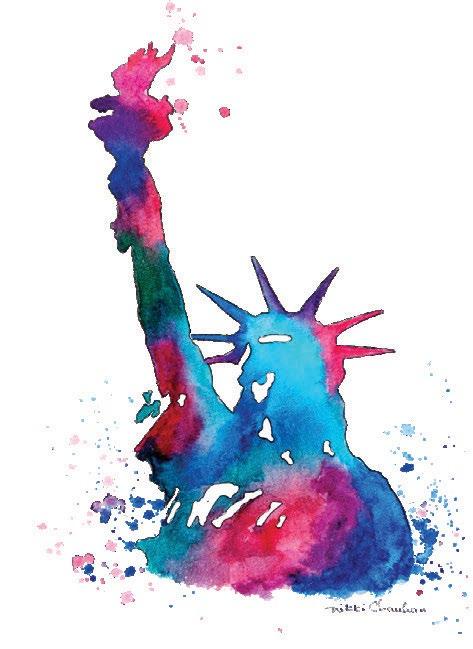


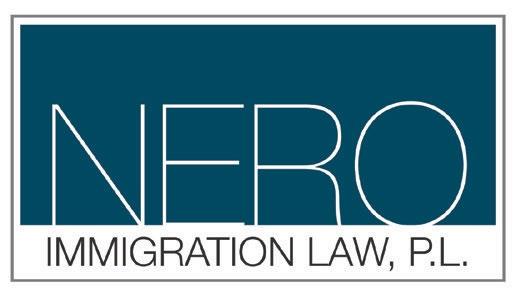
SOME OF OUR SERVICES
www.neroimmigration.com Se Habla Español Advocates for the American Dream Non-Immigrant Visas Employment Based Immigrant Petitions Employer Compliance Services Family Based Immigrant Petitions Work and Travel Permits Naturalization/Citizenship Temporary Protected Status @neroimmigration 2100 Ponce de Leon Blvd. Ste. 1180 Coral Gables, FL 33134 305-351-1079 info@neroimmigration.com 26 GLOBALMIAMIMAGAZINE.COM
Deirdre D. Nero, Esq. | Owner
TRANSACTIONS




What’s Up (Or Down) With Trade?
BY ALICE E. ANCONA
“Numbers don’t lie,” so the saying goes. Perhaps not, but they don’t tell the whole story. And the story really does matter when you are trying to get a better understanding of trade.
There is one month left in 2022 and it’s been quite a post-pandemic recovery. The year began hopeful as we looked to the next normal. It didn’t take long, however, before the headlines focused on a soon-to-come global recession, the war in Ukraine, the rise in energy prices, and more supply chain challenges. Yet trade continued strong and recovered in many sectors.
How we trade and who we trade with as a result of the pandemic has certainly changed. 2022 seemed to challenge us further. The recent DHL Trade Growth Atlas report notes that global trade has surged 10 percent above pre-pandemic levels – which
is shocking considering the unfathomable drop in global trade due to COVID and the incredible strains on global supply chains as economies came roaring back to life.
While it’s inevitable that trade will slow down (and the DHL Trade Growth Atlas reports that it expects a slow-down towards the end of year and into 2023), trade will still grow. There are certainly challenges ahead: recession fears still loom, inflation is here, and high energy prices are lighting up economic indicators like a Christmas tree. And if that is not enough, to borrow from Game of Thrones, “Winter is Coming.” All these factors will have an impact on trade internationally and locally.
The most recent figures are nonetheless strong. Through the first half of the year, both Miami International Airport and PortMiami recorded record growth in imports
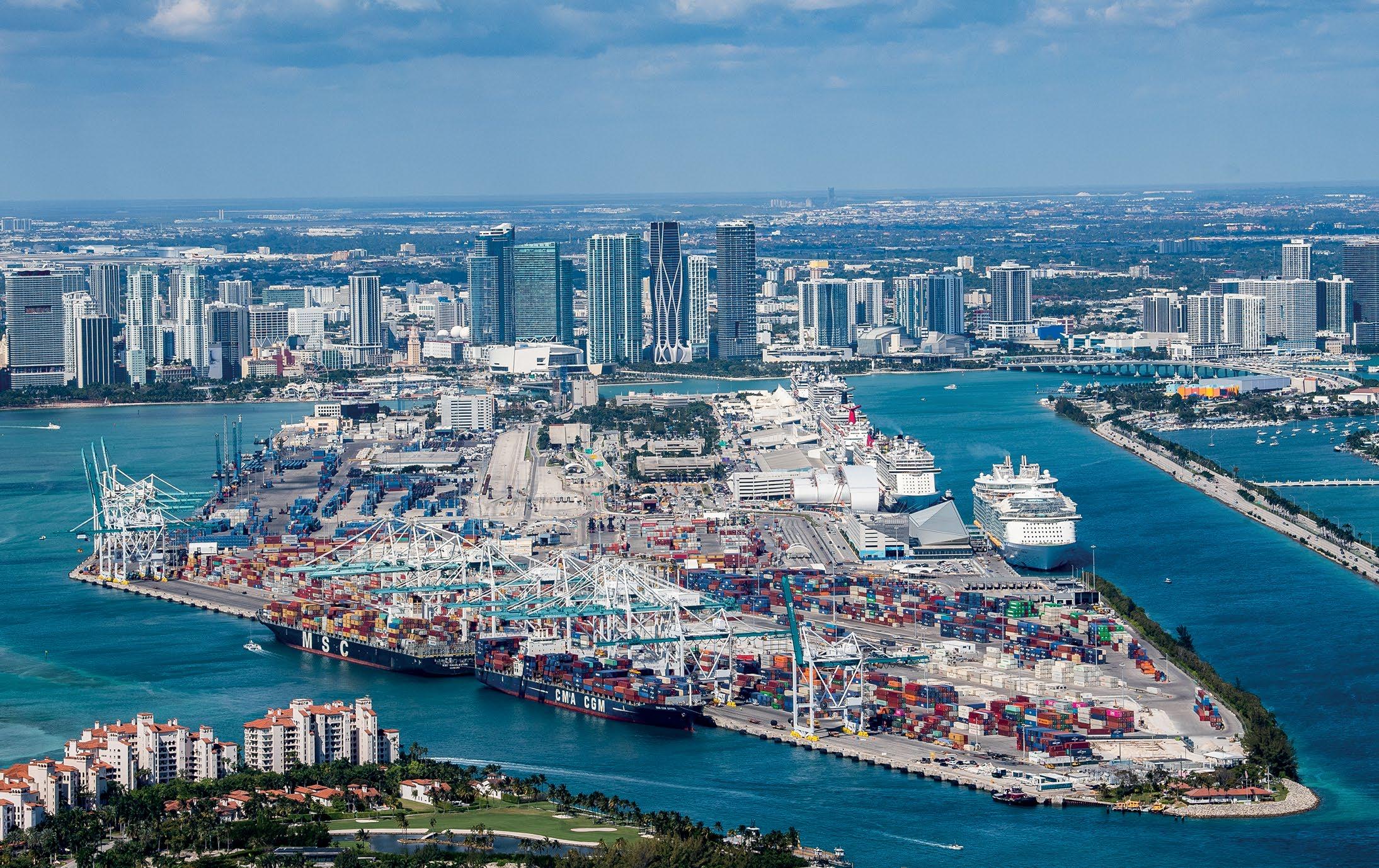
and exports. As a trade hub and a dominant logistical conduit to global trade flows, Miami benefited from a global trade surge.
The pace for Q1 and Q2 was astonishing at PortMiami, with exports growing at over 28 percent and imports growing at over 14 percent – well above pre-pandemic levels. Q3 marked a slight (and expected) slowdown, but traditional export trading partners saw strong growth overall – mostly in Latin America, with Dominican Republic leading the pack, followed by Peru and Colombia. Honduras and Panama also stood out and contributed to the increase in exports.
Short-term external factors contributed to Latin America’s strong performance the first half of the year. The war in Ukraine and prolonged Chinese shutdowns created a mini commodities boom in Latin America. This, along with increased tourism flows,
28 GLOBALMIAMIMAGAZINE.COM TRADE ANALYSIS
MIAMI’S AIR AND SEAPORTS HAVE HAD A GREAT YEAR SO FAR. NEXT YEAR MAY BE LESS ROSY.
PORTMIAMI IN BISCAYNE BAY WITH THE MIAMI SKYLINE. THE CRUISE TERMINAL, RIGHT, IS ALSO LOCATED OPPOSITE THE CARGO PORT.

THE ART of LUXURY ©2022 BHH Affiliates, LLC. An independently operated subsidiary of HomeServices of America, Inc., a Berkshire Hathaway affiliate, and a franchisee of BHH Affiliates, LLC. Berkshire Hathaway HomeServices and the Berkshire Hathaway HomeServices symbol are registered service marks of Columbia Insurance Company, a Berkshire Hathaway affiliate. Equal Housing Opportunity. ewm.com THE REAL TRENDS FIVE HUNDRED 2022 1# HOMESERVICES OF AMERICA TOP BROKERAGE (2021 DATA BY SIDES) MIAMI F T . LAUDERDALE P ALM BEACH Please contact Patrick O’Connell, Senior Vice President, Business Development to help you make South Florida your home. I oconnell.p@ewm.com I 305.742.6932
fueled economic activity in the region.
Unfortunately, this growth is likely short-lived with inflation and energy prices eating away at gains as well as the recent elections in Colombia and Brazil adding to Latin America’s “pink tide.” The Economic Commission for Latin America and the Caribbean (ECLAC) indicated in an October press release that growth is forecasted at 3.2 percent for 2022, above what was foreseen in August. But the organization expects deceleration next year in Latin America and the Caribbean with growth for 2023 projected at 1.4. Such deceleration is likely to impact trade between Miami and the region.
Miami International Airport (MIA), meanwhile, is in a class of its own. PreCOVID, MIA was responsible for approximately half of the state of Florida’s exports by value. It entered 2022 with some incredible rankings. Among U.S. Airports it ranked: first for international freight, first for international passengers, fifth for total cargo (freight + mail), and fourth for total freight. Among airports worldwide it ranked: ninth for international freight, eleventh for inter-
national passengers, eleventh for total cargo (freight + mail), and tenth for total freight. For MIA, the growth story has been on the export side, up approximately 20 percent. Countries with year over year growth have been Brazil at 24 percent, Colombia at over eight percent, and UK and Argentina at above six percent. Imports have decreased by about 20 percent with top sources being Colombia, China, Chile, Singapore, and Costa Rica. The decrease in MIA’s imports when compared to last year are due to a decrease in imports from Germany, France, and Singapore, as well as a decrease in imports of specific products such as vaccines, blood, and other life science related items that were part of COVID driven trade. Trade flows are still adjusting to a post-COVID world. Post-BREXIT UK is creating an interesting trade opportunity for the U.S. as the EU is no longer an open trade destination for UK exports. As this trade corridor develops further, U.S. exports to the UK are likely to grow. MIA seems to be capturing some of this flow. Several other European countries have also
shown interesting growth on the export side. While not dominant partners for the port, exports to Poland rose more than 500 percent, Georgia about 20 percent, Greece about 13 percent, and Italy at over three percent. To be seen is whether these trade flows are fleeting or sticky.
Nonetheless, with the holiday driven trade rush well in the rear-view mirror, trade will certainly be slowing down. Inventories are full and inflation is already putting a damper on consumer spending, cutting orders by the big box retailers. 2023 will not experience the trade boom that 2022 did. The post-COVID trade rush has already tapered off, and things are settling into the new normal. Trade lanes will continue to shift; as the saying goes, change is always certain. l
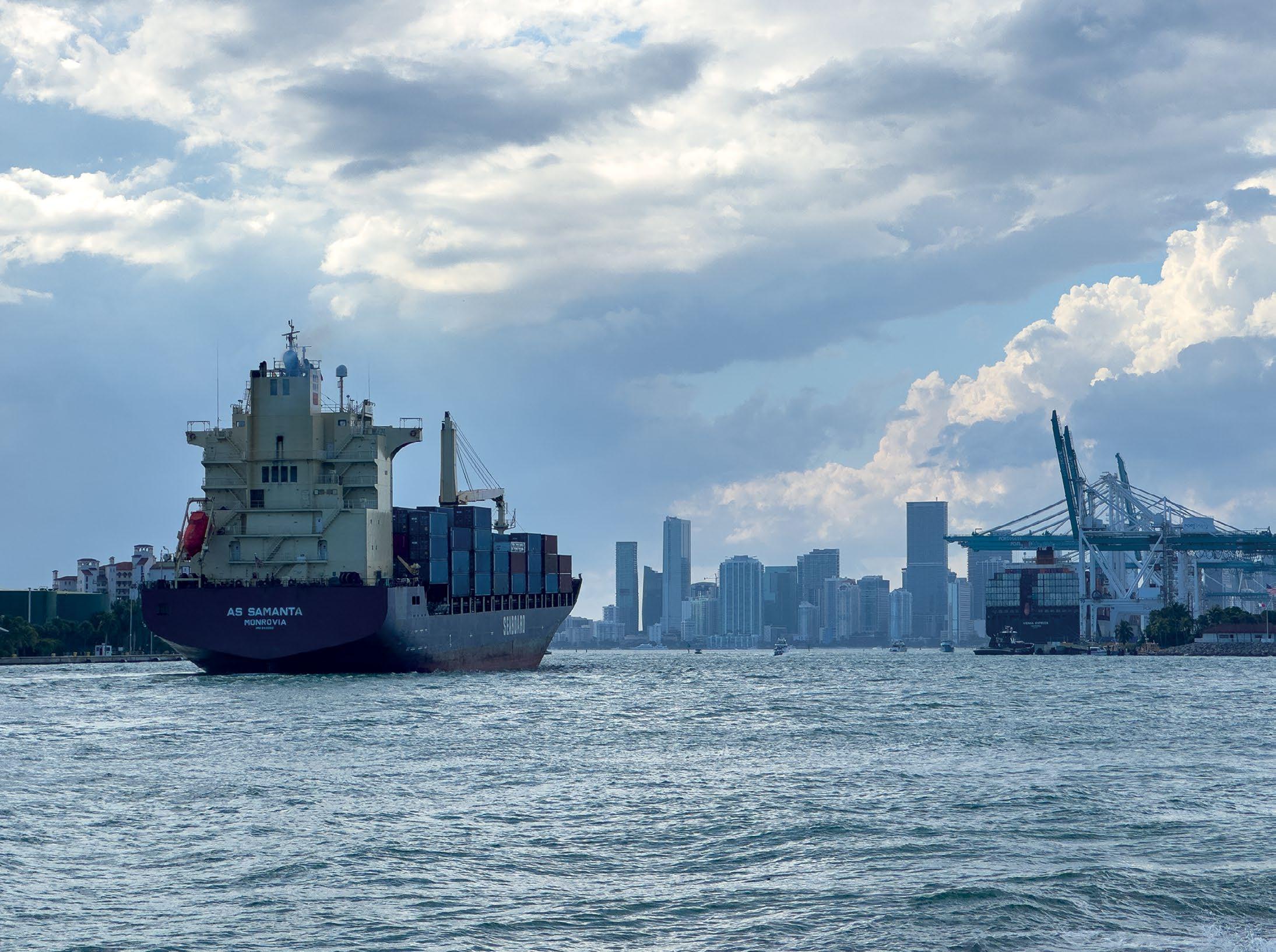
30 GLOBALMIAMIMAGAZINE.COM
Alice E. Ancona is the Senior VP and COO of World Trade Center Miami
CARGO SHIP ENTERING PORT MIAMI EARLY MORNING CARGO VESSEL IN THE GOVERNMENT CUT WATERWAY
HOW CAN WE HELP YOU
Our personal injury law firm has obtained in excess of a billion dollars in verdicts and recoveries for clients and is recognized as a leader in plaintiffs’ personal injury and wrongful death, class actions, mass torts, and other areas of litigation
Colson Hicks Eidson, one of Miami’s oldest and most accomplished law firms, is considered among the top trial firms in the United States, having won hundreds of multi-million dollar verdicts and settlements for its clients.

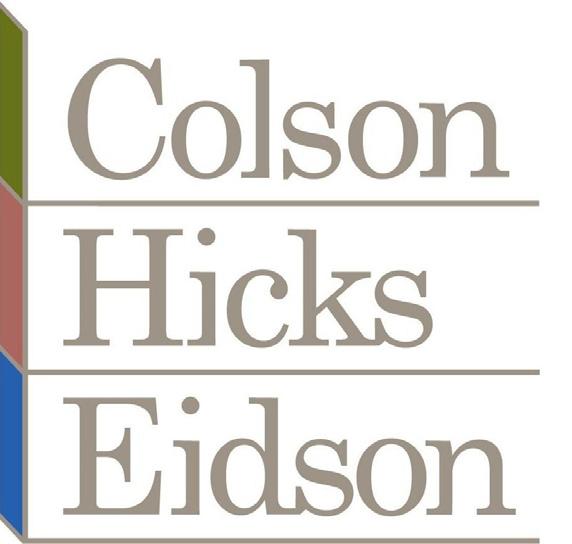

–Chambers USA, 2022
WHAT WE PROVIDE
Our personal injury lawyers have a long history of serving individuals, groups of individuals and businesses in a wide range of lawsuits. Our trial attorneys are highly regarded for their depth of legal experience, responsiveness to client concerns and ethical tactics, both inside and outside of the courtroom. Our law firm receives respect throughout the legal community, which recognizes Colson Hicks Eidson for its various distinguished achievements.

WHO WE HAVE HELPED
We are or have been actively engaged in the following and many other cases:
• Takata Airbags MDL
• Champlain Plaza
• Allergan Biocell MDL
• Monat Marketing MDL
• Parkland Shootings
• Elmiron Eye Injury MDL
• 3M Combat Earplugs MDL
• BP Deepwater Horizon Oil Spill
• Ford Firestone MDL
• Toyota Sudden Acceleration MDL
• Zantac MDL
• Camp LeJeune Contamination Claims
255 Alhambra Circle | Coral Gables, FL 33134 Tel: (305) 476-7400 | Fax: (305) 476-7444 | www.colson.com
“ “
Stats: Top 10
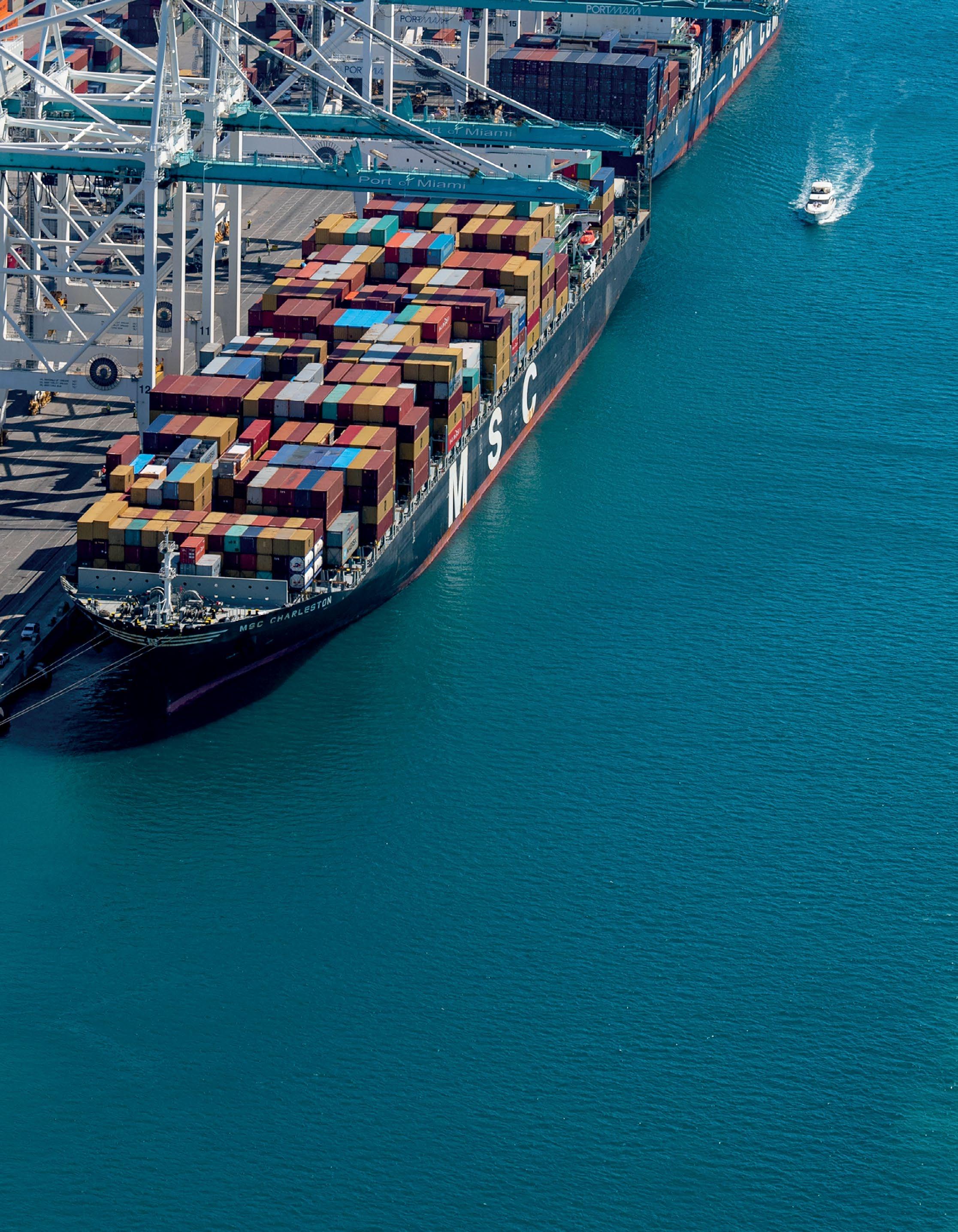
32 GLOBALMIAMIMAGAZINE.COM
PortMiami Cargo
Q1 TO Q3 FY2022 (OCTOBER THROUGH JUNE) MIA TOP EXPORT DESTINATIONS 2022 YTD: BRAZIL: $6.15B COLOMBIA: $2.17B CHILE: $1.96B UK: $1.93B CHINA: $811M MIA TOP IMPORT ORIGINS 2022 YTD: COLOMBIA: $1.81B CHILE: $1.35B CHINA: $1.29B COSTA RICA: $1.02B SINGAPORE: $424M COUNTRY OVERALL VALUE 1. CHINA $9,545,988,803 2. HONDURAS $6,544,095,168 3. DOMINICAN REPUBLIC $4,157,778,545 4. VIETNAM $1,578,623,373 5. PERU $1,383,347,561 6. EL SALVADOR $1,274,068,483 7. GUATEMALA $1,242,303,979 8. TAIWAN $1,154,831,980 9. JAMAICA $1,127,868,619 10. HAITI $1,102,613,131
Online,
Observatory of Economic Complexity
PortMiami
Trading Partners
Source: Data from United States Census Bureau USA Trade®
The
Source:
World Trade Center Miami is Here for You!
World Trade Center Miami, the largest and oldest trade association in Miami, is part of the World Trade Center Association global business network of 315 World Trade Centers in 92 countries with over two million members.

Whether your business is looking to find your next customer, expand to international markets or make global connections we have the resources, services and decades of expertise to successfully grow your bottom line.
WE PRODUCE WORLD CLASS TRADE SHOWS
• The annual Americas Food and Beverage Show now in its 27th year – the ideal meeting place for decision makers and buyers from all sectors of the global food and beverage industry.
• The Air Cargo Americas Show, now in its 17th year, held bi-annually, brings together top executives from all sectors of the aviation and logistics industry.
• The Supply Chain Americas Conference is held annually and in conjunction with the Air Cargo Americas Show is one of the leading events focused on innovation and resiliency in the global supply chain.
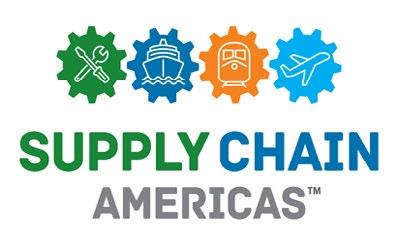
SCHEDULE OF EVENTS:
• International Women’s Day Luncheon: March 8, 2023
• Miami World Trade Month: May 2023
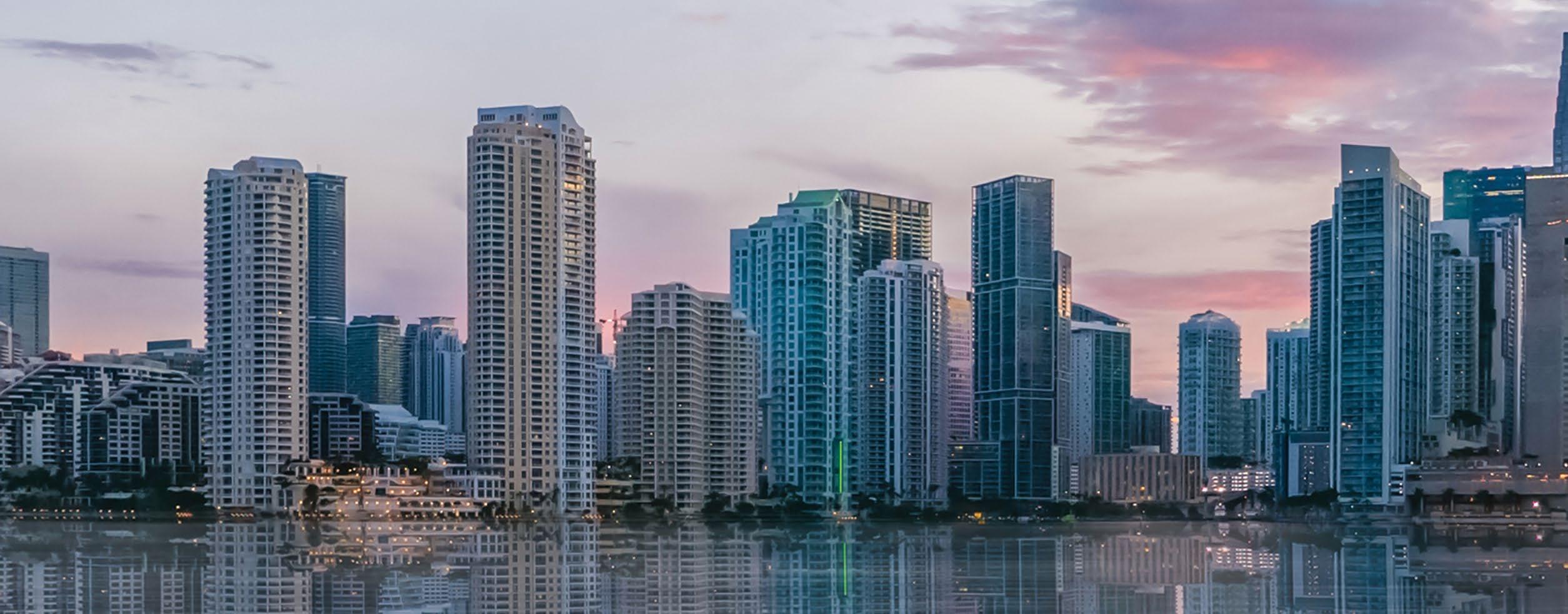
• Americas Food & Beverage Show: September 18-20, 2023 Miami Beach Convention Center

• Air Cargo Americas/Supply Chain Americas Show & Conference: October 31-November 2, 2023
• State of the Ports: November 2023

5835 Blue Lagoon Drive, Suite 100, Miami, FL 33126 Tel: 305-871-7910 / Fax: 305-871-7904/ Email: info@wtcmiami.org The
largest and oldest
association
Miami, part
the World Trade Center
business
314 World Trade Centers
91
over 2 million members. YOUR GLOBAL CONNECTION • JOIN MIAMI’S ONLY GLOBAL TRADE ASSOCIATION TODAY
World Trade Center Miami is the
trade
in
of
Association, a global
network of
in
countries with
Tradewinds: Mexico
HOW MEXICO IS BECOMING AN INCREASINGLY IMPORTANT TRADING PARTNER WITH MIAMI
BY YOUSRA BENKIRANE
In past decades, Mexico’s presence in South Florida was concentrated mostly in the Redland agriculture area southwest of Miami, where Mexican immigrants labored as farm workers. In recent years, however, two-way trade between Miami and Mexico has steadily increased, along with direct Mexican investment.While just 27 Mexican firms are now located in Miami, they are major players. Grupo México invested more than $1 billion in the purchase of Florida East Coast Railways, for example, while Jose Cuervo’s U.S. real estate arm, Agave Holdings, is completing a $700 million mixed use project in Miami’s upscale suburb of Coral Gables.
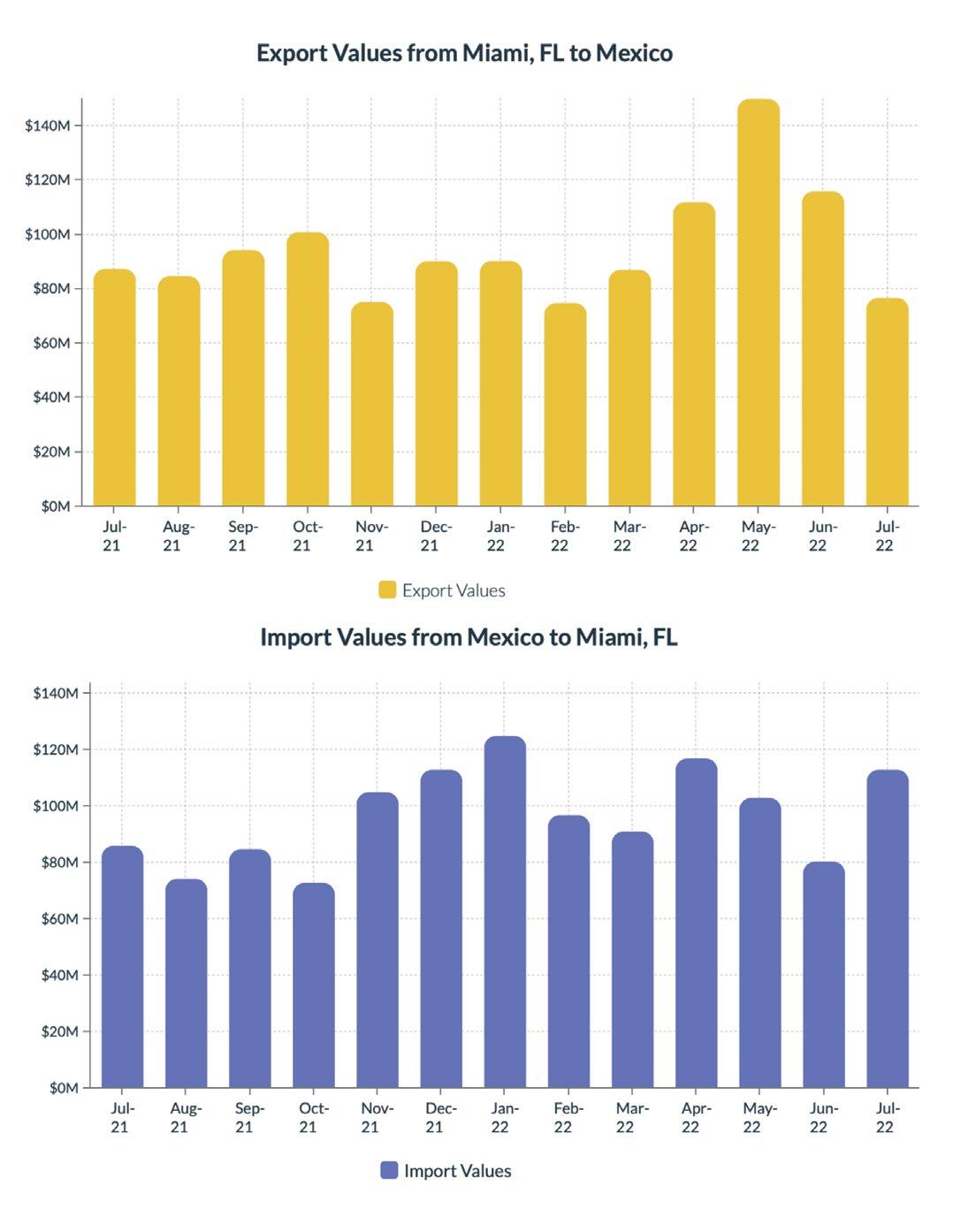
“There’s a very, very strong Mexican investment in Florida, and it’s growing,”says Jonathan Chait, the Consul General of Mex-ico in Miami, citing more than $2.5 billion in trade between Miami and Mexico last year.“In 2016, there used to be just one maritime route between Mexico and Florida. Nowadays, we have six.”
Indeed, Mexico is now Florida’s seventh-largest merchandise trading partner, with a 15 percent revenue increase in 2021 compared to 2020, cresting some $11 billion in trade by sea and air statewide, according to the consulate. Mexico has also become a key maritime trading partner. According to PortMiami, imports from Mexico have increased 8.9 percent annually since 2008.
What’s driving this growth is demand from U.S. companies, says Estela Cachoua, executive director of the U.S. Mexico Chamber of Commerce.“Miami is one of the biggest cities in growth and development, and this increase in economic development has made a huge demand for different commodities,” says Cachoua; construction materials, cars, semiconductors, and other industrial products are all in high demand.
That seaborn trade is something leaders on both sides would like to accelerate.The issue is fiscal: The higher cost and longer transit time for land routes that cross the U.S.-Mexico border, combined with the proximity of Mexico’s Gulf Coast, has made PortMiami an attractive option.
Gary Goldfarb, the chief strategic officer at Interport Logistics, is pushing Mexican exporters to decrease their cost by shipping through the port.“Right now, they truck from Mexico to Miami at thousands of dollars more than what it needs to be,”Goldfarb says. Even using Miami as a port of entry for shipping to cities like New York would slash expenses According to Goldfarb, it costs roughly $15,000 to move goods over land from Mexico to U.S. East Coast cities, while it costs about $2,000 to ship the same goods to PortMiami and then another $3,000 to truck them up the coast.“The right thing to do is get Mexican trade through PortMiami,”he says. “It’s absolutely the most logical thing in the world.”
To push this agenda further, the Florida-Mexico Working
Source: Data from United States Census Bureau USA Trade® Online, The Observatory of Economic Complexity
Group on Maritime Trade was established in June 2020.This group, a collaboration between the Consulate of Mexico and World Trade Center Miami, encourages the use of maritime routes. In June 2022, a Miami trade mission to Mexico was arranged to connect representatives from ports, chambers of commerce, and businesses, introducing Florida firms to organizations such as the Mexican Shipping Agents Association (AMANAC) and the Asociación Nacional de Transporte Privado, an association of private transport companies.“The whole idea of the trade mission was for them to better understand the opportunities in Mexico and vice versa,”Chait said.“Through that, it gives us a whole new perspective.”The Consul General is so intent on creating closer ties between Miami and Mexico that he recently hosted a Day of the Dead celebration in Coral Gables, dressing as a devil.
The trade mission also opened discussion about one of the most significant infrastructure projects of the Mexican government, the Interoceanic Corridor of the Isthmus of Tehuantepec.This project will enable goods and services to travel by canal from Salina Cruz, Oaxaca, on Mexico’s Pacific coast, to Coatzacoalcos, Veracruz, on its Gulf coast in about 24 hours. From there, goods can travel to ports in Florida.
Besides providing the efficiencies of maritime shipments to U.S. markets, Miami is a prime gateway to South America, making it an effective place for Mexican companies to stage their Latin American headquarters. CMX Cinemas, the North American subsidiary of Mexican corporation Cinemex, is one example, while Continued on page 36
34 GLOBALMIAMIMAGAZINE.COM TRADE TRENDS
Agave’s $700 Million Gambit
WHY THE REAL ESTATE ARM OF MEXICO’S JOSE CUERVO CHOSE MIAMI
The obvious place for a Mexican company to invest in the U.S. would be in Texas or California, in cities like San Diego, San Antonio, or Los Angeles, says Agave Holdings’ managing director Carlos Beckmann. But Miami – along with smaller holdings in Chicago and New York – became the preferred place for the U.S. real estate division of Mexico’s Jose Cuervo conglomerate.

“We always saw Miami as the capital of Latin America, and we saw tremendous growth opportunity here,” says Beckmann, who began managing construction of the massive $700 million Plaza Coral Gables project in 2016. “The fact that [Miami] is very Latin made it more attractive, and geographically it made sense being on the East Coast, because at one point there was an idea to move Jose Cuervo’s [U.S.] office here.”
While Cuervo’s U.S. HQ remained in New Jersey, Agave Holdings was incorporated in Miami in 2009, when The Plaza’s other managing director, Jose Antonio Perez, arrived and began acquiring U.S. properties. First came a commercial waterfront highrise in Miami’s Coconut Grove, then an office building in Chicago. That was followed by the development of a mid-rise office tower in Coral Gables, the tony suburb of Miami that is a favorite home base for global CEOs and consular officers.
These projects pale in comparison with The Plaza Coral Gables, with its 455,000-square-feet of office space in two towers, 137,000-square-feet of retail, 200unit luxury apartment building, and 242-key Loew’s hotel crowned with an Old Spain style bell tower. The Mediterranean styled project is now fully complete except for its retail section.
Like other Mexican companies operating in Miami, both Beckmann and Perez found a more welcoming culture than in the U.S. West. “We like Florida much better, especially Miami, because of the melting pot that it is,” says Perez. “The way some of the immigrants and Mexicans are treated in Mexico, the working class, is not very nice. Here in Miami, it’s like everyone is equal. It’s a much more open society.”
35
CARLOS BECKMANN (SEATED) AND JOSE ANTONIO PEREZ OF AGAVE HOLDINGS
The Rail Alternative
The Grupo México conglomerate is best known for two things: their enormous mining operations (they are the world’s third-largest copper producer) and their rail operations in Mexico, where they own more than 6,800 miles of track, 800 engines, and 26,300 rail cars. Less known is their ownership of Florida East Coast Railway, which they purchased in 2017 for $2.1 billion.
Since then, FECR has dramatically grown in volume and revenue, says Luis Hernandez, Grupo’s vice president for intermodal who runs the Florida rail line. 2021 was, in fact, the best year ever for FECR, with gross revenues of $320 million, a jump of 23 percent from 2020. This year, the rail line expects revenue to hit $406 million. “It’s both new customers and increased volume from older ones,” says Hernandez, citing clients such as Walmart, Amazon, Fedex, CVS, Walgreens, and Hobby Lobby. “It’s a pretty robust customer base.”
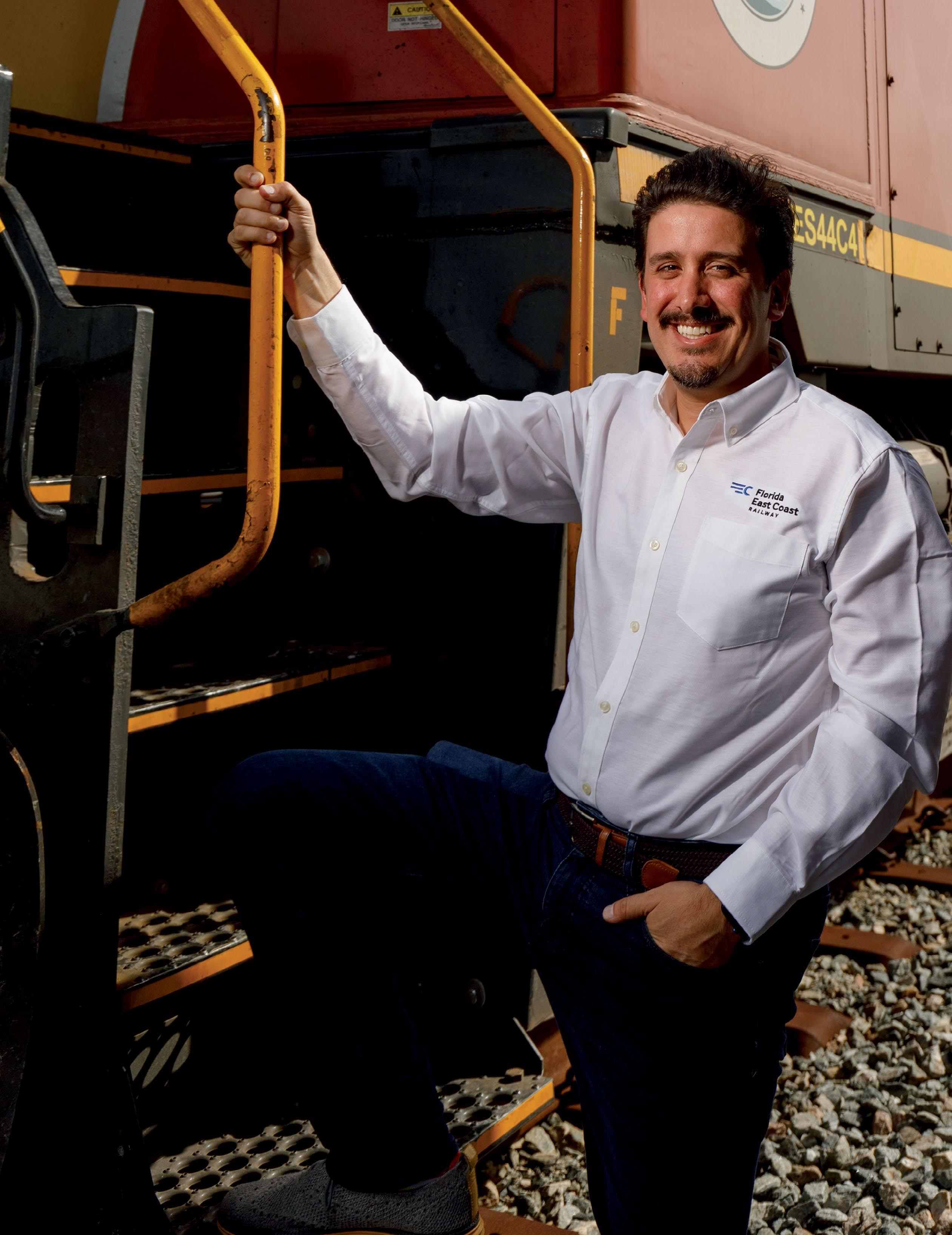
The FECR’s main line connects Miami with Jacksonville in northern Florida, a distance of some 327 miles as the crow flies. Most of what they transport comes into Miami from places like Chicago, carried first to Jacksonville via CSX and NFS railroads and the rest of the way by FECR. While some of those goods are shipped abroad from PortMiami and Port Everglades, much of it is destined for South Florida. Less freight travels in the other direction, from Miami back to Jacksonville.
“Miami is a port of local consumption,” says Hernandez, who has run the FECR operations since 2019. “Many of the loads that arrive in Miami will be consumed in Miami or Central Florida. Miami is not a port of international cargo going into the country.” Hernandez would like to see that change with direct shipping connections between Miami and Ft. Lauderdale and Mexico’s Gulf Coast cities, like Veracruz. Currently there are a half dozen shipping lines that traverse the Gulf between Florida and Mexico, but there are no direct routes; trucking or rail overland from Mexico to Florida still holds sway.
“We have been working with PortMiami to promote that [direct] service,” says Hernandez. “It’s a matter of changing mindsets. Sometimes habits are too well established.”
36 GLOBALMIAMIMAGAZINE.COM
GRUPO MÉXICO AND FLORIDA’S EAST COAST RAILWAY
LUIS HERNANDEZ, VP OF INTERMODAL FOR GRUPO MÉXICO
PHOTO BY RODOLFO BENITEZ















Real Estate Advisory Services Investment Management Asset Management PolarisRealtyCapital.com 288 Aragon Avenue, Coral Gables, FL Real Estate Advisory Services Investment Management Asset Management PolarisRealtyCapital.com 288 Aragon Avenue, Coral Gables, FL Real Estate Advisory Services Investment Management Asset Management PolarisRealtyCapital.com 288 Aragon Avenue, Coral Gables, FL FROM THE GLOBAL CITY We provide international investors compelling US real estate investments 2625 Ponce de Leon Blvd. — Ste. 101 — Coral Gables, FL $1.5 billion of acquisitions 12,000 apartments acquired $500 million of investor equity
other companies with Mexican connections include tech-related Broxel, Dinerazo, Delta Protect, LANUS Tech, and Quaxar. These firms are attracted by and contribute to Miami’s growing role as a tech hub for the Americas.

Miami is also becoming an attractive place for affluent Mexicans to invest in residential real estate, mostly as second homes. According to Miami-based International Realty Group, which recently opened an office in Mexico City, buyers from Mexico pay the highest home prices of any Latin Americans – $1.25 million on average, compared to $875,000 for Brazilians. “For Mexicans, Miami has become the preferred place for vacation, even though California is closer,” says IRG CEO Giovanna Guzman. “They are the ones who buy the most expensive properties.” Guzman’s firm is marketing units to Mexican buyers in the new Waldorf Astoria tower in Downtown Miami, now under construction, where prices start at $3 million.
While Miami has made its own efforts to attract Mexican companies and facilitate their expansion, the Mexican Consulate is also creating links between the public and private sectors. For Mexican companies looking to invest or trade in Miami, the consulate provides connections to local authorities and incentive programs like IMMEX, which can help grant tax reductions. Likewise, Florida-based companies looking to import products from Mexico are linked to suitable suppliers across different industries.
“There’s no reason why this business isn’t ours already, but with the pandemic, some people have been sleeping at the wheel,” says Goldfarb. “It’s time to wake up. The market’s there, and there’s more and more manufacturing coming. It’s just a matter of us going out and pushing it.” l
Miami & Mexico Trade: Top Commodities
2022 EXPORTS:*
TELEPHONES: $3.8M
AIRCRAFT PARTS: $13.2M
RECREATIONAL BOATS: $4.46M
VALVES: $2.66M
THERMOSTATS: $2.38M
GAS TURBINES: $2M
2022 IMPORTS:*
PETROLEUM: $102M
CARS: $82.1M
DELIVERY TRUCKS: $7 9.9M
GAS TURBINES: $34.3M
FISH FILLETS: $22.1M
BEER: $7.57M
*Year-to-date as of July 2022
Source: Data from United States Census Bureau USA Trade® Online, The Observatory of Economic Complexity
Stay Informed Don’t miss any Issues Email us: 1 Mayor Francis Suarez and the Transformation of Miami Plus The Israeli High-Tech Connection Okan bets big on the downtown GLOBAL MIAMI INVESTMENT, INNOVATION, & TRADE TRENDS TRANSACTIONS REGIONAL HQ’S TRADE LEADERS INVESTMENTS ENTREPRENEURS NOVEMBER/DECEMBER 2022 subscriptions@globalmiamimagazine.com Or Visit: www.globalmiamimagazine.com 38 GLOBALMIAMIMAGAZINE.COM
Think ahead and others will follow.







To be at the forefront takes vision and sometimes guts. However, the reward is worth the risk. At Pacific National Bank, we believe in those always striving to break the mold. It’s part of your DNA to be a leader. We admire you for doing things differently. We’ve been doing it for years in our own industry, creating unique solutions to fit our clients’ distinct needs. Drop by and experience banking like you never have before.
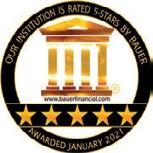
400 SE 12th Street, Building A, Fort Lauderdale, FL 33316 | 305-539-7667 156 West 56 Street, Suite 2002, New York, New York 10019 1390 Brickell Avenue, Miami, FL 33131 | 305.539.7500 255 Aragon Avenue, Coral Gables, FL 33134 | 305.539.7570 18285 Biscayne Blvd., Aventura, FL 33160 | 305.539.7460 Member FDIC 19287-001 PNB_2021_Ad_Camp.indd 1 2/7/22 3:45 PM
Endeavor’s Venture
CLAUDIA DURAN’S JOB IS TO LINK HIGH-POTENTIAL ENTREPRENEURS WITH PEERS, MENTORS, AND RESOURCES
BY DOREEN HEMLOCK
Growing up in El Salvador, Claudia Duran remembers joining her interior-decorator mom to check on her furniture factory. Her engineer dad would bring her to building sites where his construction company was working. Conversations over meals often centered on her parents’ ventures.
Duran learned early the value of entrepreneurship and the grit it takes to succeed. She’s applying those lessons now as managing director of Endeavor Miami, the local affiliate of the global nonprofit that helps high-potential founders scale up their companies. She’s the latest to helm the Miami office, which opened in 2013 as the first U.S. chapter of the organization that started in South America.
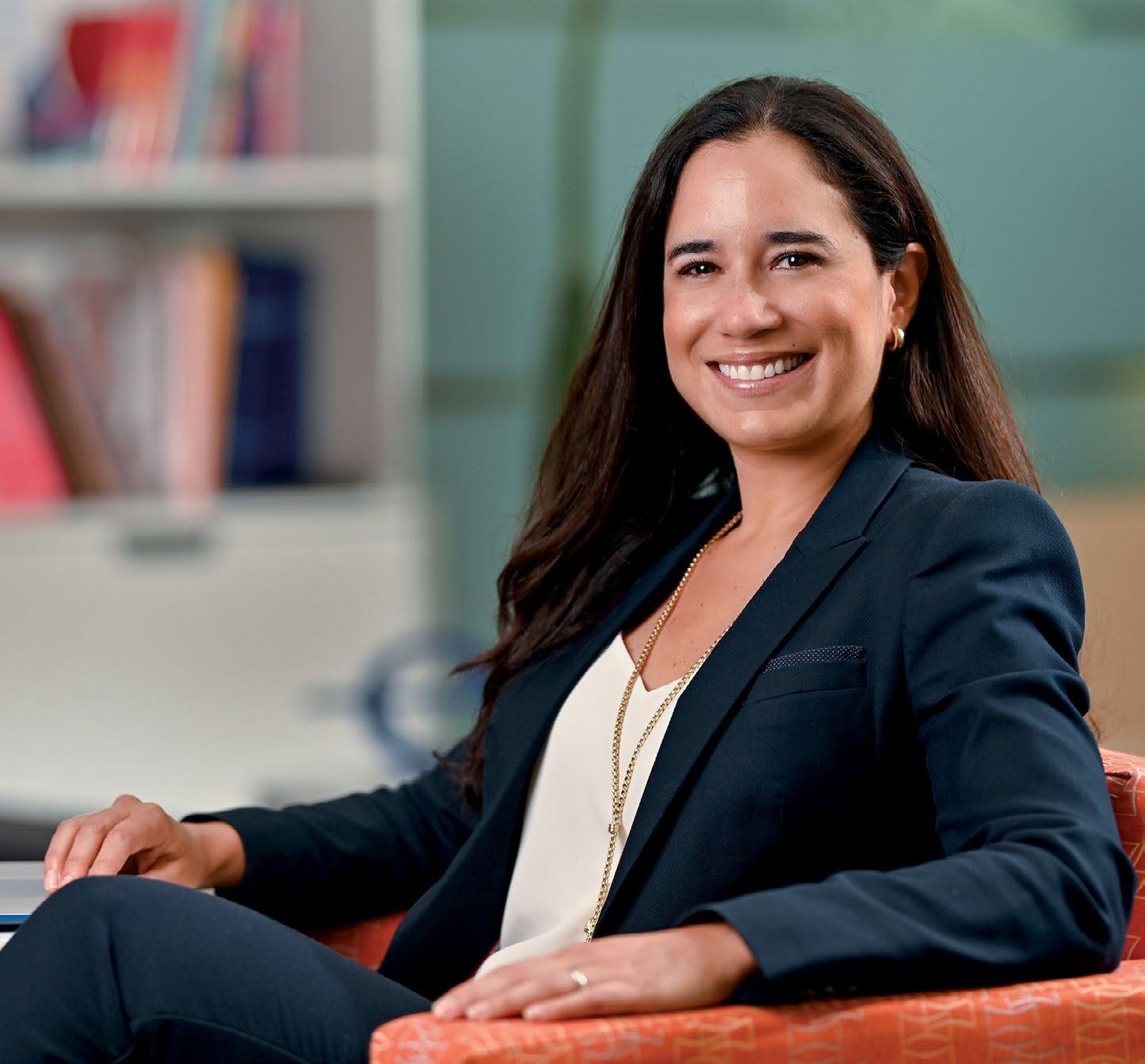
“Entrepreneurs just have it in their DNA. It’s how they’re wired,” says Duran, describing her parents as “workaholic, passionate founders,” active their whole lives. “My dad is 89, and he still goes to the office every day.”
Duran is passionate about entrepreneurship too, bubbling with ideas to help founders and boost networks. Ask her about Miami’s tech scene and she’ll quickly talk meetups, conferences, and mentorships – all means of bringing people together. She just moved Endeavor’s office to Miami’s techie Wynwood neighborhood, partly to offer a
space for founders to come meet.
“One of my goals is to build a strong community of entrepreneurs,” says Duran. “I believe in the power of peer-to-peer sharing, because most entrepreneurs go through similar challenges,” from operations to funding to mental wellness. “It can be a lonely ride being an entrepreneur, with so many pressures.”
Endeavor began operations in Chile and Argentina in 1998. Today, the New York-based nonprofit has offices in dozens of nations in Africa, Asia, Latin America, and the Middle East, as well as in Canada and the U.S. Its core programs help founders of young, fast-growing companies; selected as Endeavor Entrepreneurs, they get access to mentors, capital, and other resources worldwide. Since its inception, Endeavor Miami has helped 51 founders from 32 local ventures join the prestigious network. Last year, those ventures crossed $700 million in revenue with 5,000 employees, the group says.
From Spain to El Salvador, New York, Brazil, and Miami, Duran’s road to Endeavor Miami spanned three continents. Steeped in business and strong with numbers, she studied finance at Penn State University and then earned an MBA at Spain’s Instituto de Empresa.
She began her career at multination-
als to learn in a structured environment, working in El Salvador at beverage company SABMiller and then TACA airlines, while co-founding a nonprofit to help women. From there she turned to banking, working for Deutsche Bank’s private wealth management unit in New York, serving mainly Latin American clients.
But the world of entrepreneurship called. Duran moved to Brazil with Ashoka, the nonprofit that helps entrepreneurs with ventures for social impact. Next, she helped her parents with a new venture making frozen foods for sale in the U.S., commuting back and forth from Miami. That led to her current post, leading Endeavor Miami since 2019.
In three years, Duran has expanded the chapter’s activities, raised its profile, and added women to the board. She’s also developed programs for early-stage ventures: a two-month EndeavorLAB to help founders of startups earning less than $500,000 a year, and a four-month ScaleUp program to help founders with ventures earning $1 million-plus a year. Those programs will boost the pipeline for new Endeavor Entrepreneurs, who lead companies earning at least $5 million a year. Says Felipe Sommer, an Endeavor Entrepreneur (Nearpod) and local board member: “She’s delivered.” l
40 GLOBALMIAMIMAGAZINE.COM LEADERS
It can be a lonely ride being an entrepreneur, with so many pressures.
CLAUDIA DURAN, MANAGING DIRECTOR ENDEAVOR
MIAMI

Bringing Caribbean Culture Closer
HOW CARIBSHOPPER.COM USES E-COMMERCE TO CONNECT ISLANDERS TO THEIR HOME PRODUCTS
BY YOUSRA BENKIRANE
Kadion Preston, CEO and founder of Caribshopper, first left Jamaica for New York to pursue a degree in computer science. He took a job at a Wall Street trading firm after college, where he learned about connecting networks and software to the New York Stock Exchange, eventually opening a financial software consulting firm with his brother Tennyson.
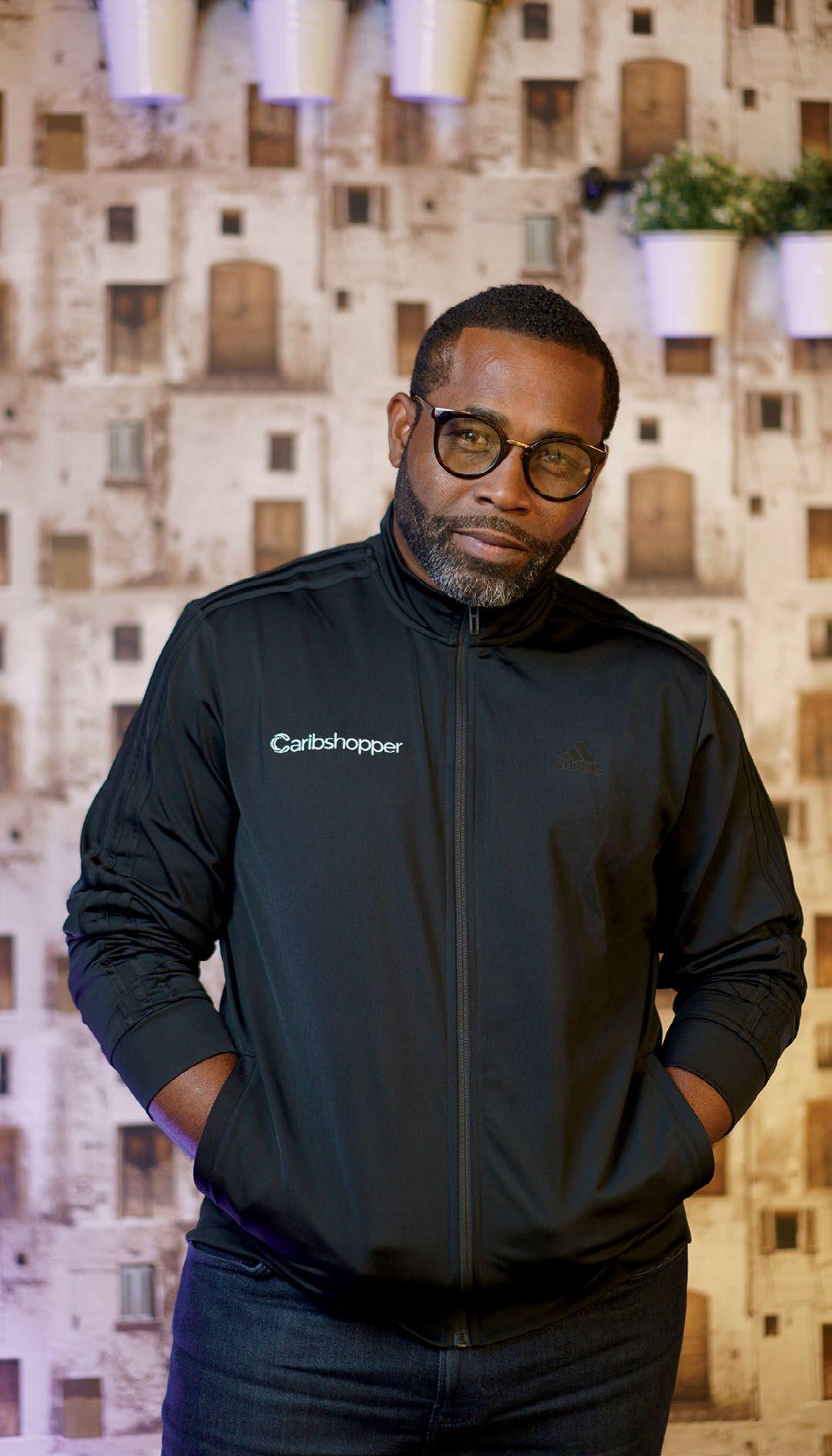
Three years ago, the brothers sold their firm and headed to Miami with a new idea. Like many immigrants from the Caribbean, they never lost their love of home and the products that defined their culture – products not always easy to find in the U.S. They were also aware of the massive transition to online shopping that was accelerated by the pandemic. Their solution: Caribshopper.com, a digital marketplace for all things Caribbean.
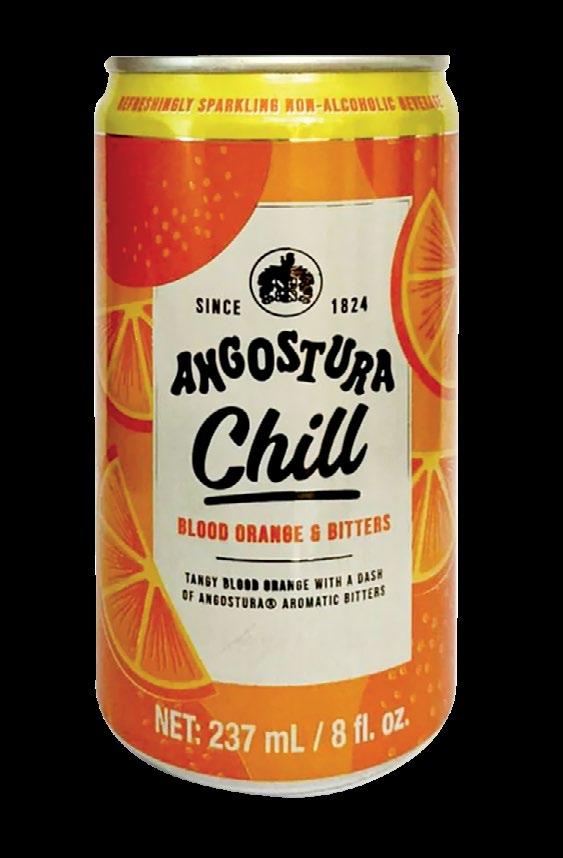
Launched in January 2021, Caribshopper is the first major online shopping destination focusing on the Caribbean. Headquartered in Miami, the digital platform brings a little piece of home to immigrants across the U.S. and Canada. Organized in the categories of Food & Drink, Beauty & Wellness, Women, Men, Home & Living, and Paper & Novelty, Caribshopper sells and ships Caribbean products and brands from 500 retailers in Jamaica, Trinidad & Tobago, and the U.S., with plans to expand. Want a bag of Paula’s Tamarind Candy? How about a bundle of Bertie’s Pepper Sauce? What about a pair of Jamaican Co Kai Leopard Sandals? It’s all here.
“I lived in New York, San Francisco, then Miami Beach. And it was hard to stay connected to our culture. We would always have to substitute what we’re used to,” says Preston. “One of the things [we] hated was buying an extra suitcase for when we traveled home. We would pack those suitcases with the products we loved to bring back. It happens to any immigrant.”
Part of the brothers’ inspiration came from their mother, who started a children’s clothing company in Jamaica that grew into her own boutique and a distribution partnership with Wisconsin-based OshKosh B’gosh. From that point of view, they began to think about doing something similar with small retailers in the Caribbean, expanding their customer base by taking them online. In a little over a year, their site has become the go-to source for thousands of Caribbean-born U.S. and Canadian residents longing for a nostalgic piece of home, while also introducing them to up-and-coming brands, some of which offer a modern twist on the traditional culture. “We wanted to have a meaningful business, not just one that makes money,” Preston says. “We did that already.”
Caribshopper has grown to 22 employees and more than 7,300
products on the site. Many of the small enterprises making these products need help, which the brothers provide – including product photography and optimization, product descriptions and details, and pricing strategies. More than half of their merchants have made at least six sales since joining the site, with shipping from Caribshopper warehouses.

For Lisa’s Preserves, a Trinidadian business, Caribshopper was “a dream come true.” The company makes sweet and savory Trinidadian snacks and is now able to share their products with the world.
“Caribshopper took on all the responsibilities,” says CEO Clyde Joseph. “We do not have the resources to ship our products to all these different places. I tried doing it on my own. It was a nightmare.” l
42 GLOBALMIAMIMAGAZINE.COM
I lived in New York, San Francisco, then Miami Beach. And it was hard to stay connected to our culture.
KADION PRESTON, CEO AND FOUNDER OF CARIBSHOPPER
ECOMMERCE
PHOTO BY RODOLFO BENITEZ
We Speak GLOBAL

Customized Commercial Real Estate Loan Solutions for Domestic and Non-Resident Clients



It‘s important that your business facilities address your needs—the same goes with your financing. At Sunstate Bank, our lending specialists are just as well versed in the local real estate market as they are in the unique circumstances of each of our business customers.
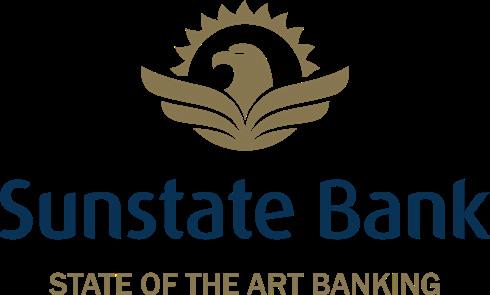
We support the real estate needs of domestic and foreign buyers, including purchases, rental income properties, business acquisition loans, and expansion loans. With flexible term options, we offer both fixed and adjustable interest rates*.
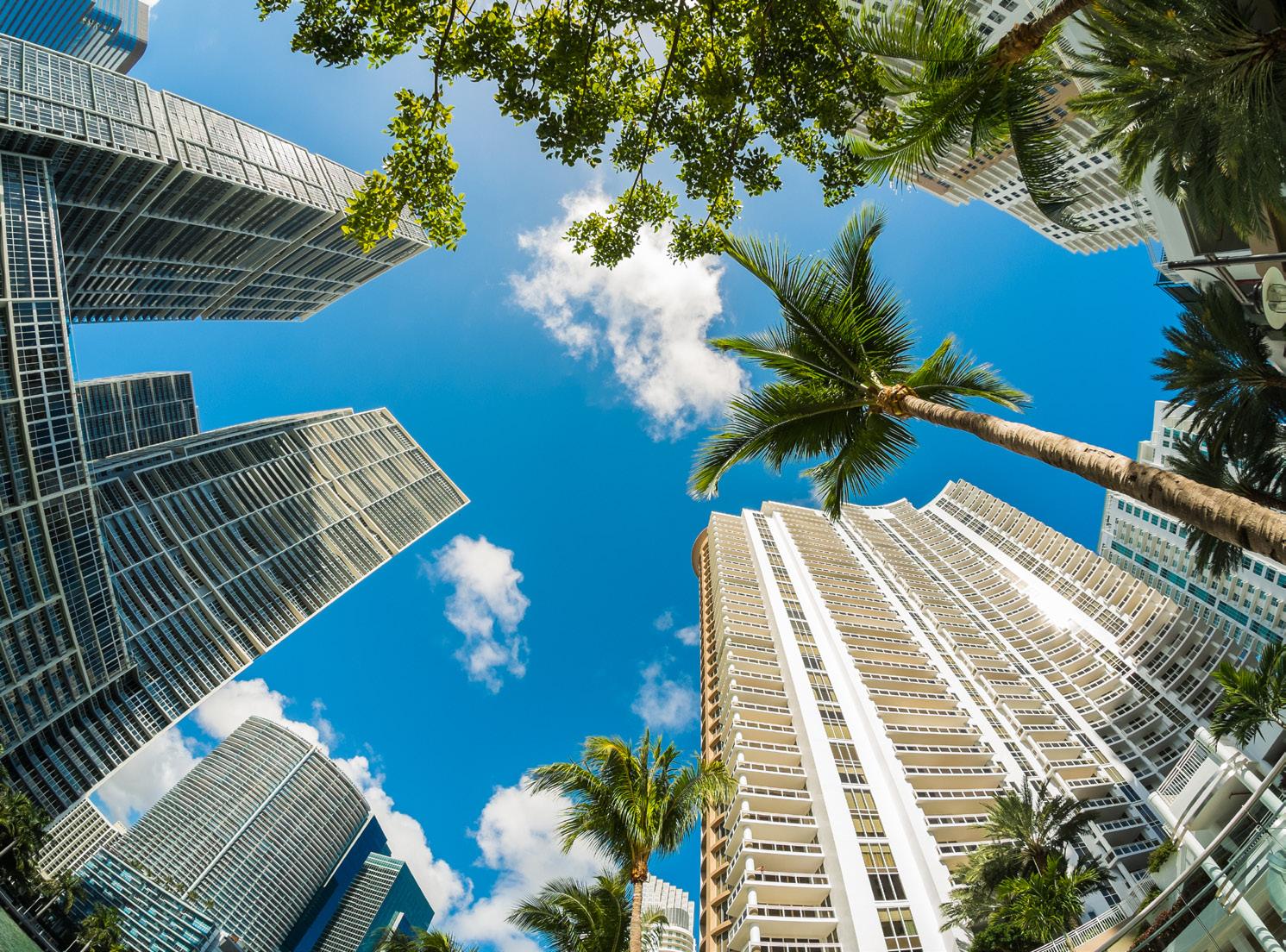
Please speak with a banker to discuss eligibility requirements.
*Terms for credit products are subject to final credit approval. Terms and conditions apply.

The Falls 14095 S. Dixie Hwy. Miami, FL 33176 305.256.0900
Gables 2901 S. LeJeune Rd. Coral Gables, FL 33134 305.567.0600
Miami
SW 8th St. West Miami, FL 33144
Follow Us: @sunstatebankfl @sunstatebank @sunstatebank
Coral
West
5722
305.263.7900
Bringing Cheese to the Americas
BY KYLIE WANG
THE CHALLENGES FACING HOLLAND’S BIGGEST DAIRY COOPERATIVE
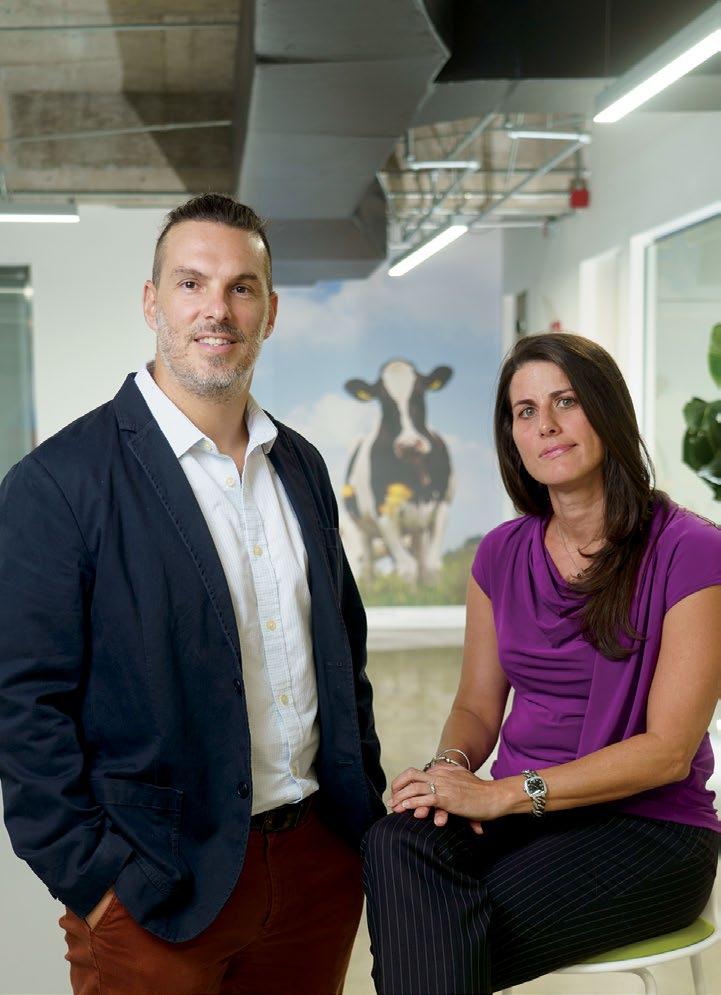
F or Dutch multinational FrieslandCampina, it all begins with milk. It might seem odd for a foreign corporation focused on dairy farming to keep an office in Miami, but that’s because the dairy giant is taking on a huge endeavor – selling and distributing into Latin America.
FrieslandCampina does things differently. It’s owned by 15,703 dairy farmer members across the Netherlands, Belgium, and Germany, all of whom can vote on major decisions like milk price regulation or changes to the quality conditions involved in processing and manufacturing the products –and all of whom receive direct payouts from the company’s profits.
The cooperative was established in 1871, when farmers’ incomes were low and poverty was common. That changed when 20 farmers in North Holland joined forces to combine resources and stabilize market prices. 150 years later, FrieslandCampina is one of the world’s largest dairy companies with branch offices in 38 countries and almost 24,000 employees across them, along with a comfortable $12 billion in revenue this year from their 39 brands. They aren’t just part of the supply chain. They own it.

In Miami, at the Latin American headquarters, there are only five employees in the office. Their job is to oversee 40 of the 100 or so countries that import Friesland-
Campina products, including parts of the Caribbean, Australia, New Zealand, and Southeast Asia. They opened the office in March of 2020, just before the pandemic, which is partly why expansion hasn’t taken off just yet. The other issue? Inflation.
“Everybody believed that the COVID situation was the most difficult time,” says Ithak Gonzalez Krotzch, the senior sales manager for the Caribbean and Central America. “But the reality is, it’s after COVID. The price increases that we’re facing in the market are a very big challenge.” Indeed, the cost to produce dairy products by FrieslandCampina’s member farmers has increased by 37.8 percent in the last year.
Perhaps even more challenging for the Latin American HQ is the number of exchange rates they’re dealing with. “Specifically in this region, we have a lot of currencies, and there’s a lot of currency impact,” says commercial controller Melanie Poelma. “They fluctuate quite a lot in this region, which makes it tough.”
Despite all of this, the dairy giant’s revenue and profits have improved in the first half of 2022, with revenue increasing by about a billion dollars (19.4 percent) since the first half of 2021, and net profits increasing from $77 million to $139 million (62 percent).
The margins for the second half of
ITHAK GONZALEZ KROTZCH, SHOWN ABOVE WITH MELANIE POELMA. FRIESLANDCAMPINA, LATIN AMERICA
2022 will be determined by factors beyond the control of the cooperative, like the war in Ukraine, inflation, and the Dutch Cabinet’s plans to drastically reduce the emission of nitrogen oxides. The latter could have a huge effect on farmers in the Netherlands, on everything from the use of farm machinery to the cost of feed for their dairy herds –especially since the company is committed to what they have dubbed “climate-neutral dairy.” As it is, they currently deliver organic milk for just a fraction more than non-organic (65.5 euros per 100 kilos vs. 62.25 euros), and who wouldn’t want to pay more for Royal Hollandia brand cheese? l
44 GLOBALMIAMIMAGAZINE.COM
Everybody believed that the COVID situation was the most difficult time. But the reality is, it’s after COVID. The price increases that we’re facing in the market are a very big challenge.
TRADE
R e a c
h i n g L a t i n A m e r i c a a n d B e y o n d
G r e e n s p o o n M a r d e r i s a f u l l - s e r v i c e , n a t i o n a l l a w f i r m w i t h o f f i c e s i n m a j o r m a r k e t s a c r o s s t h e U S a n d r o o t s i n S o u t h F l o r i d a f o r m o r e t h a n 4 0 y e a r s . W i t h e x t e n s i v e c r o s s - b o r d e r t r a n s a c t i o n a l e x p e r i e n c e , G r e e n s p o o n M a r d e r a t t r a c t s b u s i n e s s e s a n d e x e c u t i v e s – b o t h i n b o u n d t o a n d o u t b o u n d f r o m L a t i n A m e r i c a – t h a t w a n t e x p e r i e n c e d , c r e a t i v e a n d c o s t - e f f e c t i v e c o u n s e l .
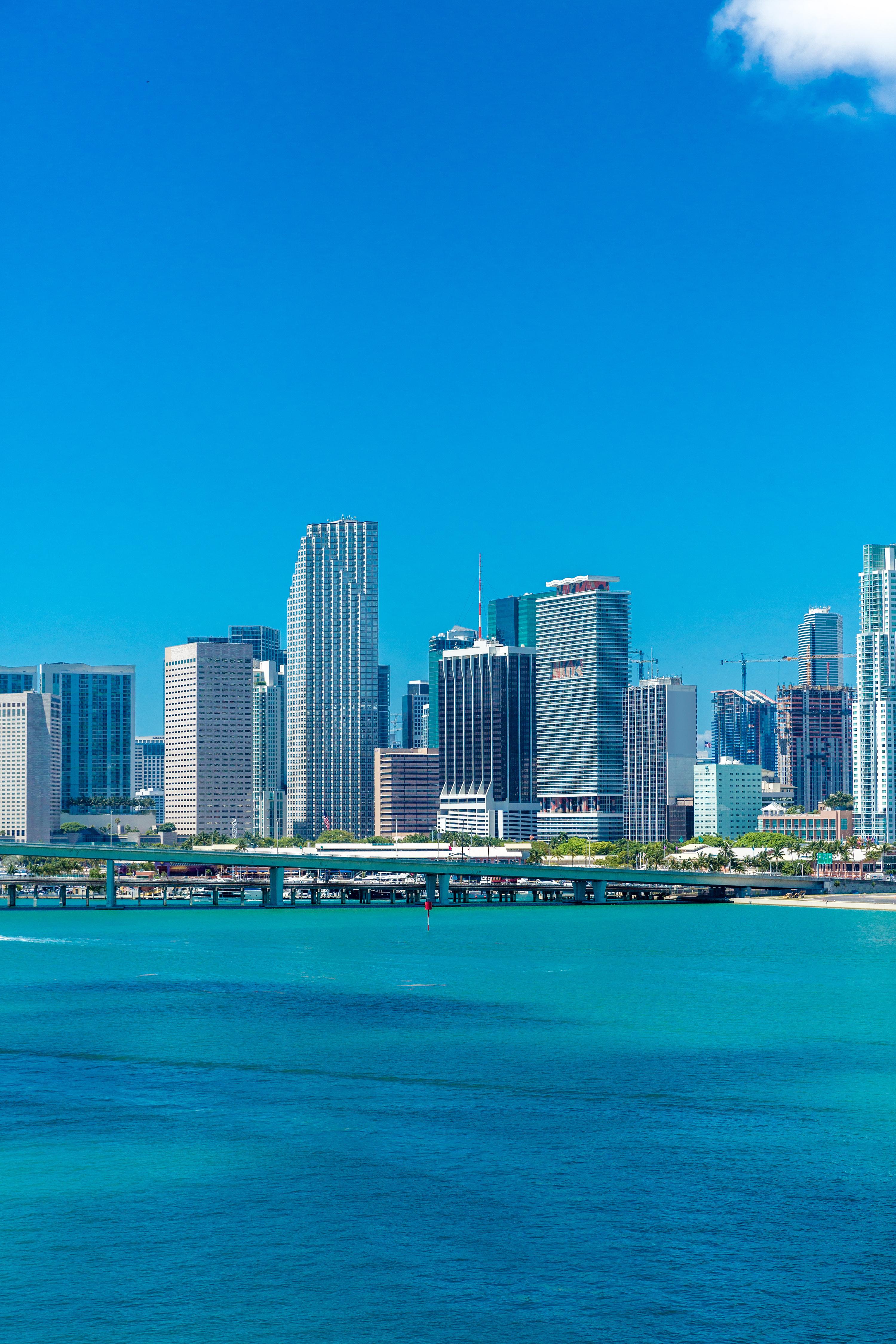

5 0 0 a n d B e y o n d A m e r i c a n L a w y e r
2 0 0 F u l l - S e r v i c e F i r m M o r e t h a n
2 4 0 A t t o r n e y s
0 w w w . g m l a w . c o m
1
1 1
A t l a n t a B o c a R a t o n C h i c a g o D e n v e r F t L a u d e r d a l e L a s V e g a s L o s A n g e l e s M i a m i N a p l e s N e w Y o r k N e w a r k O r l a n d o S c o t t s d a l e T a l l a h a s s e e T a m p a W e s t P a l m B e a c h S e r v i n g F o r t u n e
8 8 8 . 4 9
.
2
Blink Charging
EXPANDING ABROAD THROUGH PARTNERSHIPS, PURCHASES
BY DOREEN HEMLOCK
Blink Charging shines as one of the world’s leading electric vehicle charging companies, with operations in 19 countries and plans to build a 500-worker factory and expand further internationally. But ask CEO Michael Farkas why he started the venture in Miami Beach more than a decade ago, and he won’t talk about environmentalism. Instead, he humbly tells a story of prayer.
A long-time financier, Farkas was going through a tough time in 2009: financial markets were volatile, a business deal had collapsed, and he was in the middle of a divorce. Farkas was getting ready to lay off two of his final employees but shuddered at the thought. Before entering the office in his garage, he prayed in full surrender.
“I asked God for a new direction,” says Farkas. “Then, I walked into my office, sat down, and it just so happened that on my desk were a couple of car magazines. I started reading them and read about the electrification of the automobile program.” Farkas realized that governments were investing millions of dollars in vehicles and batteries, but not a cent in fueling them. He sensed “an amazing opportunity.”
Within a few hours of researching, he had a new direction: to enter the EVcharging business. The answer to his prayer had come remarkably fast, says a humbled Farkas.
DISMISSED AT FIRST; NOW, AN ADMIRED PIONEER
Back then, many people thought Farkas was crazy to pursue EV charging. For starters, he didn’t even have an EV-charging unit to offer. He began working with a team to develop one, but stopped when Toyota launched a prototype, figuring he’d be swamped by the Japanese car giant. When Toyota never followed through on production, he then teamed with a California group designing their first charger.
Soon, he started signing contracts with cities and other locales to install and operate EV-charging units. By 2018, the year Blink’s stock started trading on the Nasdaq exchange, he began to expand globally. In June of that year, he signed a deal with Israel’s Yacobi Brothers, a leader in smart-city construction. It agreed to integrate Blink technology into light poles with “flexible
charging” for smart-city infrastructure.
The following year, Blink entered Europe through a joint venture with Athens-based Eunice Energy to deploy EV charging stations in Greece. In May 2021, it bought EV operator Blue Corner NV of Antwerp, Belgium, expanding its footprint on the continent.
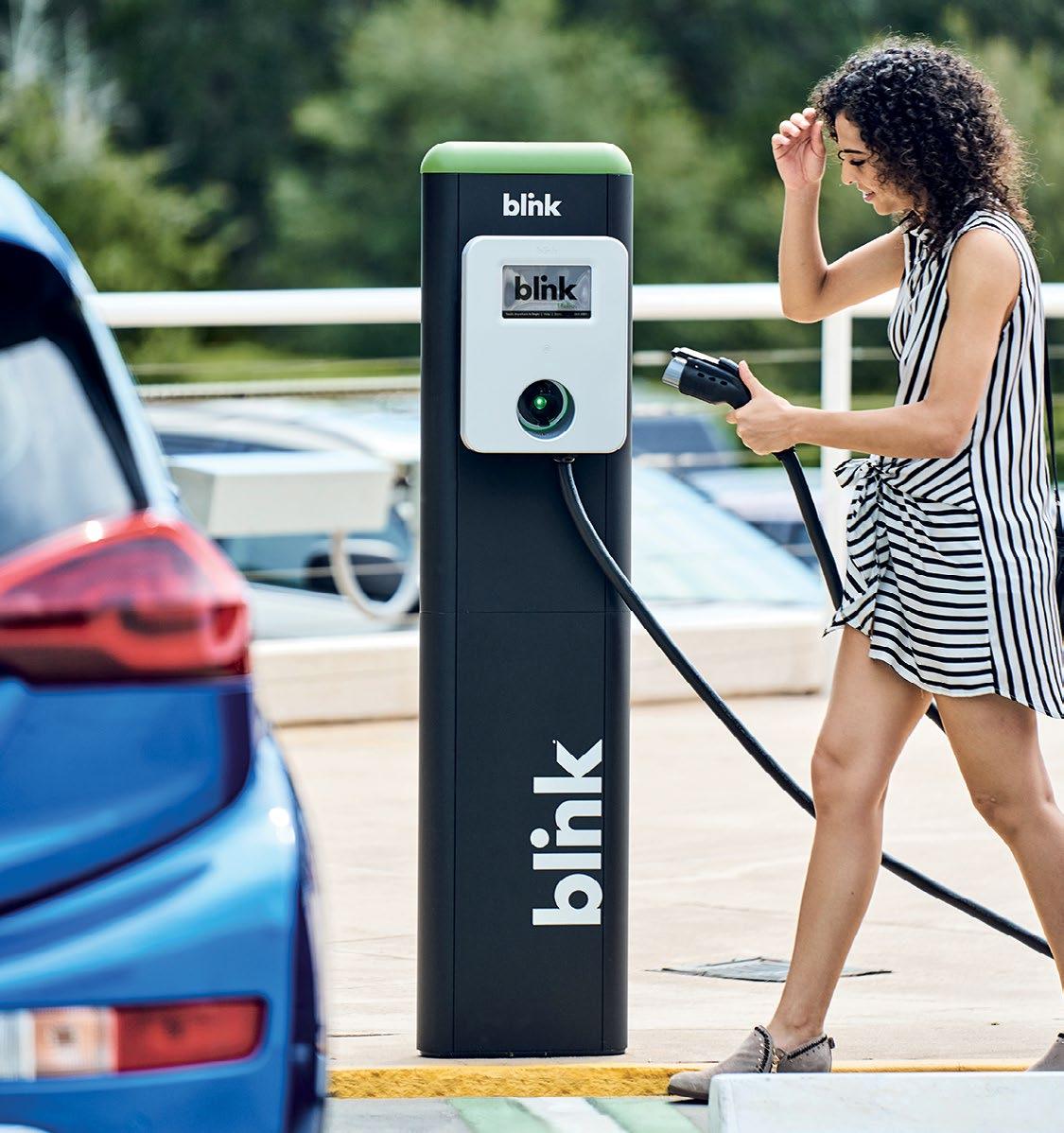
Today, Blink has deployed more than 51,000 charging ports worldwide from the U.S. and Europe to Asia and Latin America. It just opened two offices in India to serve as operations hubs for the Middle East and Asia-Pacific regions, Farkas says. It is also vertically integrated: researching, designing, manufacturing, and selling EV charging units in parking garages, hotels, schools, and other public locations. It operates chargers for others as well. “There’s nobody I know

46 GLOBALMIAMIMAGAZINE.COM
It just so happened that on my desk were a couple of car magazines. I started reading them and read about the electrification of the automobile program...
ENERGY
MICHAEL FARKAS, TOP LEFT, CEO, BLINK CHARGING
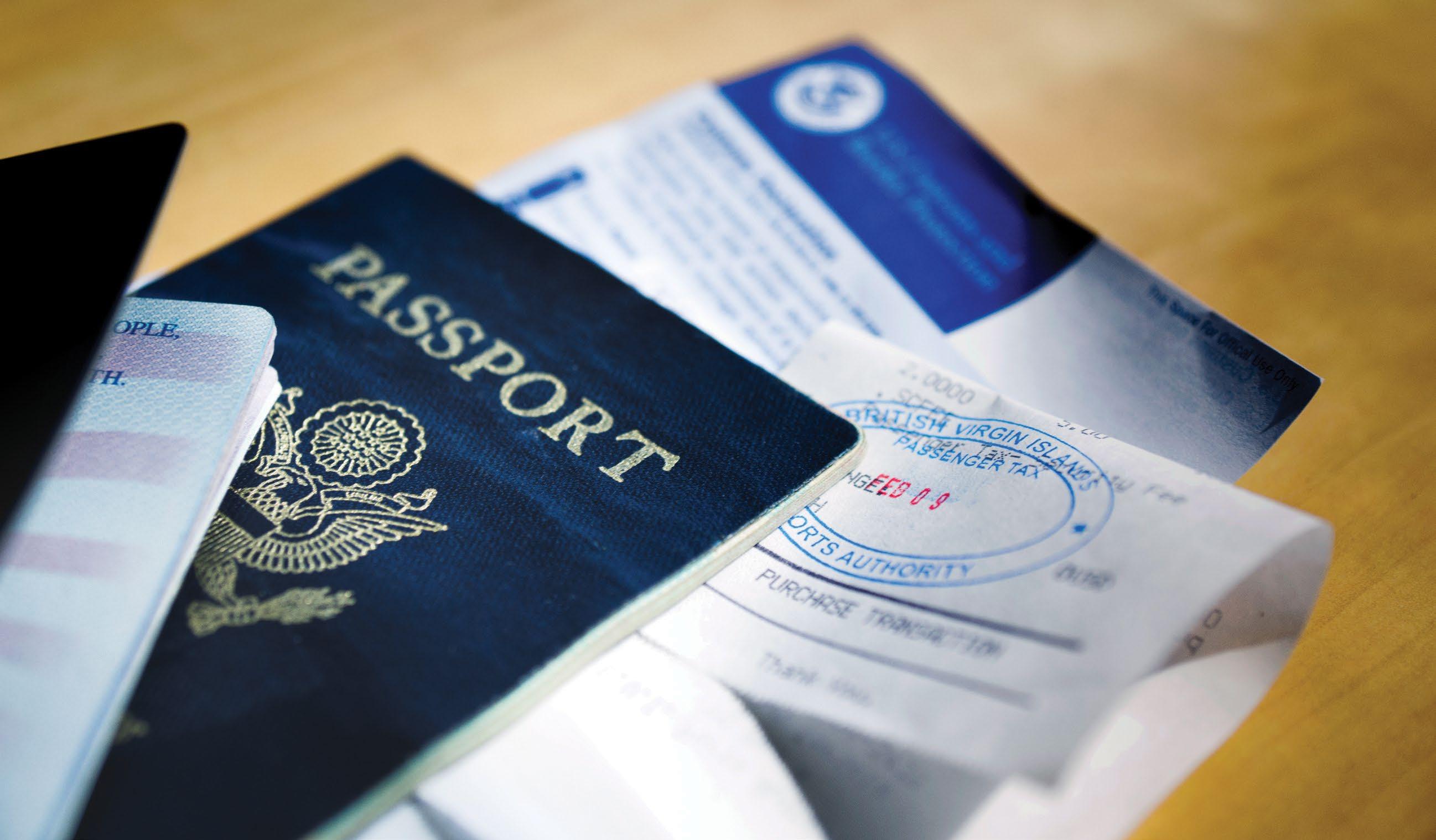




iflyMIA.com BREEZE THRU CUSTOMS MIA Airport App • Fast-Track Customs • Flight Updates • Shopping & Dining • English / Spanish • Free DOWNLOAD TODAY Search for MIA Airport Official
of that’s an owner-operator on a global level like we are,” says Farkas.
Since it began reporting its financials as a Nasdaq-listed company, revenue has soared, nearly doubling to $11.5 million in the second quarter this year from a year earlier. But profits remain elusive for now, because Farkas is investing in the purchase of other companies to ensure long-term growth.
In April, Blink spent roughly $23 million to purchase Electric Blue in the United Kingdom, adding more than 1,000 charging units to its European network. And in June, it bought Maryland-based charging-unit producer and operator SemaConnect for about $200 million, adding 13,000 charging units to its U.S. network, and, most importantly, bringing production in-house to ensure supply in the future.
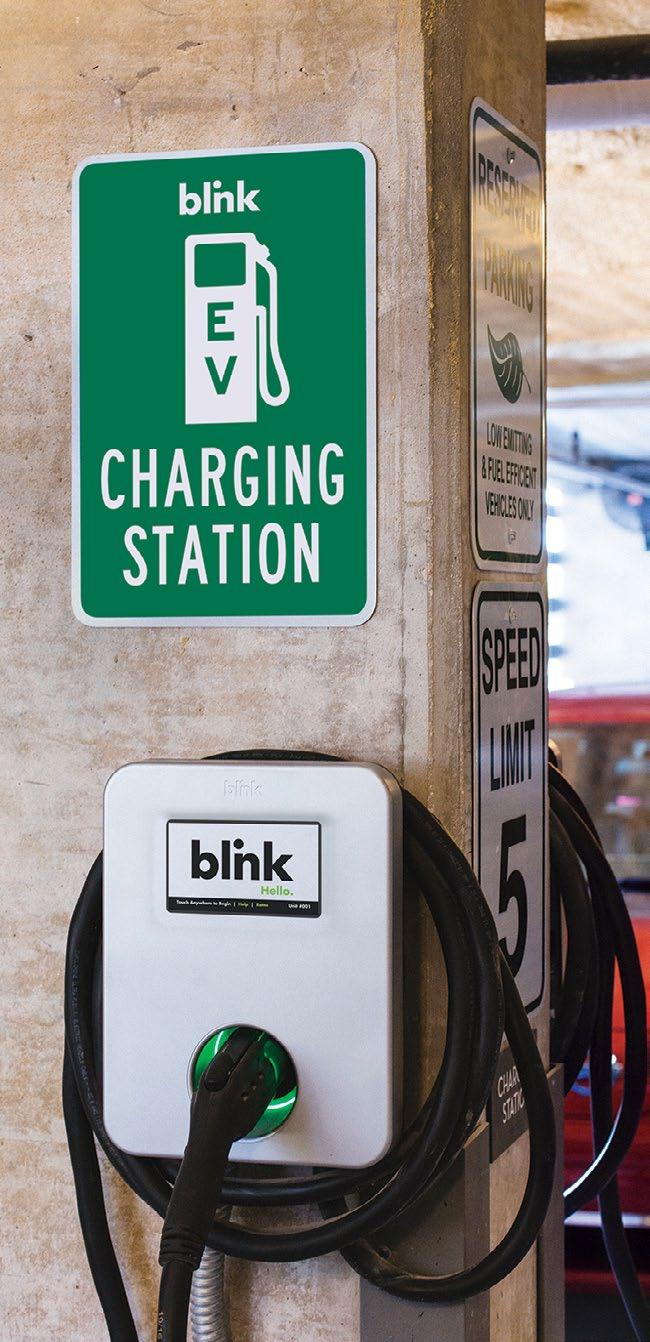
The acquisitions have boosted Blink’s employee count to some 520 people, with about 40 working at its Lincoln Road headquarters on Miami Beach, says Farkas.
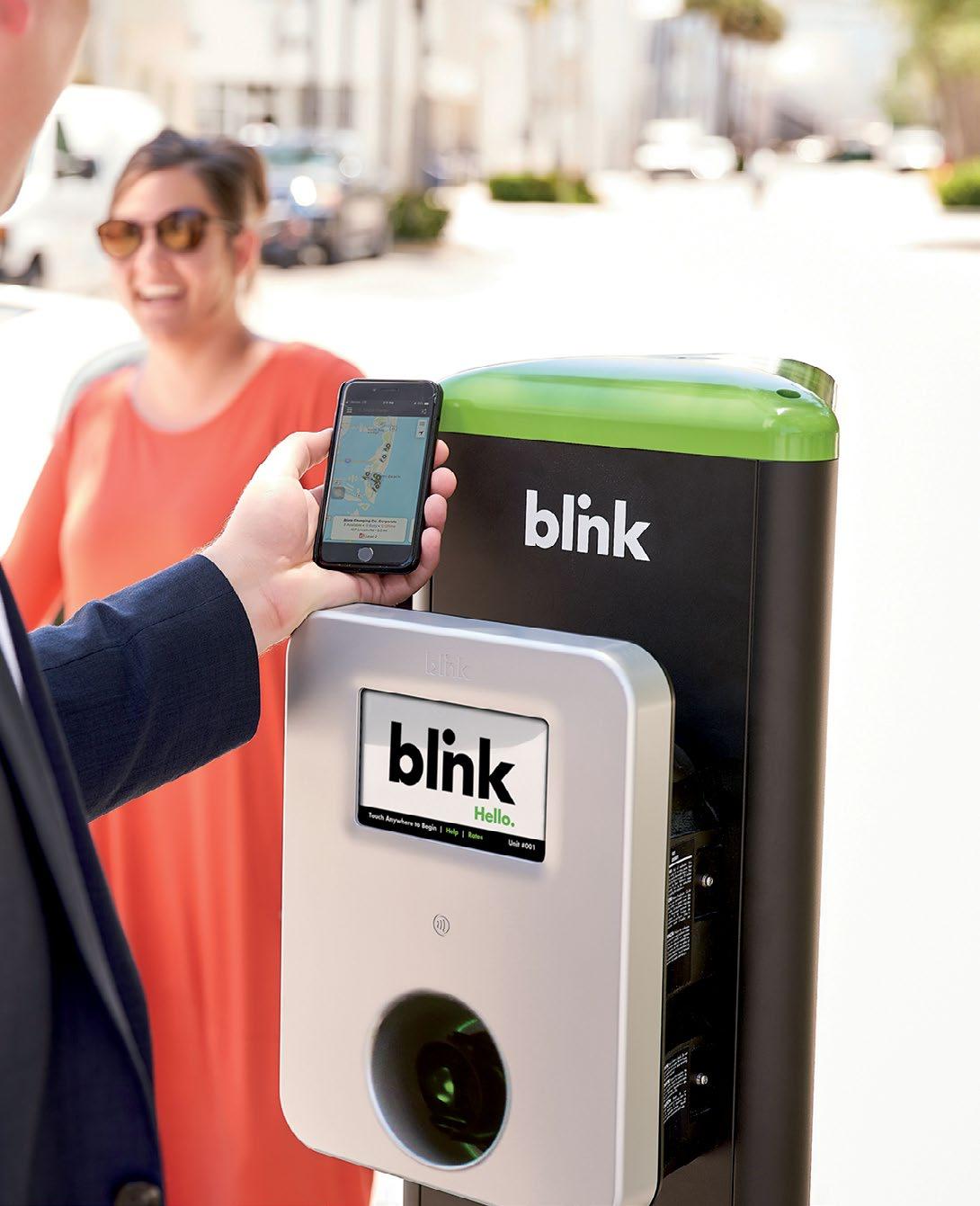
CHINA AT THE FOREFRONT OF ELECTRIC VEHICLES
What’s stoking Blink’s business is a sudden boom in electric vehicle sales. In 2012, just 120,000 hybrid and plug-in EVs were sold worldwide. Last year, that same number sold every week. Indeed, the total number of EVs sold last year doubled from the previous year to reach 6.6 million, says the International Energy Agency, an inter-governmental group based in Paris.
The U.S. lags in those sales. China accounted for half the EVs sold last year: 3.3 million. The U.S. sold 630,000, double the number of a year earlier, but still a minimal portion of the global market. By comparison, in mid-2022, EVs accounted for 31 percent of new vehicle sales in China, versus five percent in the U.S., notes Farkas.

EV sales are soaring worldwide partly because of support from governments looking to cut carbon emissions. Government subsidies and incentives for EVs nearly doubled last year to $30 billion worldwide, says the IEA.
The bottleneck to EV growth is Blink’s sweet spot: not enough charging stations. “Current momentum in EV sales can only be sustained if ever larger shares of the population have access to convenient and affordable charging infrastructure, both publicly available and private chargers at residences and workplaces,” says the IEA.
Demand for charging units is staggering. Last year, the world added some 500,000 public EV chargers, three times the
total installed capacity in 2017, says IEA. Farkas sees so much potential in Europe and beyond that he sees Blink becoming bigger overseas than in the U.S. Already, Blink’s app handles multiple languages and currencies to ease payments for drivers, some of whom cross borders.
Still, China is not in Blink’s immediate growth plans. “If we could have the right partnership and right relationship, we’d enter that marketplace,” says Farkas. “You really need to have local partners there.”
Within the U.S., the EV industry is getting a big boost from new legislation
that provides extra incentives, including tax-breaks on EV purchases. Farkas is keen to build a 500-worker factory to make more charging units. He’s mulling sites in Florida, Texas, Tennessee, and South Carolina.
“I’d love to put the factory in Florida, if it can be competitive,” said the 31-year resident of Miami Beach.
When he prayed for a new direction in 2009, Farkas never imagined the EV market would be as broad as it is today, with drones, trucks, trains, boats, and even planes going electric. “The future of transportation is using electricity,” he says. l
48 GLOBALMIAMIMAGAZINE.COM
ABOVE: A BLINK CUSTOMER USING AN APP TO FIND A CHARGER ON THE STREET. LEFT: BLINK CHARGING STATION IN A MIXED-USE BUILDING IN WYNWOOD, MIAMI.
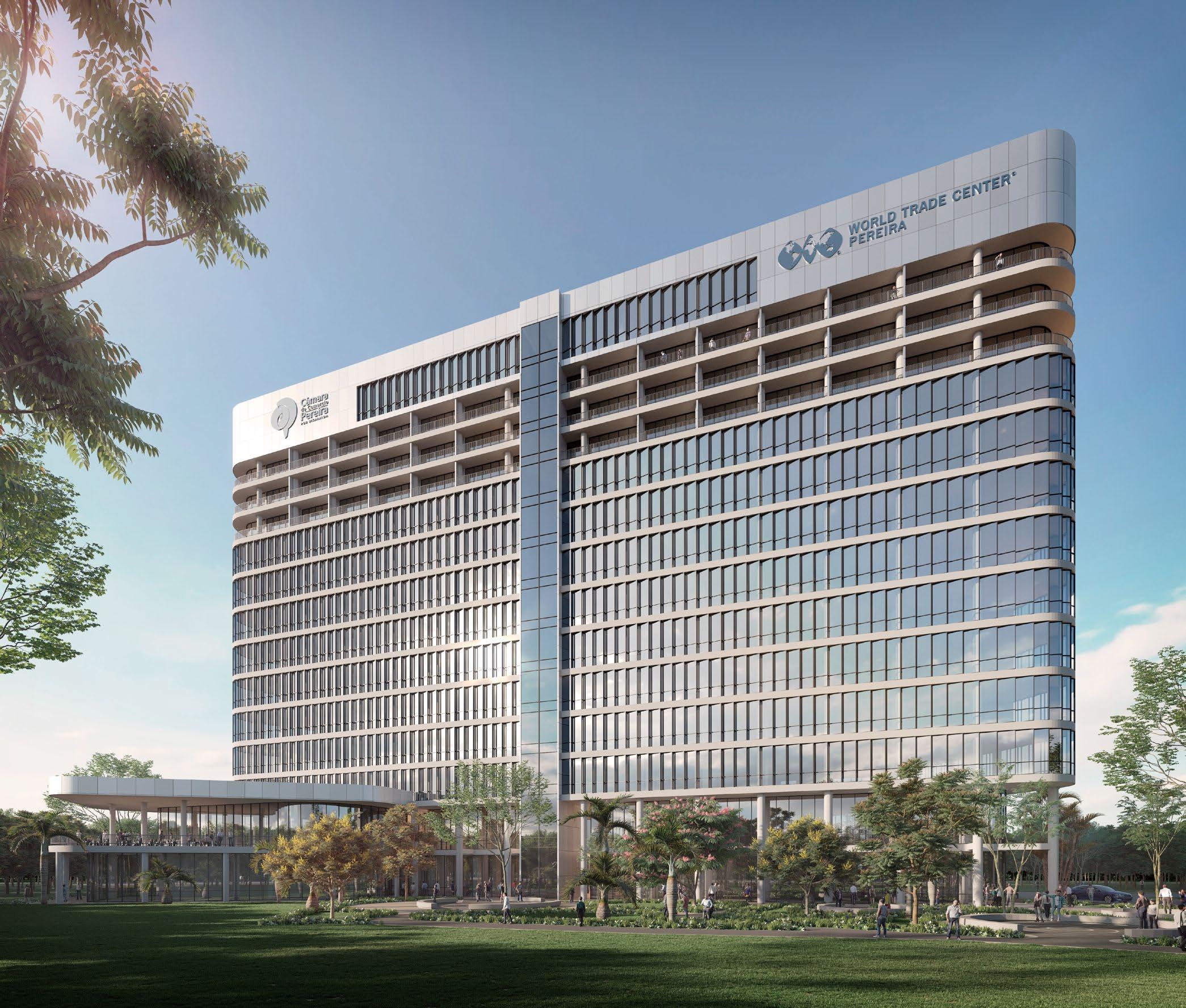



Building a Cooler Backbone
HOW MICHAEL ROARK CONSTRUCTED GRANADA’S IT SERVER FARM IN SOUTH FLORIDA
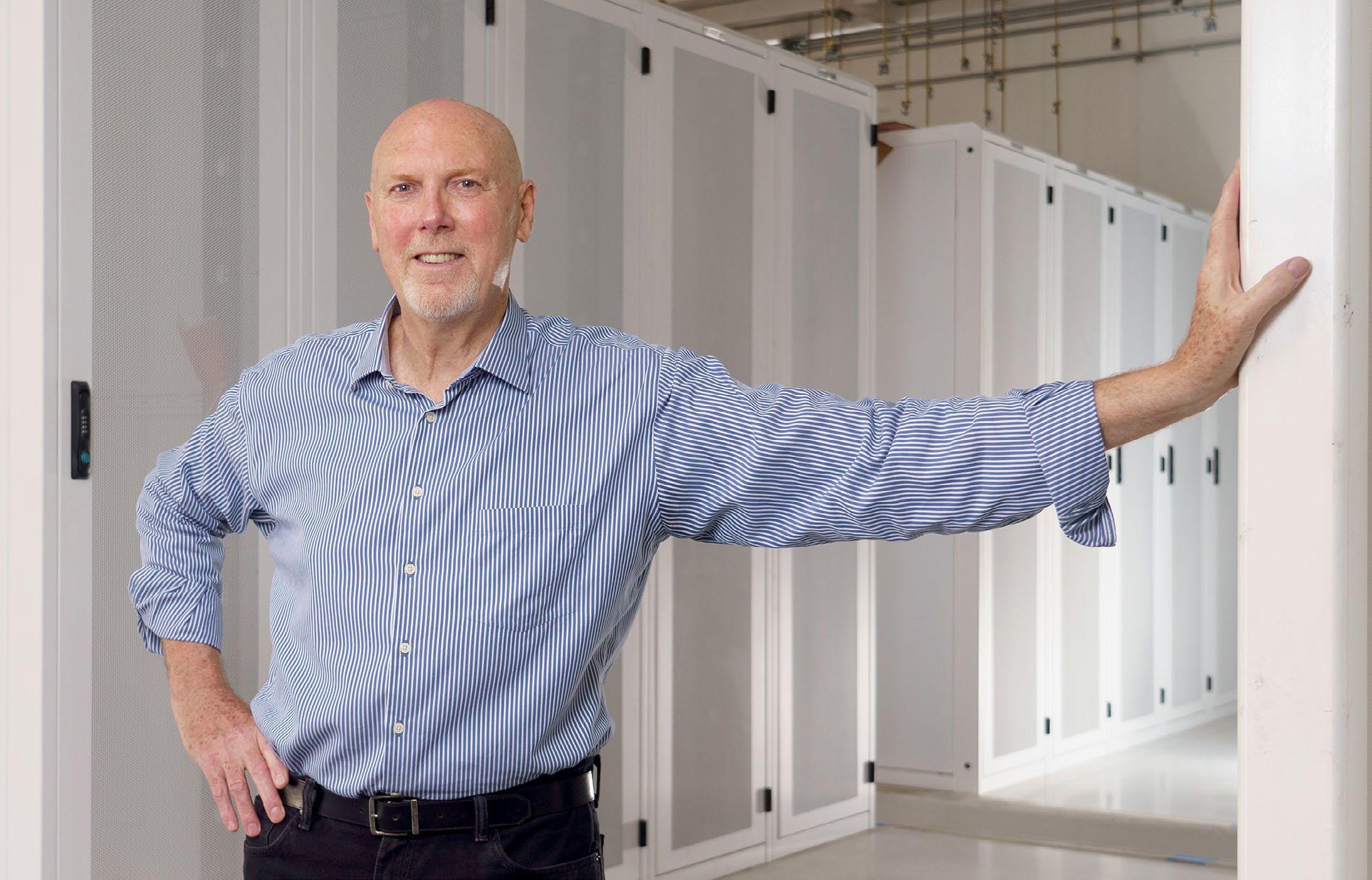 BY KATELIN STECZ
BY KATELIN STECZ
Contrary to its name, the cloud isn’t some magical place in the sky where every picture of your family is stored. It’s a network of servers very much located on planet Earth, and those metal boxes of integrated circuits and microchips usually reside in inconspicuous, modern-looking buildings called data centers.
Data centers are famously, or rather infamously, huge energy guzzlers. According to the U.S. Department of Energy, data centers account for about two percent of the country’s total electricity use, much of it consumed to keep the centers cool. That’s about as much as the total electrical consumption of South Dakota, Montana, Wyoming, and Idaho combined.
With increasing demand for more data, more data centers are needed. The problem is how to meet that demand with less impact on the planet’s carbon output.
Michael Roark, CEO and founder of iM Data Centers, is working on the answer. Roark first dipped his toes in the data center industry with his construction company, M K Roark Inc., back in
the 1990s. After two decades of constructing and eventually owning and operating colocation data centers, Roark realized a more cost-effective and sustainable way to build and operate them.
In 2014, Roark founded iM Data Centers. The idea was to use an assembly line, factory-based, prefabricated approach. This allowed iM to create much smaller, energy efficient data center “units.” Instead of large sprawling data centers that waste energy and cost more to cool, iM constructed compact, modular data centers, customizable for small users like hospitals, universities, or corporations.
“These are both greener and cheaper than traditional ones,” says Roark, a longtime naturalist, avid rock climber, and coauthor of “Greener Data: Actionable Insights from Industry Leaders.” By building small, modular units, “you can limit size to need, so you can control energy use,” he says. “This is especially true compared to retrofitting a building, but even compared with new ones from the ground up.” The welded steel units are also less expensive to install than building from scratch on-site and contain their own cooling and energy backup systems; iM’s inventive overhead “chill beams” save energy by directing cool air to servers based on their temperature.
50 GLOBALMIAMIMAGAZINE.COM ENTREPRENEURS
These are both greener and cheaper than traditional ones. By building small, modular units, you can limit size to need, so you can control energy use.
MICHAEL ROARK, CEO AND FOUNDER
OF
IM DATA CENTERS, ON THE DATA “UNITS”
PHOTO BY RODOLFO BENITEZ
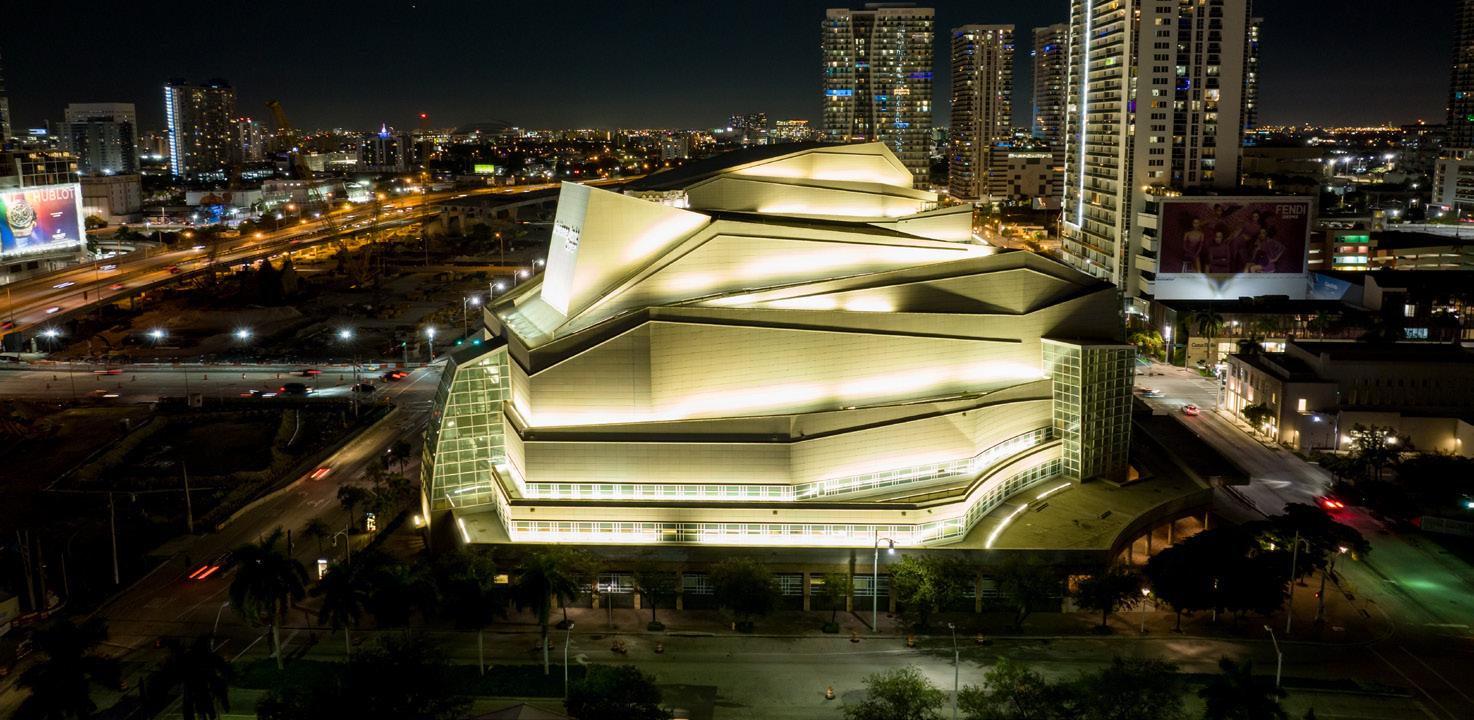
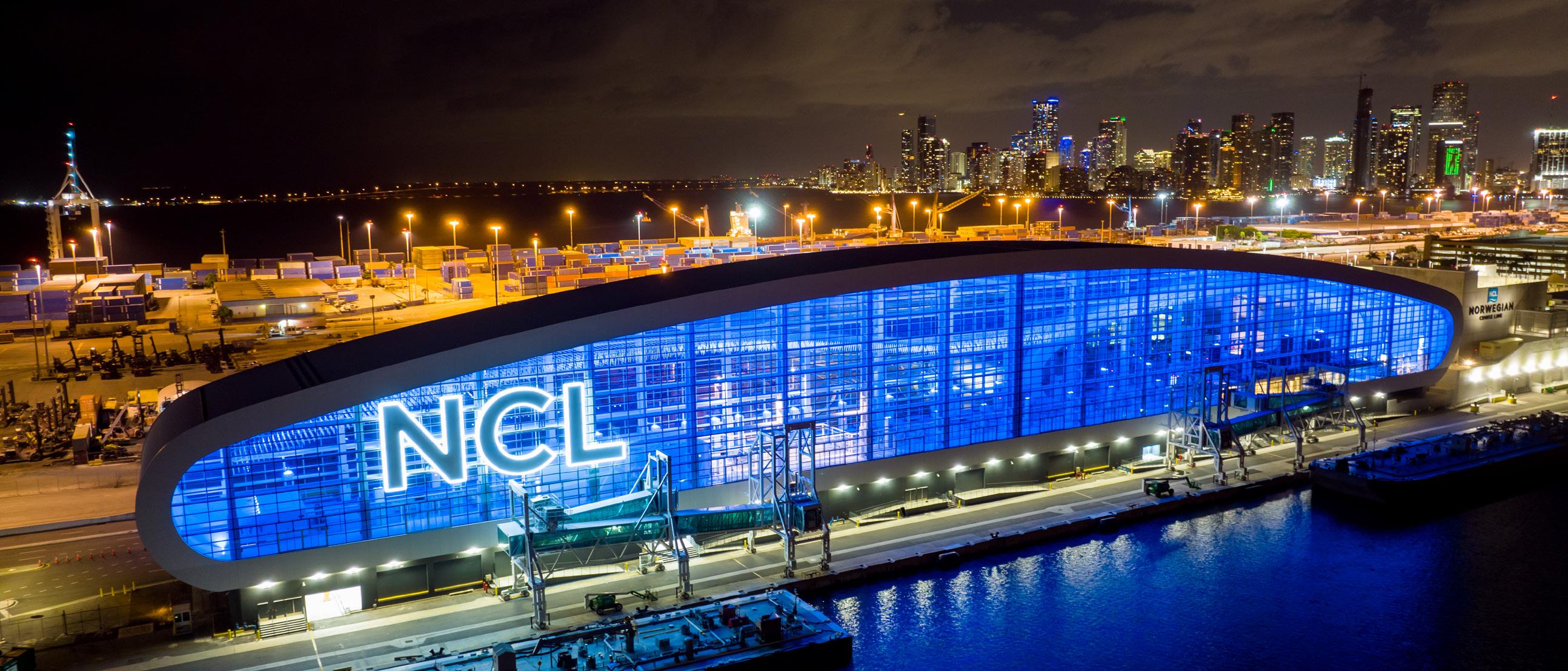
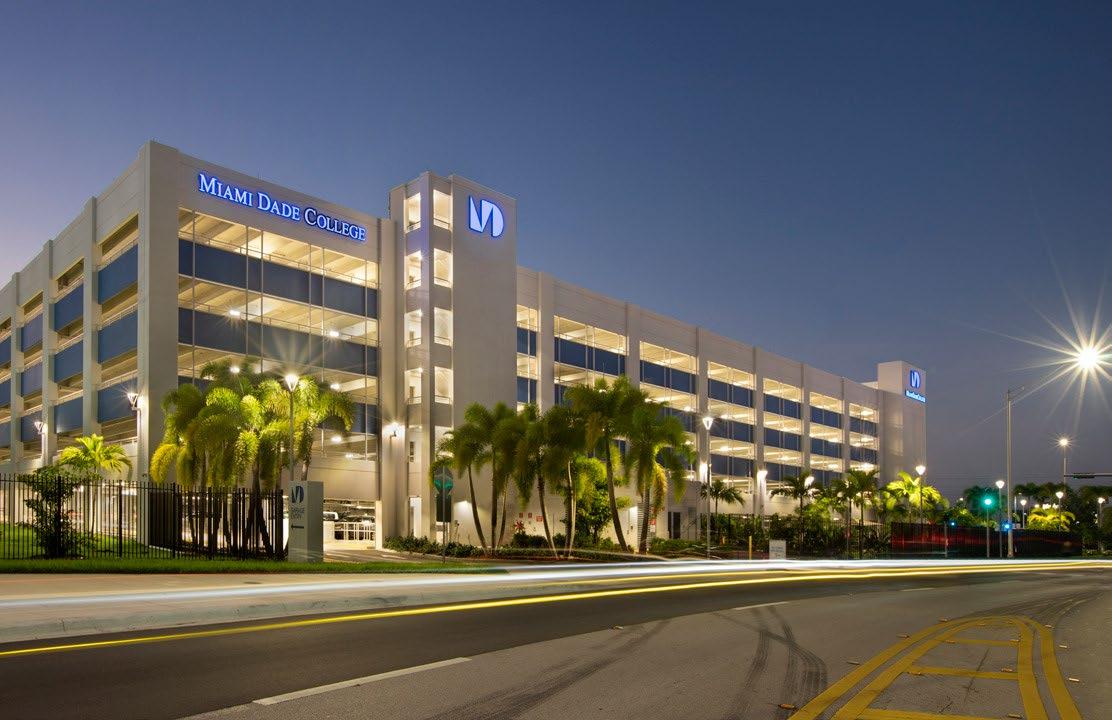

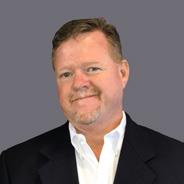

SCAN HERE 3050 Biscayne Blvd. Suite 602, Miami, FL 33137 | 786.319.9863 | www.haskell.com NCL Cruise Terminal B | Miami, FL Adrienne Arsht Center for the Performing Arts | Miami, FL Miami Dade College Garage | Miami, FL f Design-Build f Architecture f Consulting f Engineering Construction f Steel Fabrication f Interior Design f Master Planning f Selected Self-Performance SERVICES We Create Things That Matter in Miami Haskell is a global design-builder delivering integrated AEC solutions that ensure certainty of outcome. Considering a new project in Miami? Let’s Talk! Ed Curry Maritime Division Leader 321.288.9942 ed.curry@haskell.com Ken Boeser Muni-Ed Market Leader 904.357.4250 kenneth.boeser@haskell.com
The standard size for an iM single module unit is 50’x12’x12’ (600-square-feet); they are typically delivered in two pieces, each about the size of the standard TEU container that is stacked on cargo ships or put on flatbed trucks or rail cars. Customers can combine as many modules as needed to fulfill their needs.
That customization and low-energy use is what sold the governments of Grenada, St. Lucia, and St. Vincent on Roark’s units, which are also built to withstand category-5 hurricanes.
In 2021, iM built a data center for joint use by the three countries, a customized 48’x24’x12’ data center for installation on a ridge line outside Grenada’s capital, St. George’s. Manufactured in the iM plant northwest of Miami (the firm is headquartered in Ft. Lauderdale) and delivered by ship via Port Everglades, the data center had to be divided into four segments due to the steep hairpin turns on the road from the Port of Grenada to the site.
The new enterprise-class Edge data center is now part of the Caribbean Regional Communications Infrastructure Program (CARCIP), undertaken by Digicel Group and supported by the World Bank to expand broadband and backbone network infrastructure across the region. The facility is designed to serve regional governments with the idea of migrating all their IT services there over time, as well as to provide colocation to serve local businesses with lower latency times so they no longer have to shuttle data over a series of subsea cables.
Despite the onset of COVID while the modular units were being shipped to Grenada, the required site improvements were completed within a two-month period in preparation for their arrival, including diverse fiber backbone builds, utility power connections, and flat slabs for the data center and generators. Once iM’s crew was on the island, the entire installation and facility turn-up was completed in 18 days. Excluding constraints placed on the process
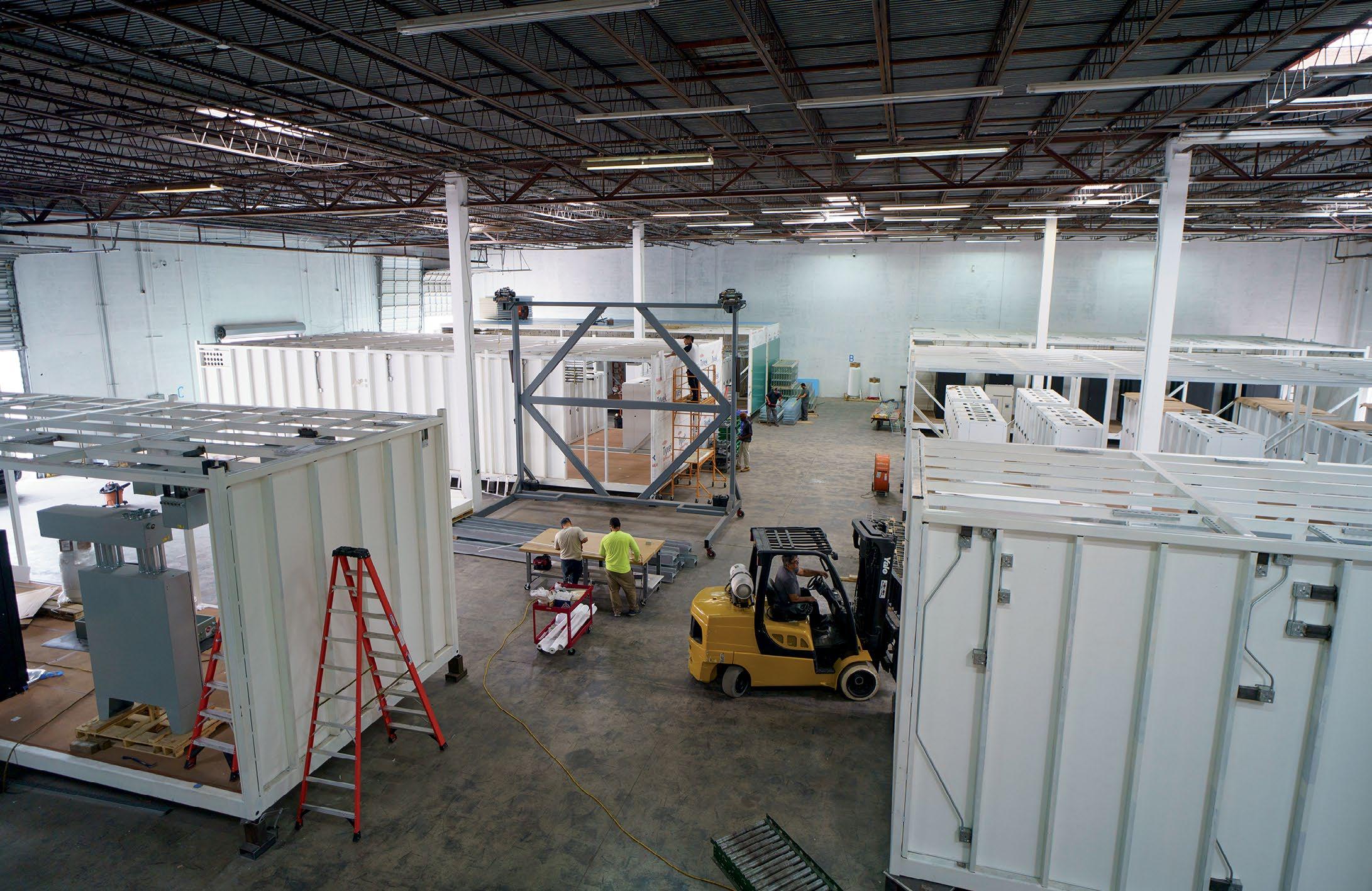
The standard size for an iM single module unit is 50’x12’x12’ (600-square-feet); they are typically delivered in two pieces, each about the size of the standard TEU container that is stacked on cargo ships or put on flatbed trucks.
by the COVID-19 crisis, the timeline from contract to data center commissioning was less than four months.
“There is an exponentially increasing need for data centers because there is an exponentially increasing production of data,” says Roark. “We have to keep up with digital infrastructures, especially in remote areas.” Roark also believes that climate change is one of the most pressing issues the world faces, and that industry must reduce its carbon footprint. So, in creating iM, Roark sought out an environmentally conscious capital partner. He found one in Galway Sustainable Capital, which only funds companies focused on ESG (Environmental, Social, and Governance) and carbon-reduction initiatives.
Furthering its climate-conscious mission, iM also provides free website hosting for nonprofit organizations involved in environmental sustainability, and carves out 5 percent of its corporate profit to invest in sustainability initiatives. The firm recently joined the Infrastructure Masons Climate Accord (ICA), a global nonprofit led by industry giants dedicated to reducing industry-wide carbon emissions.
“When you’re building something on-site, even for a 10,000-square-foot data center, you’re easily producing 150 tons of embodied carbon,” says Tom Elowson, who works in iM’s data center creation and acquisition division. “When we manufacture one, it’s much less.” l
52 GLOBALMIAMIMAGAZINE.COM
PHOTO BY RODOLFO BENITEZ
Innovative recruiting solutions for your business.
TalentoHCM History
TalentoHCM is a female, Hispanic owned human capital management firm based out of Miami, FL. Recently, Talento has been highlighted as an SIA Diversity Staffing Firm and one of the fastest-growing companies of 2022 by the South Florida Business Journal.

Since TalentoHCM was founded in 2017, the firm has worked diligently with global Fortune 500 companies to scale and build for the future. In addition, Talento has recently acquired, Los Angeles executive search firm, De Forest Search in an effort to broaden services and provide more resources for our customers.
Recruiting Solutions
Talento Recruiting provides customized talent acquisition services, aligning organizations with the right people through a revolutionary client experience model.
Our approach leverages innovative technology and a proven methodology, teaching companies how to evolve from traditional recruiting to strategic talent acquisition. This includes expanding capabilities to utilize business intelligence and consulting, in turn reducing costs and time to fill positions while increasing the quality of hire.

Capitalize on the human side of business. | TalentoHCM.com | 424-305-6969 | @talentohcm | jgaitan@talentohcm.com
A Special Focus on Medicinal Perishables
HOW PHARMACEUTICALS HELPED SAVE MIAMI INTERNATIONAL AIRPORT
BY DOREEN HEMLOCK
As VP of Global Operations at Amerijet International, Chris Mazzeo oversees the company’s activities at Miami International Airport (MIA). The all-cargo airline, based in Miami, flies some 20 aircraft, and employs more than 1,000 people worldwide. What gives Amerijet an edge in shipping by air is their extensive refrigerated warehouse space at MIA, which means they can ship pharmaceutical products.
When COVID-19 hit in early 2020 and passenger flights halted, revenues took a dive at MIA. What kept the airport from a financial crash were cargo services, with an extra lift from pharmaceutical shipments.
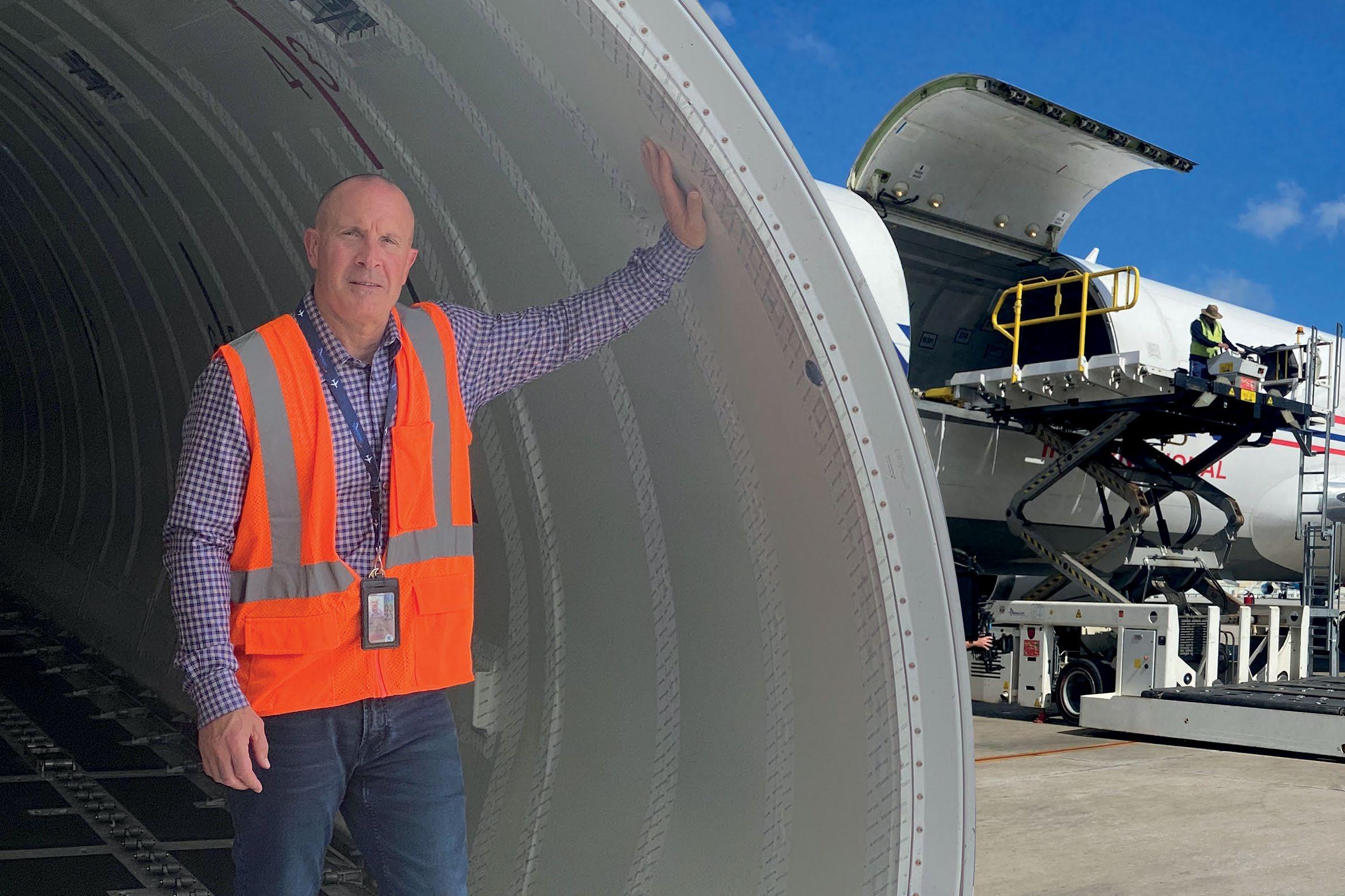
Here’s how. MIA has long ranked as the No. 1 airport in the United States for international freight, thanks largely to its imports of fresh flowers, fish, and fruit from Latin America and the Caribbean. To handle so many perishable products, companies that use the airport developed a massive network of refrigerated trucks, warehouses, and temperature-controlled facilities called a “cold-chain.”
About a decade ago, MIA leaders decided to mobilize that cold-chain to handle more pharmaceuticals, which often need to stay refrigerated. MIA encouraged airlines, freight forwarders, and other airport users to earn a new certification for handling
pharmaceutical products. Six companies completed the rigorous process, and in 2015, MIA became the first airport in the United States to be named a “pharma hub” by the International Air Transport Association (IATA). At the time, only one other airport had that designation: Brussels, Belgium.
Becoming an IATA pharma hub gave increased confidence to manufacturers and buyers that medicines passing through the airport would be properly processed. MIA’s pharma business grew and stayed strong during early COVID. It then took off with the advent of COVID vaccines. “We had a record year in cargo in 2021, and pharma was obviously a big contributor,” says Emir Pineda, who handles passenger, trade and logistics development for the Miami-Dade Aviation Department. Among the many medicines processed: COVID vaccines heading to Latin America and the Caribbean.
In all, MIA handled nearly 20,000 metric tons of pharmaceuticals in 2021, up more than 20 percent from 2019’s preCOVID volume and setting a new record. Most of the medicines, like the vaccines, were exported. The total value of MIA’s
54 GLOBALMIAMIMAGAZINE.COM
AIRTIME
PHARMA HUB GROWTH
PHARMA SHIPMENTS (METRIC TONS)
pharma cargo in 2021: $6.6 billion, according to Aviation Department data.
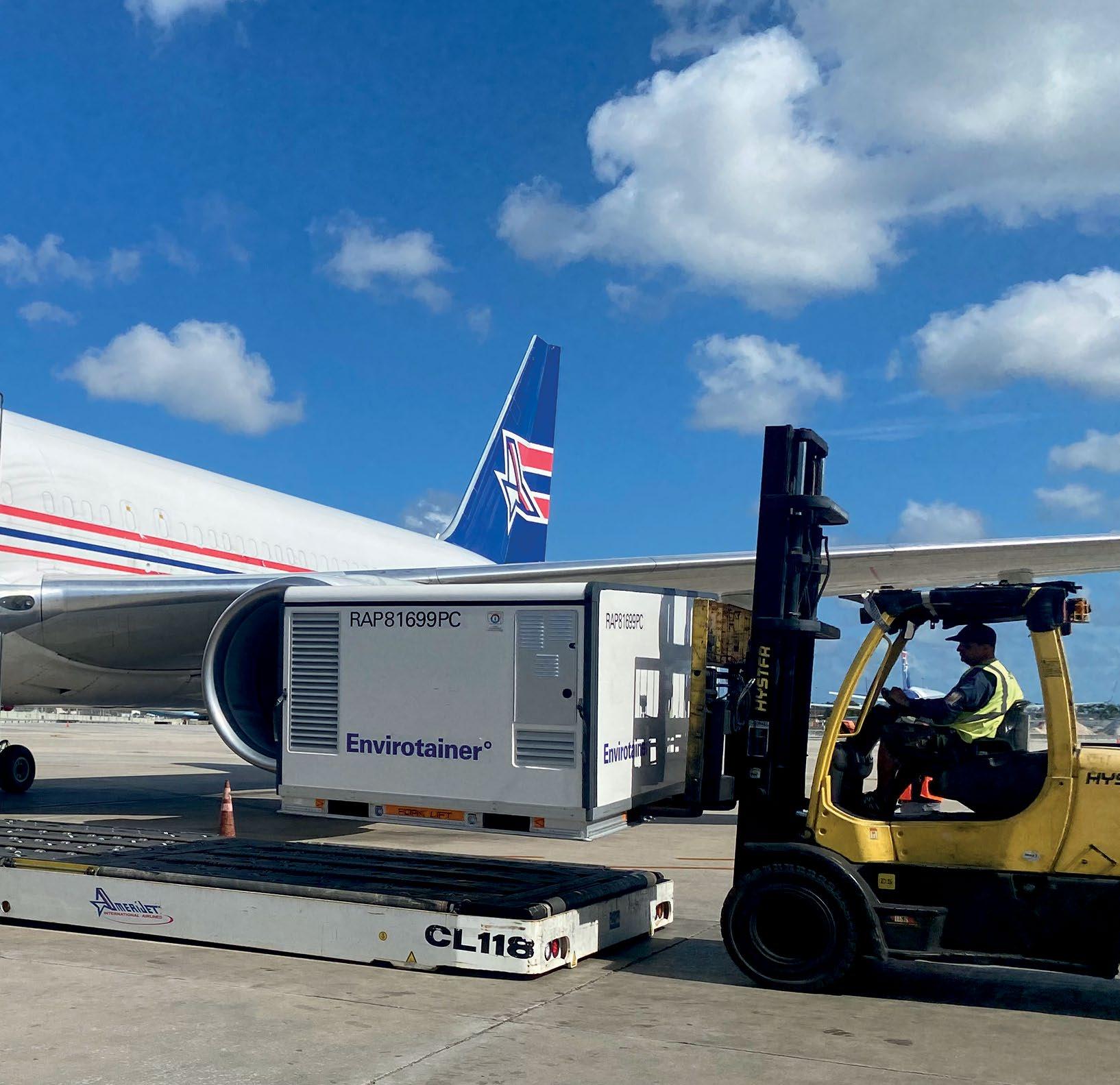
“We’re seeing an increase in pharma in 2022 too, after some delays in 2021,” adds Pineda. “We’re also promoting certified pharma lanes to manufacturers (like Brussels-Miami) to attract business, because companies can’t afford billons in losses on vaccines that were mishandled because of temperature.”
THE TOUGH PROCESS TO BECOME
A “PHARMA HUB”
Getting and keeping MIA’s designation as an IATA pharma hub isn’t easy. The process requires that individual companies handling medicines spell out their processes step by step, train employees, and undergo inspections to complete IATA’s Center of Excellence for Independent Validators (CEIV) pharma certification program. Each certified company must also be re-validated, usually every two years.
A little over a year ago, Amerijet tapped Chris Mazzeo to be its VP in charge of global operations, partly because of his experience with shipping pharmaceuticals; Mazzeo had previously served as an IATA consultant. Amerijet offers scheduled and charter services to a variety of locations in Europe, Latin America, and the Caribbean, but key to its pharma business are flights to Brussels, IATA’s first pharma hub, and to the U.S. Commonwealth of Puerto Rico, a major pharma manufacturer.
TOTAL PHARMA SHIPMENTS (U.S. DOLLARS)
PHARMA SHIPMENT VALUE IN 2020: $3.73 BILLION
PHARMA SHIPMENT VALUE IN 2021: $6.65 BILLION
PERCENTAGE CHANGE: 78.3%
PHARMA EXPORTS
PHARMA EXPORTS IN 2020 $3.18 BILLION
PHARMA EXPORTS IN 2021: $6.28 BILLION
PERCENTAGE CHANGE: 97.5%
PHARMA IMPORTS
PHARMA IMPORTS IN 2020: $547 MILLION
PHARMA IMPORTS IN 2021: $370 MILLION
PERCENTAGE CHANGE: -32.4%
Mazzeo says it took about a year for Amerijet to earn its initial CEIV Pharma certification. That involved spelling out its organizational structure, training courses, audit system, complaint resolution, and more. It required refining its quality management program. It even meant mapping temperatures in warehouses, specifying where air-conditioning vents and doors were located, and checking that “cool rooms” stayed in the required temperature range.
“You have to have everything documented from A to Z, and you must have risk assessments in case of any deviation,” Mazzeo says. “It’s very detailed, with strict guidelines. What’s important is everyone understands everyone’s responsibilities, so if there’s a problem, you can identify who is responsible.”
Re-validation takes new refinements, too. “The process continually evolves to improve the quality of handling for pharma. We’re constantly looking at how we operate and evaluate,” says Mazzeo.
Indeed, the process is so detailed that
55
MIA
2017 13,780 2018 16,620 2019 15,431 2020 16,342 2021 19,699
SOURCE: MIAMI INTERNATIONAL AIRPORT
The process continually evolves to improve the quality of handling for pharma. We’re constantly looking at how we operate and evaluate.
CHRIS MAZZEO (ABOVE) VP IN CHARGE OF AMERIJET INTERNATIONAL GLOBAL OPERATIONS AT MIAMI INTERNATIONAL AIRPORT (MIA)
Amerijet set up a new department just for CEIV pharma certification. Its manager works with customers to develop Service Level Agreements in their pharma contracts.
With its IATA certification in place, Mazzeo estimates pharma now accounts for 15 to 20 percent of Amerijet’s business on regularly scheduled flights. “Without that certification, many freight forwarders won’t even consider using you,” says Mazzeo. “And it’s fantastic, because the standard is global.”

WHY IATA LAUNCHED THE “PHARMA HUB” PROGRAM
IATA adopted the pharma certification program a decade ago for two main reasons: to encourage more air transport of pharma products and to help drug manufacturers reduce spoilage in transport. The aviation group recognized a loss of market share in pharma products, as manufacturers turned more to land and sea shipments that tend to be cheaper than air. Just 11 percent of pharma products were flown in 2013, down from 17 percent in 2000, IATA found. At the same time, pharma companies faced mounting losses from mishandling, with spoilage responsible for as much as $10 billion some years, IATA estimated.
Today, the list of IATA certified pharma organizations has swelled. Airports designated as pharma hubs include Dallas in North America; Montevideo in South America; and Singapore, Hong Kong, Tokyo, and Mumbai in Asia. MIA increasingly partners with Mumbai because generic drugs made in India are flown through Miami and onward to Latin America. Besides Amerijet, companies with pharma certification at MIA include American Airlines Cargo, DHL Global Forwarding, LATAM Airlines, Swissport Cargo Services, and logistics provider Kuehne & Nagel.
Of course, pharma was not the only freight that lifted MIA’s fortunes since the pandemic began. Like other airports with large volumes of cargo, MIA benefitted from a shift in fundamentals.
Airports typically handle lighter, higher-value and time-sensitive goods because air transport is faster but costs more. Seaports instead tend to handle heavier, lower-value items, from furniture to sweatpants, because shipping takes longer but costs less. COVID shifted those economics, however. With fewer passengers flying, airlines dedicated more space to cargo, pushing down costs for air transport. Meanwhile, disruptions at seaports led to spikes in prices
for ocean-borne cargo, narrowing the price difference between air and sea shipping.
“What saved MIA was cargo and logistics, and a lot of that was stuff you order on Amazon and other e-commerce sites,” items from protective masks to home electronics, says MIA’s Pineda.
The shift helped MIA set a record for air cargo in 2021 in all product categories: 2.7 million tons handled, including 2.2 million of international freight. The total value of those goods: $67.5 billion, up 28 percent from 2020 levels. Pharma jumped to comprise 10 percent of the value of all MIA freight, data shows.
MIA’s air-freight community wants to keep those pharma volumes growing. Some leaders see opportunity in greater automation. Today, numerous countries still require crews to land and physically submit paper
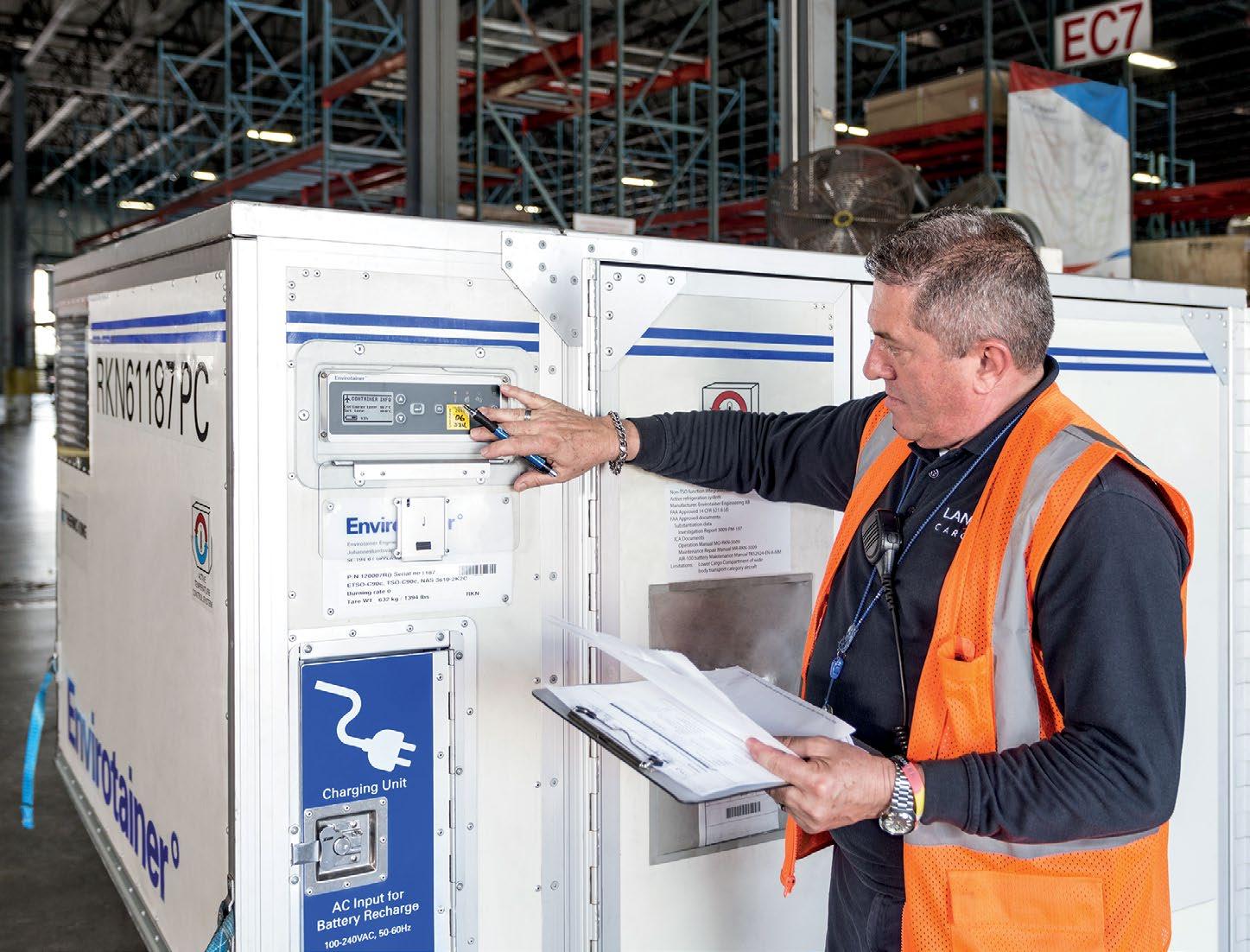
documents before processing their incoming freight. Sending forms electronically before landing would speed release of cargo and encourage use of air transport, participants said at a recent Air Cargo Americas conference in Miami.
MIA is also boosting promotions of its “pharma hub” to secure more business, with officials speaking at conferences and hosting such groups as BioFlorida at refrigerated warehouses. “As we get better and better at moving pharmaceuticals by air and maintaining the cold-chain,” says Pineda, “we’ll see more and more business shifting from ocean transport. Air cargo is faster and more efficient.” l
56 GLOBALMIAMIMAGAZINE.COM
What saved MIA was cargo and logistics, and a lot of that was stuff you order on Amazon and other e-commerce sites.
EMIR PINEDA, MIAMI-DADE AVIATION DEPARTMENT
PHARMA SHIPMENTS BEING PROCESSED AT MIAMI INTERNATIONAL AIRPORT
Cruise Capital of the World Global Gateway of the Americas
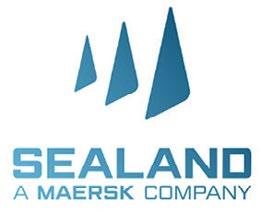


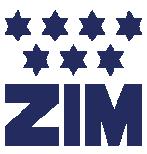

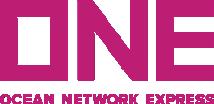





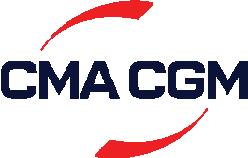












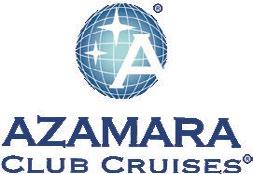

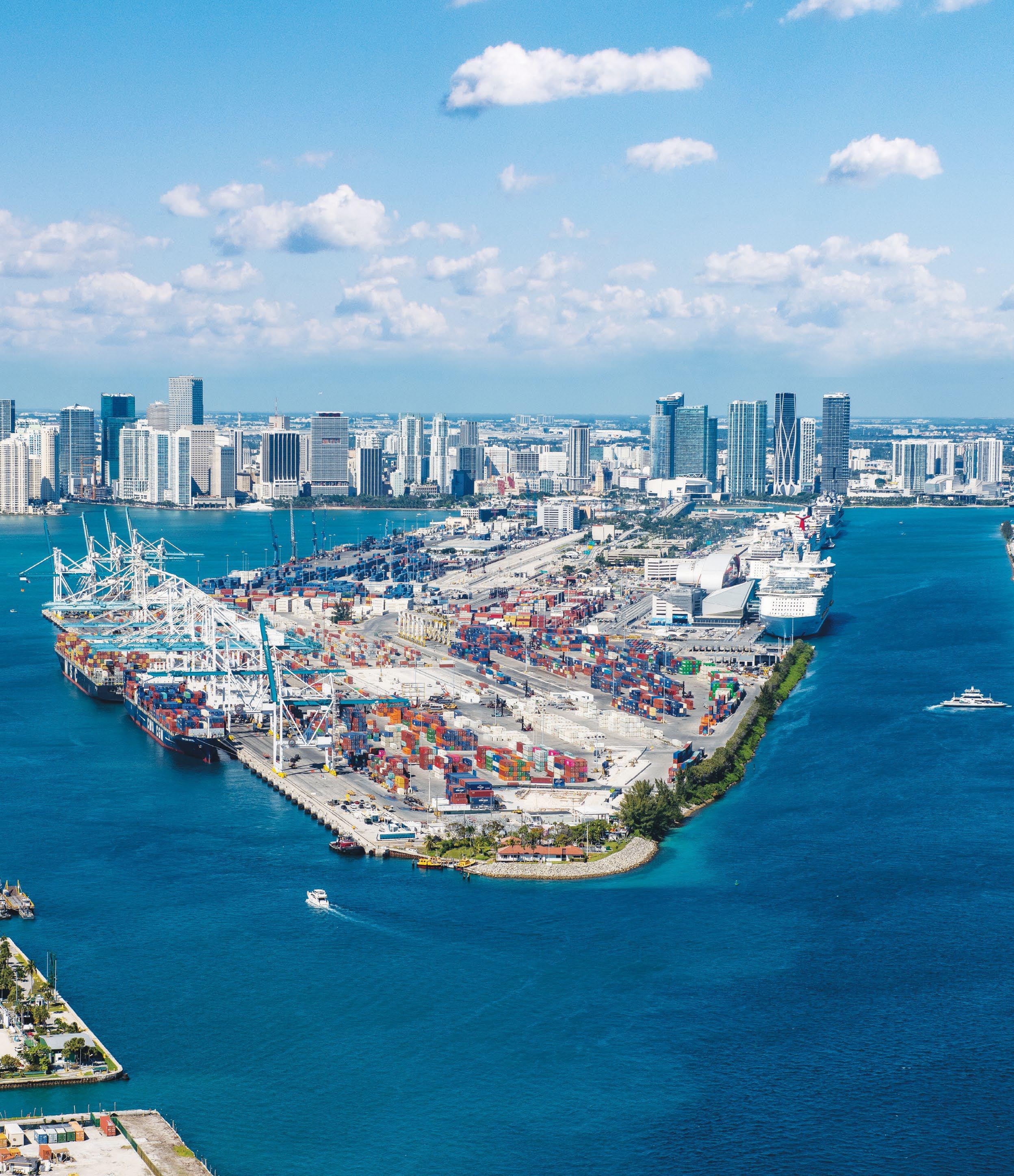 Cruise Partners
Cargo Partners
Cruise Partners
Cargo Partners
Brazilian Priorities
Just prior to the election that saw Luiz Inacio Lula da Silva win the Brazilian presidency, we interviewed Brazil’s Consul General in Miami, André Odenbreit Carvalho. We wanted to understand his priorities as a professional career diplomat, which are unlikely to change when Lula takes office in January: the continued improvement of trade and cultural ties with the U.S. in general and with Miami and Florida in particular. Prior to taking his post in March of this year, Consul General Carvalho served as part of the Brazilian mission to the EU in Brussels, and before that in the Brazilian embassies in London, Moscow, and Buenos Aires.
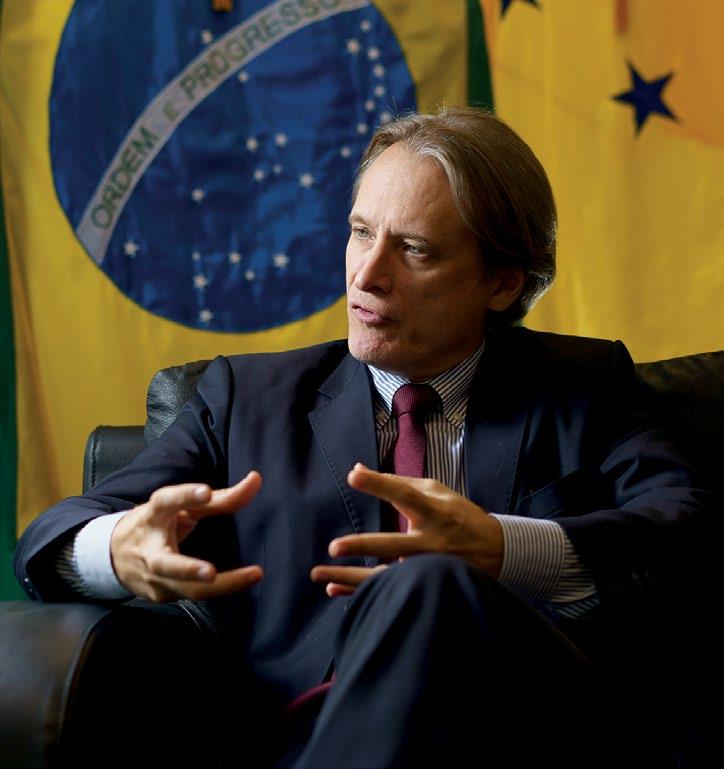
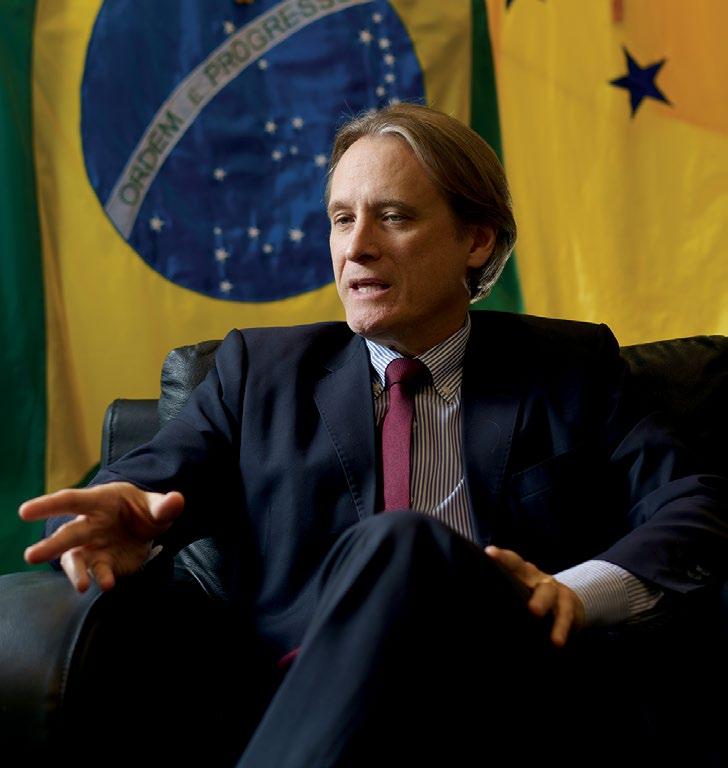
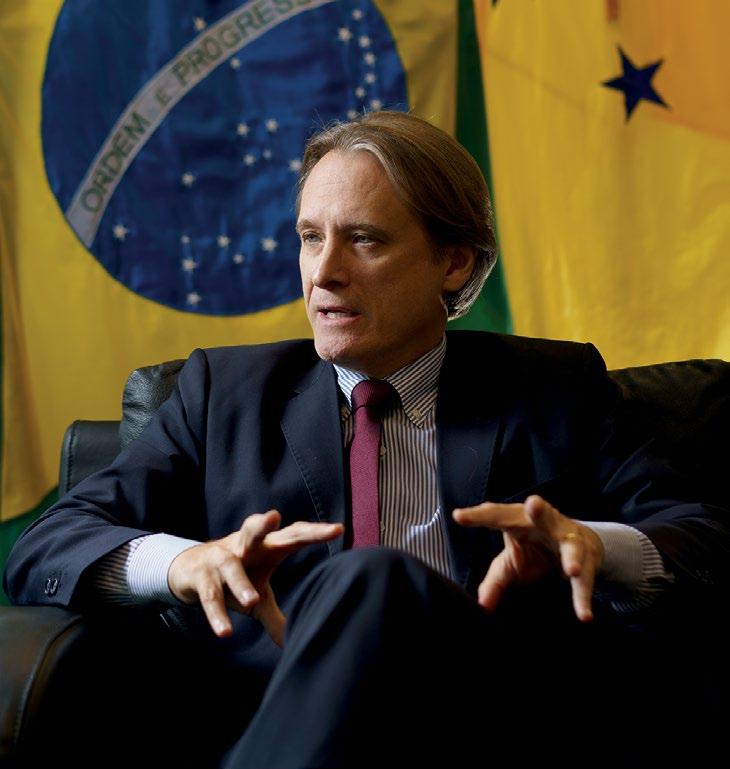
What’s been the hallmark of your service in Miami so far?
It’s been a very dynamic time, probably the busiest initial six months I’ve ever had at a posting. We had our president and foreign minister here in June because we opened the Brazilian vice consulate in Orlando. Also in June, the national meeting for all the consul generals in the U.S. was held in Miami. We had a second visit by our foreign minister [who] met with different organizations at the end of September in Fort Lauderdale. And we had the first round of our elections. So it’s been a busy six months.
How does Miami compare with other cities where you’ve been posted?
I think it’s tremendously dynamic. I think it’s a very exciting time in the city and the state, which is a confirmation of what I heard before arriving. Everyone offered the message that the state and the city, economically and socially, were at a very positive phase in terms of both economic opportunities and people moving to live in Florida and Miami, both from within the U.S. and coming from abroad. The Brazilian community is growing very fast.
What is your primary role here?
Our bread and butter are consular services, which means ensuring those basic elements the Brazilian community here needs, whether it’s a passport, a birth certificate, or any kind of notary process... And that in itself is a very significant amount of work because the community is growing, both the permanent community and the tourism community. [However,] the community here is growing to a point
in which many other issues are gaining strength. You have the trade aspects and the investment aspects. That is an activity that we share, here at the consulate, with the Brazilian trade promotion agency [APEX], which has its headquarters in Miami.
How important is trade to your role?
We are in Miami because of the perception that Miami is central to the trade relationship between Brazil and the U.S. We are the main foreign trade partner with Florida, by far, and we are one of the big sources of foreign direct investment in Florida. We have about 125 Brazilian companies established in Florida.
How large is the Brazilian population here?
The informal estimates are as high as 400,000 to 450,000 in Florida. It would be difficult to estimate the numbers in Miami, but Miami-Dade and Broward are the two big counties where we have Brazilian communities. First Broward, then Miami-Dade, then Orange County.
What can be done to increase the business relationship between Brazil and Miami?
We have to work more on the flow from Florida. Brazil has clearly identified Florida and engaged. I think this is happening in the other direction also, but I think it’s at a more initial phase. When we speak with both the political and business leaders in Florida, the awareness is there… Brazil is a strong option for foreign direct investment, and we have some very significant investment projects right now, notably in the area of infrastructure.
Outside of trade promotion, what are your priorities?
As more and more Brazilians live in Florida, enhancing cultural ties to Brazil is going to become more and more of an issue. This is a priority for our work, in matters such as teaching Portuguese in Florida schools. [Another] is to improve the efficiency of our services. [We] are looking at ways to reduce the time to insure that people get a passport or birth certificate or whatever they need. l
58 GLOBALMIAMIMAGAZINE.COM CONSULAR CORPS I
PHOTOS BY RODOLFO BENITEZ
C G C G T R U S T C O M T H E O N LY T H I N G YO U TAKE W ITH YO U A F T E R YO U’ R E G O N E I S W H AT Y O U L E AV E B E H I N D. At Coral Gables Trust, managing wealth from generation to generation is at the heart of what we do. So we’ve built a team of senior professionals who meet with you to build a unique investment strategy based on your goals—so the wealth you’ve accumulated in this generation, will bene t the people whom you hold dearest and the causes you’ve spent your life supporting—in the next generation. Call us. We’re the leading provider of Trust & Estate, Wealth Management, and Financial Planning services in South Florida. Chances are… one of our o ces is right around the corner. C O R A L G A B L E S T R U S T CO RAL GAB LES 786-49 7- 1 2 1 2 FORT LAUDERDALE 9 54 - 707-6899 B OCA RATON 561-43 7- 2 70 1 PALM BEAC H 5 6 1 -89 9 -5103 All Rights Reserved. Investment and related products are: Not insured by the FDIC, the United States Government, any Governmental Agency, Coral Gables Trust Company, or any of its affiliates, may lose value, and are not guaranteed by CGTC.
An Outside Perspective
It is rare for the Australian ambassador to the U.S. to visit Miami. But that is just what the Hon. Arthur Sinodinos did in October. Traveling with his entourage not just to Miami but to nearby Fort Lauderdale, Sinodinos met with politicians, academicians, and business leaders. One of his goals, he said, was “to understand what it is about the U.S. that makes it such a riveting place to do business, to launch products and services... and whether these lessons are transferrable. What is it about the culture, about the attitudes toward risk, about the incentives and tax breaks?”
He chose South Florida as his destination to explore the American spirit because, among other things, “South Florida is the gateway to Latin America, and we want to understand better what is happening in that region and how we can be part of it.”
Sinodinos was also impressed by the caliber of South Florida’s newest crop of residents. “A lot of people are coming here from the financial services sector, but what is important is that financial decision makers are coming here,” he said. “It’s not just the funds under management coming here, it’s the people who make decisions about financing who are coming here and making Miami their base. Which means it’s a place where economic and financial decisions will be made. And that is very important.”
While here, Sinodinos also participated in the induction of several Australian swimmers into Fort Lauderdale’s Swimming Hall of Fame, and the investiture of Miami Beach resident (and Australian native) Barry Gibb of the Bee Gees, who was given the Companion of the Order of Australia, their equivalent to a knighthood. l

60 GLOBALMIAMIMAGAZINE.COM
CONSULAR CORPS II
HON. ARTHUR SINODINOS, AUSTRALIA’S AMBASSADOR TO THE UNITED STATES
PHOTO BY RODOLFO BENITEZ
Timeless Luxury. Memorable Moments.
A true icon surrounded by 150 acres of tropical landscape. We invite you to soak in our rich history, world-class golf, European spa, decadent dining, including our internationally recognized Signature Sunday Brunch or Afternoon Tea and more.
The Biltmore, where luxury and good taste never go out of style. THE



1200 Anastasia Avenue | Coral Gables, Florida 33134
Reservations: 305-445-1926 | www.biltmorehotel.com
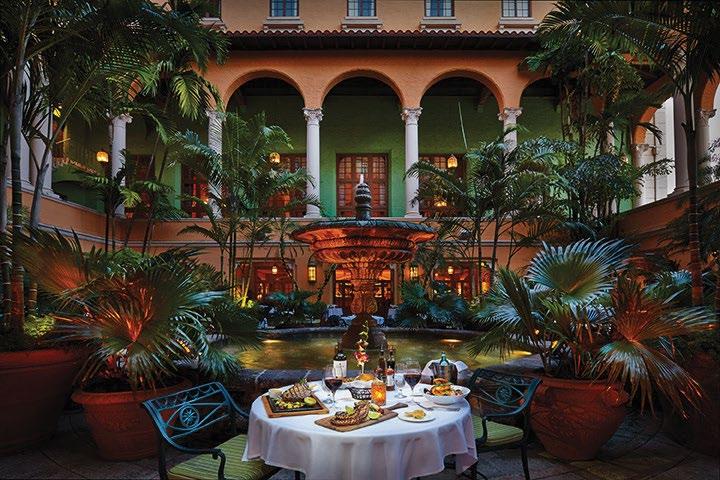

BILTMORE HOTEL
WORLD STRATEGIC FORUM
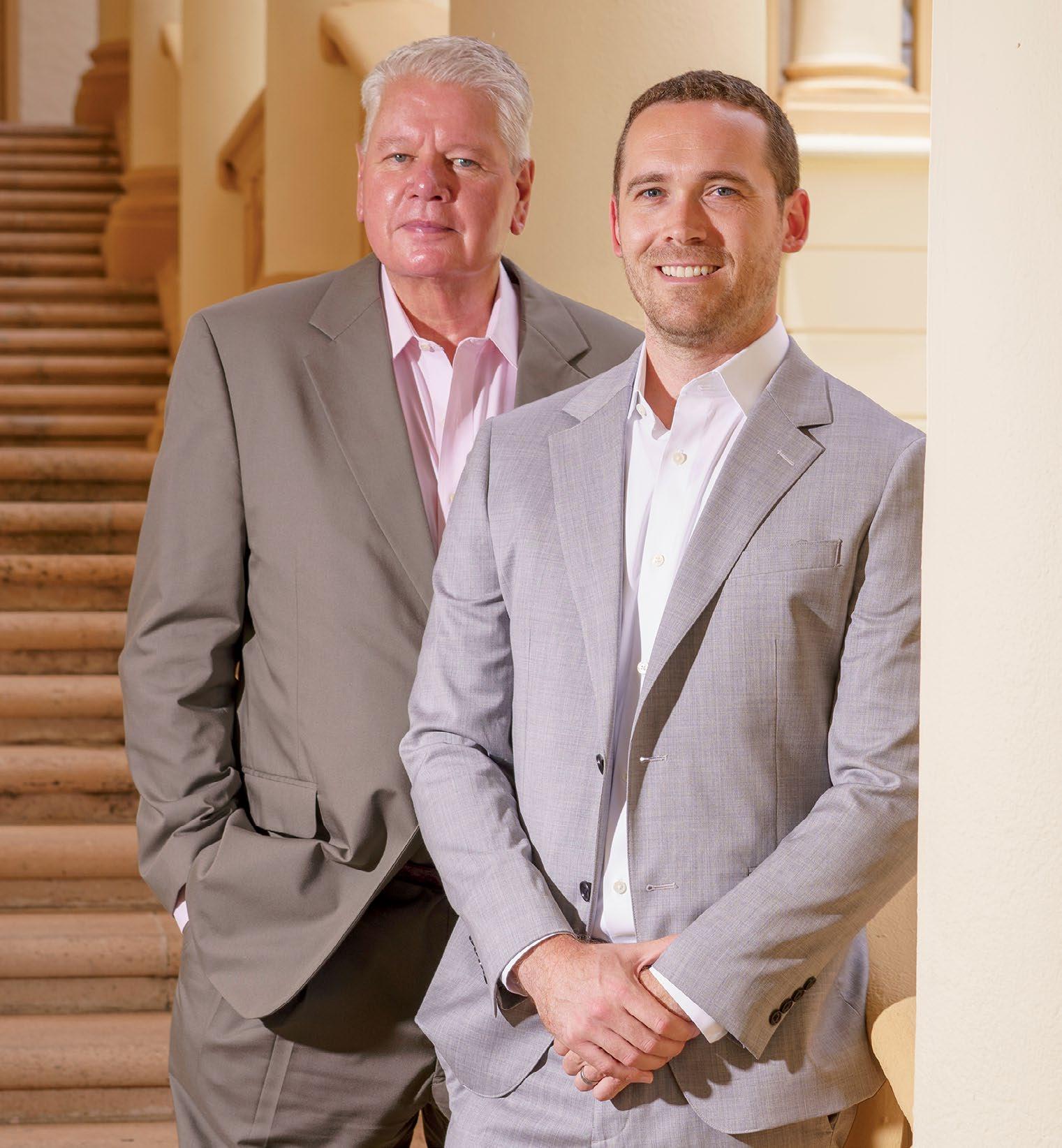
The World Strategic Forum, presented by the International Economic Forum of the Americas (IEFA), is an annual two-day event that explores major governance challenges in the current global economy. The Forum provides a platform for business leaders to meet and discuss a variety of topics, including technology innovations, financial markets, economic development, ESG, and supply chain issues, amongst others. Speakers at this year’s event, which ran from Oct. 31 to Nov. 1, included representatives from World Trade Center Miami, Smart Cities Americas, PortMiami, Port
Everglades, Miami International Airport, Enterprise Florida, Miami-Dade College, and Florida Realtors. Also participating were Miami Mayor Francis Suarez, Miami-Dade County Mayor Danielle Levine-Cava, and C-level executives across a diverse range of industries. We have curated the best questions and answers from three of the panels we found most intriguing. For more information about the World Strategic Forum and a full list of speakers, go to events.forum-americas. org. Full-length videos of all the panels from this year’s event are available on the IEFA’s YouTube channel.
62 GLOBALMIAMIMAGAZINE.COM
BILL JOHNSON, CHAIR PERSON, AND PAUL GRIEBEL, EXECUTIVE DIRECTOR
PHOTO BY RODOLFO BENITEZ
Taking Action for A Resilient Global Supply Chain
This Q&A panel session featured experts in global trade. Moderated by Julian Salguero, Partner at McKinsey & Company, the panel was comprised of Alice Ancona, Senior Vice President and COO of World Trade Center Miami; Laura DiBella, Deputy Secretary of Commerce of Enterprise Florida; Wouter Witvoet, founder and CEO of EV Technology Group; Eric Olafson, Director of Global Trade & Business Development at PortMiami; and the Rt. Hon. Femi Gbajabiamila, Speaker of the House of Representatives of the Federal Republic of Nigeria.
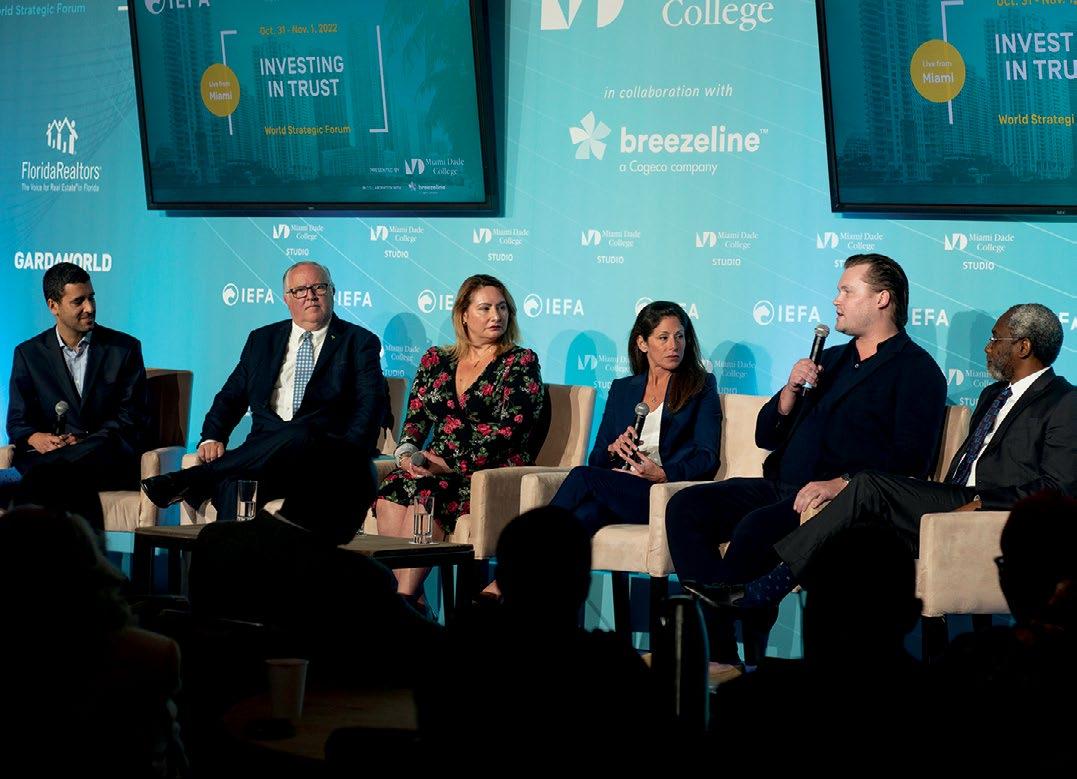
Do you believe that we still have a global supply chain?
Eric Olafson: Yes. We have seen the supply chain not end, just change. One of the major changes that we are seeing here in Miami is nearshoring. Latin America is now coming of age, and so a lot of furniture and clothing that was made in Asia is now being made in Colombia and Mexico. The prices for labor now in Latin America are less than in China. Take away the transportation costs, and we have a whole new system. We see a supply chain that is changing and helping the gateway to the Americas.
From the public sector, what is being done to increase trust and decrease supply chain risks that we are seeing right now?
Alice Ancona: Suddenly, the public sector discovered the private sector. It’s because of the supply chain challenges in Florida; we had extensive public-private partnerships. So we benefited from that beforehand, which is why we saw our airports and our seaports continue to stay open. But in many parts of the world, that didn’t happen. The infrastructure and the investment weren’t there. The private and public sectors were not coming to the table earlier. It shouldn’t take a catastrophic event or moral standstill for everyone to realize that you should be speaking with each other. And I think as COVID becomes further in the back mirror, we’re going to forget that we have supply chain challenges and that supply chains are fragile. They will remain that way because of the interdependence that we have with other countries and other parts of the world.
What are some things we need to do to keep the momentum growing in Miami and continue growing Florida’s role in the world?
Laura Dibella: Florida stands to gain so much both domestically and internationally. We are already seeing a shift in the trade lanes. 49 percent of shipments are coming into the west coast ports and 51 percent are coming to the east and Gulf Coast ports. Essentially, the bottleneck has shifted from the west coast to the east, and the ports
that were primarily benefiting from it, in a very concentrated aspect, were Houston, Savannah, and New York. Now, they’re extremely congested. We sit right at the nexus of much of that activity... We’re in a very flexible period where options are being considered and Florida is seen as a very attractive option because of all that’s happening around us and that primary shift from the west to the east. And where investments are concerned, we have $2.7 million coming into Florida every hour.
How do we make sure that the growth we’re seeing is inclusive and diversified? How can those who want to get educated and contribute to the economy get access?
Eric Olafson: By partnering with colleges for internships. Three of the cargo development staff that work with me started as interns. Now they are our most productive employees at the executive level at PortMiami. It’s about getting them into your office and sponsoring those internships because internships turn into jobs. We wear a white hat here in Miami because, at the port, we produce jobs. Bring students into the community and then hire them.
What is needed to continue the growth of the supply chain and reduce the disruptions that we’ve seen in the last couple of years?
Alice Ancona: It’s a fallacy to think that there are not going to be any more disruptions. There will always be disruptions. Preparing for those disruptions is what we need to continue to do. We move forward – and it’s a great thing to do – but we can’t forget that disruptions always happen. If our supply chains are not resilient, if we don’t ensure that we have the right infrastructure and policies, we are doomed to repeat the same mistakes. Diversifying whom we trade with, learning and meeting new trade partners, and then helping each other are all part of that push towards regionalism. It’s not just investing inwardly, it is investing in others and investing in our supply chain. l
63
WORLD STRATEGIC FORUM
WORLD STRATEGIC FORUM
America’s Emerging Technology Hub
This Q&A panel session featured leaders in the technology sector. Moderated by Natalia Martinez-Kalinina, founder and principal of NMK Group, the panel was comprised of Bernardo Scheinkman, CEO of Smart Cities Americas; John Wensveen, CIO of Nova Southeastern University (NSU) and executive director of the NSU Broward Center of Innovation; and Michelle Abbs, founder and CEO of Web3 Equity.
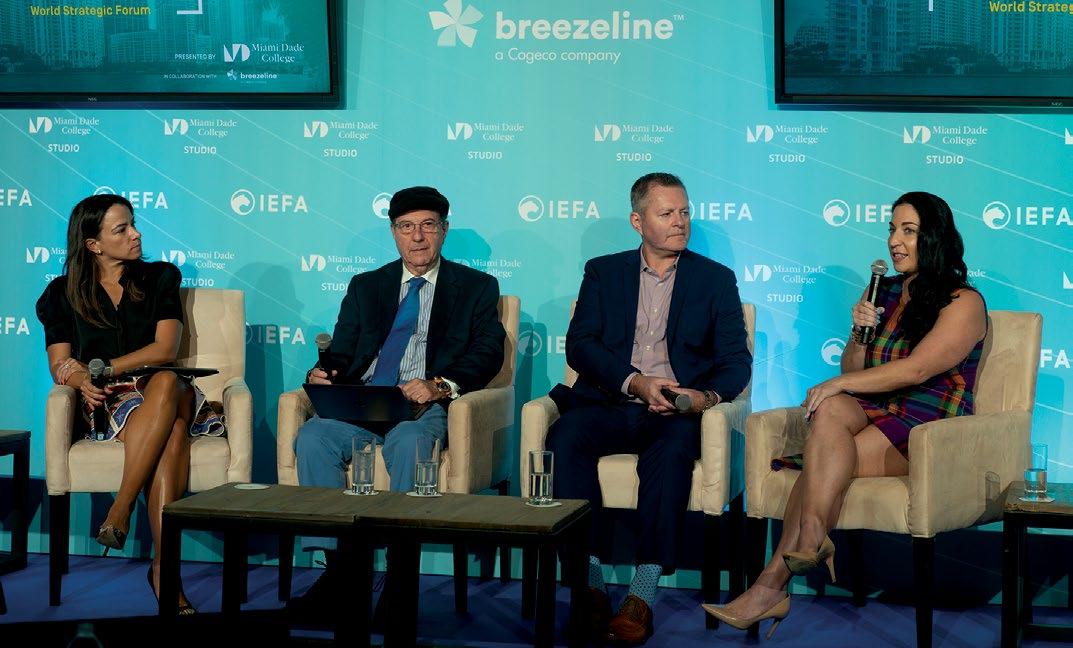
What have you observed over the last decade in Miami’s entrepreneurial ecosystems and what’s happening with this recent acceleration?
Michelle Abbs: Around the early 2000s, you saw Manny Medina of Medina Capital really double down on data and technology, and he constructed an entire data center that you still see as you drive over the highways in Downtown Miami. Around that same time, Dr. Maurice Ferré really doubled down on technology and pharmaceuticals with Mako Pharmaceuticals. What I think happened is after both of those companies in the early 2000s saw a meteoric rise, they then gave birth, through their IPOs and acquisitions, to various other technology leaders and companies.
How have you observed the talent and founder pool change in recent years? What is needed to attract and retain talent here?
Michelle Abbs: It wasn’t until COVID opened the doors that we started seeing more headquarters in “the cloud,” where talent was then choosing where they wanted to live instead of where that business was located, where they felt the happiest and had the best worklife balance. We started then seeing different pockets of talent come to Miami…. There are two camps of them that I’ve observed: ones that have worked really hard to integrate into the local ecosystem –they’re hiring locally and really seeking out those local partnerships – and then there are groups who have come and they’ve said, “This just happens to be where we are. We’re not necessarily going to integrate.” I think it will be interesting to see which of those strategies bodes well in the future. My bet is on the collaborative approach because I think there is something very important in the talent pool and in the lived experience of a place like Miami that folks who are simply importing talent are missing out on.
What can Miami do to avoid or prevent challenges, like housing and mobility issues, associated with becoming a technology hub?
Bernardo Scheinkman: I’m an optimist about the future here. What we need to do now is to give more support in terms of mobility. We need to have public transportation. The way that the city here was built was for cars, and you need to change that. We need to invest more, we need to use technology for transportation, we need to use technology to build differently. We need to work together to bring mass transportation here.
How do we stack up against the rabid commercialization of academic institutions in places like Boston and the Bay Area?
John Wensveen: Leading universities all over the world have been very good at commercializing their research because they invest into the infrastructure and the network and the relevant resources to make that happen. South Florida has really been at the bottom of that list for a number of years. The one thing we’re still missing here is the influence of federal government, where they actually create their own incubators and accelerators that contribute to that research. We have to do a better job of convincing the powers that be that South Florida is truly on fire. We are number one in terms of startups, but we are also currently at about number 38 out of 40 cities in terms of our ability to scale, meaning that we don’t have enough talent to be able to get to the next level.… What we have to do is create pathways for researchers so they’re not thinking as an academic but more as a businessperson, an entrepreneur, an innovator, or a technologist.
How do we build a South Florida technology ecosystem that hopefully leapfrogs over some of the gaps and inequities that communities like San Francisco have become known for?
Bernardo Scheinkman: We have the public sector giving support and, besides that, we have the private sector bringing in developing technology. Combined, we can create more than 20,000 green jobs in the next three to four years. We could generate $40 billion in investments in the next three years. With this kind of investment, we can grow in terms of “good” technology – technology that protects people, not controls them… [But] we need to bring the citizens in for the decision-making process. We need to go to meetings, we need to discuss things. In this way, we will grow better and faster. John Wensveen: One of the areas that I think we have to do a much better job in is how we serve underserved communities. When you see Ferraris and Lamborghinis cruising down the beach, you think, “Oh, it’s a very wealthy environment.” It is, but it’s also important to note that much of the wealth that you see was earned in other places and then spent here in South Florida, and therefore we have a huge population that often is not recognized.... So, how do we improve upon that? Number one, we have to know where the gap areas are. Industry has to become aware of where the gap areas are and invest into those communities so that everybody rises to that level of economic prosperity. l
64 GLOBALMIAMIMAGAZINE.COM
WORLD STRATEGIC FORUM Crypto and New Tech
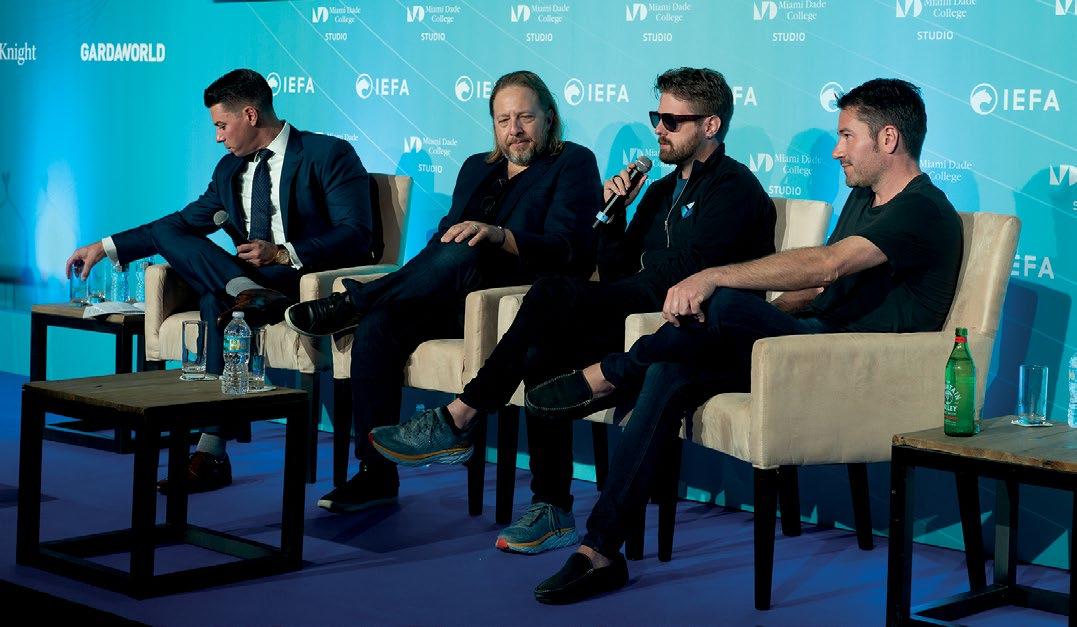
Why are so many of your peers folding or finding themselves unable to make it through this cycle?
Jim Esposito: It’s a really tough environment right now. I don’t know that I’ve ever seen in my life the convergence of such significant macro conditions all at once: high inflation, supply chain challenges, global conflict, central banks adjusting rates at a rapid pace. It’s really sort of breathtaking to see all these things converging all at once.
Peter Smith: I don’t really count a crypto company as being serious until it’s survived two cycles, because crypto is very violent in both directions, and they can both kill you as an operating entrepreneur. Being an investor in crypto is actually kind of easy, but being an operator or entrepreneur in crypto is really hard. How do you keep up with these swings? I think navigating through that across multiple cycles is a testament to how robust your business is. Really practical people have a habit of over-scaling in their second cycle and under-scaling in their first. That’s a hard balance to get right…. There’s also not a lot of particularly great risk management in crypto. People are just not used to a world in which an asset class moves up and down by 80 percent in four months.
How do you foresee the landscape in terms of regulation looking in the next few years and what would be advantageous to your companies?
Jim Esposito: I think regulation is not only inevitable, it’s important and it’s needed. It’s the right thing to protect customers. It’s also important to flush out bad actors. On top of that, I’d like to see more clarity and guidance. It has become quite an expensive problem, where you’ve got to spend money on internal and external counsel. I think concise clarity from regulators, whether that’s the CFTC (Commodity Futures Trading Commission) or the SEC, etc., would be welcomed. The industry has been asking for it.
Peter Smith: We are definitely not short on regulation in the crypto space. The challenge in crypto right now is that everyone is your regulator because no one is exactly sure who your regulator is. It’s actually a lot better in Europe and Asia. In the U.S., it’s just kind of a general state of confusion…. The other thing would be consistency. We would like to follow the rules, but we would also like everyone else to follow the rules, because otherwise we’re at a business disadvantage. I do think it’s getting a lot better. We have full-time public policy teams in D.C. as well as Brussels and Singapore, and
the conversations have become much more constructive and much more action-oriented, particularly in the wake of the major meltdowns of the last year. I think regulators are very concerned with actually getting something done now, which is going to be shortterm painful but long-term productive.
How have you adapted marketing to align with unique individuals or influencers?
Jack Abraham: We’ve done influencer type marketing, and it can be helpful. One company that we started was called hims & hers, where we worked with Jennifer Lopez. She’s one of the most popular celebrities out there, has one of the biggest followings in the world. It can be good for very broad products that you want to get to the masses. The thing that people don’t realize about crypto is it’s actually a much narrower audience that you need to reach to really get things to take off, which is why events and conferences work so well. It’s in-person things. It’s spreading the word. And then it’s a lot of word of mouth that spreads from that. If I were to say there are influencers in crypto, there are some YouTube channels, actually, where people have huge followings. That’s the way the word might spread further, but it’s not the traditional influencers and celebrities that you would think.
Jim Esposito: I think education is really important: helping folks understand what the power of crypto is, what the power of Web3 is, what change that’s going to have on the macro picture in society, how that’s going to empower consumers. I think those kinds of fundamental elements are really critical. We need to see more of that in this space as it continues to legitimize and move towards the mainstream and a lot less of the fancy names and faces.
Peter Smith: We don’t really do marketing. We’re very focused on building products that organically acquire users, and that’s where we’ve had the whole strength of our business, in these almost zero-cost funnels that acquire customers organically and through SEO and our data and media properties. Over time, we’ve done a little bit more brand marketing. Most of that stuff is oriented around other brands that we really admire or trust. We usually want to be identified with other institutions rather than individual people. Honestly, the thing that I get most excited about is our support and education center, which is one of the most trafficked sites in crypto and really helps teach people about crypto and even tells them about other companies’ products. l
65
This Q&A panel session featured experts in cryptocurrency and blockchain technology. Moderated by Mark Ciccarelli, First Vice-President at Morgan Stanley, the panel was comprised of Jack Abraham, founder and managing partner of Atomic; Jim Esposito, COO of MoonPay; and Peter Smith, CEO of Blockchain.com.
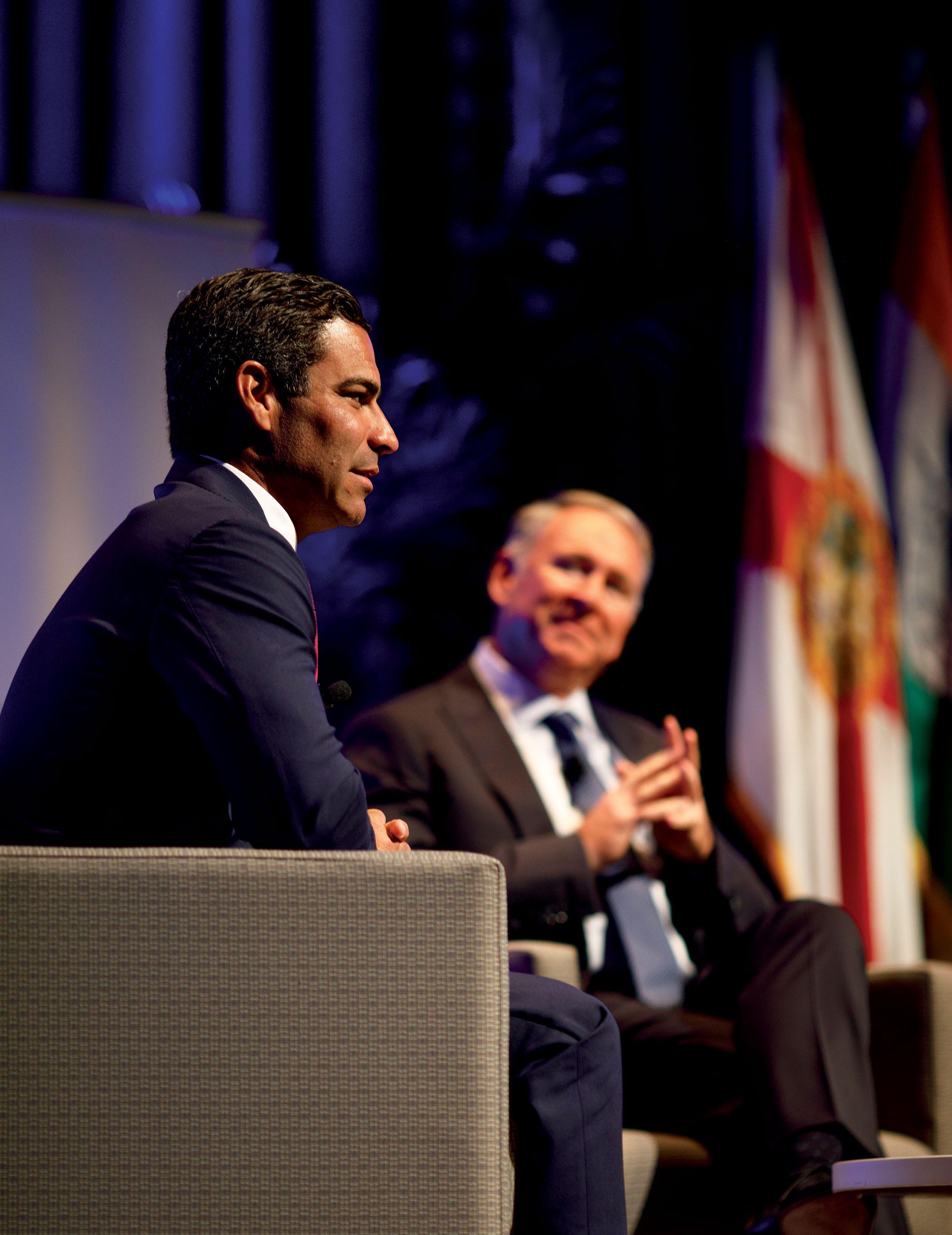
66
“WE WANT TO KEEP TAXES LOW, WE WANT TO KEEP PEOPLE SAFE, AND WE WANT TO LEAN INTO INNOVATION. THAT IS OUR STRATEGY.”
MAYOR FRANCIS SUAREZ, SITTING OPPOSITE CITADEL FOUNDER KEN GRIFFIN
PHOTO BY RODOLFO BENITEZ
How Miami has become the new global city
BY JP FABER
On a rainy evening in early November, a sell-out crowd of more than 250 people crowded a second-floor auditorium in the downtown campus of Miami-Dade College. Students, professors, government officials, entrepreneurs, business executives – all were gathered at the event hosted by the Economic Club of Miami to listen to a conversation between Miami Mayor Francis Suarez and Ken Griffin, the billionaire hedge fund manager who made headlines announcing he would move his entire firm from Chicago to Miami.
Among his first questions, Suarez asked Griffin why he decided to relocate. Griffin related an incident which took place during the pandemic, when his firm set up a network of several thousand computer servers in the ballroom of the Four Seasons Hotel in Palm Beach. “We turned it into a trading floor big enough to run the entire U.S. equity market – in five days,” said Griffin. “This told us a lot about what could be possible in Florida. It would take us months to do this in a northern city… In Chicago, it took us five years just to build a bike overpass.”
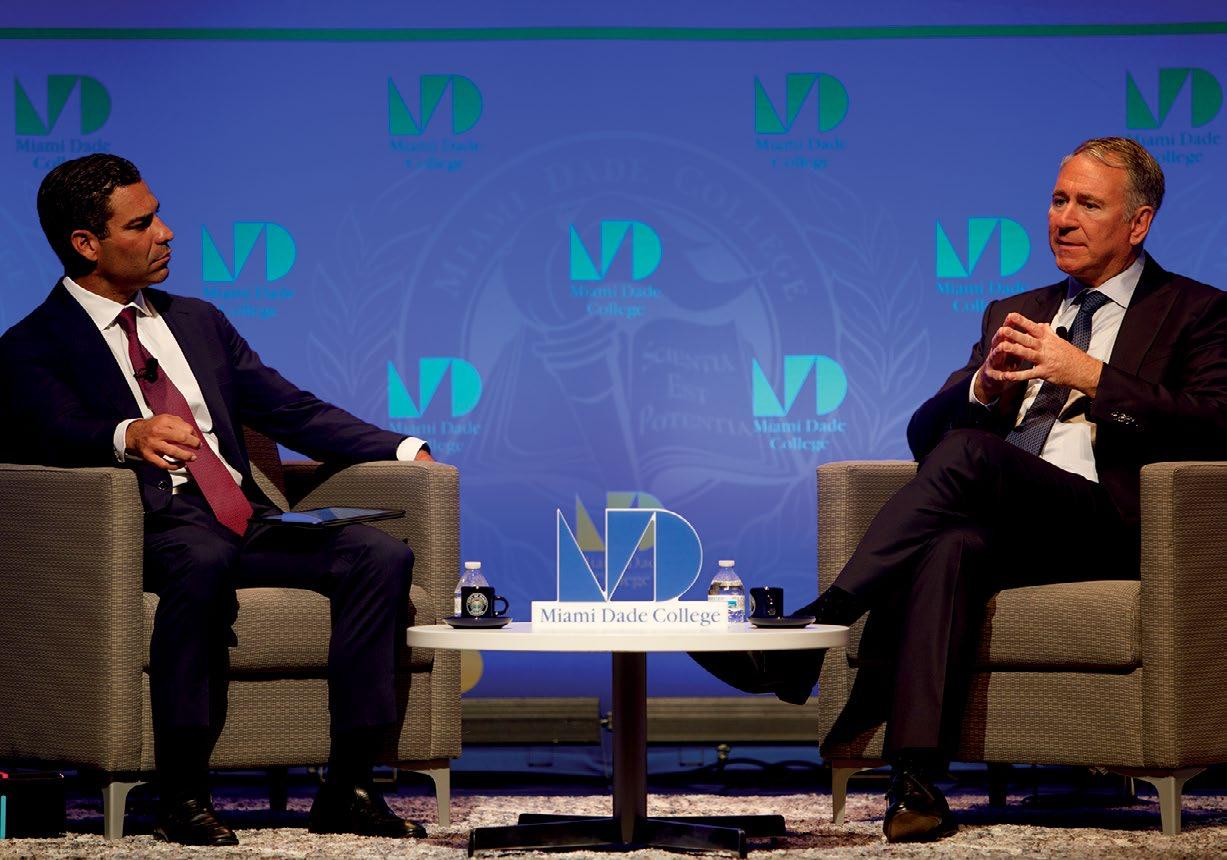
Suarez said he was intrigued that Griffin’s response focused on the role of government. “We in Miami believe that government should facilitate,” he said, “not that government should dictate.” Suarez went on to describe his formula as mayor of Miami: “We want to keep taxes low, we want to keep people safe, and we want to lean into innovation. That is our strategy.”
Whether that mantra is the key to Miami’s recent flood of corporate and capital relocations, unprecedented in its history, is up for debate. Suarez may either be the city’s most dynamic mayor in recent memory, or the luckiest municipal leader
in the country – or both – but the results are beyond question. Under his tenure, hundreds of billions of dollars in managed assets have relocated to the city, along with dozens of major corporations bringing tens of thousands of high-paying jobs. In the last 24 months, a litany of prestigious firms have either moved to Miami or announced plans to do so. Among them are names like
Blackstone, Microsoft, Goldman Sachs, CI Financial, Blockchain.com, Siebert Financial Corp., Ichan Enterprises, and Softbank, along with scores of smaller high-tech and global trading companies. All told, they have already added 15,000 high-paying jobs to the city’s private payrolls and are expected to add thousands more.
The reasons for this influx are numerous. Some are recent, like the sudden surge of New Yorkers (followed by Californians, Texans, and Chicagoans) who fled COVID,
67
looking not only for the state’s earlier break from the pandemic shutdown, but also for the mayor’s triumvirate of lower taxes, a safer place to live, and a government that encourages the development of new business. But many of the seeds are deeper.
“It’s a combination of good policies that have been applied over [decades],” says Alex Horenstein, a professor of economics at the University of Miami. “These are not things that happen all at once. They evolve over time, and then you break some surface and change happens faster.” Miami, says Horenstein, “has transformed itself into a business city, becoming very cosmopolitan – and with a falling crime rate. It’s not something that happened just last year.” The city is also enjoying what can only be described as a virtuous cycle, where advances pile onto each other. “Once you attract money and offer better services, you attract more wealthy people from all over the world,” says Horenstein. Leading the corporate charge have been a slew of relocations by CEOs, from Keith Rabois of Founders Fund, Shutterstock founder Jon Oringer, and Shervin Pishevar of Hyperloop One, to Harry Hurst of Pipe, Alex Taub of Upstream, and venture capitalist David Blumberg of Blumberg Capital. A roster of intellectual capital has moved to the Miami area as well.
Underlying the latest investment wave is Miami’s long history as the de facto capital of Latin America, reflected not only in its 60 percent Latin population (many first-generation ex-pats from every nation in Latin America) but also by its trade prowess. Miami International Airport is now the leading airport in the country for both global air cargo and international passenger traffic, just as PortMiami has long been the leading entry point of goods to and from South and Central America. In its October inaugural “Investing in America” report, the Financial Times and Nikkei rated Miami as the top U.S. city for foreign business investment.
Miami’s strategic geographic location, along with its multicultural and multi-lingual community, continues to be a major draw. For example, Dr. Raju Rama, the CEO of India-based health-tech company CallHealth HoldCo., plans to establish U.S. headquarters in Miami for many of the traditional arguments. “The reason why we are choosing Miami is that it is strategically better than New York or California for reaching the markets of North America and South America,” says Rama. “The investment cost is still far less than Chicago
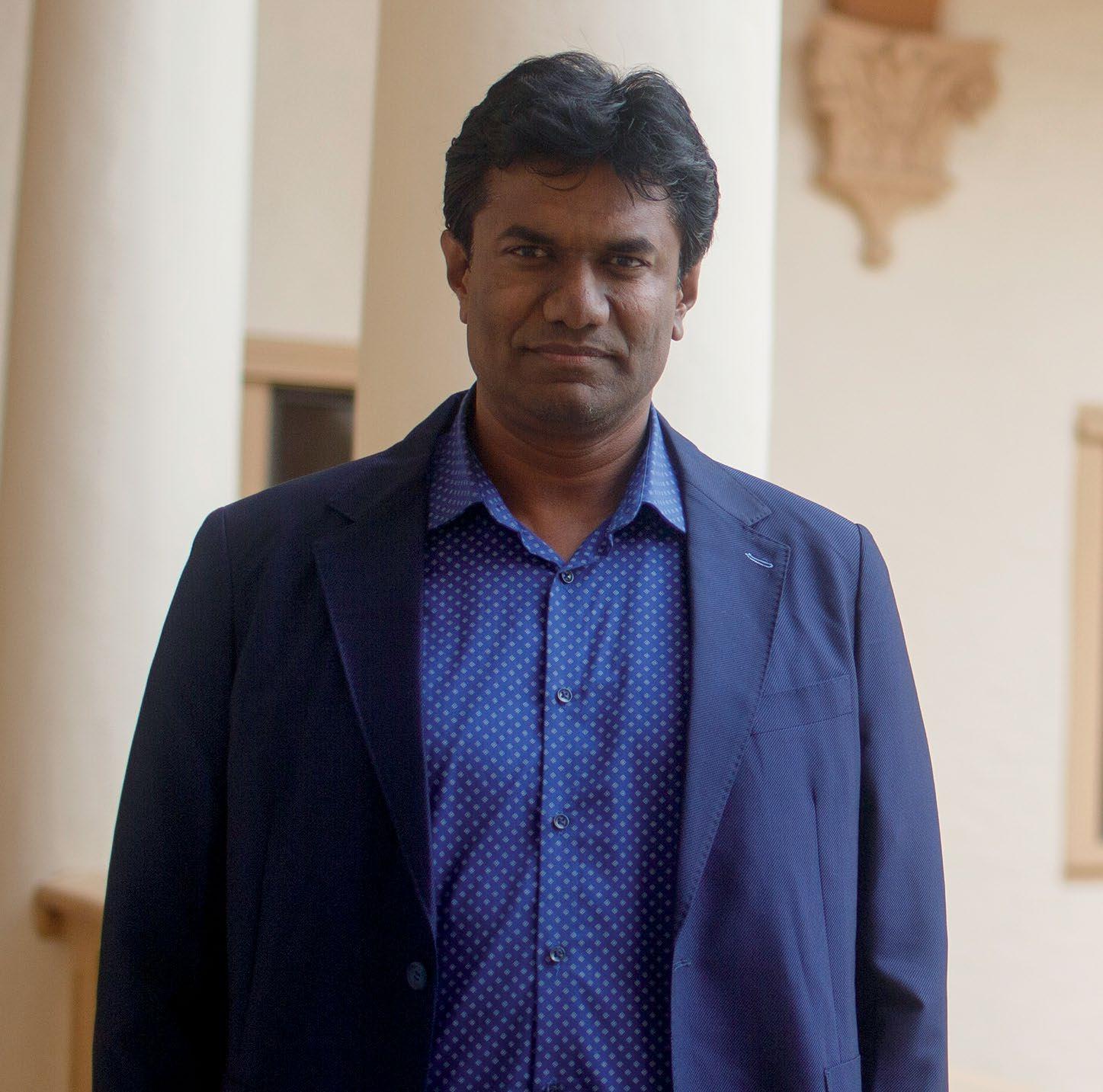
or New York, and there’s access to far more diversity in terms of people and skill sets.” CallHealth is the world’s first fully integrated digital platform providing access to everything about health. The company currently opperates out of Hyderabad, India, and plans to enter the U.S. market in 2023. While Miami’s geographic advantage as the trading hub for the Americas precedes the current influx of dollars and companies, that role is now expanding. “During my tenure as the Director of PortMiami, I traveled the world to meet with business executives and government officials in order to expand the port’s business,” says Bill Johnson, the current chairman of the World Strategic Forum, which just held its annual meeting at the Biltmore Hotel in Coral Gables. “As we worked tirelessly to sell Miami as a business destination, my colleagues and I would frequently refer to Miami as “the gateway to the Americas.” While that title is still accurate, it’s clear Miami has grown to become the hemisphere’s gateway to the world. In 2022, Miami is staking its claim as a global community.”
THE SUAREZ FACTOR
Suarez himself has been instrumental as a catalyst of this transformation. His relentless pushing of Miami as a hub for high tech
68 GLOBALMIAMIMAGAZINE.COM
“THE REASON WHY WE ARE CHOOSING MIAMI IS THAT IT IS STRATEGICALLY BETTER THAN NEW YORK OR CALIFORNIA FOR REACHING THE MARKETS OF NORTH AMERICA AND SOUTH AMERICA.”
DR. RAJU RAMA, CEO OF INDIA-BASED CALLHEALTH
2020-2023
Icahn Enterprises 2020
Softbank 2020
Nucleus Research 2020
Palm Drive Capital 2020
Founders Fund 2020
Elliott Management Corp 2020
Blackstone Group Inc. 2021
Payless Shoes 2021
Major Food Group 2021
R&B Realty Group 2021
Starwood Property/Starwood Capital 2021
Quinn Emanuel Urquhart & Sullivan 2021
FundKite 2022
Belong 2022
King & Spalding 2022
El Al Israel Airlines Ltd. 2022
Windstar Cruises 2022
Blockchain.com 2022
Siebert Financial Corp. 2022
Goldman Sachs 2023
SH Hotels & Resorts 2023
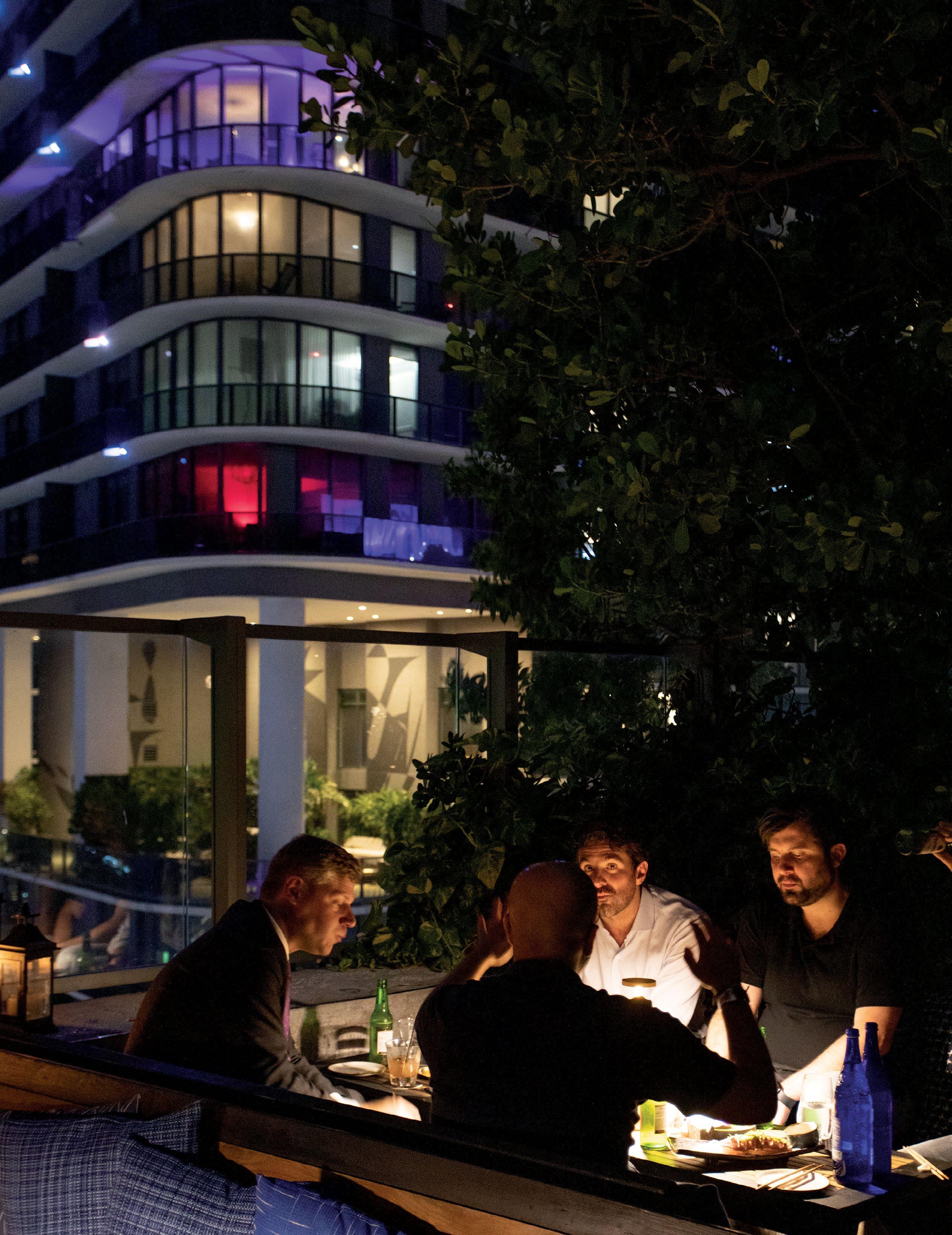
AerCap 2023
Citadel 2023
Kirkland & Ellis 2023
Winston & Strawn 2023
Thoma Bravo 2023
Microsoft Corp 2023
CI Financial 2023
A-CAP 2023
PricewaterhouseCoopers 2023
69
Thirty companies moved/ moving to Miami
PHOTO BY JONATHAN DANN
Venture Miami
BY KYLIE WANG
Itall started with a tweet. On December 4, 2020, Varda Space Industries founder and Founders Fund principal Delian Asparouhov logged onto Twitter and sent out a simple call to action: “ok guys hear me out, what if we move silicon valley to miami?” Miami Mayor Francis Suarez replied simply, “How can I help?”
And thus, the first domino fell.
Suddenly, there were a lot of eyeballs in the tech industry turning to Miami. As growth in the sector skyrocketed, there became a pressing need for an initiative to guide these technologists, entrepreneurs, and funders to success in Miami and support their companies and innovations. Venture Miami was born out of that need, a City of Miami office focused specifically on growing and maintaining Miami’s burgeoning tech hub.
Started by Mayor Suarez in January, Venture Miami “operates for the entire city as an economic development office focused on the tech and innovation industry,” according to Executive Director Erick Gavin. The office is split between business development and community engagement, with a concierge service to help companies moving to Miami with their relocations. They can help individuals with everything from obtaining a Florida driver’s license to finding tax credits for their businesses, even deciding on which schools are best for their children. The office also hosts hiring fairs and has a scholarship fund that provides free tuition to residents who have been accepted into STEM or high-wage, in-demand programs at four local universities.
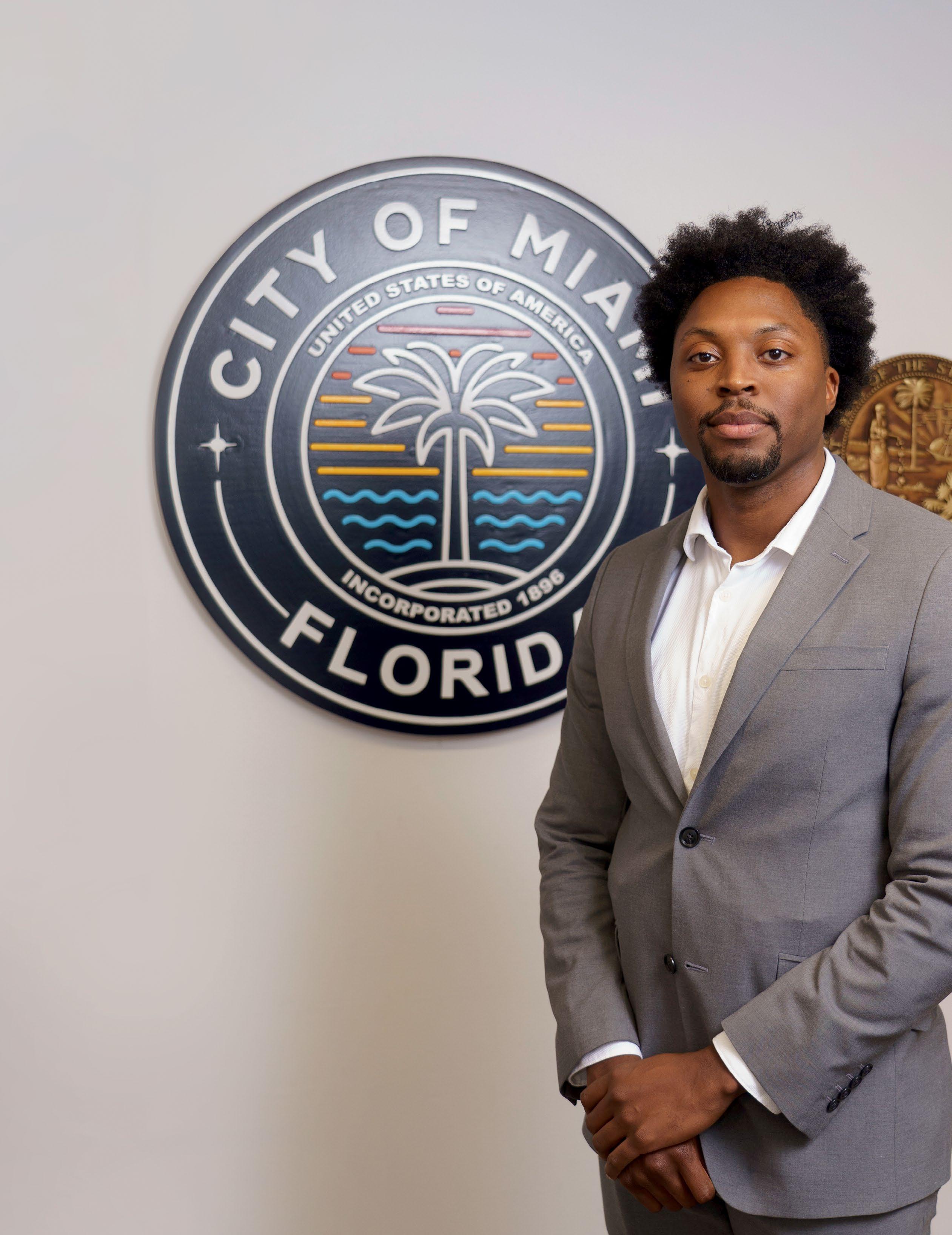
Venture also organizes the “Miami For Everyone” tech series, which encourages citizens to embrace the growing number of tech opportunities now available in Miami. Its “hackathon” event awards cash prizes to winners who build and submit a prototype to solve a local problem.
Though Venture Miami doesn’t discriminate based on industry, it finds the tech sector to be “the most innovative way to help serve citizens within Miami,” Gavin says. Partly because “technology has a very low access point – it’s easy for people to engage in – and it has a lot of upside potential for growth for the City.” Still, Venture Miami does describe themselves as “industry agnostic.”
To explore the services Venture Miami offers or join its Talent and Founder Database, visit venturemia.org or DM the team on Twitter at @VentureMiami.
ERICK GAVIN EXECUTIVE DIRECTOR
70
“VENTURE MIAMI OPERATES FOR THE ENTIRE CITY AS AN ECONOMIC DEVELOPMENT OFFICE FOCUSED ON THE TECH AND INNOVATION INDUSTRY.”
PHOTO BY RODOLFO BENITEZ
and fintech – including as the U.S. center for cryptocurrencies – has seen him selling the idea in opening remarks at events ranging from the eMerge Americas technology conference on Miami Beach in April, to Johnson’s World Strategic Forum at the start of November. “There is an attitude in Miami that has created an emergence,” he told the audience at the eMerge conference. To the Strategic Forum gathering, he cited “the transition of the world from an industrial economy of goods and services to an economy of digital assets.”
Suarez likes to recall his now famous 2020 tweet in response to the question, “What if you move Silicon Valley to Miami?” His reply was “How can I help?” – which he calls “a huge counter narrative to what was happening in American cities.” At the time, New York City had rejected Amazon’s plan to set up a headquarters there, and a city official in San Francisco had said “F*** Elon Musk,” which prompted the mogul to relocate to Texas. “So that was the context of the tweet,” says Suarez, “which was viewed by the tech community as the first mayor in America that gets it and understands that American prosperity is what’s going to propel successful cities into the future.”
He has also personally sold the idea of moving to Miami. At the Economic Club forum, Griffin noted how Suarez, as soon as he heard that Citadel was considering relocating, went to Chicago himself to present him options.
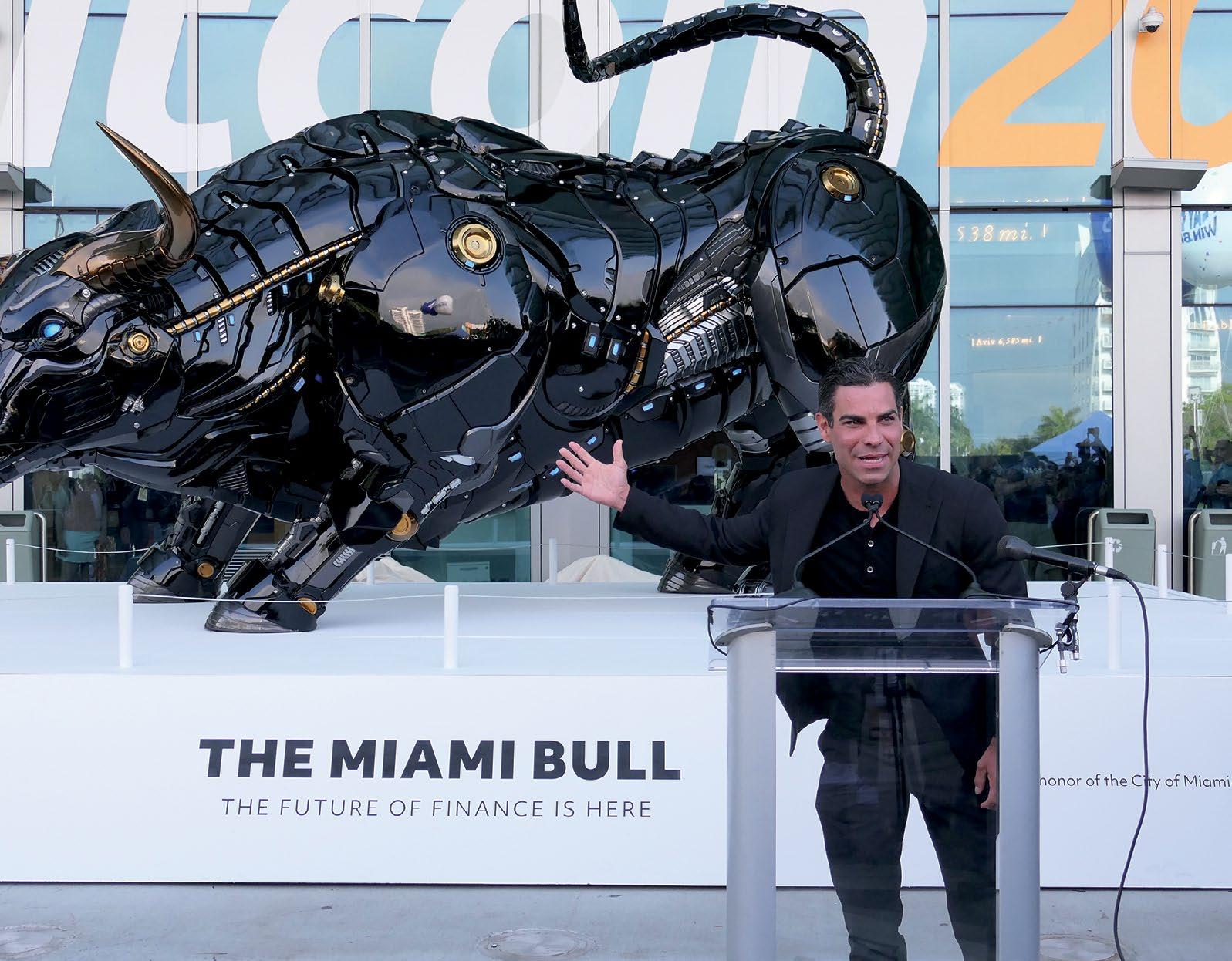
Among the attendees listening to Griffin at the forum was Ian Weisberger, the co-founder of CoinRoutes, a crypto trading platform that relocated from New York last year after Weisberger heard Suarez talking at a networking cocktail event on Miami Beach. “His whole attitude, about wanting to help businesses that move here, really appealed to me,” says Weisberger, who also hired staff from a city-sponsored Venture Miami job fair; his firm currently employs 32 in Miami.
“The ‘How Can I Help’ Suarez campaign has been the leading face of this movement, and as a community we have benefited from that effort,” says James Kohnstamm, executive vice president at the Beacon Council, the county’s economic development agency. Regardless of the cause, the pace of capital and corporations pouring into Miami in the last two years is nothing less than astonishing. Kohnstamm points not only to the influx of money and companies, but to the growing quality of the work force. “On the talent recruitment side, for much of 2021 Miami led the nation for talent migration,
the most popular of any U.S. metro area,” he says. “The main place they were coming from is New York, then California, [but] we’ve kind of hit a tipping point where we are now a global talent destination.”
One consequence of the new, smart labor pool, says Kohnstamm, is a burst in venture capital financing of novel ideas. VC raised for fintech companies in Greater Miami rose from $120 million in 2020 to $2.28 billion in 2021; VC for health-tech companies rose from $376 million in 2020 to just over $1 billion in 2021. “Just in the month of September, it was reported that South Florida pulled in a half billion [in VC investments] in one month,” says Kohnstamm.
Still, the biggest of all the moves was that by Citadel, with its $50 billion in assets. An initial relocation of several hundred staffers in early 2023 is expected to blossom into 1,000 employees. Griffin’s firm will initially move to the 830 Brickell Building, the city’s newest office tower. There Citadel will join other tenants that include Microsoft, New York-based insurance firm A-CAP, private equity firm Thoma Bravo, and AerCap, among others. CI Financial, Canada’s largest wealth management firm ($245 billion in assets), will occupy 20,000-square-feet in the building when it opens in January; Chicago law firm Winston & Strawn LLP will occupy 35,000-square-feet in the 55-story tower. The 830 Brickell building is just one of
71
“What if we move Silicon Valley to Miami?”
“How can I help?”
@ZEBULGAR
MAYOR FRANCIS SUAREZ
THE WALDORF ASTORIA MIAMI (100 STORIES, 1,040 FEET)
OKAN TOWER (70 STORIES, 902 FEET)
BACCARAT RESIDENCES (75 STORIES, 828 FEET)
ASTON MARTIN RESIDENCES (66 STORIES, 818 FEET)
ONE SOUTHSIDE PARK (62 STORIES, 754 FEET)
830 BRICKELL (50 STORIES, 734 FEET)
E11EVEN HOTEL & RESIDENCES (65 STORIES, 698 FEET)
E11EVEN RESIDENCES BEYOND (65 STORIES, 698 FEET)
LEGACY MIAMI WORLDCENTER (55 STORIES, 691 FEET)
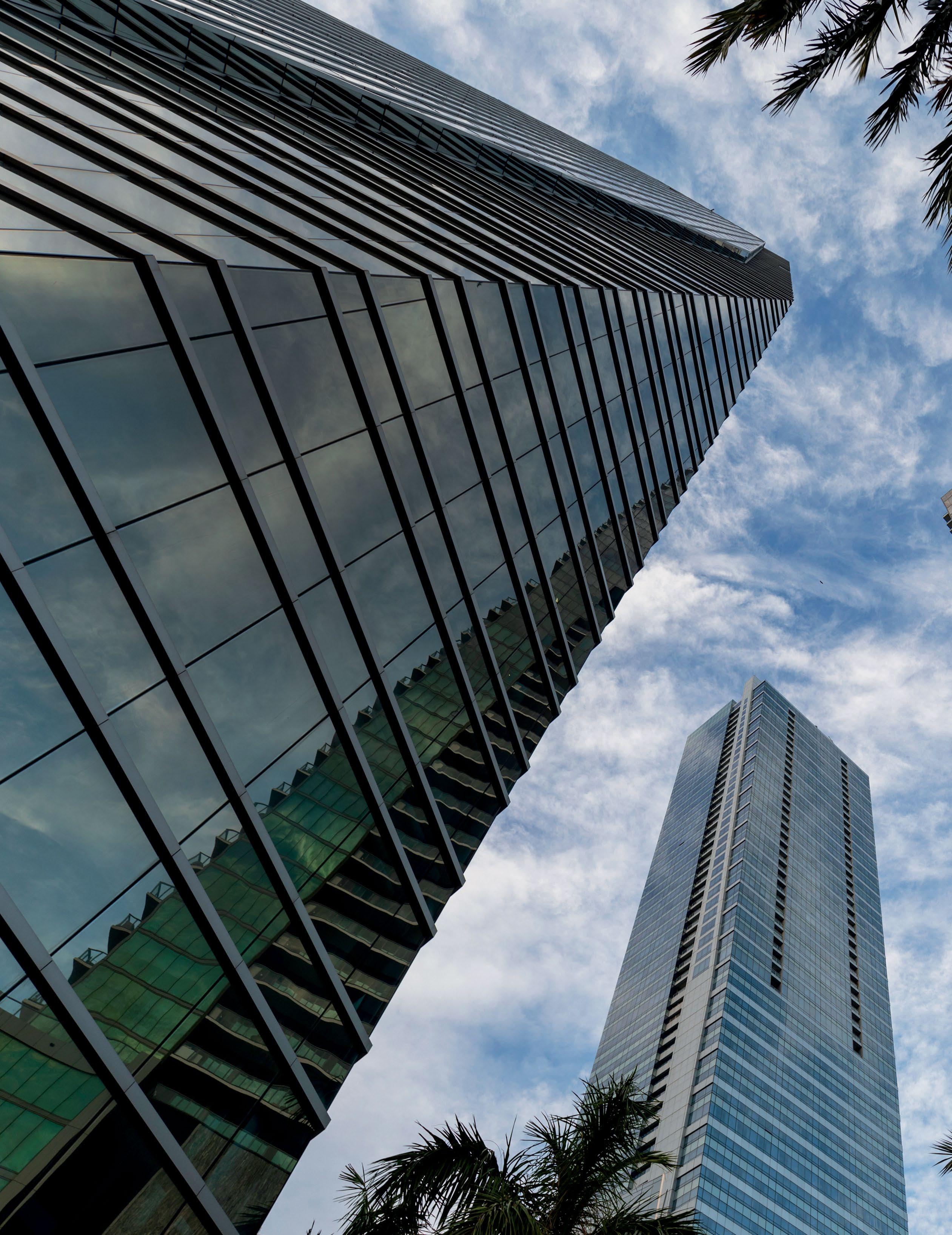
MISSONI BAIA (57 STORIES, 649 FEET ABOVE SEA LEVEL)
MIAMI RIVER (54 STORIES, 640 FEET)
ARIA RESERVE TWIN TOWERS (60 STORIES, 637 FEET)
UNA RESIDENCES (46 STORIES, 613 FEET)
NATIIVO (51 STORIES, 588 FEET)
MIAMI WORLD TOWER (53 STORIES, 579 FEET)
THE ELSER (49 STORIES, 573 FEET)
DOWNTOWN 1ST (58 STORIES, 557 FEET)
CANOPY CLUB (44 STORIES, 546 FEET)
ST. REGIS RESIDENCES MIAMI (TWIN TOWERS 48 AND 47 STORIES)
MIAMI WORLDCENTER (55 STORIES)
Tallest 20 Towers Under Construction in Miami 2022
72
PHOTO BY RODOLFO BENITEZ
the new buildings transforming the Miami skyline. To house both companies and their growing workforce, no fewer than two dozen high rises are underway, filling the sky with cranes. Among them: the $400 million mixed-use Okan tower, the $426 million Waldorf Astoria hotel/condo skyscraper, and the One Brickell City Centre office tower, with 1.6 million-square-feet of space. Both latter projects will be coming in at more than 1,000 feet tall, creating the impression of a Miami mo43 similar in appearance to Hong Kong than a typical Southern U.S. city. Of the top ten tallest buildings either completed or under construction, all are at 700 feet or taller, with much of the funding coming from foreign capital – Okan by
THE BRICKELL SKYLINE IN MIAMI IS PART OF THE DOWNTOWN AREA BEING TRANSFORMED BY MORE THAN TWO DOZEN HIGH RISE MIXED-USE BUILDINGS CURRENTLY UNDER CONSTRUCTION. THIS INCLUDES 830 BRICKELL WHICH WILL BE THE NEW HOME OF CITADEL, THE FINANCIAL GIANT FOUNDED BY KEN GRIFFIN
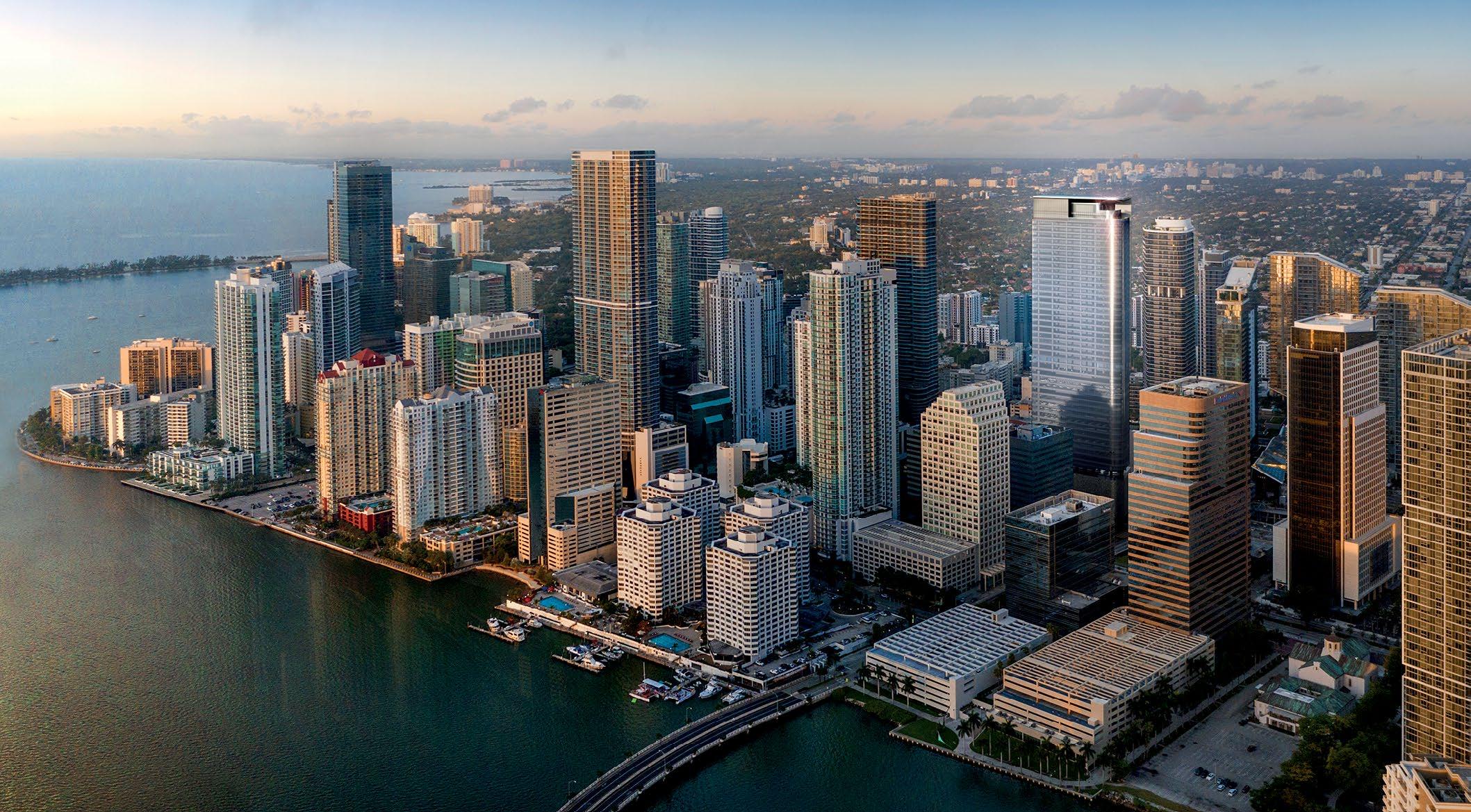
Turkish investors, for example, and One Brickell City Centre by Hong Kong-based Swire properties in partnership with New York-based Related.
“Many financial giants have moved their headquarters to Miami,” says Mayor Suarez. “We’ve estimated roughly $2.5 trillion dollars’ worth of assets under management have moved to Miami in the last 24 months alone. If you don’t think that statistic isn’t getting attention around the world, I can tell you it is.

“What’s happening now is you are seeing a metamorphosis of Miami from the capital of the Americas to one of the most globally significant cities in the world. We
are in the center of five meta markets – New York, Silicon Valley, South America, the Middle East, and Europe – where we have direct flights to all. So, we have the ability to be a central force in a decentralized world. Being a center for the aggregation capital and the deployment of capital is going to make us a very prominent city. I call it the Capital of Capital.”
As Kohnstamm puts it, “We’re experiencing what I’ve been calling dynamic demand. There is such an interest in our market, not only from businesses but from talent and investment and just for the destination of Miami. People want to be part of what we are and where we are going.” l
73

74
MEITAL STAVINSKY ON BRICKELL AVENUE: OPTIMISM VINDICATED
THE LINKS BETWEEN MIAMI AND ISRAEL’S HIGH TECH
BY DOREEN HEMLOCK
In 20 years building the tech business links between Israel and Miami, Meital Stavinsky has never seen bonds so strong, nor felt so optimistic. Israel is now blooming as the “Start-Up Nation,” known for innovation and home to the world’s largest concentration of tech companies outside Silicon Valley. And Miami is emerging as a tech hub, with an influx of ventures, talent, and capital since COVID-19 began, some from Israel.
“All the stars aligned,” says Stavinsky, who leads the Israel practice at Holland & Knight law firm in Miami, helping Israeli companies expand in the U.S. and advising on U.S.-Israel business and regulations. “When I came here 20 years ago, I was looking for that tech convergence. Now, it’s here.”
Stavinsky sees evidence of stronger ties in the type of offices that Israeli tech companies are opening in Miami these days. For
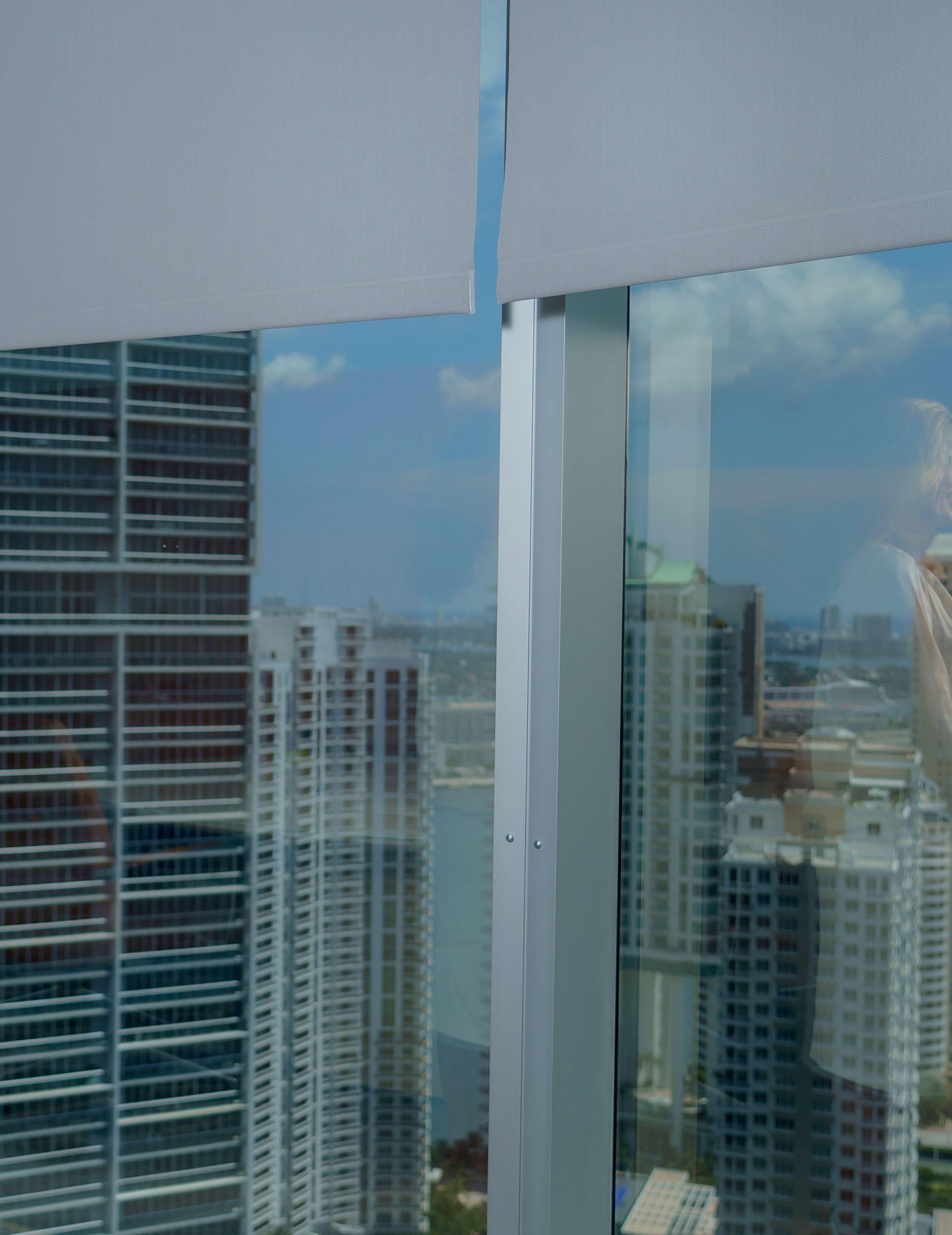
75
PHOTO BY RODOLFO BENITEZ
decades, Miami was a second stop for Israeli business in the U.S., after New York or California. Some companies set up regional or Latin American hubs in South Florida, but few had their U.S. headquarters in Miami, often preferring to keep those key offices in the Northeast or on the West Coast.
“It used to be that the Israeli companies in Miami would be mostly sales offices, with minimal senior management from Israel,” says Stavinsky. “Now, more and more tech companies are establishing their U.S. headquarters in Miami to expand across the Americas, with senior management relocating to Florida.”
That’s the case with Yair Benyamini, co-founder and CEO of Lendai, a fin-tech company based in Tel Aviv. Lendai lends money to international buyers of U.S. real estate. It has raised more than $35 million to develop its business. The company helps qualified buyers with little or no U.S. credit history, who often can’t get loans from U.S. banks. It uses artificial intelligence (AI) for research to assess risk.
Benyamini started Lendai in 2019 and moved to Miami in September 2021. It helped that his wife’s parents live in Aventura, just north of Miami, and he’d visited the area many times. But the real lure was business: Miami is now the top market for foreign investment in U.S. real estate. It’s a vibrant tech and finance hub, with lots of start-ups and strong support for technological innovation. Travel is simple: Israel’s El Al and American Airlines both offer direct Miami-Tel Aviv flights. And the East Coast time zone is the closest in the U.S. to Israel’s.
Today, Lendai employs 40 people worldwide, with 10 in Miami – and growing, says Benyamini. “Ten years ago, you had to go to New York or Silicon Valley to find good tech talent,” says Benyamini. “Now, the talent comes to you if you’re in Florida. It’s a great place to open an office.”
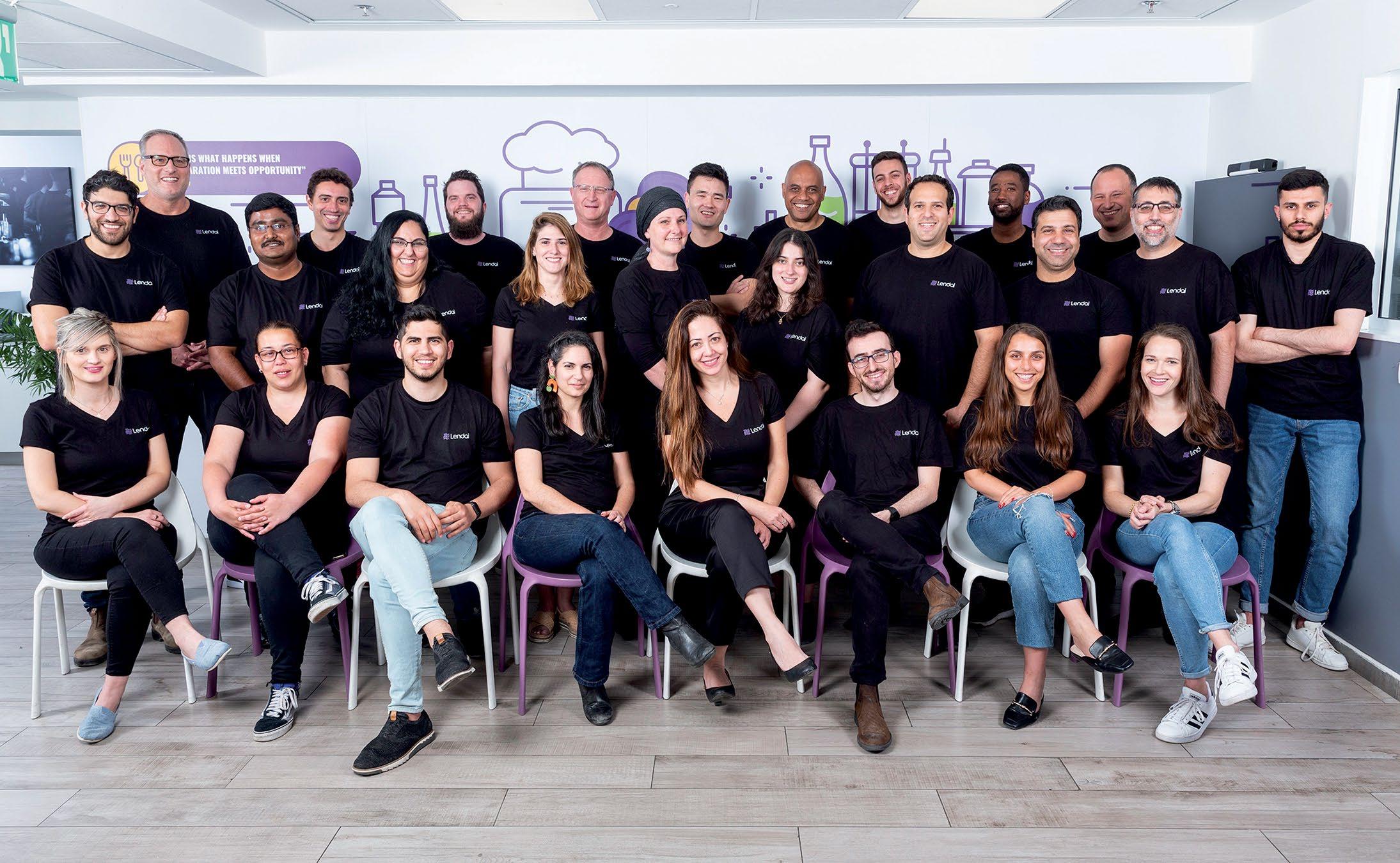
Beyond Lendai, the CEO enjoys South Florida’s lifestyle:
warm weather, beaches, an ample Jewish community, fellow Israeli entrepreneurs, and even family nearby – all like Israel.
THE KNIGHT FOUNDATION PLANTS THE SEEDS
How did the tech ties become this strong? Florida and Israel have a long history in trade and business. Enterprise Florida, the state’s economic development group, has had an office in Tel Aviv since 1998, and Florida governors for decades have taken delegations to Israel to boost links in commerce and beyond.
But the tech bonds also build on efforts by the John S. and James L. Knight Foundation in the 2010s to develop Miami’s tech ecosystem, seeding accelerators, conferences, and other programs. Brian Siegal, who leads the Miami-Dade and Broward office of the America Jewish Committee (AJC), reached out. He was friendly with the Foundation’s then-Miami director Matt Haggman and knew Haggman had read the 2009 book, “Startup Nation,” about Israel’s tech success. The AJC routinely takes groups to Israel.
76 GLOBALMIAMIMAGAZINE.COM
Ten years ago, you had to go to New York or Silicon Valley to find good tech talent. Now, the talent comes to you if you’re in Florida.
YAIR BENYAMINI, CO-FOUNDER AND CEO OF LENDAI, ABOVE: 2ND ROW, 4TH FROM RIGHT
A sampler of Israeli companies in greater Miami
AROMA ESPRESSO BAR, café chain. Founded in 1994 in Jerusalem. More than 200 locations worldwide, many in single-locale franchises. Locations in Miami Beach, Miami Gardens, and Downtown Miami.
EL AL AIRLINES, Israel’s national airline. Founded in 1948. El Al has operated direct Miami-Tel Aviv flights since 2017. It plans to move its U.S. headquarters from New York to South Florida, partly to lower costs.
HASALON, fun, upscale restaurant, led by Chef Eyal Shani. Opened in 2021 in Miami Beach at former China Grill site. Minimum food order of $120 per person at its latenight seating, which shifts to dancing.
INSIGHTEC, non-invasive surgery practice that uses focused ultrasound to treat tremors and other disorders. Based in Haifa, with U.S. headquarters in Downtown Miami. CEO is Miami entrepreneur Dr. Maurice R. Ferre, son of Miami’s former mayor of the same name. Dr. Ferre also developed Mako Surgical, which sold for $1.65 billion in 2013. Insightec employs 400 people worldwide in Israel, Miami, Dallas, Shanghai, and Tokyo.
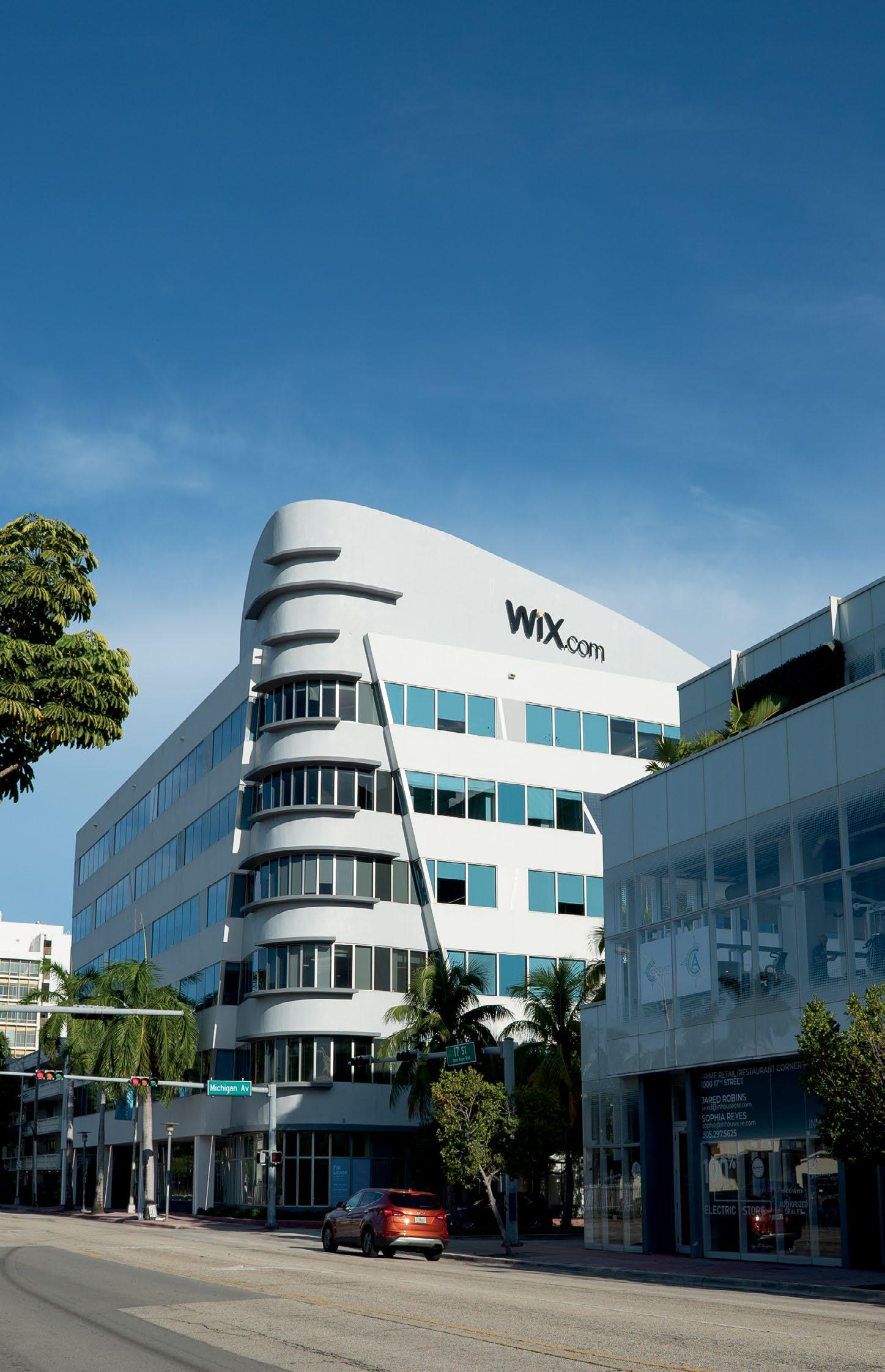
ISRAEL DISCOUNT BANK, commercial bank. Founded in 1935. Has a U.S. unit now called IDB Bank of New York, which started in 1949. Israel Discount has an office on Brickell and IDB Bank a branch in Aventura. The bank is known for a focus on digital banking and fin-techs.
MOMENTIS SURGICAL, robotic surgery, formerly Memic Innovative Surgery. Based in Tel Aviv, with a Fort Lauderdale office that handles global customer service and more. Founded in 2013. Obtained a $96 million Series D funding round in 2021. Chairman is Maurice R. Ferre, CEO of Insightec.
WIX, website builder. Based in Tel Aviv, with a Miami Beach office since 2015. Bought South Florida startup SpeedETab in 2021. Has 300-plus employees in Miami Beach, including multilingual customer service staff. Aims for 450 people in Miami Beach by 2025. Global revenues topped $1.1 billion in 2021.
ZIM INTEGRATED SHIPPING SERVICES, international cargo shipping. Based in Haifa. Started in 1945 and trades on the New York Stock Exchange since 2021. Office at PortMiami.
77
Source: Company reports; Global Miami research.
Cyber Warrior Training
WITH CYBERSECURITY JOB GROWTH EXPLODING, AN ISRAEL COMPANY HOPES TO FILL THE DEMAND
BY DOREEN HEMLOCK
Around the world, cyber crime poses a growing challenge. Yet some 3 million cybersecurity jobs remain unfilled, because too few people have the skills needed.
Enter ThriveDX, an Israeli company offering cybersecurity training for entry-level positions and beyond. In Israel, theirs is the nation’s largest cybersecurity training program. Now, it’s going global, partly from its U.S. hub in South Florida, with a new global talent match-making program recently unveiled at a White House summit.
ThriveDX works on three fronts, says co-founder Dan Vigdor: partnering with schools, including University of Miami and NYU; training staff at major companies, including Microsoft and Toyota; and running its new Cyber Talent Hub that links graduates with jobs, often adding “last-mile” training needed for specific positions.
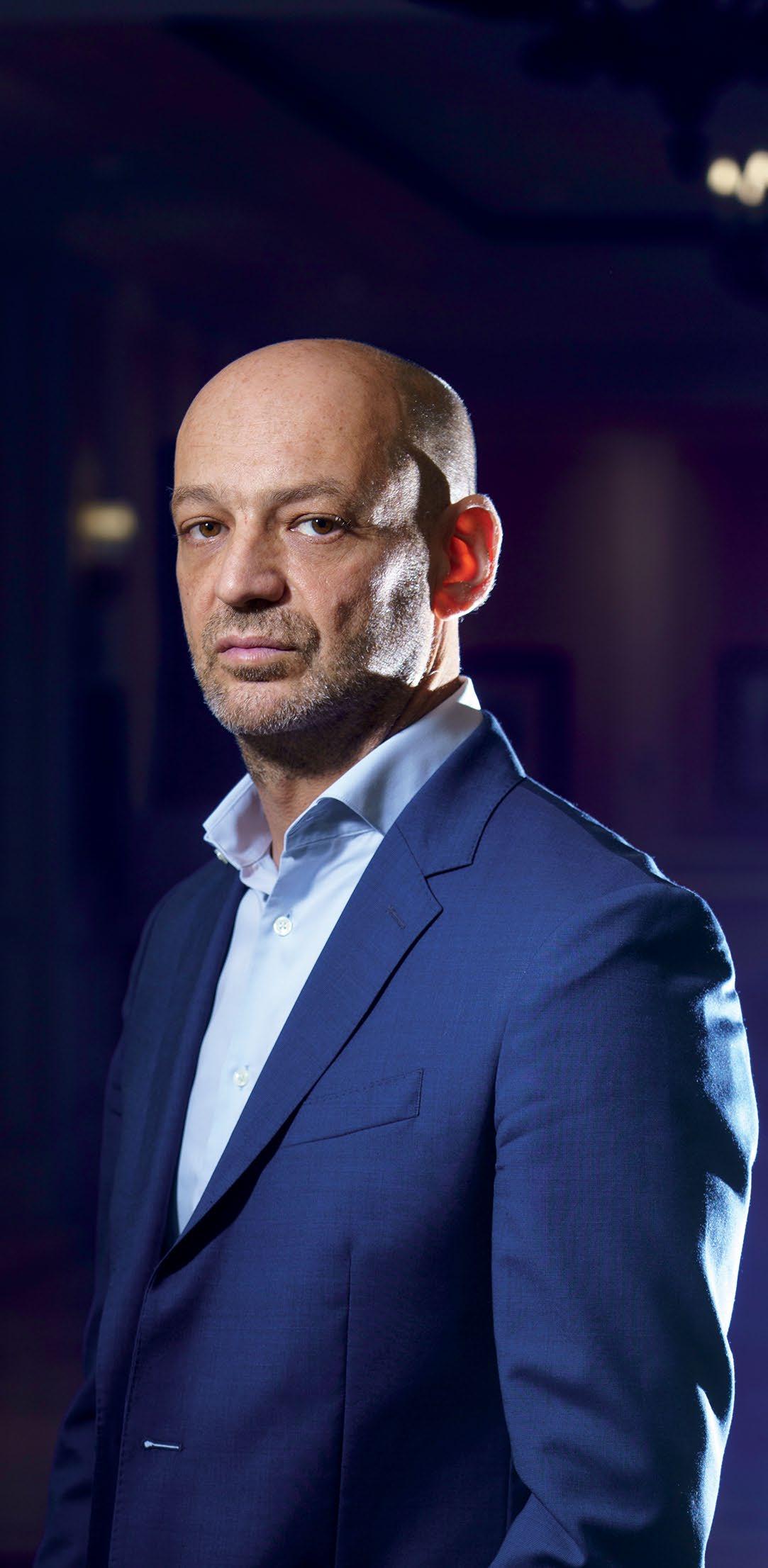
The company trains thousands of people each year in Israel, the U.S., Europe, and Asia, including mid-career professionals and students from under-resourced communities. Graduates new to the field are vital to fill entry-level posts and develop a talent pipeline at a time when 600,000 cybersecurity jobs remain unfilled in the U.S. alone, says Vigdor. “Today, there’s a crazy competition in cybersecurity, where companies are poaching staff from one another and Chief Information Security Officers are earning $5 or $6 million a year at large companies,” he says. “We want to build a sustainable cybersecurity talent pipeline.”
A serial entrepreneur raised in South Florida, Vigdor launched his venture in 2006 with a friend, Gil Adani. The two met while serving in a tech unit of the Israeli Defense Forces (IDF). “We took the learnings we had from the IDF to formulate our business,” says Vigdor. “There, you have to learn comprehensively and fast, and you have to find the best people to educate and implement immediately, because it’s a matter of life and death.”
The co-founders grew their venture quickly in Israel, which produces an estimated 40 percent of the world’s cybersecurity technology. In 2016, they set up U.S. headquarters in Coral Gables – not far from Key Biscayne, where Vigdor’s dad introduced Israeli windsurfing gear in the 1980s.
Initially, the training venture was known as HackerU. But the business re-branded last year after making several acquisitions. This year, ThriveDX raised more than $100 million in new funding, co-led by investors Prytek and Night Dragon, taking total investment past $200 million.
With the extra cash, ThriveDX is scaling up, expanding beyond its current partnerships with some 50 universities. Vigdor hopes U.S. government agencies will help low-income students with scholarships or loans to complete the training, the way that Israel’s government does. The need for such training is clear; the U.S. Bureau of Labor Statistics expects “information security analyst” to rank among the country’s 10 fastest-growing jobs over the next decade.
“In the U.S., over 50 percent of our students come from diverse communities, earning less than $30,000 a year. We’re transforming people’s lives, training them in cybersecurity and digital skills for a career with amazing upward mobility,” says Vigdor. ThriveDX hopes to boost global staff to 3,000-plus by year’s end, up from 2,200 earlier this year – including more employees in South Florida. l
78 GLOBALMIAMIMAGAZINE.COM
DAN VIGDOR, CO-FOUNDER, THRIVEDX
We want to build a sustainable cybersecurity talent pipeline.
“Wouldn’t it be interesting to take a delegation of Miami tech entrepreneurs to Israel and see what the best practices are and build bridges?” Siegal suggested. Haggman agreed.
In March 2015, Siegal led some dozen Miami tech leaders from the Knight Foundation, Endeavor, Venture Hive, and other key groups to meet with government, business, and university leaders in the AJC’s first Project Interchange mission. “The goal was to bring back ideas to help Miami build its ecosystem and establish some ties with Israel,” he says. Initiatives quickly sprouted. The IDEA Center at Miami-Dade College (MDC), for example, signed a memorandum of understanding with the Tel Aviv University Entrepreneurship Center. MDC then launched a cybersecurity training program and held a “Startup Nation” conference with Israeli tech founders.
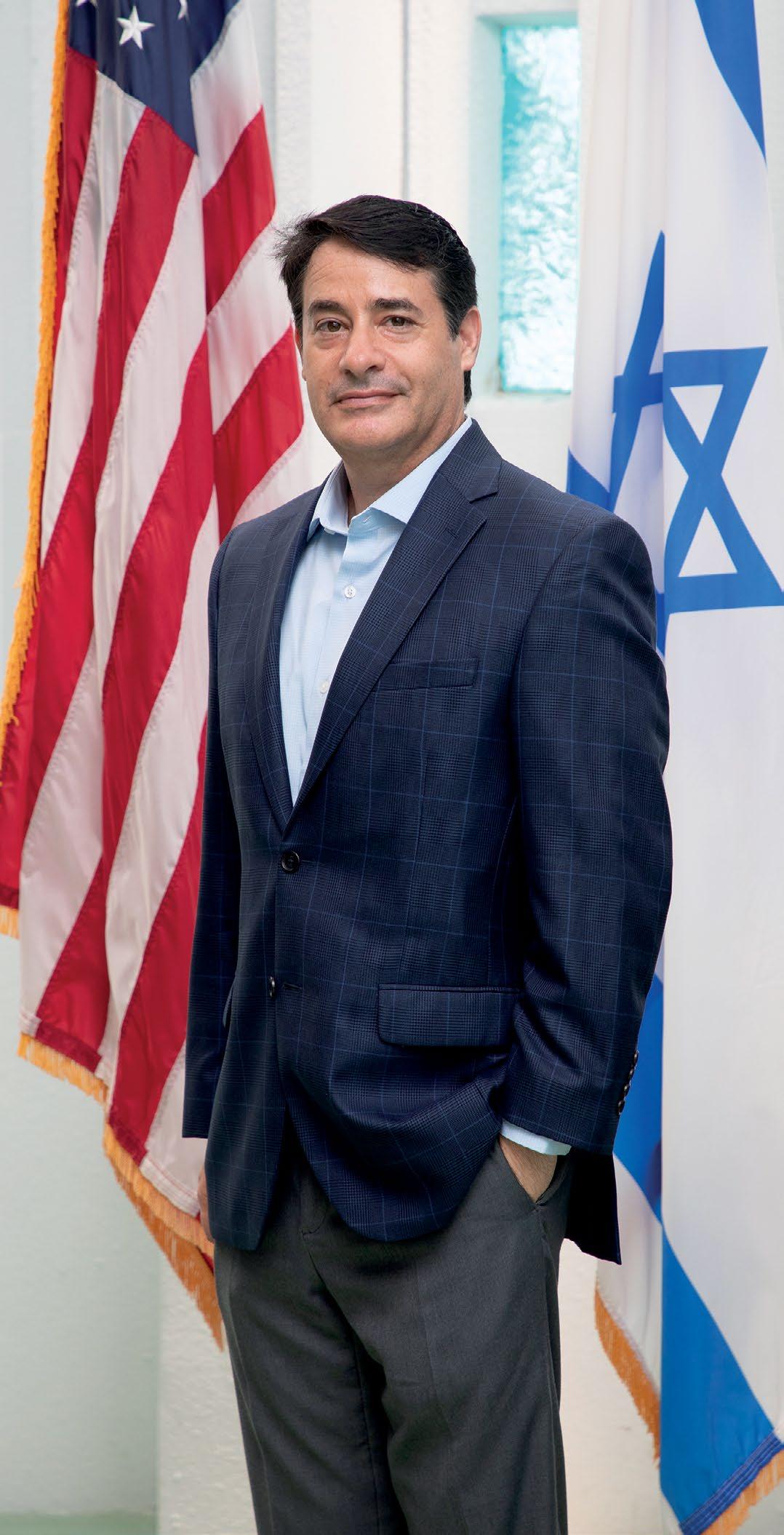
AJC organized a second Miami tech delegation to Israel in 2016, a third in 2017, and a fourth in 2019. It plans a fifth this year, working with the Knight Foundation’s current Miami director, Raul Moas. In addition, a conference is set for November at Florida International University (FIU) where Israeli and Miami tech leaders will share experiences.
Siegal says the visits to Israel surprised some first-timers. “Many people think of Israel as a war-torn place, because a lot of what you hear in the media is about conflict. But when they get there and see a society tackling global issues, it’s mind-blowing for them,” says Siegal. “They see this ancient culture mixed with all this innovation. And what’s fun for me is to see the consternation and surprise in their eyes.”
Other Miami groups are building bridges with trips too. Miami-Dade Mayor Daniella Levine-Cava, the county’s first Jewish mayor, co-led a delegation of 50-plus people to Israel this spring in a visit organized by the Greater Miami Chamber of Commerce. Delegates visited tech companies active in varied sectors, such as AI, transport, healthcare, water use, and climate resilience.
“Our trip to Israel was centered around engagement with technology firms in the country that are interested in expanding in the United States. And I made sure that they knew, if they want to operate in the U.S., it should be in Miami-Dade,” says Levine-Cava, noting that the county is tops for growth in tech jobs nationwide. “This is the best place for them to build, invest, and hire.”
Among results from that visit: PortMiami renewed a sister seaport agreement with the Port of Haifa to boost cargo and cruise activity between the two ports (since it was first signed in 2017, PortMiami’s trade with Israel has grown 136 percent.) Plus, FIU partnered with the Israel Institute of Technology, or Technion, which ranks among the world’s top 10 universities for science and tech research and is a cornerstone of “Start-Up Nation.” Technion started R&D into aeronautics in 1948 to help Israel’s nascent air force.
eMerge Americas, the group started by Miami entrepreneur Manny Medina to make South Florida a tech hub for the Americas, also plays a pivotal role. It hosted a 10-company Israeli delegation at its 2015 conference in Miami Beach and has consistently forged tech ties between the two areas.
WHY ISRAEL SHINES AS THE “START-UP NATION”
Israel is a small country – about the size of New Jersey, or roughly the area of Miami-Dade, Broward, Palm Beach, and Monroe counties combined. It has only 9.5 million residents, less than half the population of Florida. Yet today, it produces more startups per capita than any nation in the world.
Part of the secret, Israelis say, is close collaboration between
79
The goal was to bring back ideas to help Miami build its ecosystem and establish some ties with Israel.
BRIAN SIEGAL, OF THE MIAMI-DADE AND BROWARD OFFICE OF THE AMERICA JEWISH COMMITTEE, LED A GROUP OF MIAMI TECH LEADERS TO ISRAEL ON A “PROJECT INTERCHANGE” MISSION WITH AJC.
PHOTO BY JONATHAN DANN
Hospitality... Streamlined
SOFTWARE FROM ISRAELI COMPANY TABIT IS MAKING RESTAURANTS ACROSS THE U.S. EASIER TO OPERATE
BY DOREEN HEMLOCK
Walk into the trendy Asian-fusion restaurant Kyu in Wynwood, and you’ll find servers with iPads taking orders electronically and clicking to send those requests to the kitchen. There’s no paper or pen, no walking the ticket to the chefs to order the Wagyu Beef Brisket. Later, your bill comes on the iPad too.
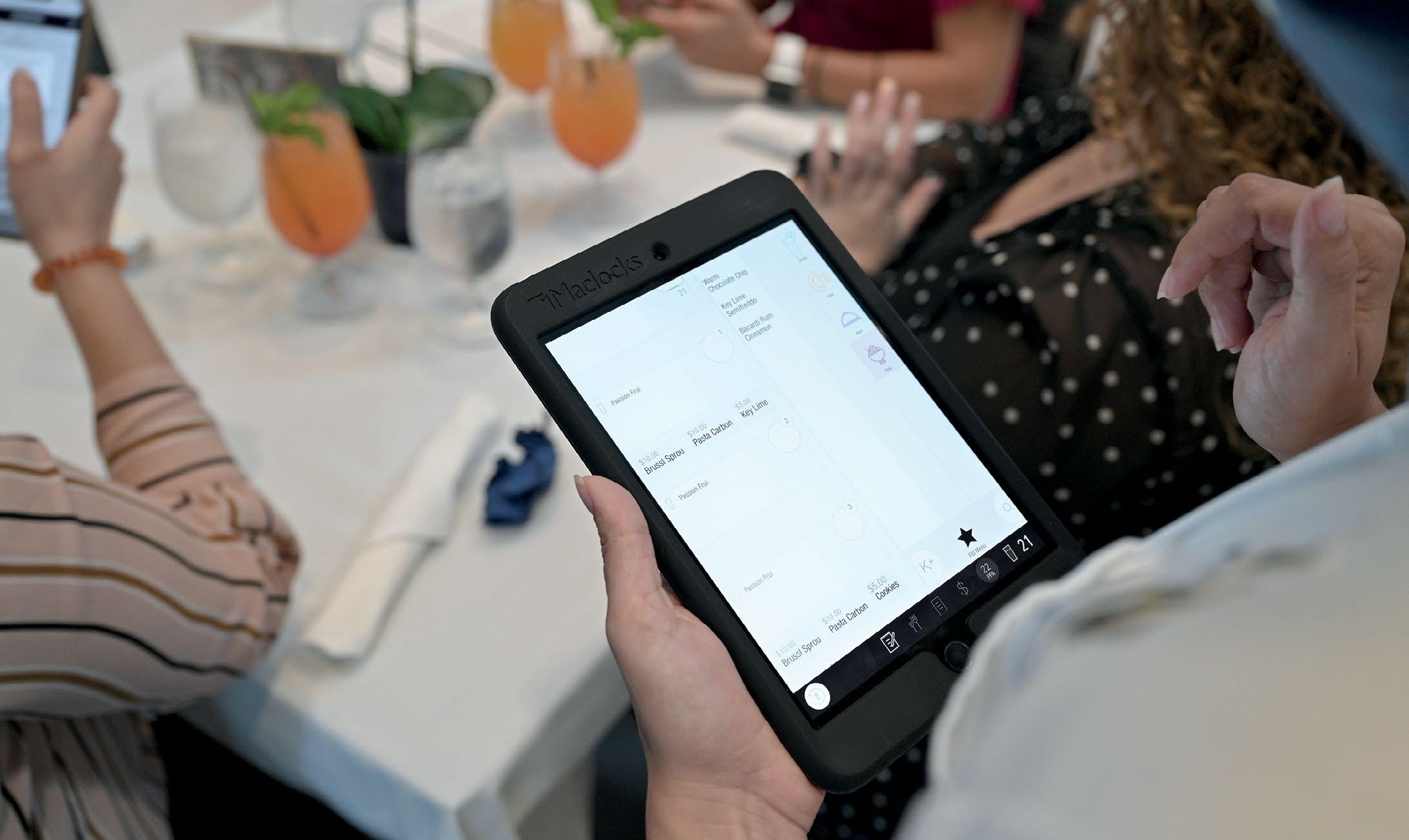
Credit Tabit Technologies, an Israeli company whose mobile-first platform helps restaurants and hotels streamline operations. Tabit’s cloud-based platform was built to benefit everyone in hospitality: servers, kitchen staff, owners, delivery folks, and customers. In Israel, the platform is now used by more than half the country’s larger restaurants, says co-founder and President Nadav Solomon.
Tabit set up its U.S. headquarters in North Miami in 2020. It’s now expanding across the United States, with its software in restaurants from New York and Chicago to Dallas and Lansing, Michigan. The company also is partnering with Florida International University, training students at FIU Bistro to use its platform and showcasing its offerings at the South Beach Wine & Food Festival that FIU helps run, Solomon says.
Key to Tabit’s success: data. Solomon says restaurants often focus on food and ambience, not keeping close tabs on operations. Yet more efficient operations can boost performance and profits. For example, more accurate and quicker ordering can turn over tables faster and help servers earn more tips.
Solomon and a partner, Barry Shaked, founded Tabit in Tel Aviv in 2014. Shaked had experience in retail; he’d earlier founded a company that made point-of-sale software for stores and then sold
the business to NCR for $800 million. Solomon had a background in the food business: he’d studied biotech and food engineering and had done strategic consulting in the food industry.
The partners long aimed to expand to the U.S., given Israel’s small market. They first tried to grow from Dallas, where Shaked had business contacts. But they soon switched U.S. headquarters to South Florida, an area Solomon describes as similar to Israel: coastal, international, multilingual, and innovative, with lots of independent hotels and restaurants and an openness to newcomers. “In Miami, people are warm and embraced us. There’s a great tech community. The government helps. And I have Israeli friends in startups who relocated here,” says Solomon. “I feel like I felt in Tel Aviv.”
Today, Tabit employs some 35 people in North Miami of a total 240 worldwide. It expects staff to increase to 55 in North Miami and 310 globally by January, bolstered by funding that now tops $100 million, led by Vertex Ventures Israel, says Solomon.
Growth is expected not only from restaurants in the U.S. and Israel – Tabit now serves 1,500-plus eateries in those two countries – but also from hotels and new international markets. Tabit launched in the Bahamas and Greece this year and plans to start up soon in Germany.
Of course, global expansion brings challenges, some because of the larger scale. “When we start with a restaurant in Denver, we need to make sure we have people there,” says Solomon, as he builds a far-flung sales network. “In Israel, you don’t think about that; you can drive anywhere in two hours.” l
80 GLOBALMIAMIMAGAZINE.COM
government, business, and academia. Israel’s government funds programs to nurture research and start-ups. Also vital: Israel’s resilience and ability to adapt, a trait often linked to the military service that most Israelis do, both men and women.
“At 18, we learn very quickly how to protect the country and think outside the box,” says Dan Vigdor, co-founder of Israel’s ThriveDX, which trains people in cybersecurity and has its U.S. hub in Miami. “That practical, skills-based approach from the army, we bring to tech.”
Resilience also includes respect for missteps and their teachings. “It’s okay to fail, to talk about your failures in Israel,” says Lendai’s Benyamini. “There are actually evenings called F-up Nights at bars, where you talk about the lesson you learned. Because when you succeed, you never really know why. It could be luck. But when you fail, you know exactly what happened. It’s much easier to learn from failures.”
Still, cultural differences sometimes make Miami-Israel business tricky in tech and other fields.
Israel’s consul general in Miami, Maor Elbaz-Starinsky, reminds fellow Israelis that it’s not enough to speak English to succeed in the United States. “Learn American,” counsels Israel’s representative to Florida, Kansas, Missouri, and Puerto Rico. That means, for example, learn how Americans run a business meeting (more formally compared to Israel), how they dress (less casually), and how they speak (usually less directly).
“If you hear ‘Let’s have dinner one day,’ in Israel, it means, ‘Let’s have a Shabbos dinner [Friday night] with the whole family,’” says Elbaz-Starinsky, “But in America, it doesn’t mean that.”
Israelis are known for their assertiveness or “chutzpah,” a Yiddish word appropriated into Hebrew. They sometimes ask direct questions that can rub Americans the wrong way and may seem too personal. Some link that sense of chutzpah to the Jewish tradition of inquiry into religious teachings.
“In Israel, a friend comes to your apartment, and the first question is: ‘How much do you pay for rent?’ But no one would ask that in the U.S.,” says Benyamini. “In Israel, everything is out on the table. There’s no privacy. It’s like one big family. Of course, it’s not like that in the U.S., Canada, or Europe.”
Coaching Israelis in U.S. business culture was the initial thrust of the Florida-Israel Business Accelerator (FIBA), an initiative begun in 2016 by Tampa’s Jewish Federation and Jewish Community Centers. The program started out bringing cohorts from young Israeli companies to Florida to coach them, match them with customers and investors, and encourage them to set up in the Sunshine State.
Rakefet Bachur-Phillips co-directs the FIBA program and learned many of those cultural lessons the hard way. An Israeli marketer, she came to Tampa to work in the U.S. office of an Israeli medical start-up. She found that in healthcare, the U.S. system is totally different than Israel’s – with organizations typically larger, more hierarchical, more formal, and slower to make decisions. That means Israelis need coaching on how to find the right decision-maker, how to deliver a polished presentation, and how to spell out next-steps in the sales process before they leave a meeting, says Bachur-Phillips.
She chuckles recalling a misstep by one visiting Israeli, used to his country’s more informal culture. In Israel, many people smoke, so the visitor, on greeting a top U.S. exec for the first time, amicably asked, “Do you want to go out for a smoke before the meeting?” He learned not to do that, she says.
Merchandise Trade Between Florida and Israel
Cars, vehicles: $21.5 million
Perfumes, eau de toilette: $15.6 million
Lasers, opticals: $5.9 million
Medical, surgical instruments: $25.6 million
Aircraft, spacecraft, launch vehicles: $18.4 million
Phone sets, receivers for voice/image/data: $16.2 million
So far, FIBA has assisted more than 70 Israeli companies that have raised $885 million-plus in funding, says Bachur-Phillips. Fifteen of those established a Florida presence, creating at least 50 tech jobs in the state. FIBA is now focusing on bringing Israeli companies to Florida to solve specific problems, including labor shortages in restaurants. It recently signed an agreement with Nova Southeastern University’s new Alan B. Levan Center of Innovation to help Israeli entrepreneurs in South Florida.
A LESSON IN GLOBALIZATION
Israeli founders in Miami say they’ve gained from South Florida’s broad, international focus too. “Miami believes in globalization. It’s a gateway not only for the U.S., but for Latin America, Israel, and other areas,” says Nadav Solomon, co-founder of hospitality software maker Tabit. “In Israel, we focus mostly on the U.S. market, but we can learn from Miami how to be open to many markets at once.”
Solomon opened Tabit’s U.S. headquarters in North Miami Beach in 2020, with support from Enterprise Florida and Miami-Dade County’s economic development group The Beacon Council. The company now serves dozens of South Florida locales, from Sugar Factory restaurants to The Setai hotel.
For Stavinsky, the recent influx of Israeli companies like Tabit builds on “layer over layer of work” by governments, businesses, nonprofits, and universities over decades. She sees how much those efforts have paid off in the way everyday people react when she mentions what she does. Years back, some South Floridians were surprised that Israel had companies here. Now, many instead respond: “Israeli? They must have amazing tech.” l
81
TOTAL TRADE IN MILLIONS OF DOLLARS 2019 2020 2021 309.0 296.8 392.3
FLORIDA MERCHANDISE
TOP
EXPORTS TO ISRAEL IN 2021
TOP FLORIDA MERCHANDISE IMPORTS FROM ISRAEL IN 2021
Source: U.S. Department of Commerce, Census Bureau.
A Turkish Tower in
Downtown
OKAN’S $400 MILLION HIGH-RISE WILL ADD PANACHE (AND HEIGHT) TO THE MIAMI SKYLINE
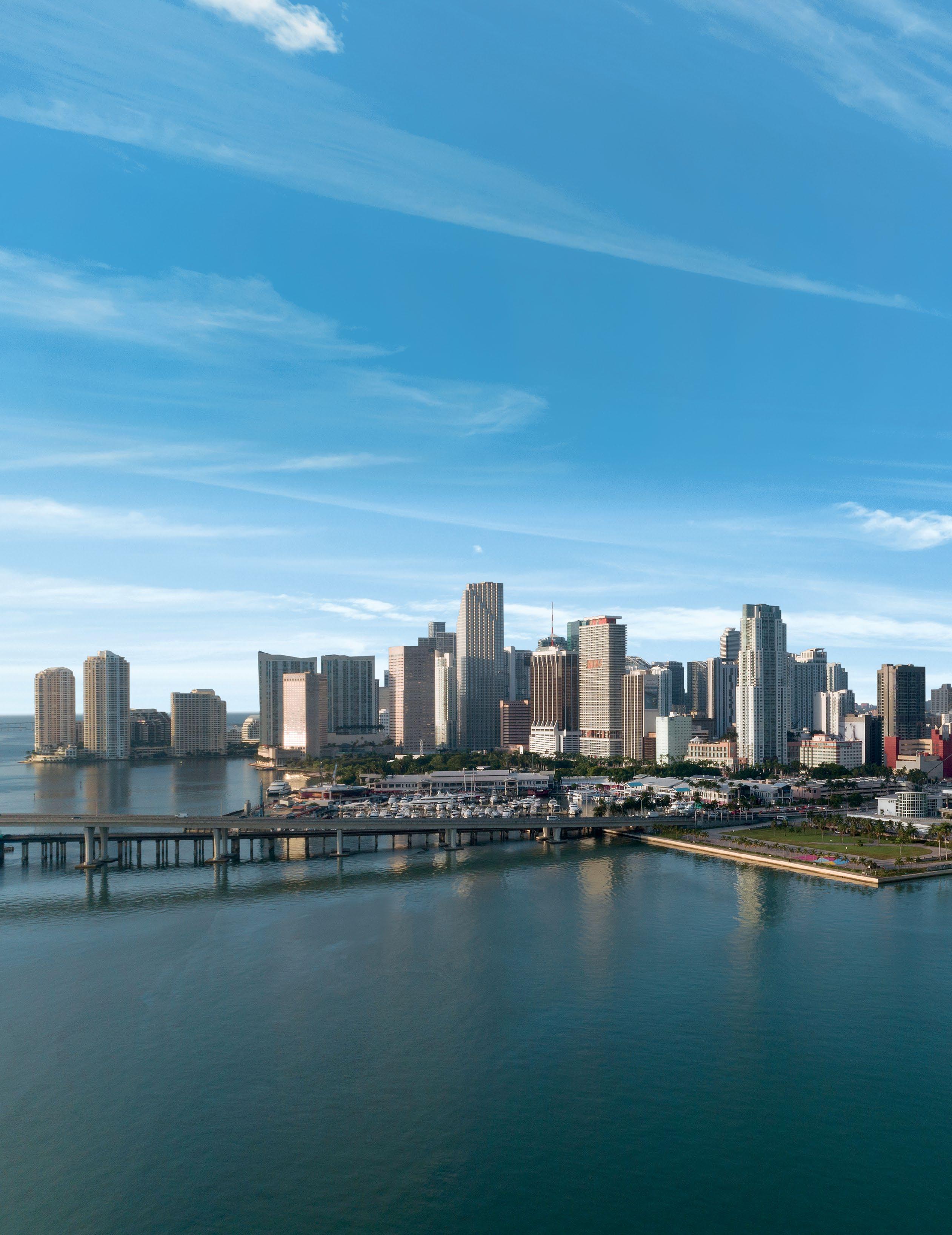 BY JOSEPH A. MANN JR.
BY JOSEPH A. MANN JR.
A rare tulip is budding in Downtown Miami. When fully grown by early 2026, Okan Tower – a glass, concrete, and steel structure designed to resemble a tulip – will be a luxury, mixed-use residential, hotel, and commercial complex costing about $400 million and adding a stunning new figure to Downtown Miami’s skyline. The 70-floor skyscraper will be 902 feet tall and the tallest building in Florida, edging out Miami’s Panorama Tower at 868 feet. The project, which has
82
Miami
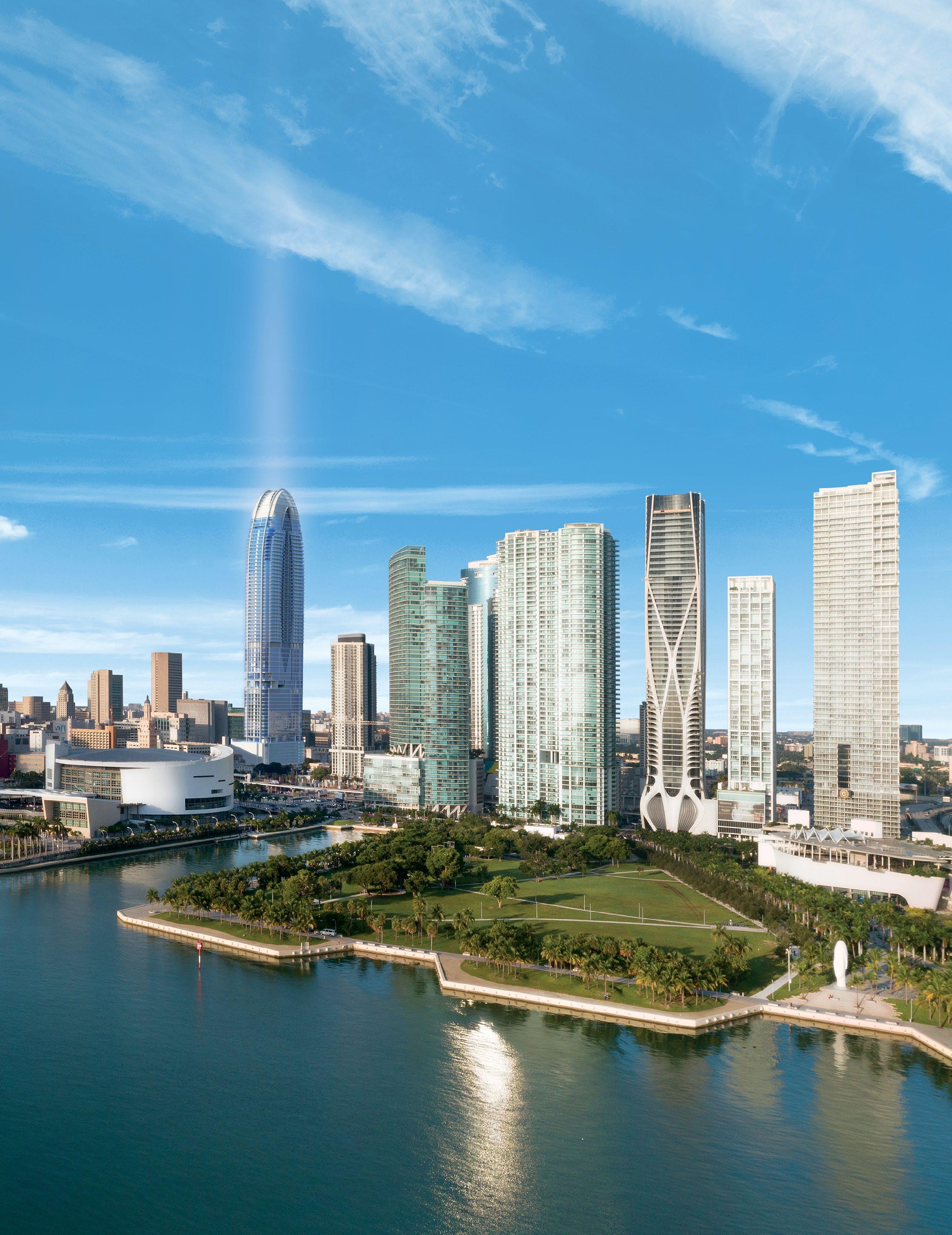
83
upper floors designed to look like a tulip’s petals before they open, is being developed by wealthy Turkish industrialist Bekir Okan, chairman of Istanbul-based Okan Holding.
Why a tulip? “When I began meeting with Mr. Okan to discuss the project, we were looking for something unique to connect the tower with Turkey, not just putting a Turkish flag on it,” says Robert Behar, co-founder of Miami-based Behar Font & Partners, P.A. and the architect who developed the tulip concept. Behar, whose grandmother was born in Istanbul, told Global Miami that in researching the design, he came up with the idea of using the tulip, Turkey’s national flower. Instead of a square or rectangular top, Behar designed a curved apex resembling the unopened petals of a tulip.
While most people associate tulips with the Netherlands, the flowers grown in the Ottoman Empire (Turkey) were reportedly introduced in the Netherlands and western Europe in the 16th century. (This led to the famous ‘tulip bubble’ that peaked in 1637, with single bulbs selling for thousands of dollars.)
“This building will have a unique silhouette and a distinct architectural image that will significantly impact architecture in Miami,” Behar says – very different from the rectangular-shaped buildings typically seen today. The curvilinear shape is more expensive than a squared-off top, but “from our initial meetings it was clear that Mr. Okan thinks big and takes great pride in having
a beautifully designed building.” Each residence will have 10-foot-plus floor-to-ceiling windows. Okan Tower will also incorporate design elements and spaces reflecting Turkish customs, like a marble hamman (Turkish steam bath) and spas.
“This is a one-of-a-kind project, an iconic building,” said Kasim Badak, CEO of Okan Group USA – and a University of Miami business graduate – who is overseeing the project. Okan himself, who has extensive experience in hospitality and construction overseas, decided Miami would be the ideal place for his first project in the U.S., and wanted to build something that would reflect Turkish culture here, Badak told Global Miami.
THE PROJECT
Located at 555 North Miami Ave., three blocks west of Biscayne Boulevard, Okan Tower will have 163 high-end condominiums with separate amenities for owners, a five-star Hilton hotel with 316 rooms, 236 short-term residences managed by Hilton Hotels & Resorts, and 64,000-square-feet of Class A office space. The main lobby and retail space are located on the first floor, while the second to the 11th levels will be for parking. The 12th floor will offer amenities for residents. Floors 14 to 30 will be occupied by the hotel, and office space and meeting rooms will be on floors 31-35. Floors 36 to 50 will be condos and Hilton residences, and floors 51 to 68 will be condos.
THE GROUND-BREAKING BEKIR OKAN, CHAIRMAN OF OKAN HOLDING, AT THE GROUND-BREAKING OF OKAN TOWER ON JUNE 17TH.
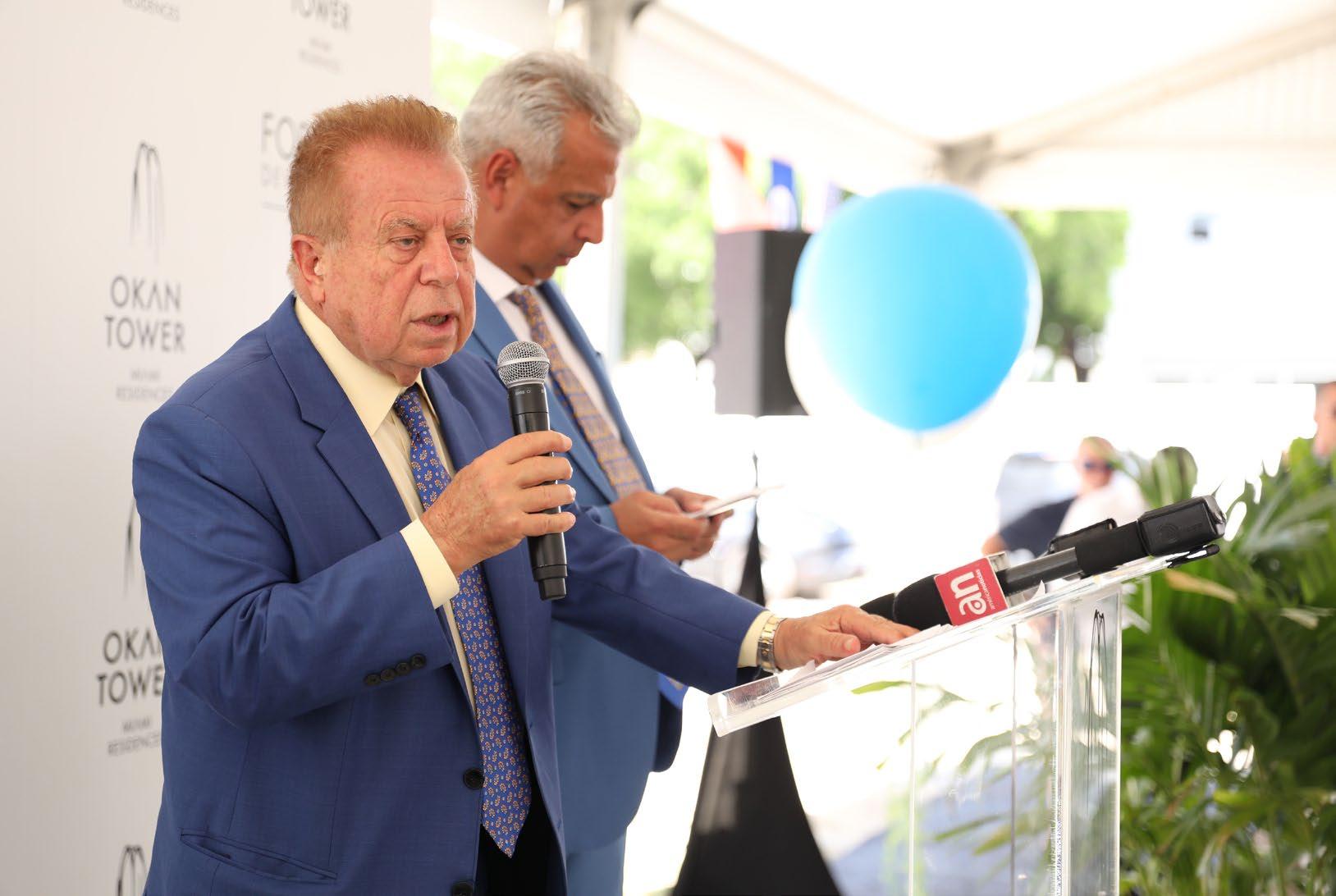
OKAN TOWER
OPPOSITE TOP:
THE ROOFTOP POOL AND THE TULIP-SHAPED CURVED APEX. MIDDLE:
THE ENTRANCE AT STREET LEVEL.
OPPOSITE BOTTOM: ROBERT BEHAR, CO-FOUNDER OF MIAMI-BASED BEHAR FONT & PARTNERS, P.A.
The tower will also have a swimming pool at 850 feet, the highest in North America, Behar said.
Aside from being the tallest building in Florida when completed, Okan Tower represents the largest single Turkish investment in the U.S. It will have a major impact on the local economy, generating 400 to 450 new construction jobs, creating demand for tens of millions of dollars in equipment, machinery, and furnishings, and providing work for scores of suppliers and subcontractors. Both Turkish pride and local enthusiasm were on display at the official June 17 groundbreaking, which was attended by City of Miami Mayor Francis Suarez, Former Prime Minister of Turkey Binali Yildirim, Turkish Ambassador to the United States Murat Mercan, Turkish Consulate of Miami Feyza Barutcu Altug, former Turkish Consulate of Miami Burc Ceylan, Miami Police Chief Manuel Morales, Miami City Commissioner Ken Russell, and Fortune International CEO Edgardo Defortuna, whose firm will head up sales and marketing.
Bekir Okan, the project developer and owner, began discussing the Miami project several years ago and the original plan was to start foundation work around 2020. All the preliminaries were done – the group hired lawyers to research the land use, bought the property, hired Behar Font as the architects, developed plans, obtained permits, and reached their franchise agreement
84 GLOBALMIAMIMAGAZINE.COM
with Hilton. “The city and local businesspeople welcomed the project,” says Badak, who was born in Istanbul and has lived and worked in Miami for 43 years. “But when COVID struck, we faced a chaotic situation and encountered a two-year delay. Finally, it was over, and we started working on the test piles [in early August]. So far, we have invested almost $70 million.”
The total cost of the project, now set at $400 million, was originally estimated to be around $300 million in 2018. Okan is financing the entire project himself, says Badak, with no partners in the venture and no bank loans. “Okan is paying for everything out of his own pocket,” Badak told Global Miami. “Nobody knows him here, and when people don’t know you, it’s harder [and more expensive] to get credit. This is the price you have to pay until you’ve established your credit.”
While virtually unknown in the U.S. prior to his investment in the Miami tower, Okan is one of Turkey’s most important


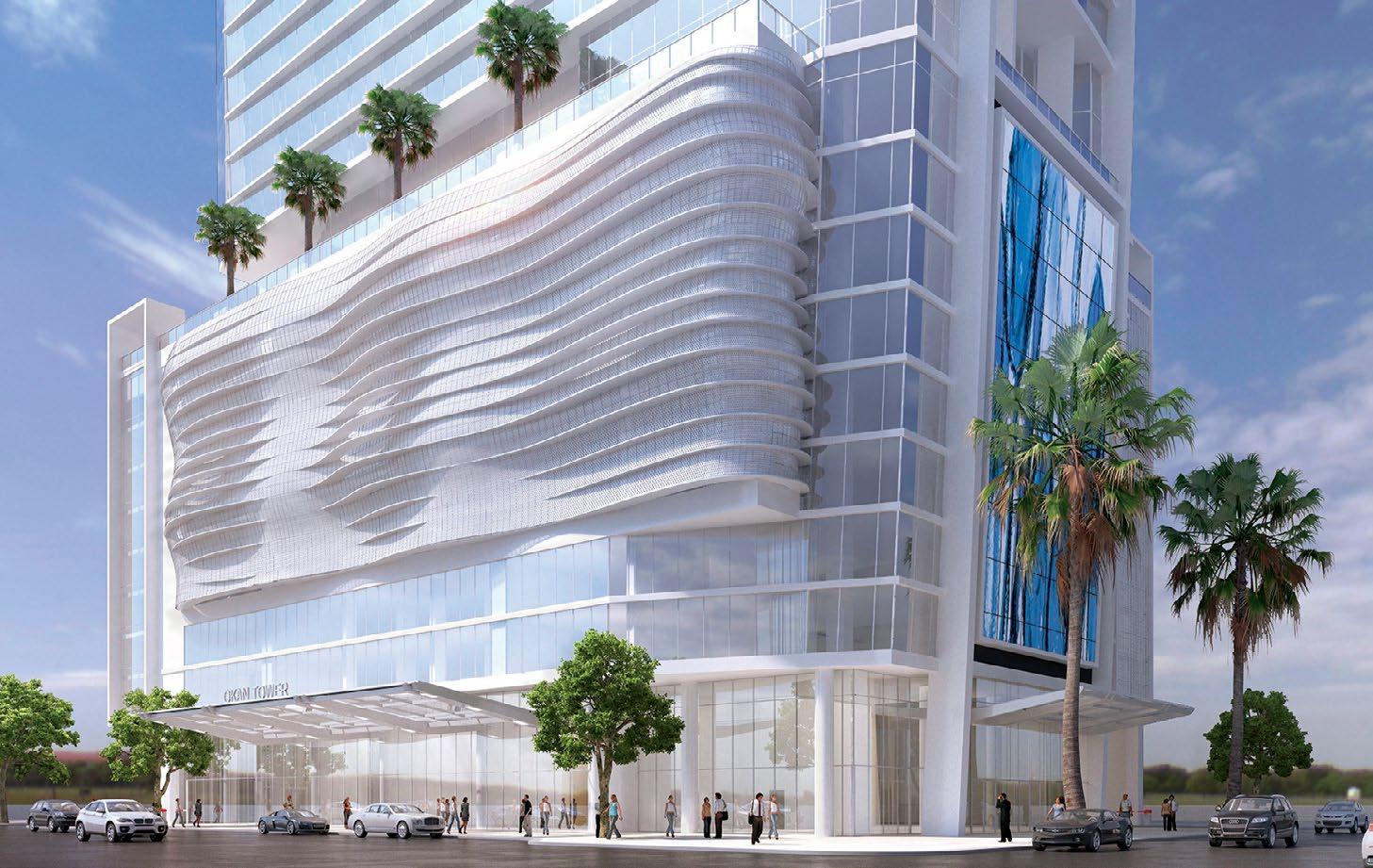

85
This building will have a unique silhouette and a distinct architectural image that will significantly impact architecture in Miami.
ROBERT BEHAR, ARCHITECT, BEHAR FONT & PARTNERS, P.A.
businessmen and investors. He visited Miami frequently when his son was studying industrial engineering here, and by the middle of the last decade, the idea of Okan Tower began to take shape. “He grew to love Miami – its people, lifestyle, weather – and decided to build a monumental structure here,” says Badak, who met Okan and his family in 1998 on a Caribbean cruise. “Mr. Okan doesn’t speak English, so I am his eyes and ears and hands here,” the CEO says.
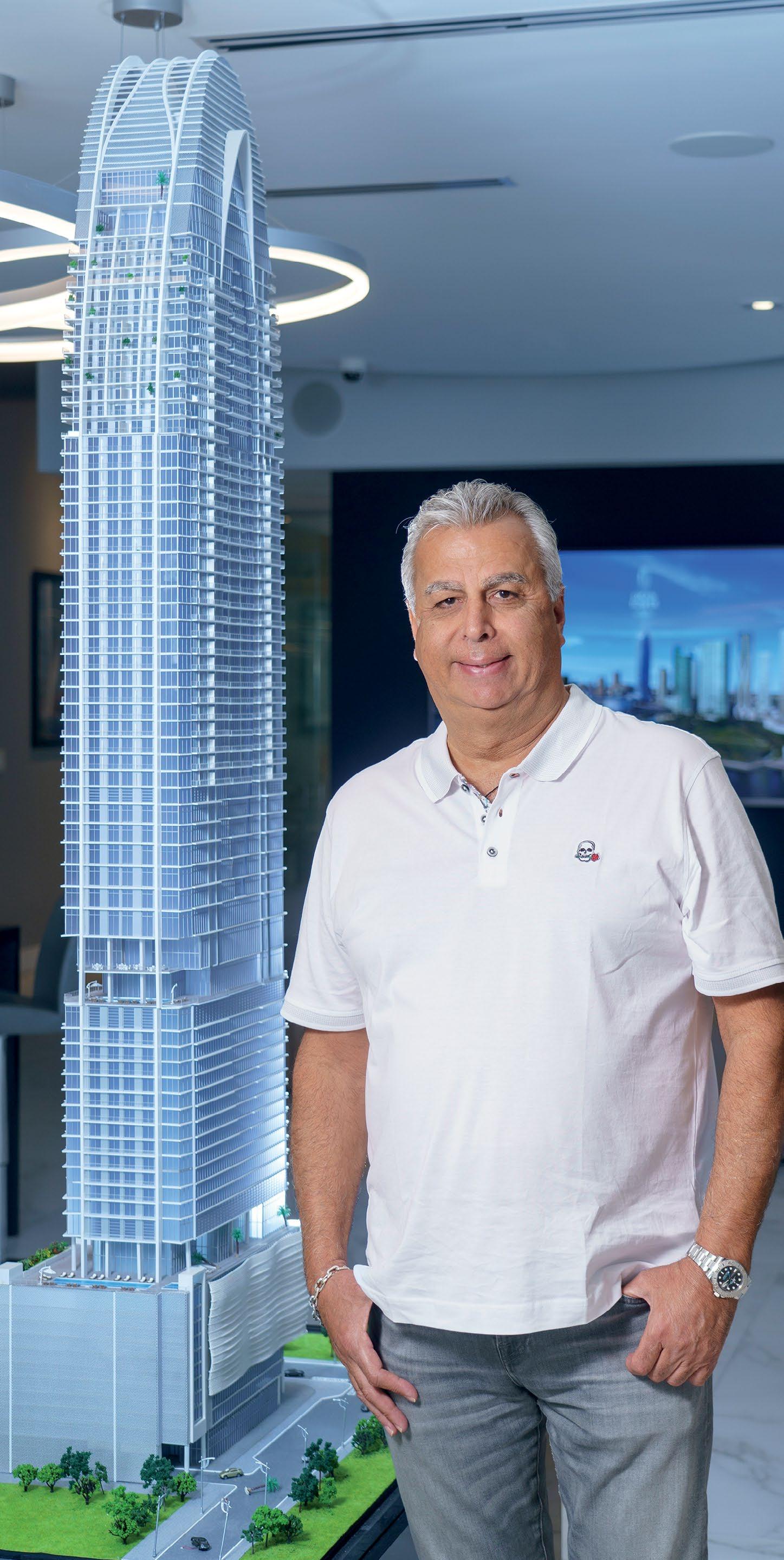
“Mr. Okan was born in Gaziantep, Turkey. He worked as a math teacher, but after six months, decided the job was not for him,” Badak says. “So, he started a small prep school, made some money, and then began working in construction.” Finding his hometown too small, Okan moved to Istanbul, Turkey’s largest city, and expanded into other businesses. Now in his early 70s, Okan is chairman of Okan Holding, which he founded in 1972. The group has major investments in construction, banking, tourism, food, textiles, and other sectors in Turkey, the Middle East, Eastern Europe, and Africa. He has also founded several universities.
Peter Zalewski, a real estate expert and principal of Miami-based Condo Vultures, said that “it’s always a struggle” for a firsttime developer coming to Miami. Even though the delay in starting the Okan Tower project was due to COVID, its condos are going on the market when interest rates are high and likely to remain high for some time. Nonetheless, Badak says that condo pre-sales have been very good, with potential buyers – about half from the U.S. and half from overseas – signing up for almost 50 percent of the condo properties. More than $39 million in sales were recorded in the first 30 days after going on the market in March.
The office space will be “a tough sell,” Zalewski says, with some companies still using work-from-home employees. Plus, “there is so much product on the market,” he says. “Miami condo buyers are very savvy in terms of price” and some people are in wait-and-see mode. “My suggestion is to joint-venture with local investors who have a track record.” That may also prove to be a pessimistic outlook, with major corporations now paying more than $150 per square foot to lease up space at the nearby 830 Brickell building, set to open in January.
Fortune is the exclusive marketing and sales agent for the tower, and demand has been strong so far, says CEO Defortuna. “The feedback from buyers worldwide has been phenomenal, and it is a testament to Okan Group, which envisioned a true beacon for Downtown Miami,” he says. l
86 GLOBALMIAMIMAGAZINE.COM
KASIM BADAK, CEO, OKAN GROUP USA
The city and local business people welcomed the project. But when COVID struck, we faced a chaotic situation.
PHOTO BY RODOLFO BENITEZ
World-Class Convenience and a Very Warm Welcome
Realize the benefits of one of the world’s top cruise ports in one of the largest consumer regions: Greater Fort Lauderdale. We offer close proximity to popular Caribbean destinations and enticing pre- and post-cruise activities, from relaxing on golden beaches to enjoying cosmopolitan dining and nightlife – all in Florida’s most welcoming destination.

We offer everything for smooth sailing:
• Modern, innovative terminals that make transit a breeze
• Movement of passengers from curb to ship in under 15 minutes
• Fully scalable to accommodate any size ship or passenger volume
• Friendly and flexible service 24/7 through our Harbormaster Office
• Year-round berthing available
• Easy access through direct highways and FLL, Fort Lauderdale-Hollywood International Airport
port.everglades | @porteverglades | PortEvergladesFL | port-everglades | @portevergladesfl PortEverglades.net
THE OTHER GLOBAL SHOW
JEN ROBERTS AND THE SISTER FAIR TO ART BASEL
BY HARRIET MAYS POWELL
Art Basel Miami returns this year at the tail end of November, bringing with it an audience that could approach the 80,000+ visitor mark that it hit pre-pandemic. Last year, when the international art fair returned to Miami Beach after a 2020 shutdown, some 60,000 visitors attended, hungry to visit its 253 galleries from 36 countries.
About half the audience also visited an adjacent global fair called Design Miami, a huge, tented venue of interior “rooms” with collectable, functional pieces – like furniture, lighting, and ceramics – designed by masters in their mediums from around the world. There will be some 50 exhibitors this year, and while the majority are from Europe, galleries from Mexico, Brazil, China, and South Africa will participate. More than 42,000
attendees are expected, about a quarter from overseas.
The Design Miami fair was first held in 2005, so this year marks the 18th iteration of the six-day event. For the past seven years, Jen Roberts has led Design Miami as its CEO, transforming and expanding the fair to new locations. Formerly a decorative arts dealer in New York City, where she co-directed the annual Salon Art + Design fair held at the Park Avenue Armory, Roberts was lured to Miami by Craig Robins, the developer cum art collector who first brought Art Basel to Miami’s Design District and then created Design Miami.
Design Miami was hatched when Robins asked the then-director of Art Basel “if they would consider including design,”
says Roberts. “But the gallery committee of Art Basel said they didn’t want design. However, that said, they would support a design-centric fair if he went ahead. And so, it was launched in 2005.” Now, says Roberts, “We are the official sister fair of Art Basel. They show fine art, and we show collectible design.” Not only does Design Miami take place each year across the street from the Miami Convention Center, where Art Basel Miami is now held, it also tags onto the flagship fair held each June for Art Basel in Basel, Switzerland, where this “most prestigious of art fairs” started.
On its own, the Design Miami fair continues to grow. Last year, Roberts launched its first production in Shanghai, which she says is “a fabulous new market for us,” and where it will return again in March 2023. The new venue she is most excited about is Paris, currently slated for the fall of 2023. “Paris will become an enormous success and could possibly end up being the fair to rival Miami,” says Roberts. “Next year we will have four shows in four different countries, on three continents!”
We spoke with Roberts in her minimalist yet welcoming apartment in Miami
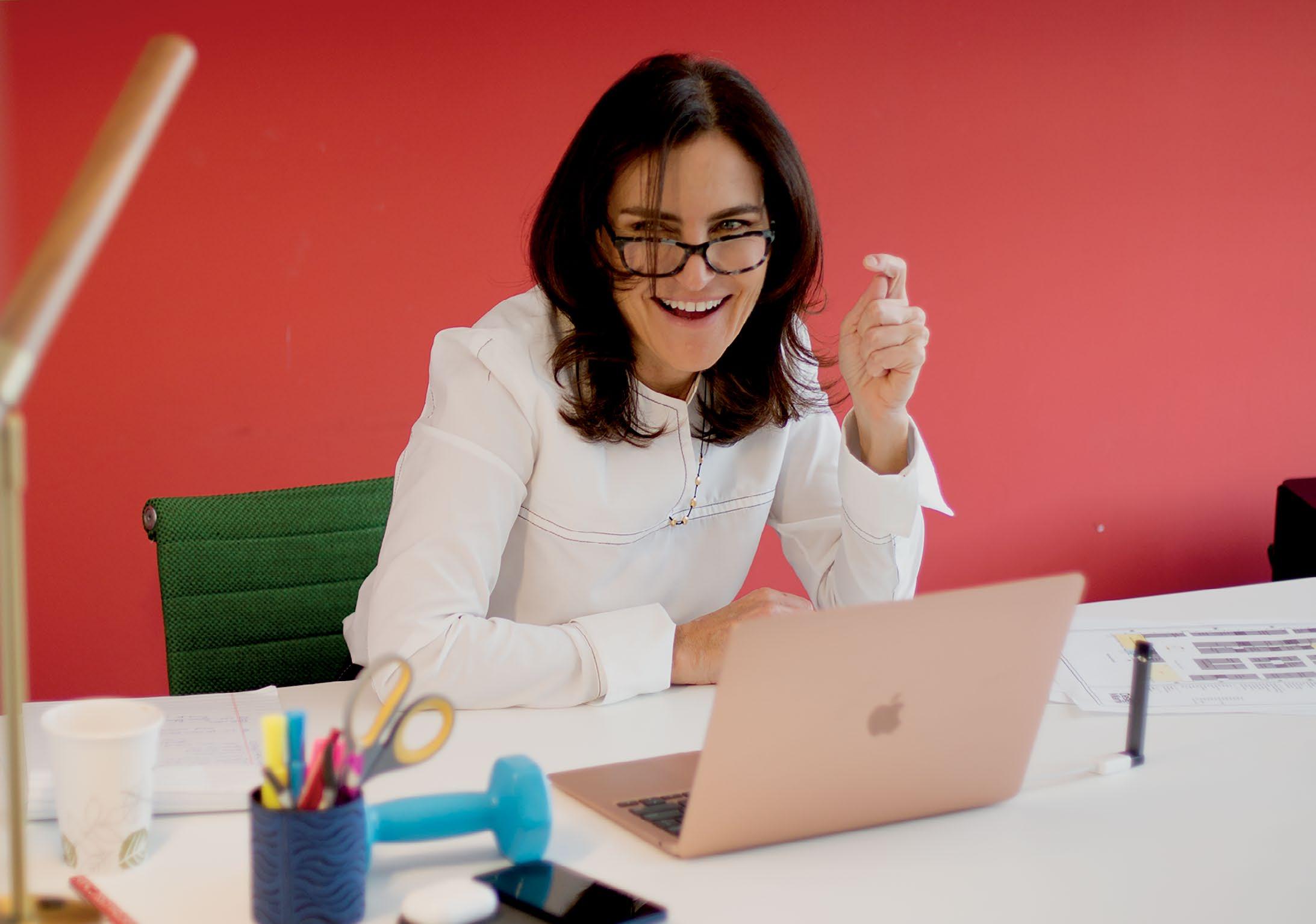
88 GLOBALMIAMIMAGAZINE.COM ART
“WE ARE THE OFFICIAL SISTER FAIR OF ART BASEL. THEY SHOW FINE ART, AND WE SHOW COLLECTIBLE DESIGN.”
JEN ROBERTS, CEO OF DESIGN MIAMI
Photo by: Josh Aronson
Beach to discuss her vision for Design Miami. “The biggest change I’ve made to the fairs is the introduction of a curatorial director who brings ‘thought leadership’ into the fray,” she says. Many people “think of art fairs as just real estate deals, where we’re just selling space and people show up with their wares. But it is actually very important that we curate and set the stage for the most innovative thinkers in the field.”
Roberts’ current curatorial director is Maria Christina Didero, an Italian design consultant, curator, and author, whose job includes choosing a theme. Each year there is a theme. For example, in the past there was a focus on the elements – in Basel, the theme was earth; in Miami, the theme was water. For the Basel fair last June, the theme was “The Golden Age – Rooted in the Past.” For Miami’s upcoming fair it’s “The Golden Age – Looking to the Future.”
Roberts notes that all the fairs show the characteristics of their locations. Art Basel in Switzerland “as you might imagine, is our serious, more staid, Northern European-feeling show, as it is the oldest and most prestigious fair.” Unlike that, “Miami is kind of wild [and] contemporary, where anything goes.”
So, where does Miami stand in the pantheon of the world’s great art centers? “It’s a cultural tropical mecca,” says Roberts, “always pushing the boundaries.” And where does she draw the line between the age-old question of what defines “art” versus what defines “design?” While that distinction is muddled by the fact that an artist can be a designer and a designer can be an artist, her rule of thumb is “to qualify as design, it must have some kind of functional purpose.”
Design Miami has another platform for smaller exhibitors called “Art Curio” which is based on the concept of a “cabinet of curiosities.” This platform, Roberts says, “allows a wider group of people to show in smaller spaces at more affordable prices.” Citing two examples of Curio exhibitors, this year there will be objects created by a Russian tin guild that uses a technique normally reserved for building facades, and a group of “incredible Romanian goldsmiths in which each vessel is created by hand and is super beautiful.”


Roberts also notes the renewed interest in craftsmanship, in everything from Shaker-style furniture to ceramics and glass. “There has always been this tug of war between design and craft. For example, you might be designing things and be a crafts-

man, and doing things that are handmade. [Then] there are people I consider great craftsmen who are making what we consider great design.” She cites American woodworker Wendell Castle, whose “pieces are highly desirable and at the top of the market, but were made by hand.” She says his chest of drawers exhibited last year was one of the most important pieces in the show.
Looking to the future, Roberts is curious about what’s happening in Colombia and keeping her eye on “the many interesting creatives from Brazil.” In the meantime, with a total of 35 galleries and 14 Curios exhibiting at the upcoming fair, Roberts says the event is bursting at the seams: “We have the demand, but we had to turn down people because we just don’t have the space…. Yet!” l
89
RIGHT: SHAKER DINING CHAIR, 1834 BY BROTHER MICAJAH TUCKER (1764-1848) AT JOHN KEITH RUSSELL
BOTTOM: IBUBU (FLOCK), 2022, ANDILE DYALVANE AT SOUTHERN GUILD.
Images Courtesy: Southern Guild and Hayden Phipps
Image Courtesy: John Keith Russell
Green with Envy
After a sea of blue-faced watches inundated the world of haute horlogerie, watch aficionados are turning over a new leaf and collecting the hottest new color in faces, dials, bezels, and bands— emerald green.






 BY HARRIET MAYS POWELL
1.
2.
BY HARRIET MAYS POWELL
1.
2.
90 GLOBALMIAMIMAGAZINE.COM STYLE
3.
1. Zenith Chronomaster Revival Safari 37mm. $9,000. zenith-watches.com
2. Girard-Perregaux Laureato 42mm Green with steel band. $14,300. Mayors, Aventura Mall. 3. Audemars Piguet Royal Oak Selfwinding Chronograph “50th Anniversary.” $52,600. Audemars Piguet Boutique, Bal Harbour. audemarspiguet.com









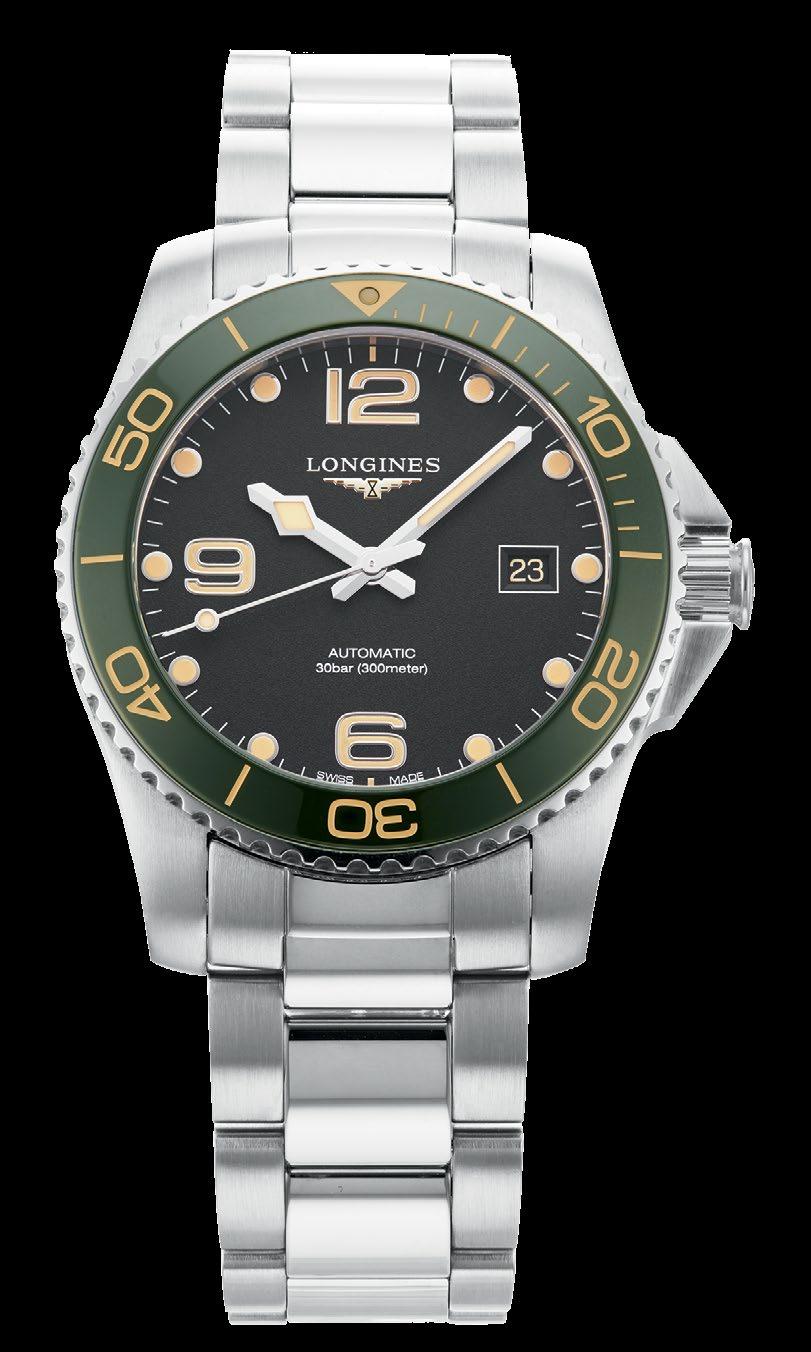 6.
4.
5.
6.
4.
5.
91
7.
4. Breitling Superocean Automatic 42 in bronze with rubber strap. $5,500. Breitling, Miami Design District. breitling.com.
5. Corum Romulus 44 Automatic with annual calendar in rose gold. $66,000. For information, call 1.954.279.1220. 6. Jaeger LeCoultre Reverso Tribute Monoface Small Seconds. $8,850. jaeger-lecoultre.com 7. Longines HydroConquest Automatic with stainless case and green ceramic unidirectional bezel. $2,100. Mayors at The Shops at Merrick Park, Coral Gables. Mayors.com.
Kicks! Just For

No longer just for executives relaxing on the weekend, luxury sneakers are making strides as the smart casual footwear choice for anyone, any time.



 BY HARRIET MAYS POWELL
1.
2.
BY HARRIET MAYS POWELL
1.
2.
92 GLOBALMIAMIMAGAZINE.COM STYLE
3.
1. Common Projects Achilles Low-Top Suede Sneakers. $447. commonprojects.com, saks.com 2. Brunello Cucinelli Leather and Suede-Trimmed Mesh Sneakers. $995. brunellocucinelli.com, mrporter.com 3. Berluti Shadow Knit Sneaker with Leather Details. $1,080. berluti.com, mrporter.com, neimanmarcus.com

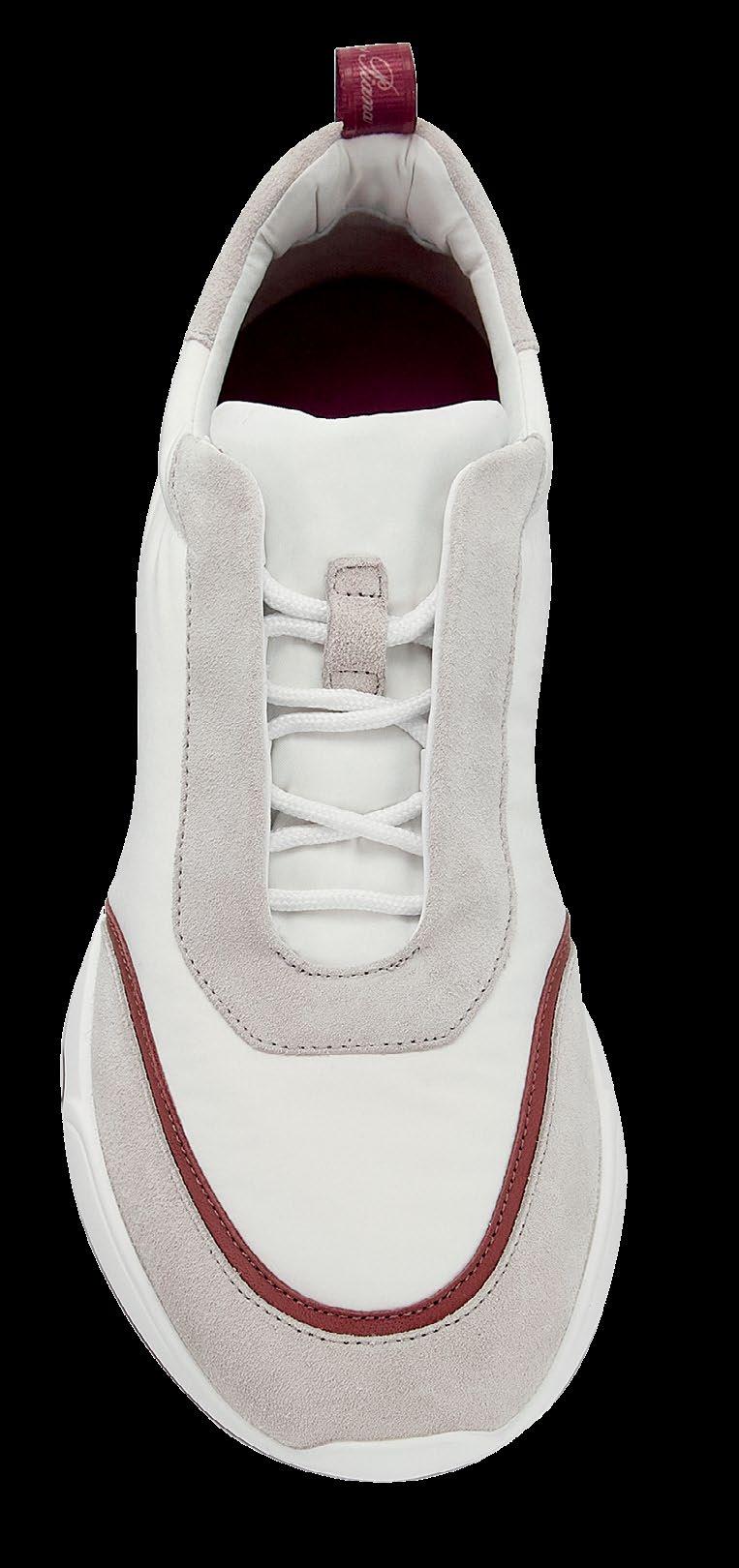



 4.
5.
6.
4.
5.
6.
93
7.
4. Tom Ford Warwick Leather Low-Top Sneakers. $1,100. tomford.com, neimanmarcus.com 5. Loro Piana Modular Walk Wind Sneakers. $975.loropiana.com, saks.com 6. Zegna Triple Stitch Wool Low Top Slip-On Sneakers. $890. zegna.com, neimanmarcus.com 7. Santoni Grey Suede Sneaker. $650. santonishoes.com, artigianomens.com
DINNER WITH A VIEW
LA MAR’S EXQUISITE PERUVIAN CUISINE IS MATCHED BY ITS VISTA
BY KYLIE WANG
You can get a bowl of ceviche practically anywhere in Miami, but there are just a few high-end Peruvian restaurants. La Mar, which earned a Michelin star this year, is the best of them. Its chic interior of dark wood and stone is outdone only by its waterfront patio, which looks onto the Miami skyline from Brickell Key. Not surprisingly, the menu heavily features seafood and is resoundingly authentic. Executive Chef Gastón Acurio is Peruvian, an ambassador of Peruvian cuisine with a Lifetime Achievement Award from his native country.
The restaurant is modern and lively without being overbearing. There’s an in-house DJ playing low-fi beats curated for the nighttime atmosphere. The service is efficient and the waiters knowledgeable. The view from the patio is best when the sun goes down and the lights go on in the high-rises of the Brickell financial district just opposite, across a slice of Biscayne Bay. It’s a unique view looking back at the city, rather than outward toward the wide water and ocean beyond.

The ceviche bar is the highlight of the menu, with all dishes based on the fresh catch of the day – like local snapper, grouper, and crab. Our choice was the tiradito bachiche, which defies the old Italian legend that you cannot combine fish with cheese. Here they add two-year aged Parmesan to a base of leche de tigre (a Peruvian citrus-based marinade) which adds a palpable richness, calms down the acidity, and creates a savory umami.
Another cheese and seafood combination – and for us, the best presentation – was the conchitas a la parmesana: grilled jumbo mollusks topped with garlic crumbs. Served in a large scallop shell, it looked almost ethereal, swimming in a creamy parmesan base.
Of course, nothing is more Incan than potatoes (Ireland can still thank Peru) so we also tried the causa flor, the almost bite-size pillows of potato that cradle toothsome toppings of blue crab, beet causa, and avocado. Pushing the seafood/carbohydrate pairing is another dish, the el achupado, which combines bucatini noodles and a
ABOVE: LA MAR WATERFRONT PATIO
OVERLOOKING THE MIAMI SKYLINE
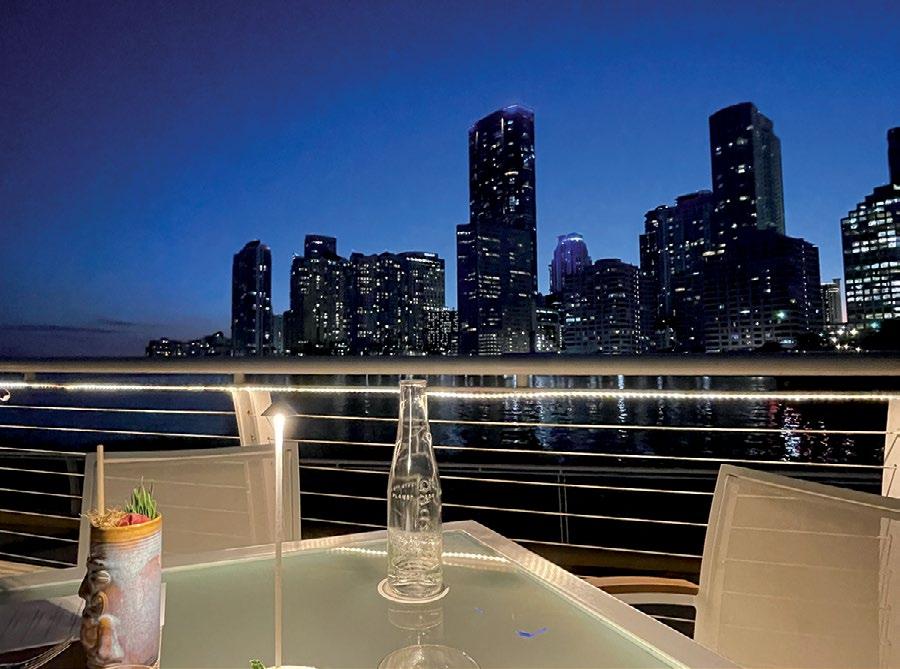
OPPOSITE:
TOP: CONCHITAS A LA PARMESAN, WITH JUMBO SCALLOPS, 24-MONTH AGED PARMESAN, FOAM, GARLIC CRUMBS
BOTTOM: LOMO SALTADO WITH STIRFRIED TENDERLOIN, RED ONIONS, TOMATOES, SOY SAUCE, CILANTRO, AND THICK-CUT POTATO WEDGES
FAR RIGHT: INSIDE LA MAR IS A MODERN CHIC INTERIOR OF DARK WOOD AND STONE IN WARM TONES.
LA MAR BY MANDARIN ORIENTAL HOTEL 500 BICKELL KEY DRIVE, MIAMI 305.913.8288
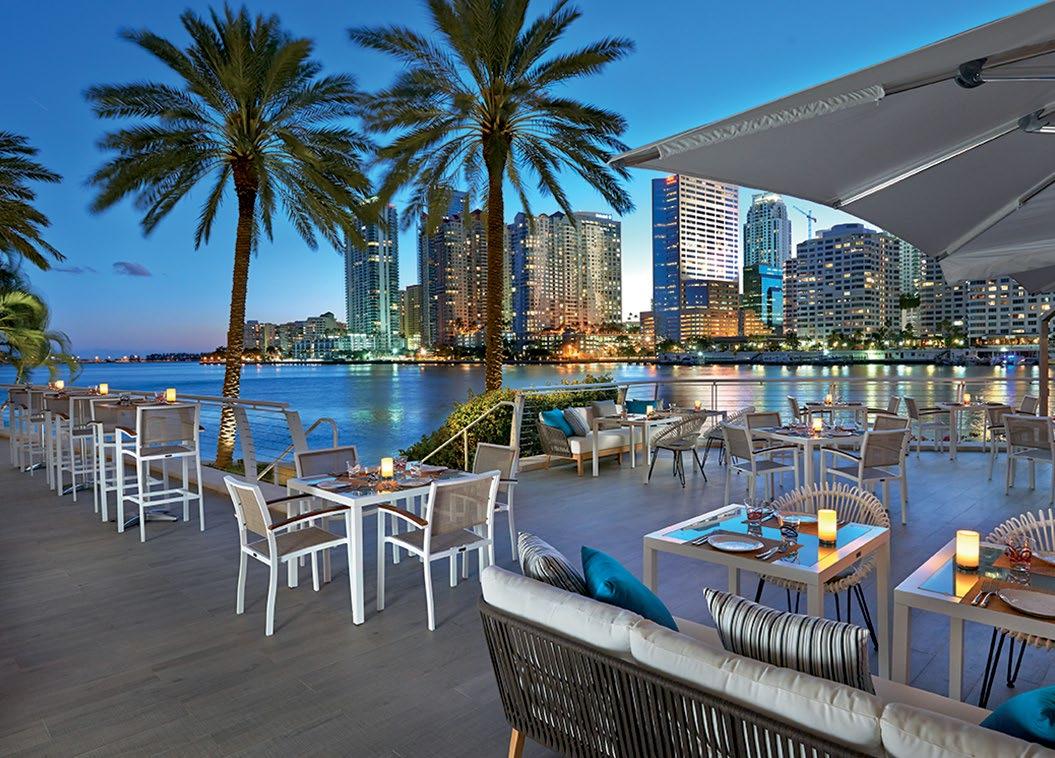
94 GLOBALMIAMIMAGAZINE.COM DINING
cilantro and cheese (yes, again) chupe sauce, alongside freshly grilled shrimp. It completes the nod to Peru’s roots with the addition of huacatay for the shrimp, a tomato-based sauce made with a piquant herb grown in the Peruvian Andes.

Overall it’s an adventurous, creative menu, but for those looking for something more predictable and land-based, the lomo saltado is the dish of choice. It’s a Peruvian-style fried rice dish, its rice base topped with stir-fried tenderloin, red onion, tomatoes, soy sauce, and potato wedges. It’s also one of the few non-seafood items on the menu.

La Mar continues its pleasing inventiveness with its drinks, two of which are served in ceramic tiki glasses. The Forbidden Banter and Coco Maiz are both made with pisco, Peru’s equivalent of mezcal or tequila, a kind of clear brandy distilled from fermented grape juice. Both are topped with tropical adornments, so if your meal is a busi-
ness meeting we’d suggest the traditional Pisco Sour, Peru’s national cocktail. Made with pisco, lime juice, egg whites, and angostura bitters, La Mar’s Pisco Sour comes in four variations: traditional, maracuya (passionfruit), guava, or chicha morada (purple corn).
Desserts aren’t an afterthought in Peru; they’re an essential element of the country’s traditions. While Mexico gets the credit for introducing cacao to the West, chocolate continues to play an important role in Peruvian culture. So, for a last course, we ended with the lucuma + chocolate, a light mousse that combines Peruvian chocolate and lucuma, a sweet and citrusy fruit native to Peru. It’s topped with caramelized sesame and hazelnut to give the dish a satisfying crunch.
La Mar is open until 11 pm Sunday through Thursday and until midnight on the weekends. We recommend making reservations well in advance. l

95
THE IMMENSITY OF INTERCONTINENTAL
NOW 40 YEARS OLD, INTERCONTINENTAL MIAMI REMAINS AMONG THE MOST ELEGANT PLACES TO STAY FOR A VISIT TO DOWNTOWN MIAMI OR ITS BRICKELL FINANCIAL DISTRICT

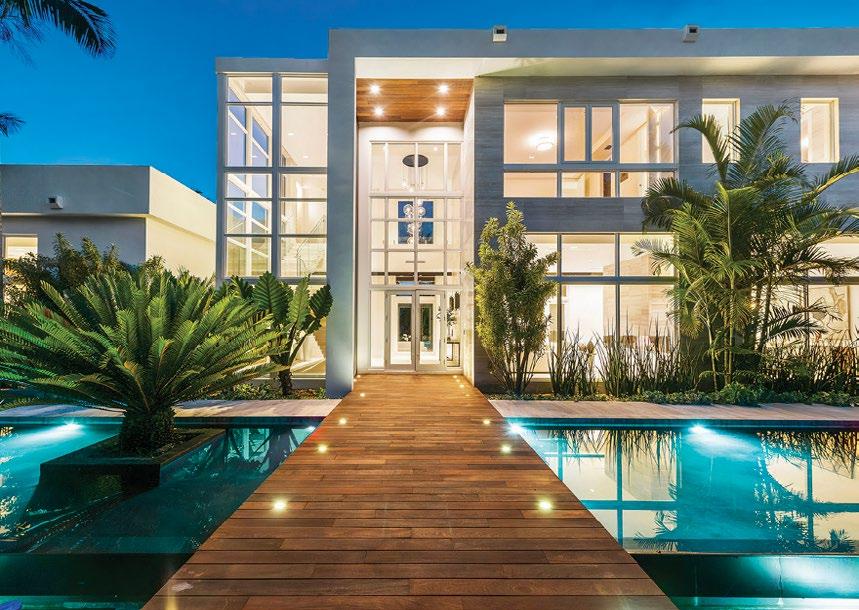 BY KYLIE WANG
BY KYLIE WANG
In 1981, sculpture artist Sir Henry Moore created “The Spindle,” an 18-foot, 70-ton sculpture carved out of travertine marble reminiscent of a rock formation you might find in the Grand Canyon. At the same time, Theodore Gould, a developer from Washington D.C., was working to create the Pavillon Hotel, now known as InterContinental Miami. Gould loved “The Spindle” and decided to make it the centerpiece of the hotel.
Transferring the piece to the construction site was no small undertaking. In the end, “The Spindle” was dropped in via helicopter onto the ground floor, and then the lobby was built around it. To this day, it is the only lobby in the world to have been built around a work of art.
TOP: THE INTERCONTINENTAL, A DOWNTOWN BAYFRONT HOTEL, BOASTS ONE OF THE BEST LOCATIONS IN MIAMI
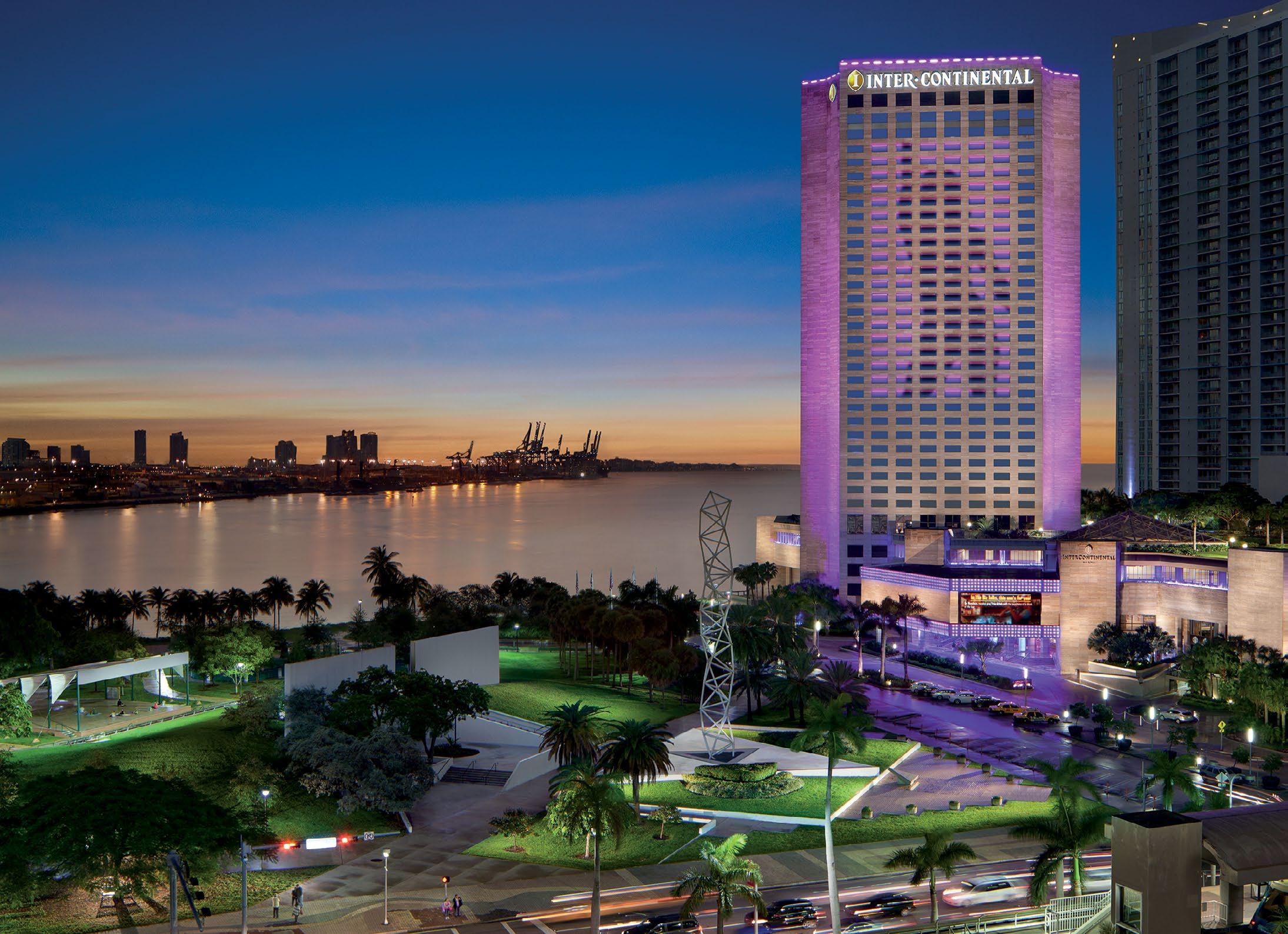

ABOVE: THE 70-TON MARBLE “SPINDLE” BY SIR HENRY MOORE DOMINATES THE LOBBY
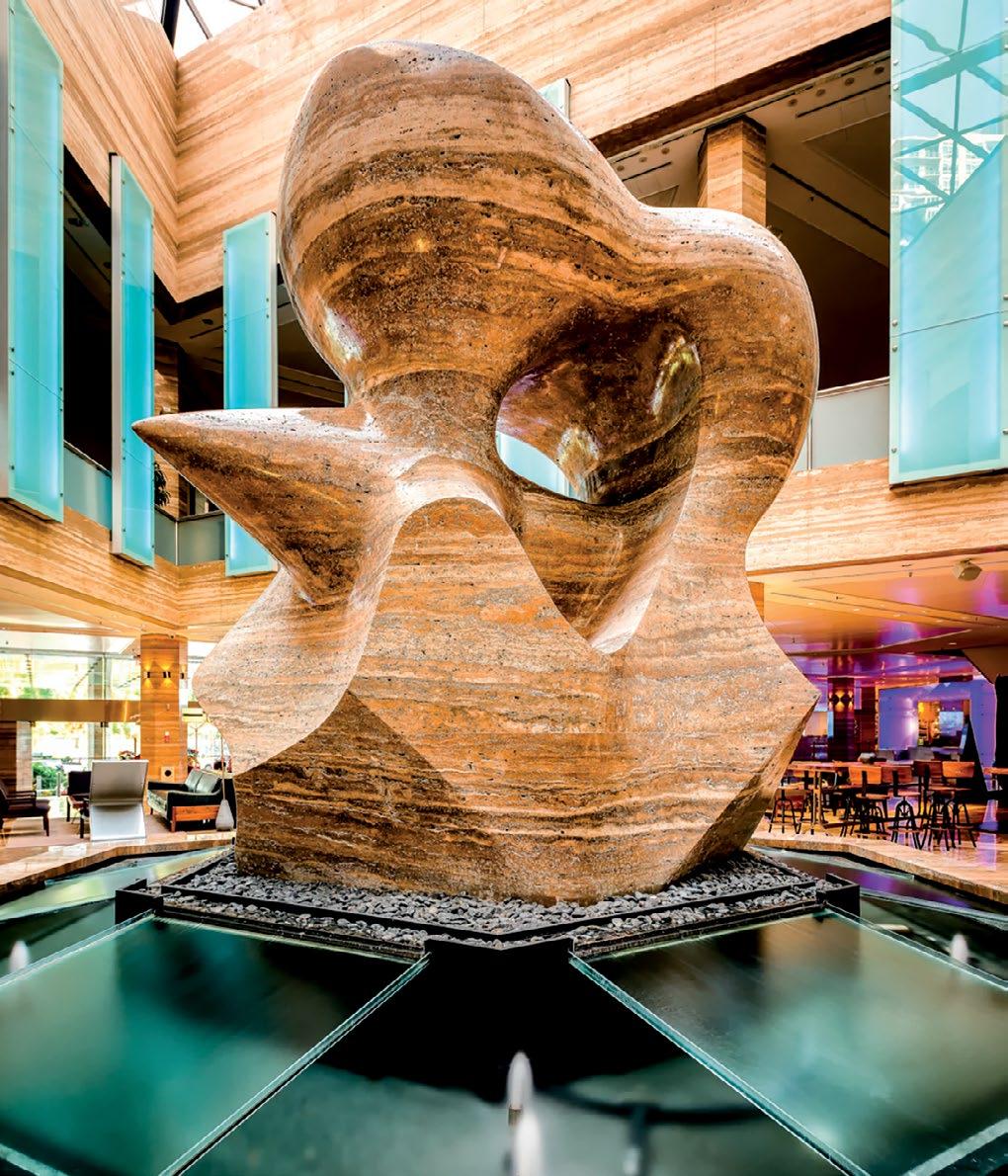
96 GLOBALMIAMIMAGAZINE.COM STAY





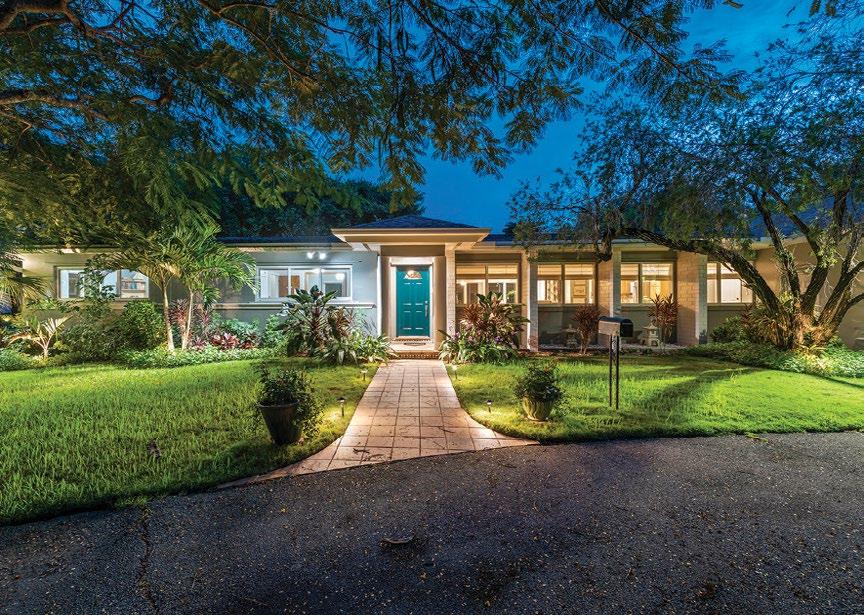
All information is from sources deemed reliable but is subject to errors, omissions, change of price, prior sale or withdrawal without notice. No representation or guaranty is made as to accuracy of any description. All measurements and other information should be re-confirmed by customer. All rights to content, photographs and graphics reserved to Broker. Elegant & Sleek Stunner Pinecrest | $5,350,000 The Crown Jewel of Pinecrest $11,850,000 JOSIE WANG Brown Harris Stevens Miami | Vice President (305) 666-9759 Josie@JosieWang.com | JosieWang.com The Most Recognized Real Estate Transactions Have One Thing In Common... OVER $2.8 BILLION IN SALES | RANKED AMONG THE TOP 100 REALTORS IN THE NATION In the Heart of Exclusive Cocoplum Coral Gables | JUST REDUCED TO $7,150,000 When it comes to luxury homes, there are many, many more pending and solds by Josie Wang 5 Beds | 5.5 Baths | 7,367 TA SF | 21,763 SF Lot Totally and newly renovated, in the heart of Cocoplum 7 Beds | 8.5 Baths | 7,535 TA SF | 27,442 SF Lot Newly renovated/updated with current & modern features 8 Beds | 8.5 Baths | 12,003 TA SF | 38,768 SF Lot New construction: An unparalleled masterpiece Dramatic Coconut Grove Gem $3,750,000 4 Beds | 4 Baths | 4,892 TA SF | 7,000 SF Lot Modern residence with all improvements completed 4 Beds | 3 Baths | 4,465 TA SF | 42,688 SF Lot Updated home on gorgeous grounds Family Home on Lush Acre Pinecrest | $2,250,000
This is the kind of immensity InterContinental Miami still reflects in 2022. At 34 floors, it’s far from the tallest building along Miami’s skyline, but its imposing, thickset structure marked by hundreds of long horizontal windows is hard to miss, almost brutally juxtaposed to the daintier glass-walled skyscrapers that surround it today. This is especially true at night, when a 200-foot “Dancing Lady” silhouette is projected onto the side of the tower.
The InterCon boasts 653 rooms, including 22 suites, and 130,000-square-feet of meeting and exhibition space with 35 meeting rooms and four ballrooms fit for large conferences. The views along the eastern wall are unmatched, with each long window offering guests a vista of the MacArthur Causeway leading to Miami Beach, including Watson Island and PortMiami. On the western side, there’s a slightly tamer view of Downtown Miami.
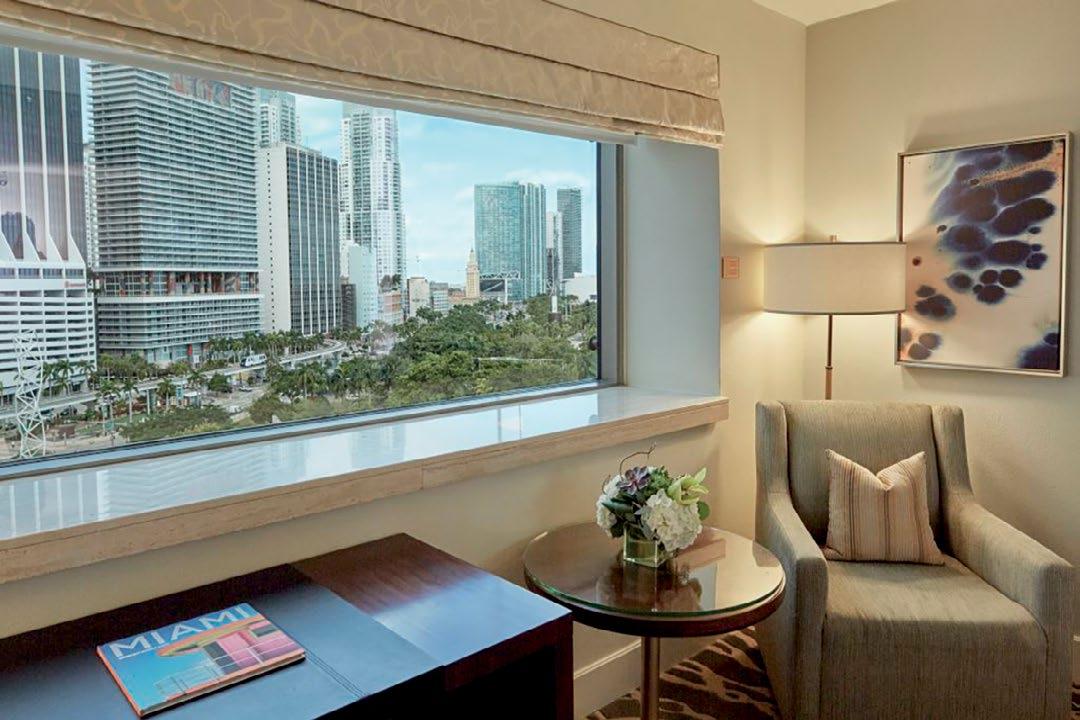
For those who stay on the 29th floor or above, Club InterContinental is available. There’s a complimentary breakfast (7 to 11am) and happy hour (5 to 7pm) with all the usual suspects, although the “bar” for happy hour is a DIY situation, with liquors and mixers along with bottled beers. For something more formal, Olé is the lobby breakfast spot, with a buffet and an a la carte menu; there’s also a Starbucks on premises.
InterContinental Miami’s premiere lunch and dinner restaurant, Toro Toro (reservations recommended), is led by Chef Richard Sandoval and features a pan-Latin cuisine, heavy on Peruvian with ceviches and tiradito, although the real highlights are their steaks.

ICMIAMIHOTEL.COM
For an Argentine slice of vaca, the 14-ounce skirt steak ($60) is aesthetically gorgeous and intensely flavorful, wrapped into a cone and drizzled with chimichurri sauce. The el habano dessert’s banana cake comes wrapped in chocolate like a Cuban cigar.
The InterCon gym is fairly standard, with spin bikes, treadmills, a few weightlifting machines, and free weights, but for an on-the-go workout it’ll do the job. On the same floor is their outdoor pool, with a long glassed-in sushi restaurant open Fridays and Saturdays with superb views of the bay, and Bluewater, an adjacent tiki hut that serves cocktails, beers, and bar bites.
Also on the same level is mySpa, an elegant enclave with a ridiculously long list of treatments from trained estheticians, including massages, body wraps, facials, and nail and hair services. With club level, there’s complimentary access to the steam room and sauna. And if you’re looking for a moment of Zen, there are yoga classes on the sprawling rooftop Sky Lawn.

Perhaps the top perk, though, is InterContinental Miami’s location. It’s close enough to Miami Beach to avoid the worst traffic going there, and close to tourist attractions (go see a Miami Heat game at FTX Arena, ride the bayfront Ferris wheel, or visit the open-air mall, Bayside Marketplace).
Best of all, it’s walkable to both Downtown Miami and the Brickell financial district – and across the street from the MetroMover, Miami’s aboveground public transport, if you want to spare your feet. l
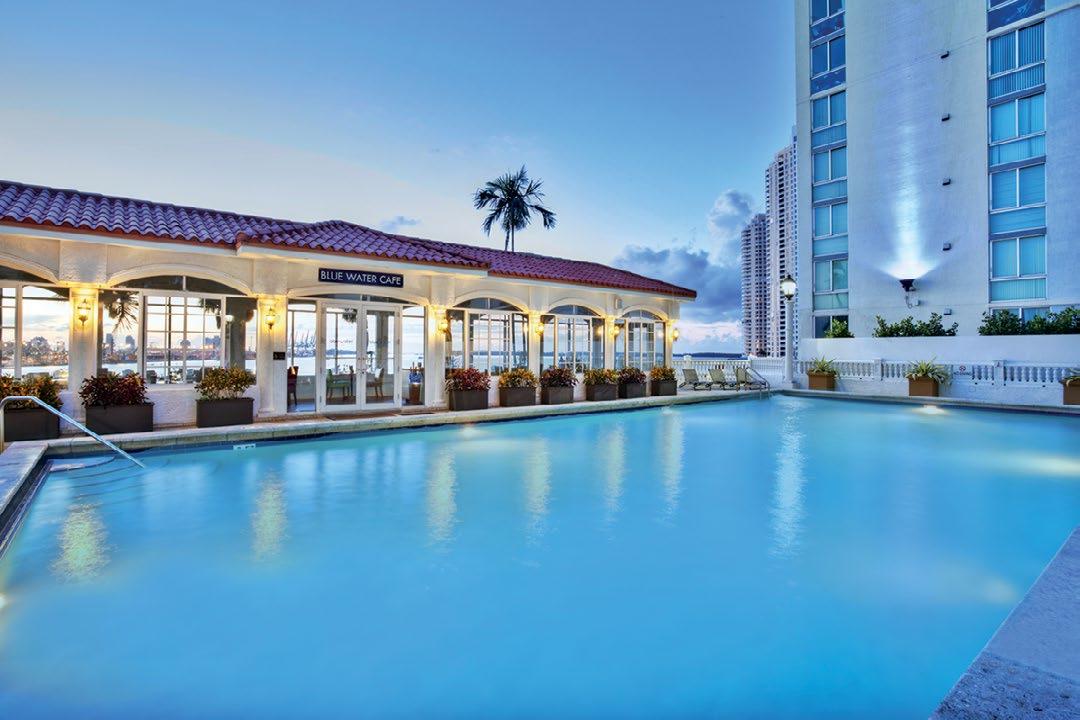
98 GLOBALMIAMIMAGAZINE.COM
INTERCONTINENTAL MIAMI 100 CHOPIN PLAZA (305) 577-1000
TOP LEFT: ROOM WITH CITY VIEW TOP RIGHT: RESTAURANT TORO TORO ABOVE LEFT: THE OUTDOOR POOL ABOVE RIGHT: MYSPA TREATMENT
My husband and I raised our three wonderful girls in Old Cutler Bay, just nor th of Matheson Hammock. Like their parents, they g rew up with a love for Biscayne Bay that r uns deep. My daughter Lauren was on a fast-track at Er nst & Young when I convinced her to move back to Miami and join the Toni Schrag er Team. She missed the water enough to say yes! Lauren’s a smar t, strategic thinker, and working with her in Real Estate is priceless.
¶ To underscore our shared passion for the bay, we suppor t MiamiWaterKeeper.org. Biscayne Bay gives us all so much joy, and its health and beauty are integ ral to our economy We’re blessed to be able to give back, and to live and work in the City Beautiful. We’ll be delighted to talk about your ¶ Real Estate interests whenever the time is right — you can rely on us for exceptional personal ser vice, discretion, innovation and results.
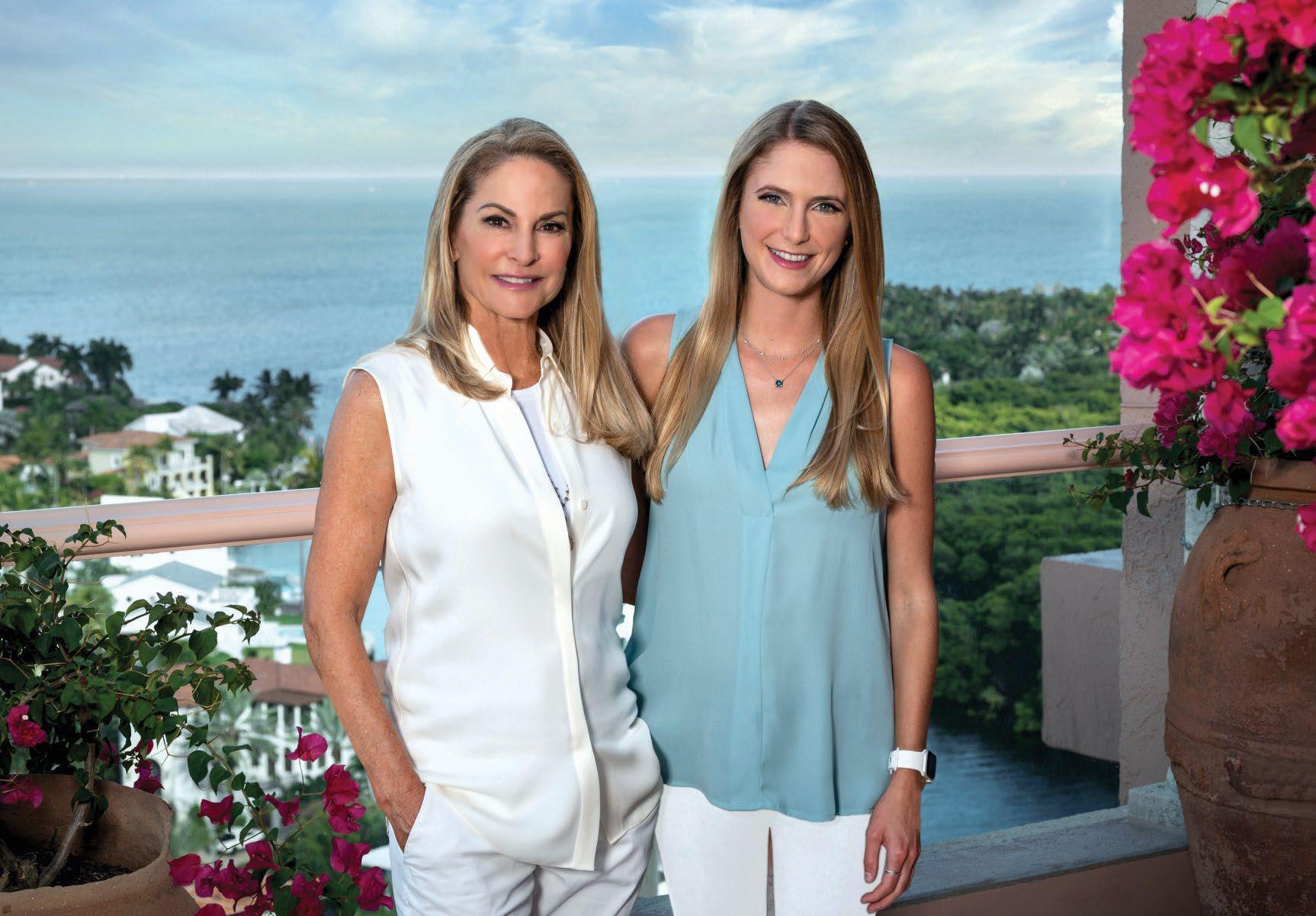
www.ToniSchrager.com
2665 South Bayshore Drive Coconut Grove, FL 33133
What $10 Million Will Buy in the Sky
With the pandemic creating unprecedented demand for homes in Miami, prices have risen by more than 50 percent in the last two years. Meeting some of that demand are the condo and apartment high-rises in Downtown Miami and Brickell. We asked three local realtors for one of their luxury condominium listings in the area, with prices at just under $10 million. This is what they offered.
LISTING PRICE: $7.75M
A WHITE PALACE
200 Biscayne Blvd. (The Epic) #5402
3 bed / 5.5 bath. 10,768 sq. ft.
Two floors, with an expansive terrace (overlooking Biscayne Bay) featuring a private jacuzzi. Marble floors in the living spaces, carpeting in the bedrooms, with full surround sound and smart home systems. The large mas-
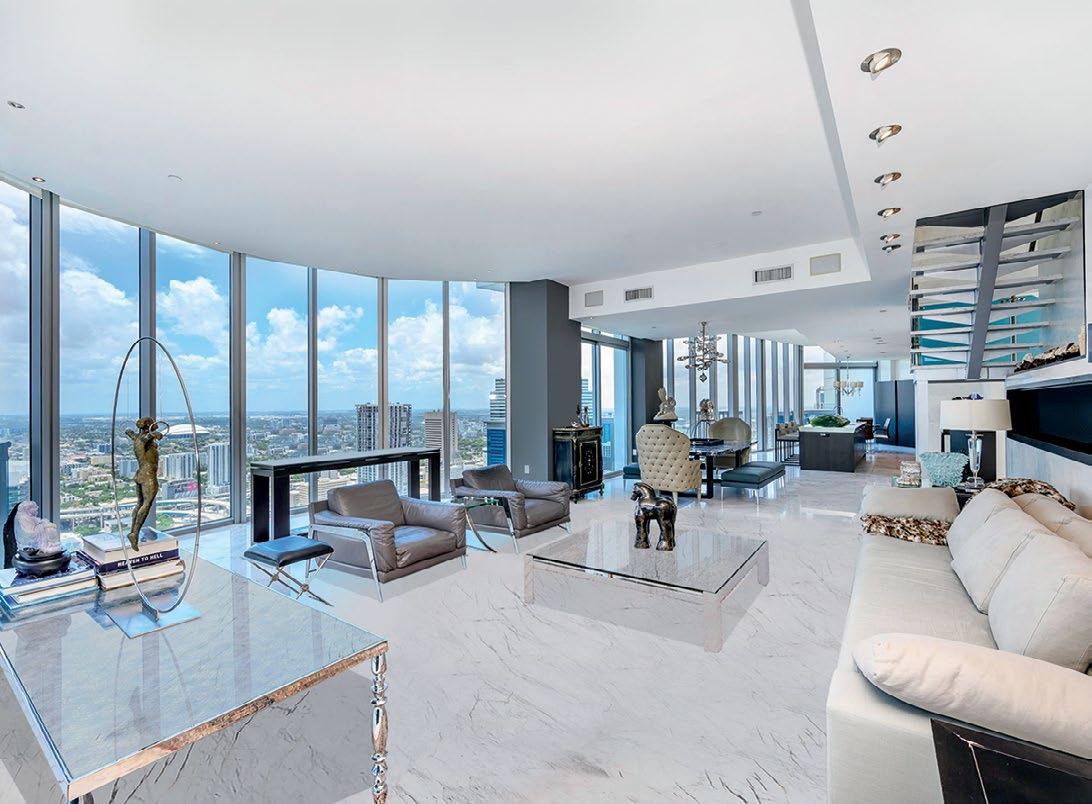
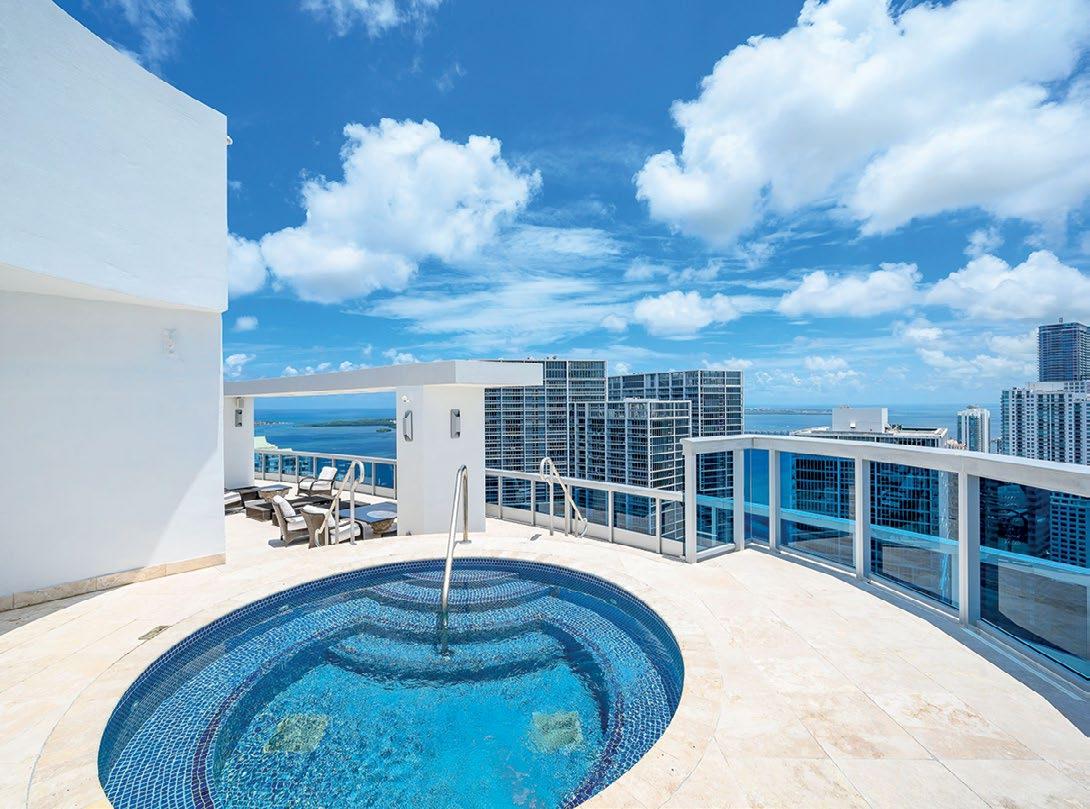
ter suite offers two master closets and a linen closet, while the second floor includes a bar area with an ice maker, dishwasher, and a 500-bottle wine cellar. Listing Agent: Saddy Delgado (Abaunza Group), 305.632.4256
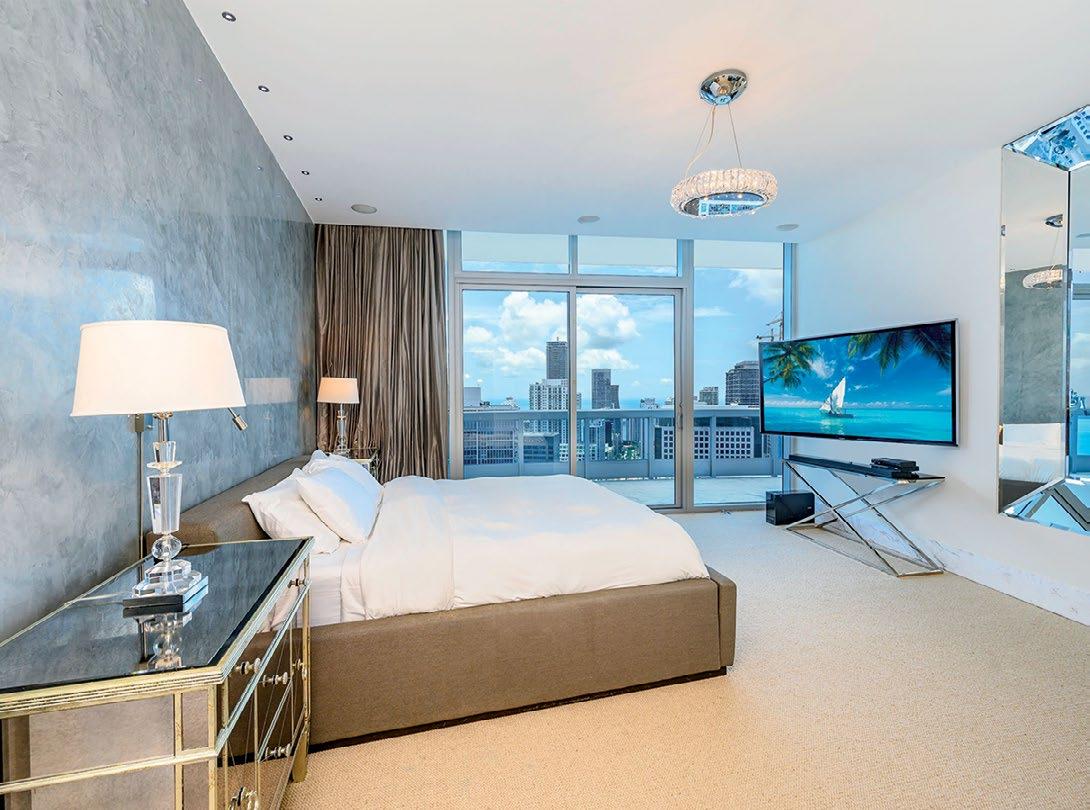
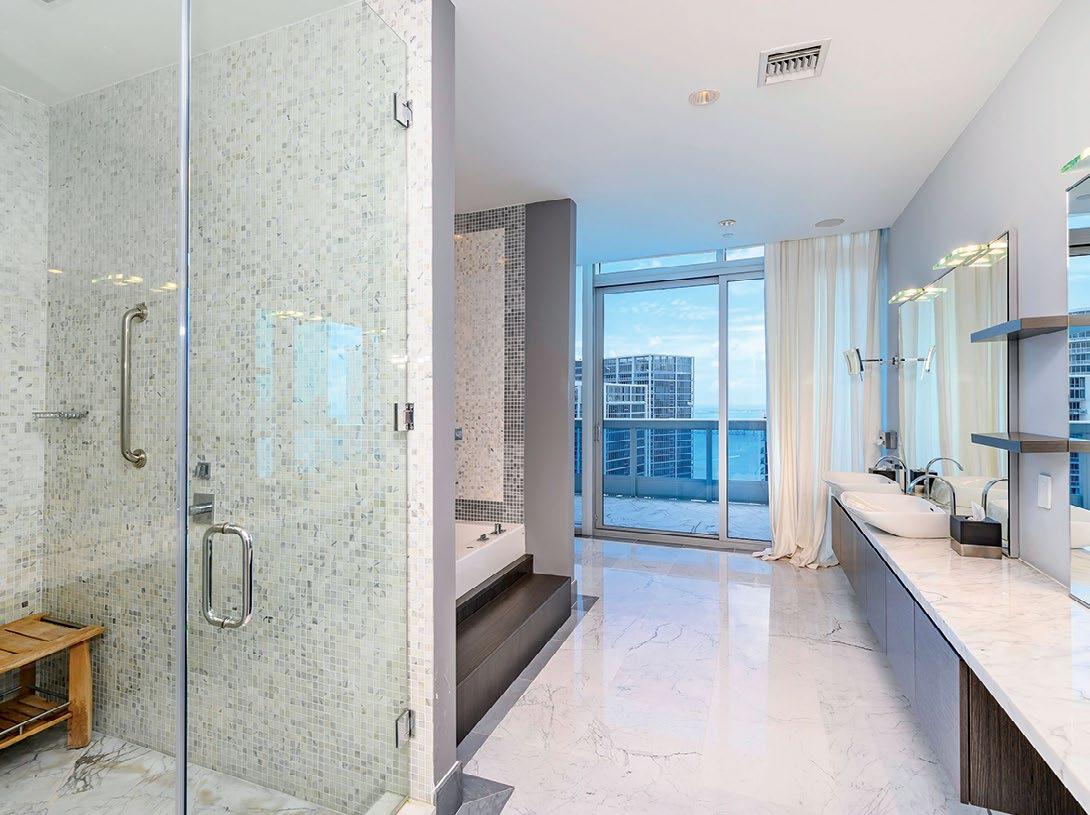
100 GLOBALMIAMIMAGAZINE.COM REAL ESTATE

LISTING PRICE:
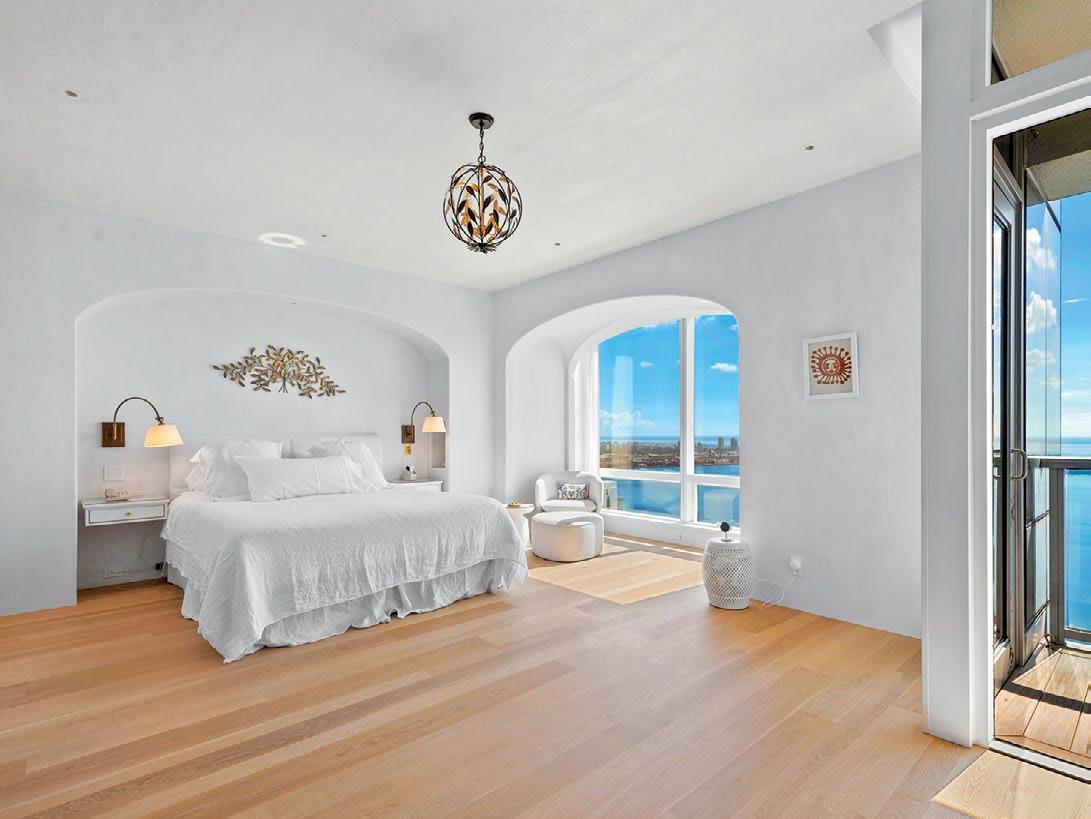

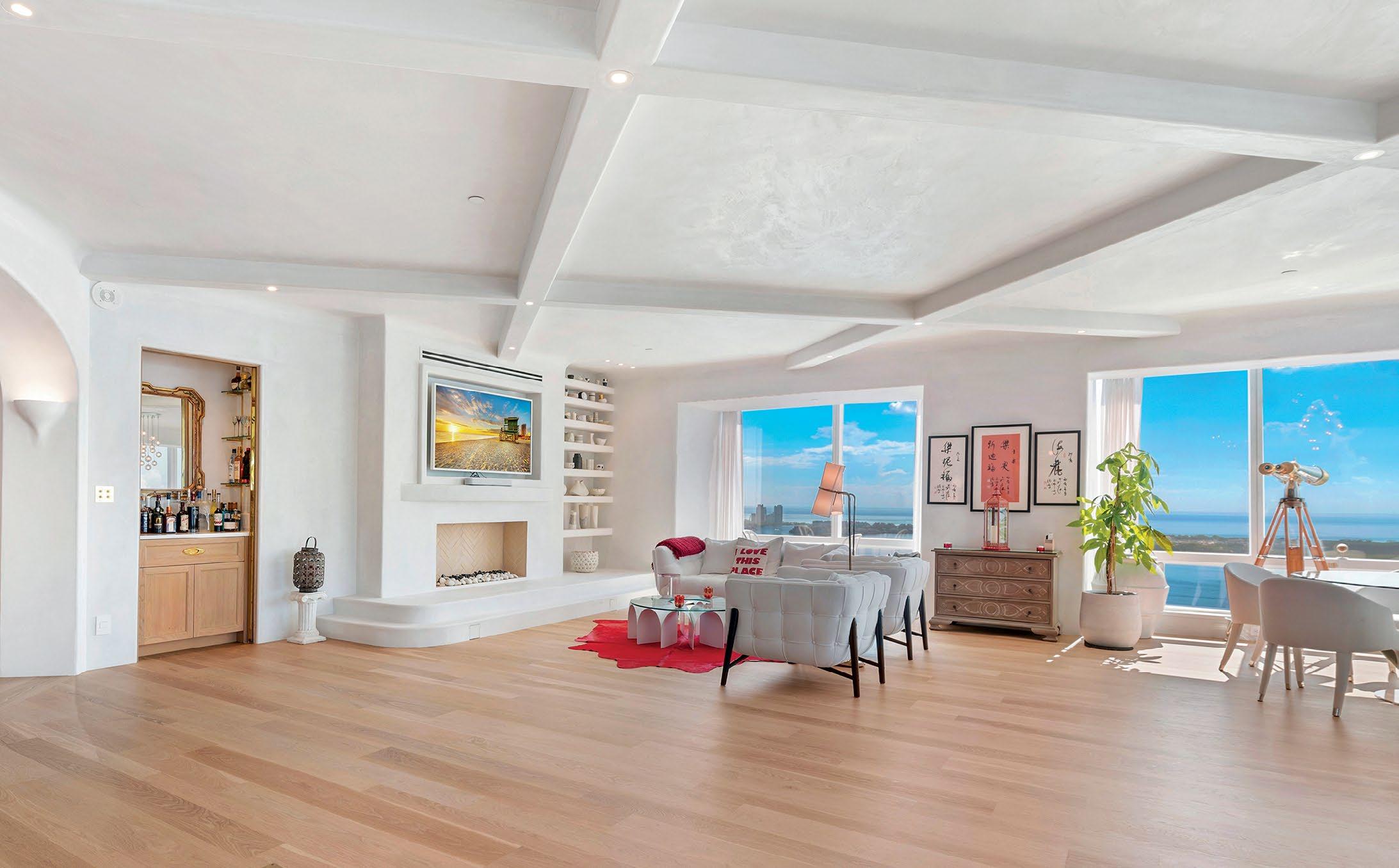
CASACIELO
102 GLOBALMIAMIMAGAZINE.COM
Located at the Four Seasons, CasaCielo is a down-tothe-studs renovated showpiece. With an ocean and bay backdrop, unit 55F boasts wood floors, arched ceilings and doorways, and an expanded kitchen with island. The primary suite has a walk-in closet. Other features include
a cedar study with ensuite bathroom, wood paneling, a bar nook, and a large utility room. Also included are the Four Seasons’ five-star amenities. Listing Agent: Tracy Ferrer (Douglas Elliman Real Estate), 305.695.6300
1425 Brickell Ave. (Four Seasons) #55F 3 bed / 3.5 bath. 3,698 sq. ft.
$9.9M
LISTING PRICE: $8.9M
ARTISTIC MASTERPIECE
1000 Biscayne Blvd. (One Thousand Museum) #4901 4 bed / 6 bath 4,876 sq. ft.
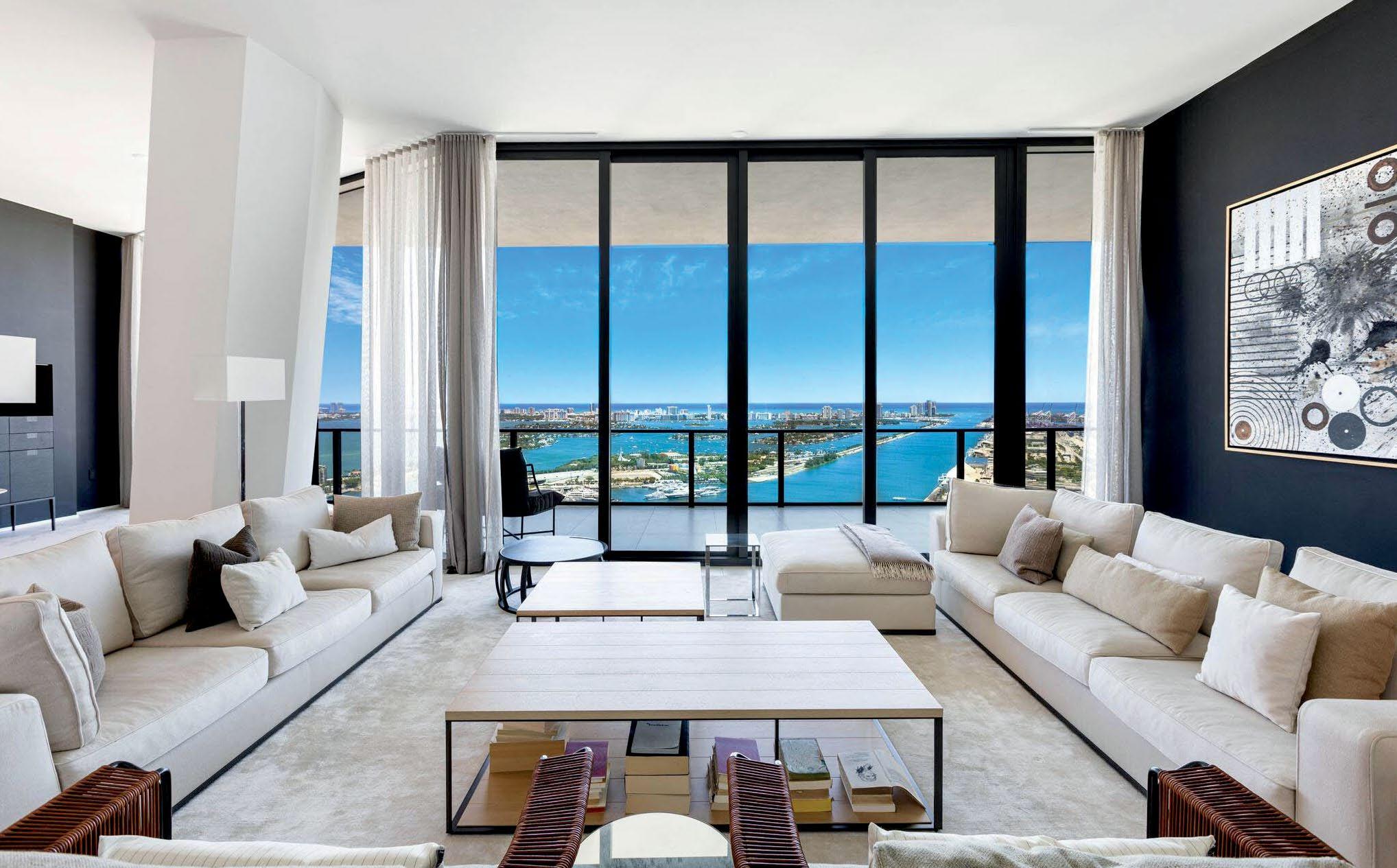
The iconic One Thousand Museum building was designed by Pritzker Award-winning architect Zaha Hadid and boasts panoramic views of Biscayne Bay and soaring 12-foot ceilings. Furnished with pieces by Piero Lissoni + Maxalto and art by Manolis Projects, this spacious
condo has lots of natural light and a corner flow-thru floorplan. Finishes include Apure Architectural Lighting designs by Uli Petzold and Dornbracht and Duravit fixtures. Listing Agent: Dora Puig (Luxe Living Realty), 305.613.2118

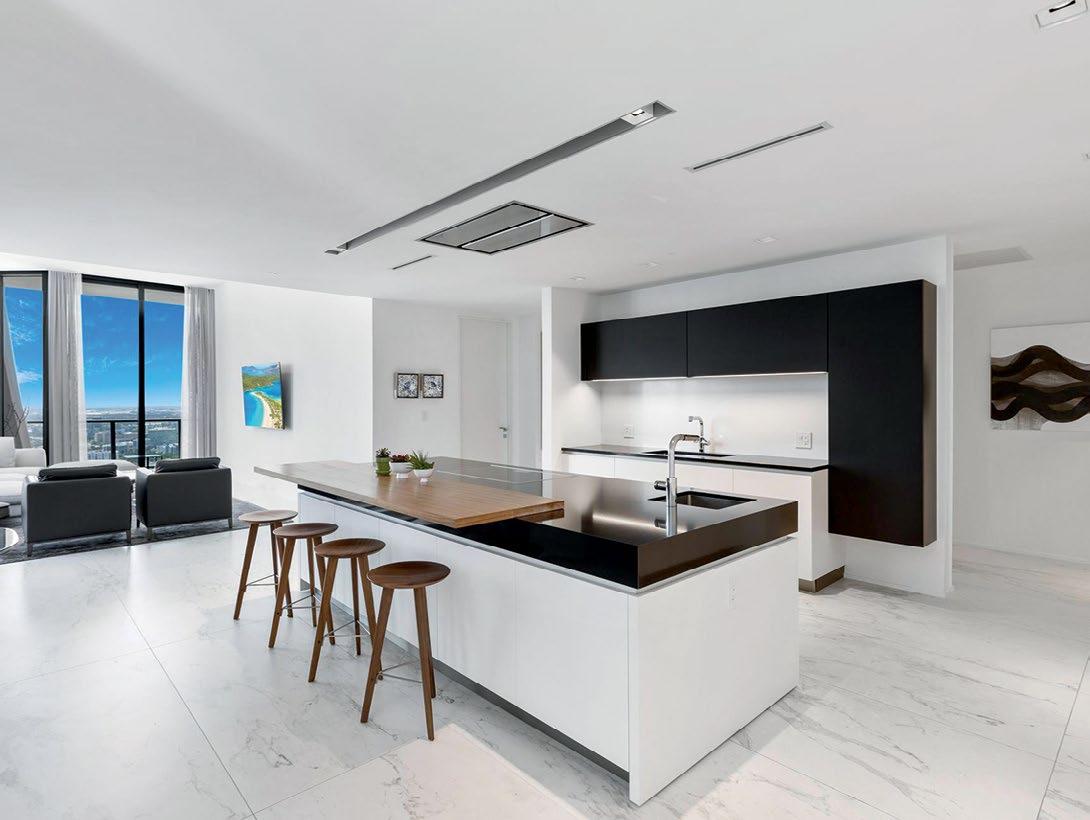
103
ARGENTINA
EXPORTS: JUN 2021: $227M - JUN 2022: $383M / 68% ↑
IMPORTS: JUL 2021: $39.9M - JUL 2022: $47.6M / 19 % ↑
BOLIVIA
EXPORTS: JUN 2021: $27M - JUN 2022: $23.3M / -13.9%
IMPORTS: JUL 2021: $10.4M - JUL 2022: 3.45M / -66.70%
BRAZIL EXPORTS: JUN 2021: $1.11B - JUN 2022: $1.2B / 8.77% ↑
IMPORTS: JUL 2021: $203M - JUL 2022: $228M / 12.70% ↑
CHILE
EXPORTS: JUN 2021: $358M - JUN 2022: $399M / 11.6%
IMPORTS: JUL 2021: $186M - JUL 2022: $243M / 30.9%
COLOMBIA
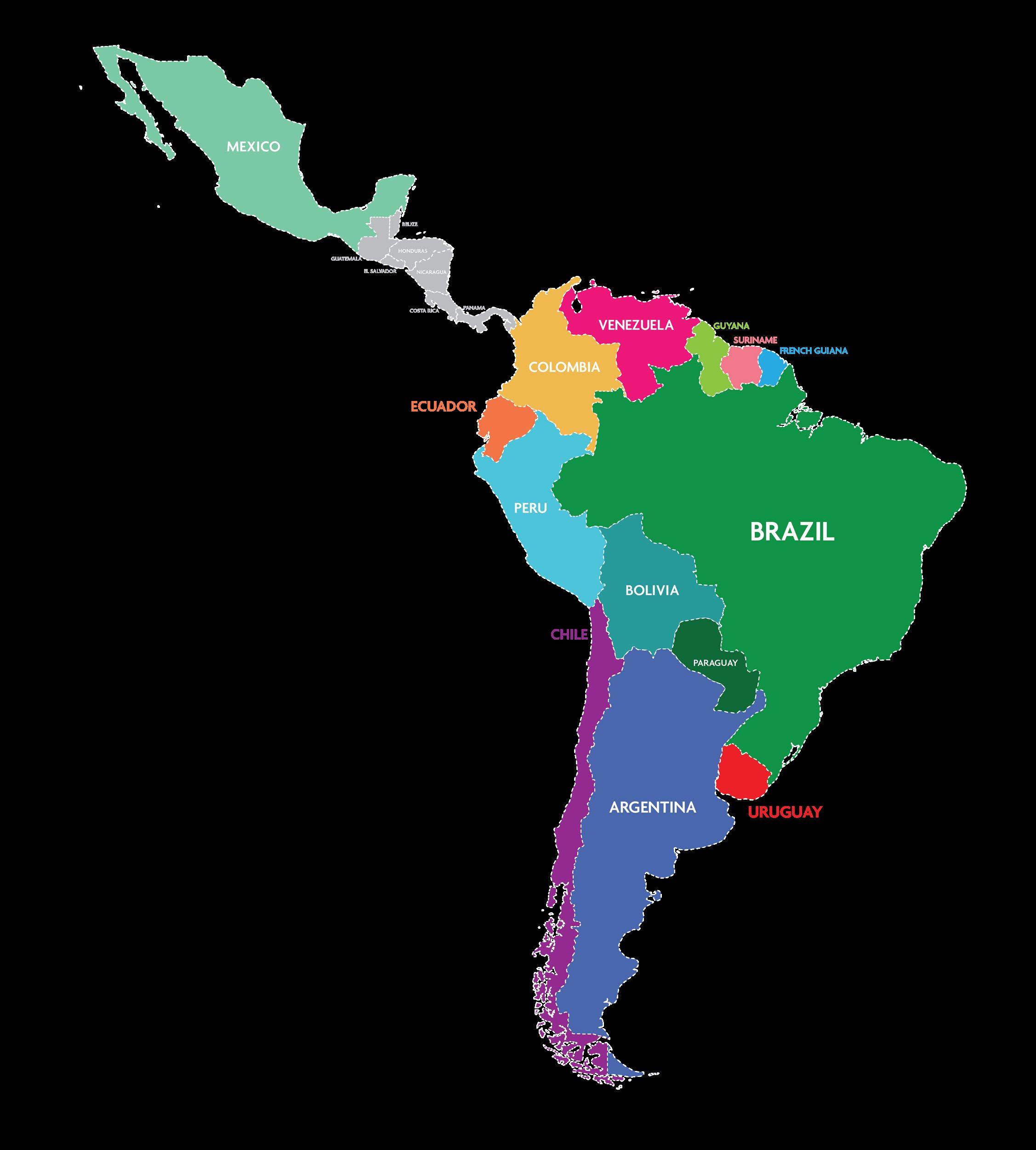
EXPORTS: JUN 2021: $439M - JUN 2022: $386M / -12.1%
IMPORTS: JUL 2021: $318M - JUL 2022: $343M / 7.7%
ECUADOR
EXPORTS: JUN 2021: $111M - JUN 2022: $110M / -1.3%
Trade Between Miami and Mexico & South America
MIAMI EXPORTS (JUNE 2021-JUNE 2022)
MIAMI IMPORTS (JULY 2021-JULY 2022)
PARAGUAY
PERU
IMPORTS:
SURINAME
EXPORTS: JUN 2021: $16.3M - JUN 2022: $25.8M / 58.9% ↑
IMPORTS: JUL 2021: $3.54M - JUL 2022: $2.99M / -15.6% ↓
URUGUAY
EXPORTS: JUN 2021: $39.1M - JUN 2022: $53M / 35.4% ↑
IMPORTS: JUL 2021: $5.57M - JUL 2022: $4.66M / -16.4% ↓
VENEZUELA
EXPORTS: JUN 2021: $61.8M - JUN 2022: $84.1M/ 36.1% ↑
IMPORTS: JUL 2021: $12.70M - JUL 2022: $15.6M / 23% ↑
MEXICO
EXPORTS: JUN 2021: $2.98M - JUN 2022: $1.58M / -46.9% ↓
IMPORTS: JUL 2021: $86M - JUL 2022: $113M / 31.1% ↑
Source: Data from United States Census Bureau USA Trade Online®, The Observatory of Economic Complexity
104 GLOBALMIAMIMAGAZINE.COM NUMBERS
↓
↓
↑
↑
↓
↑
↓
JUL 2021: $106M - JUL 2022: $126M / 19.1% ↑
GUIANA EXPORTS: JUN 2021: $44.2M - JUN 2022: $30.2M / -31.6% ↓ IMPORTS: JUL 2021: $168M - JUL 2022: $209M / 24.4% ↑
EXPORTS: JUN 2021: $25.1M - JUN 2022: $43.1M / 71.6% ↑ IMPORTS: JUL 2021: $3.76M
-27.9% ↓
IMPORTS:
FRENCH
GUYANA
- JUL 2022: $2.71M /
2021: $172M
JUN 2022: $123M
-28.4% ↓
2021: $1.31M
JUL 2022: $1.27M
-3.08% ↓
EXPORTS: JUN
-
/
IMPORTS: JUL
-
/
EXPORTS: JUN 2021: $198M - JUN 2022: $272M / 37.3% ↑
JUL 2021: $118M - JUL 2022: $104M / -12.2% ↓







Soar to a unique mix of experiences, now daily Enjoy Tel Aviv’s amazing melting pot of history, culture and gastronomy. Daily nonstop from Miami starting on October 29, 2022 American Airlines and the Flight Symbol logo are marks of American Airlines, Inc. world is a mark of the world Alliance, LLC © 2022 American Airlines, Inc All rights reserved one one









































































































































 BY KATELIN STECZ
BY KATELIN STECZ































 Cruise Partners
Cargo Partners
Cruise Partners
Cargo Partners





























 BY JOSEPH A. MANN JR.
BY JOSEPH A. MANN JR.























 6.
4.
5.
6.
4.
5.




 BY HARRIET MAYS POWELL
1.
2.
BY HARRIET MAYS POWELL
1.
2.





 4.
5.
6.
4.
5.
6.







 BY KYLIE WANG
BY KYLIE WANG





























